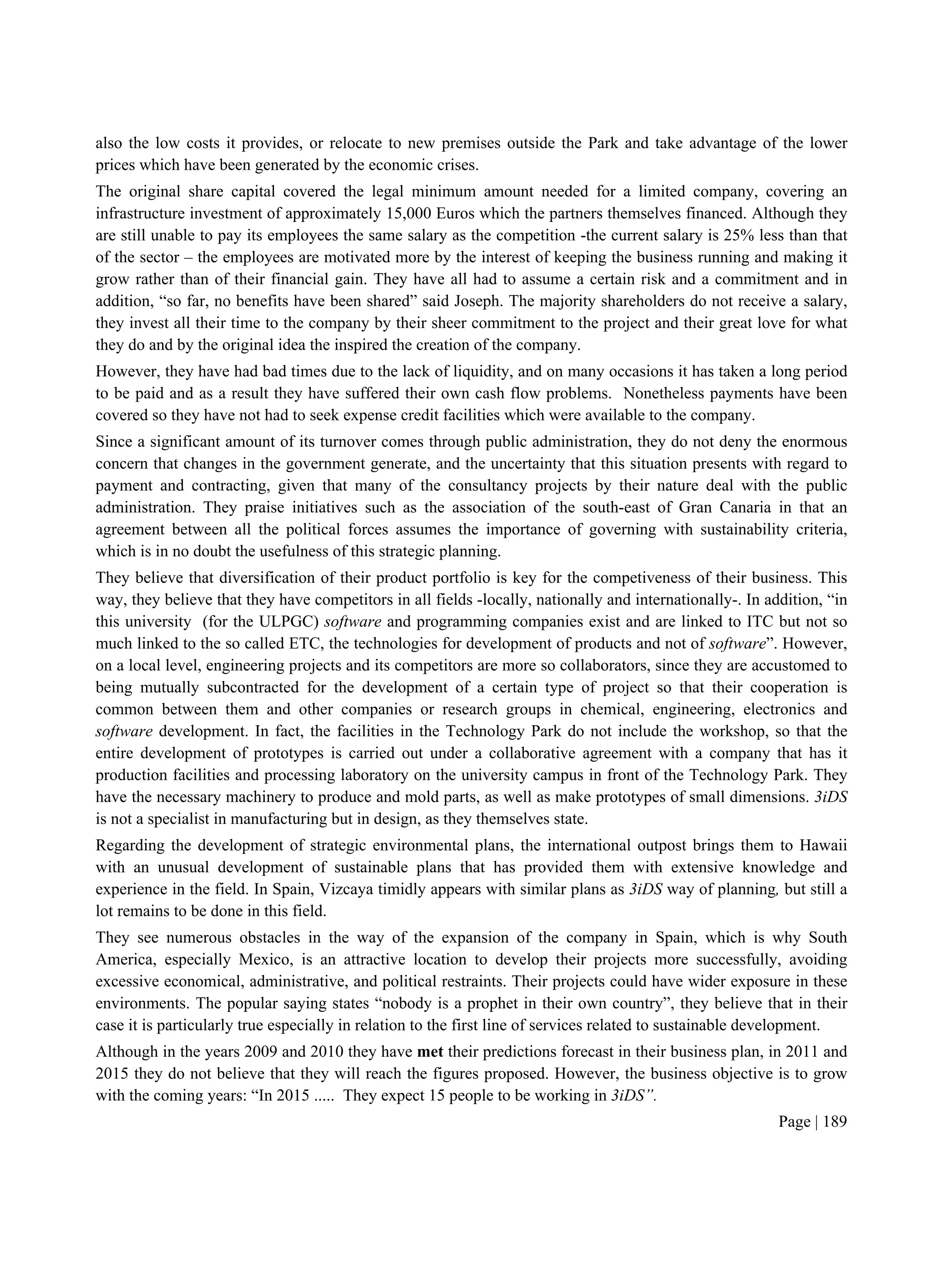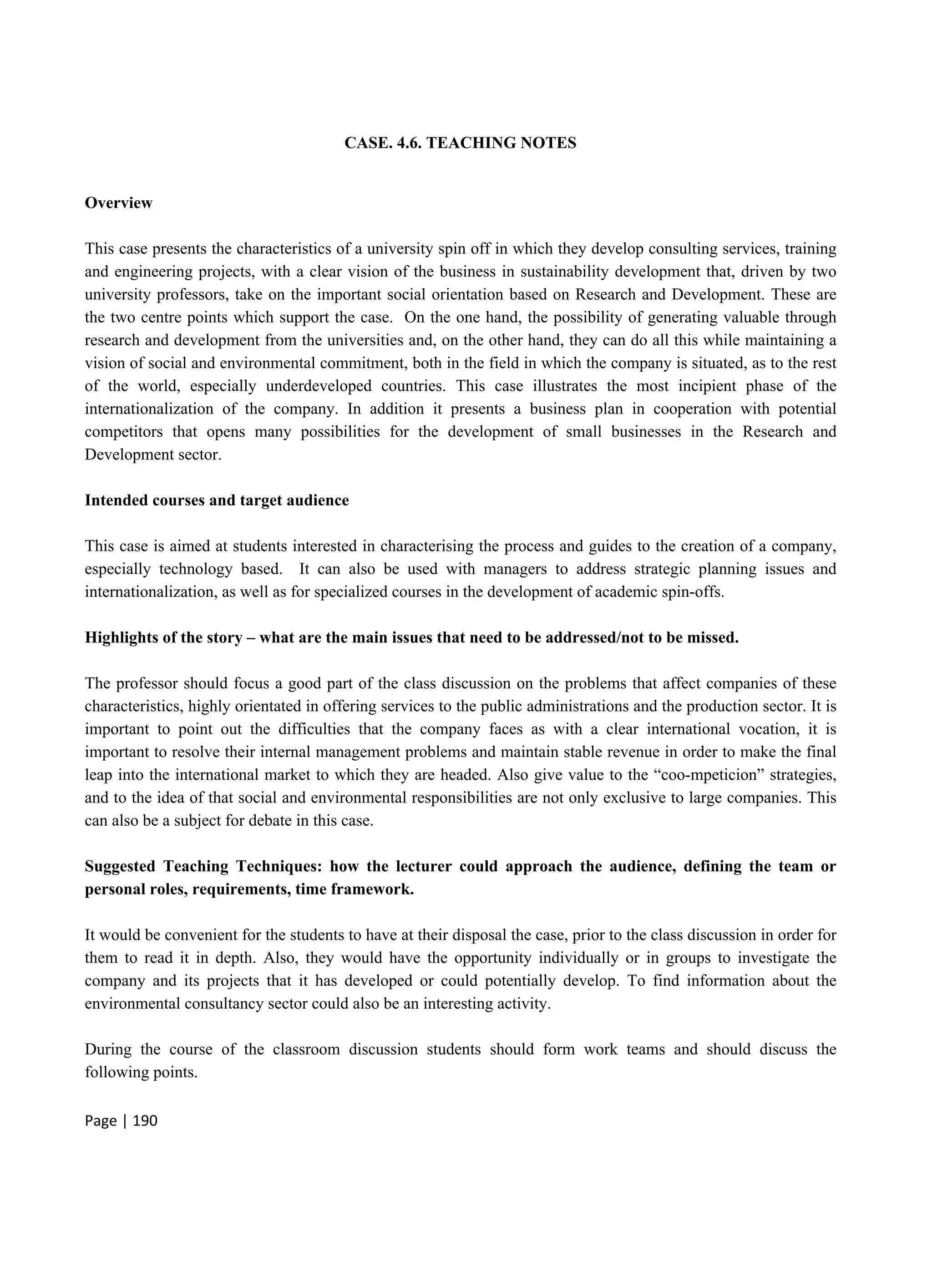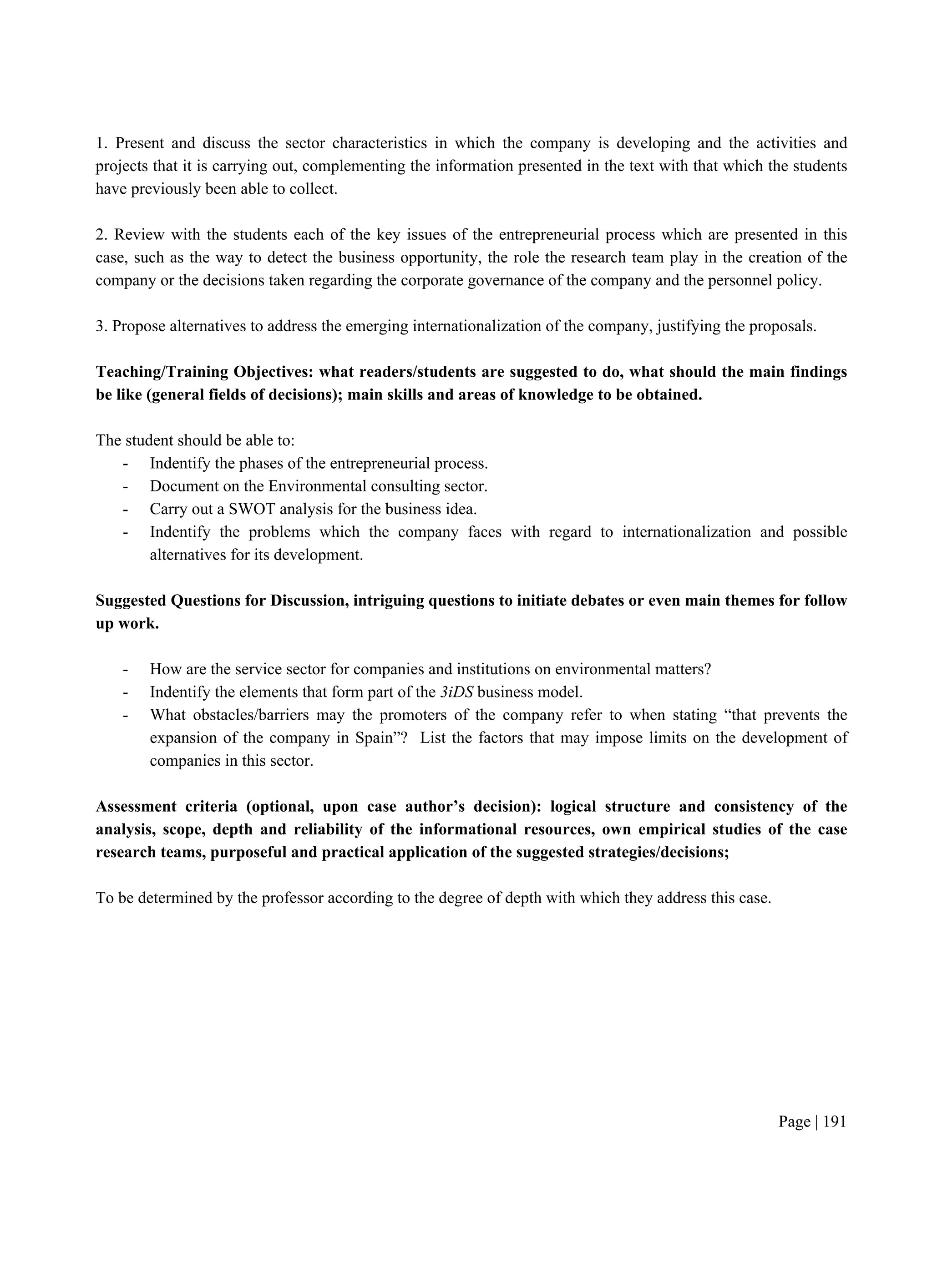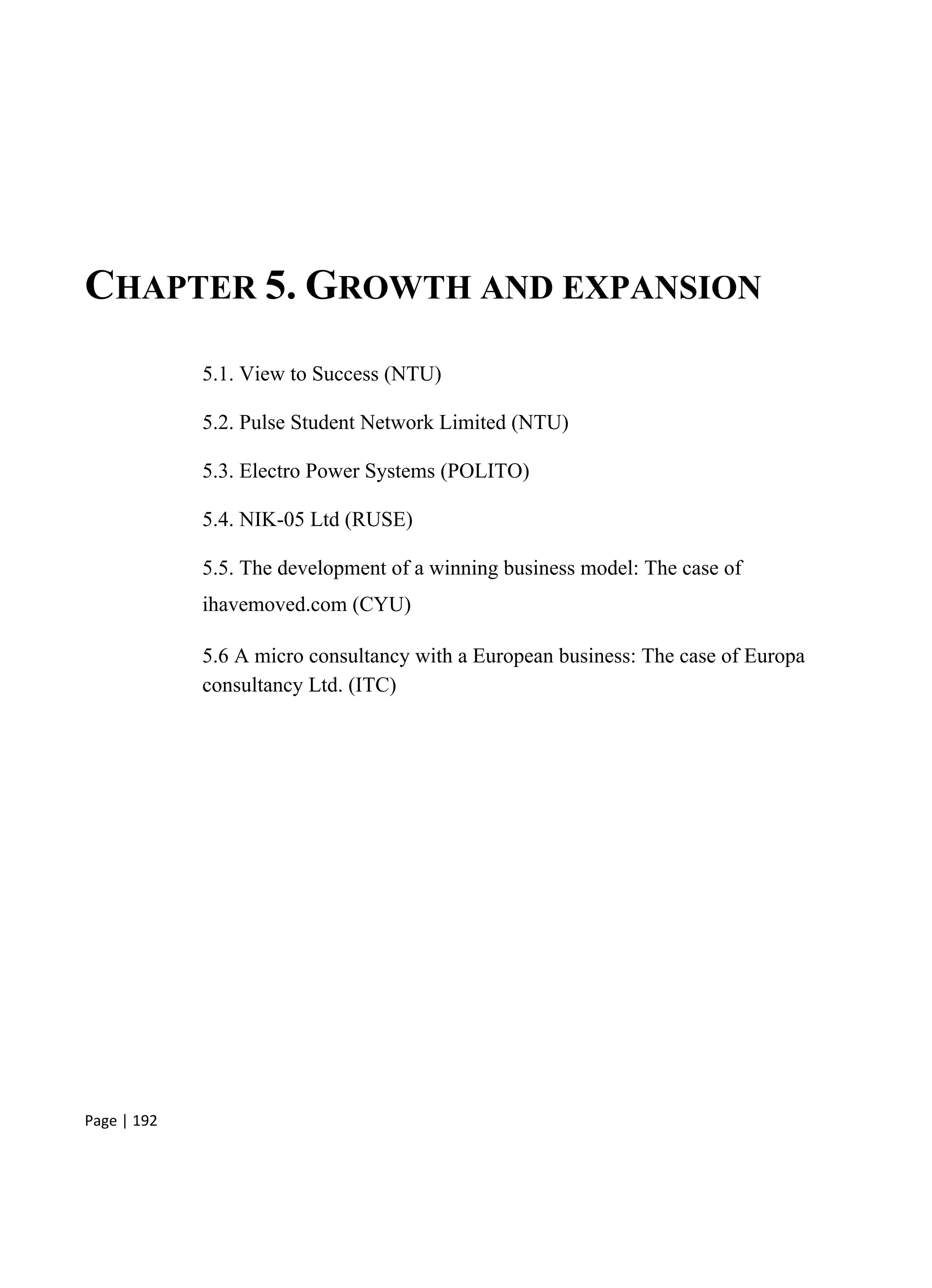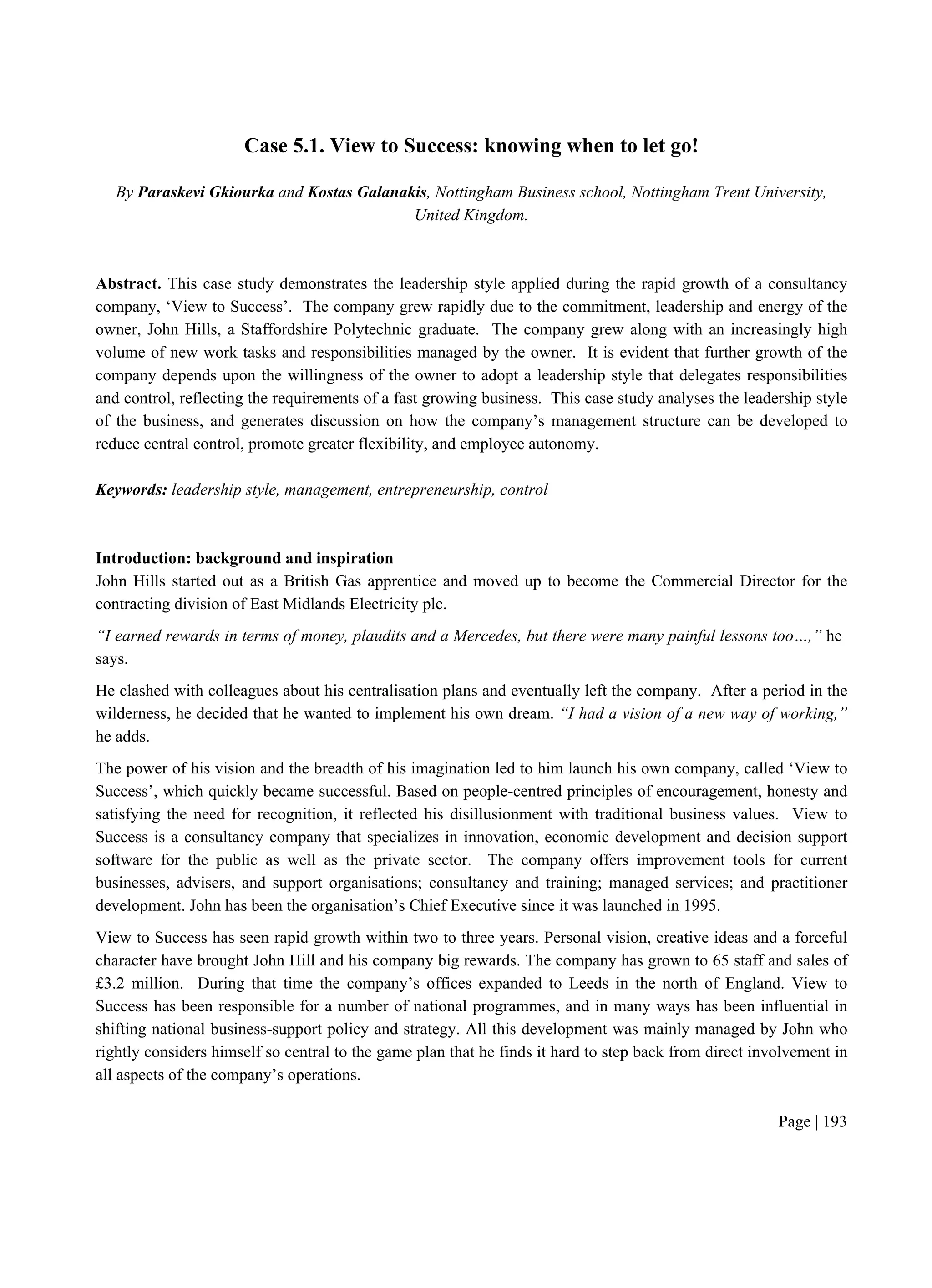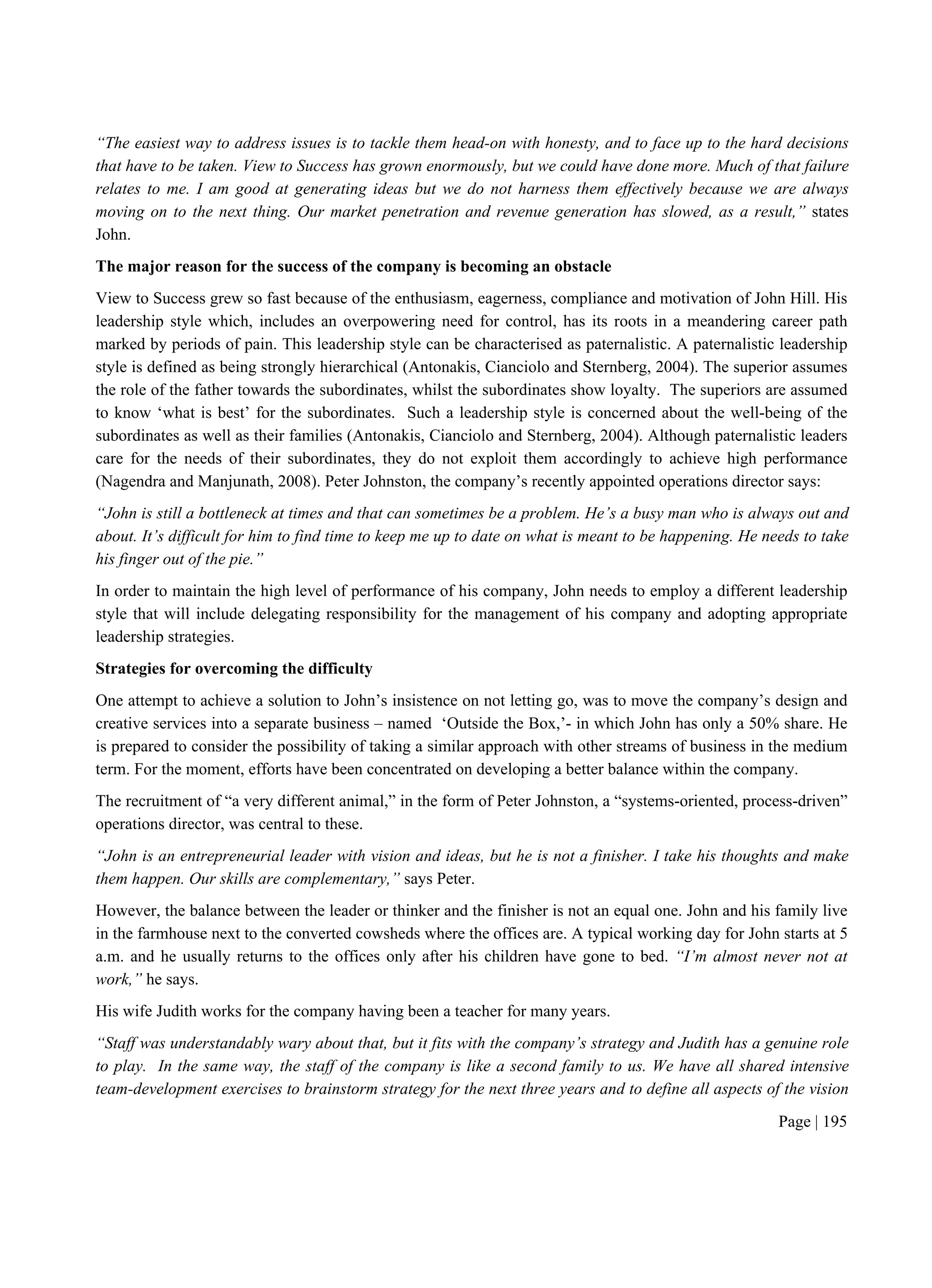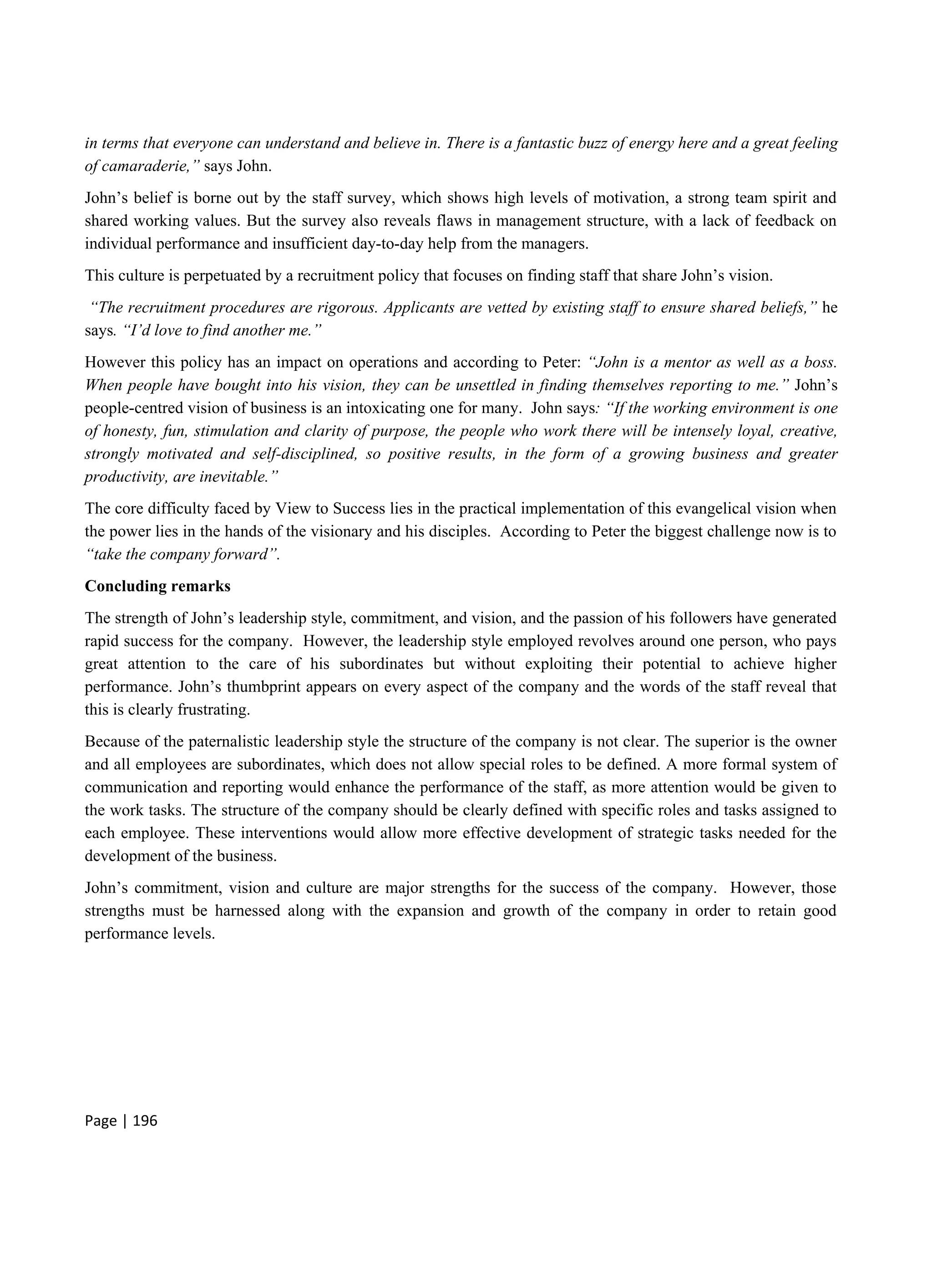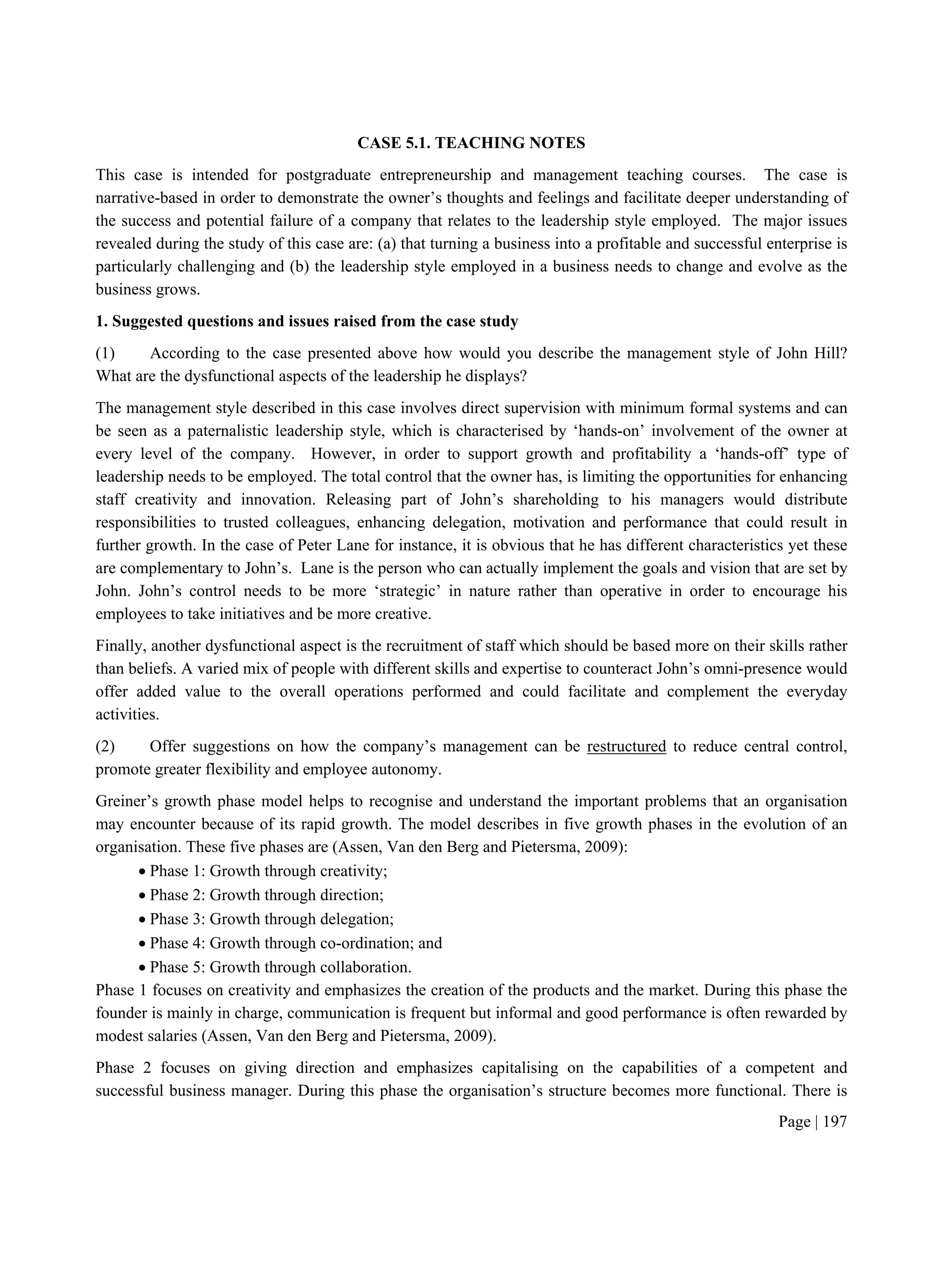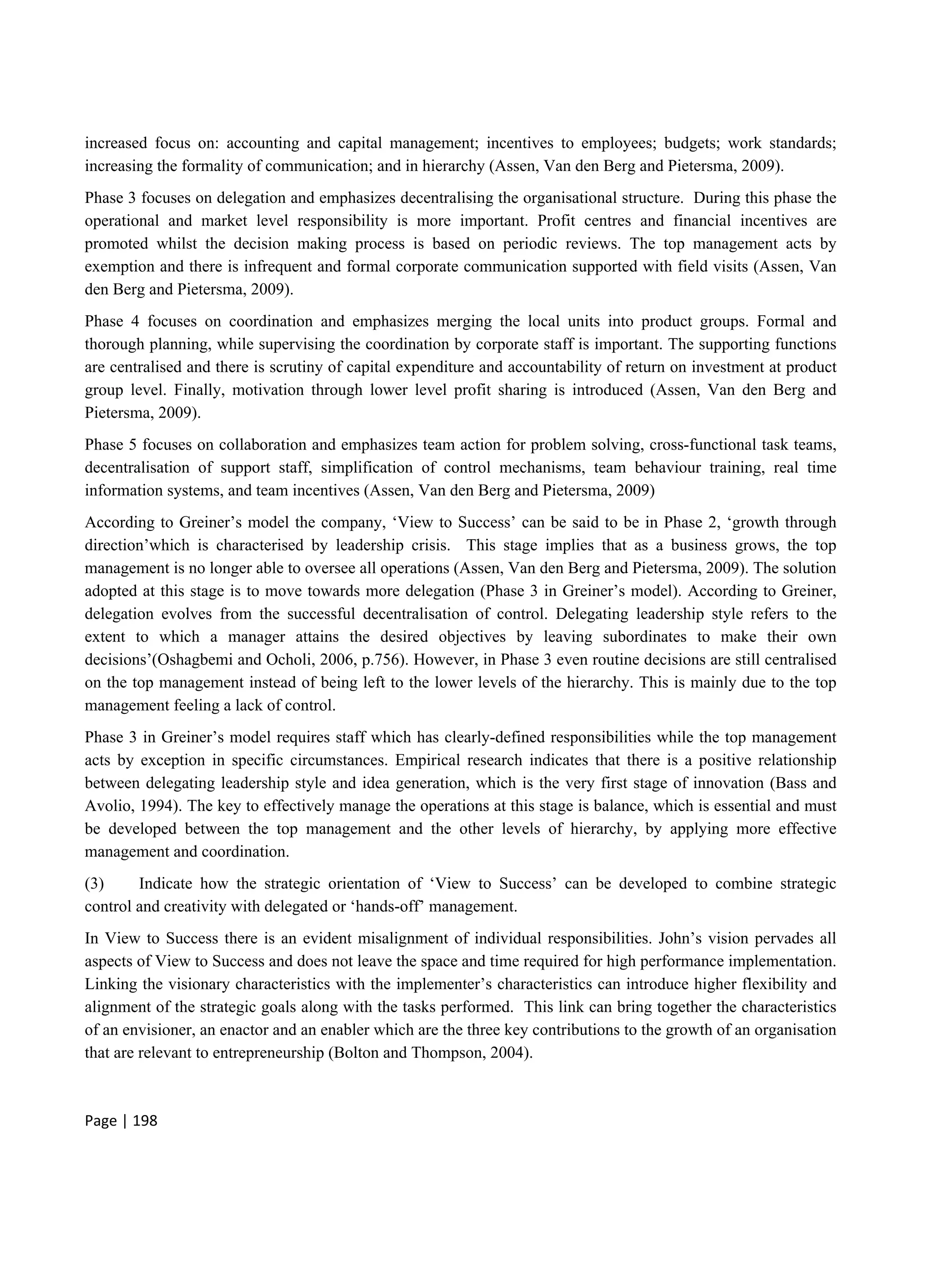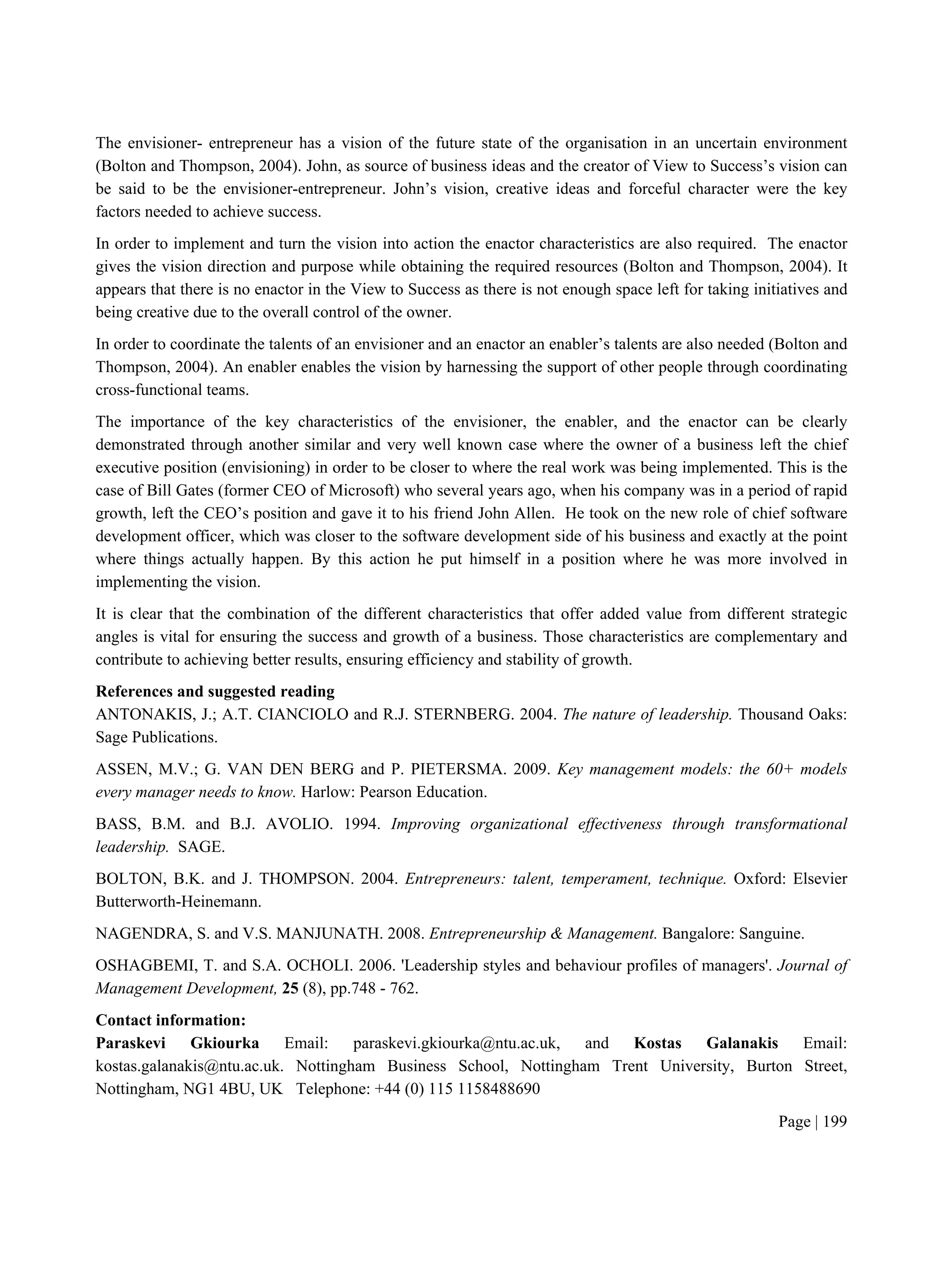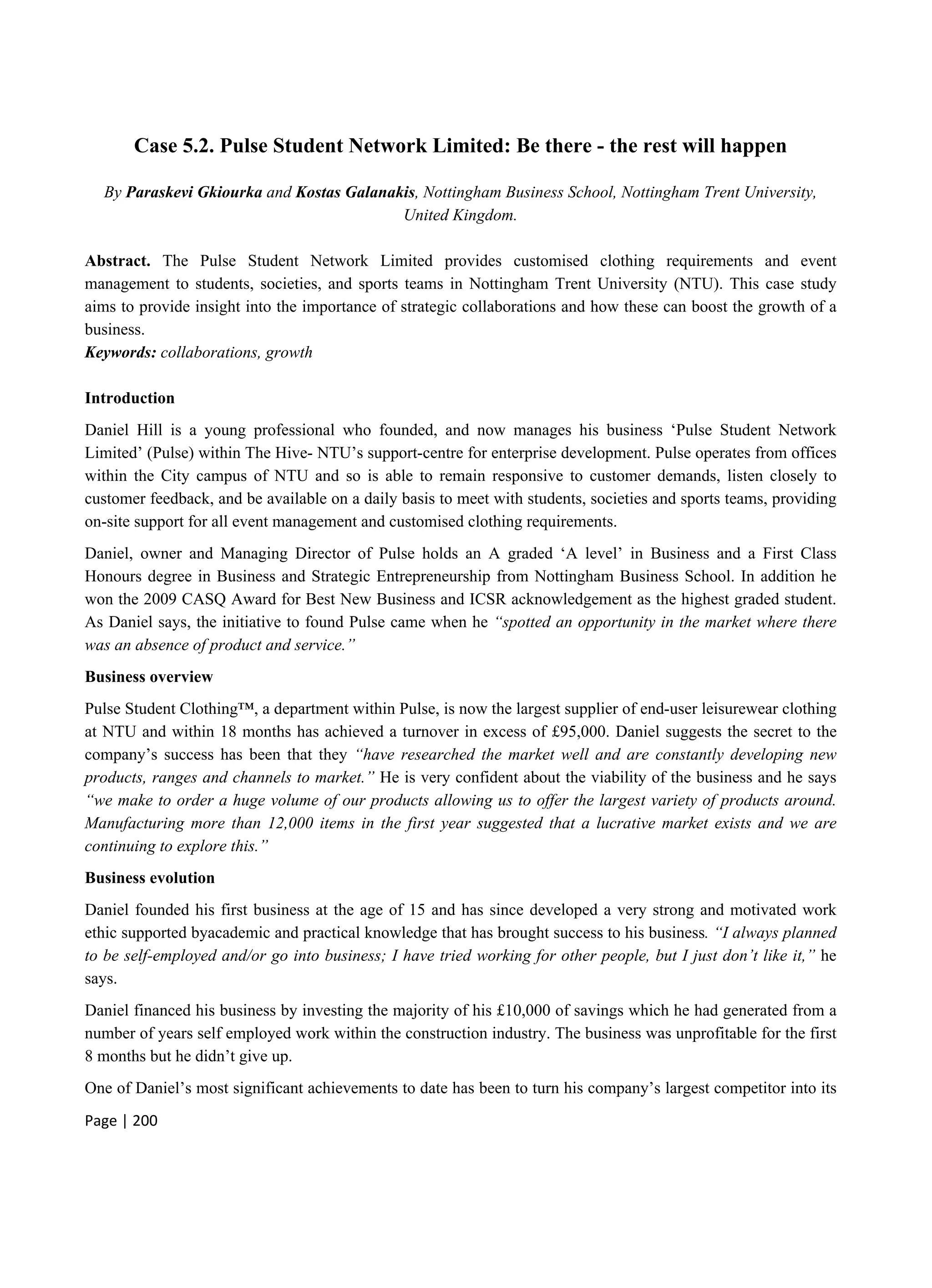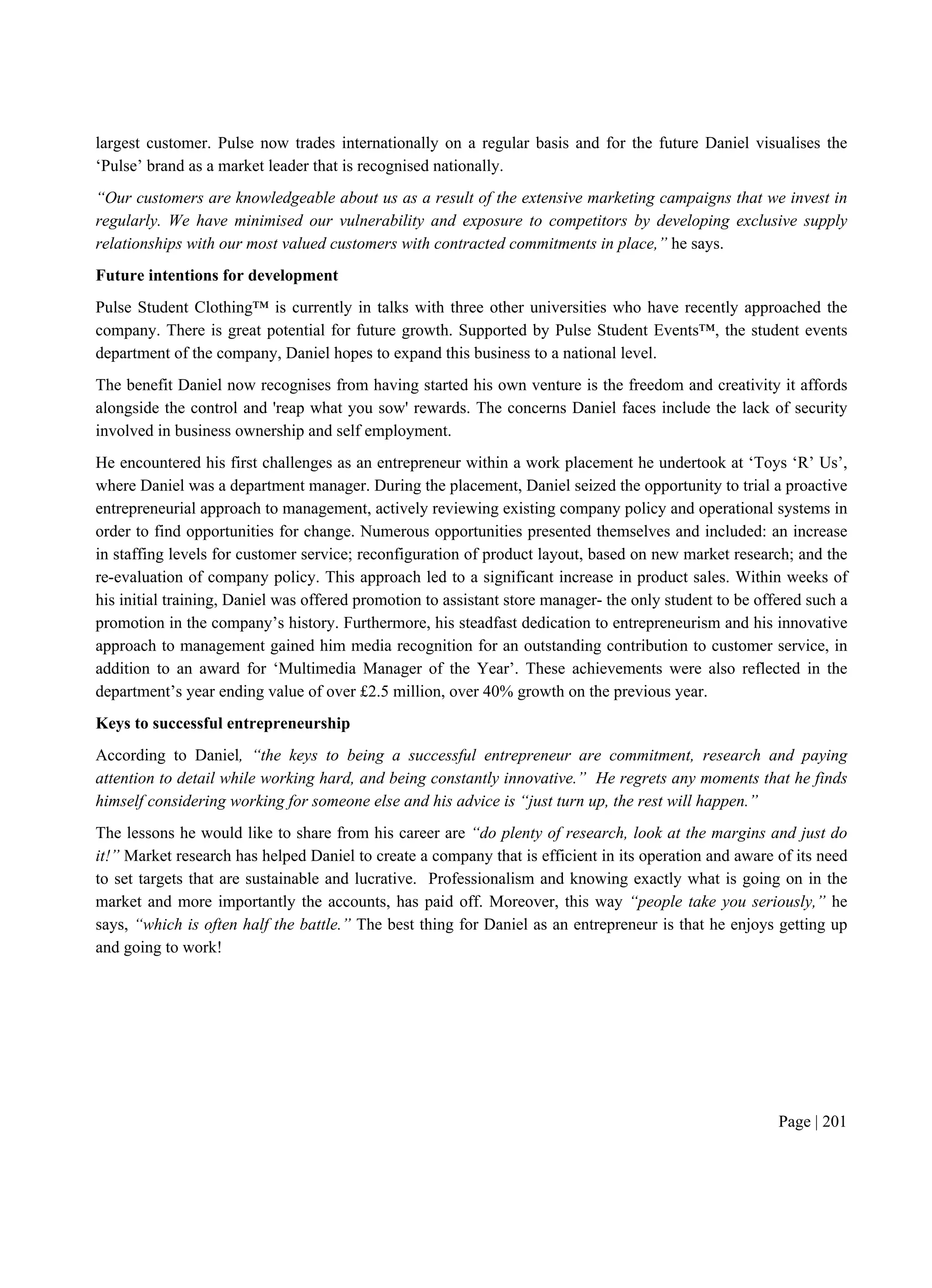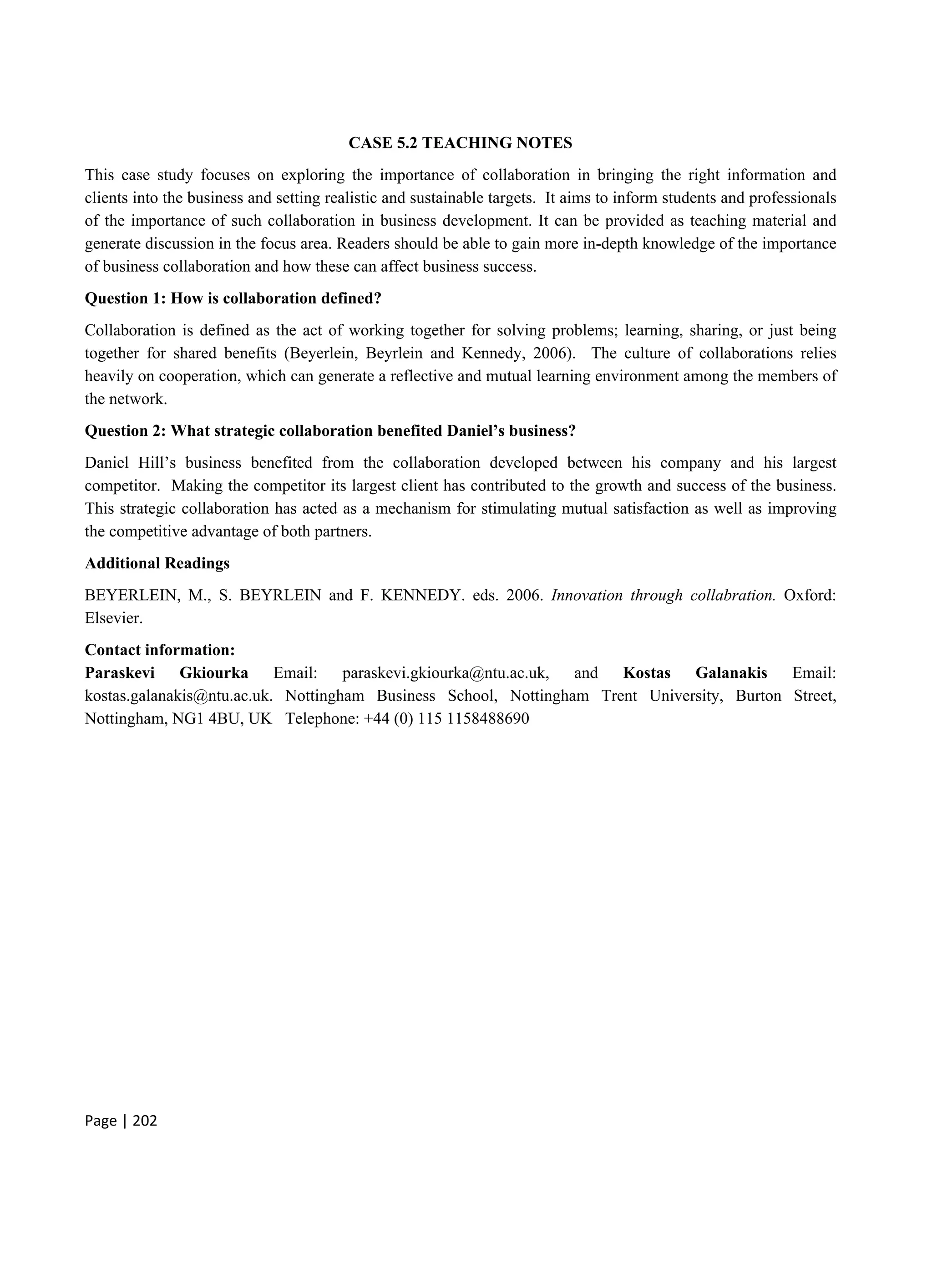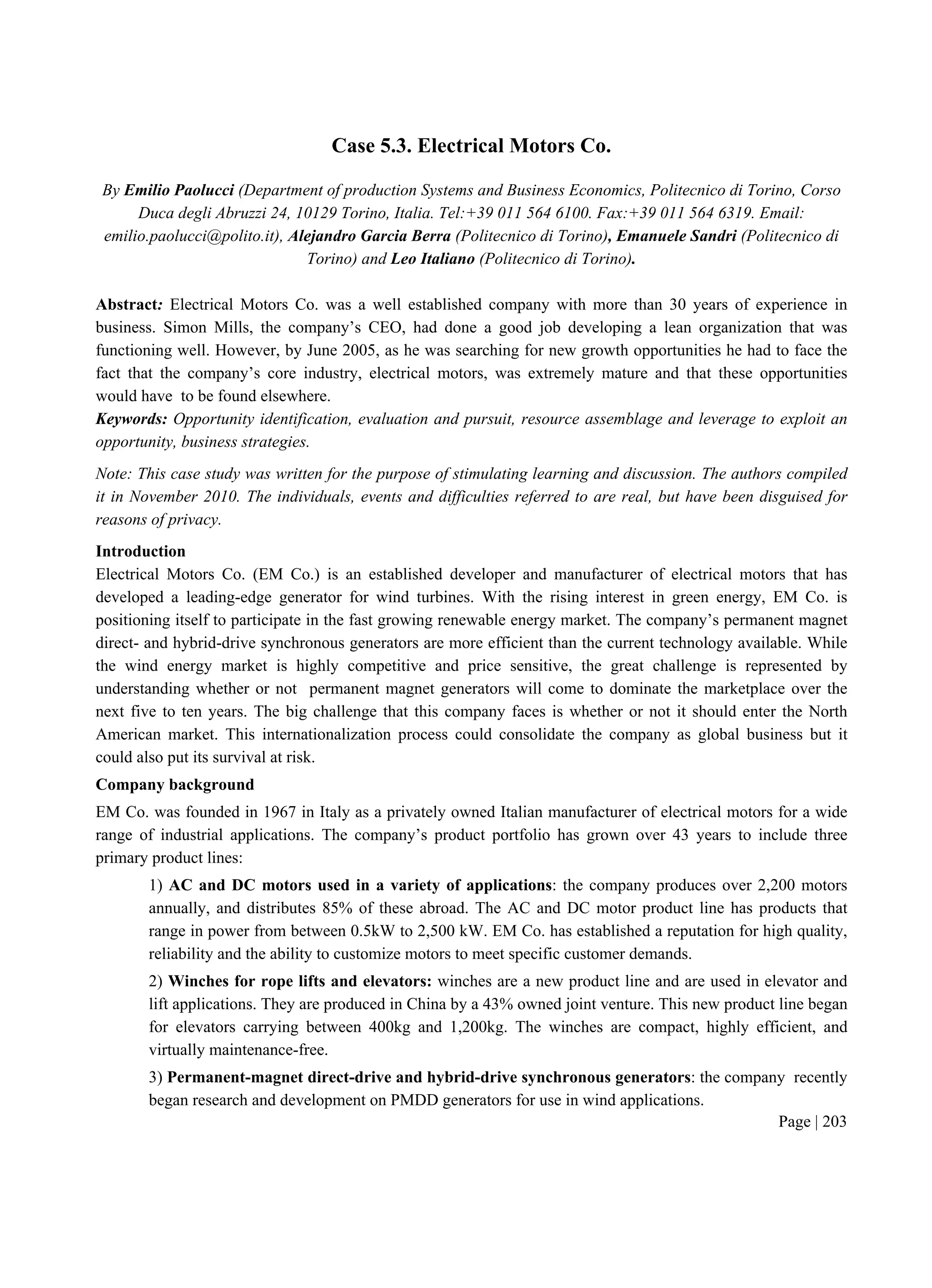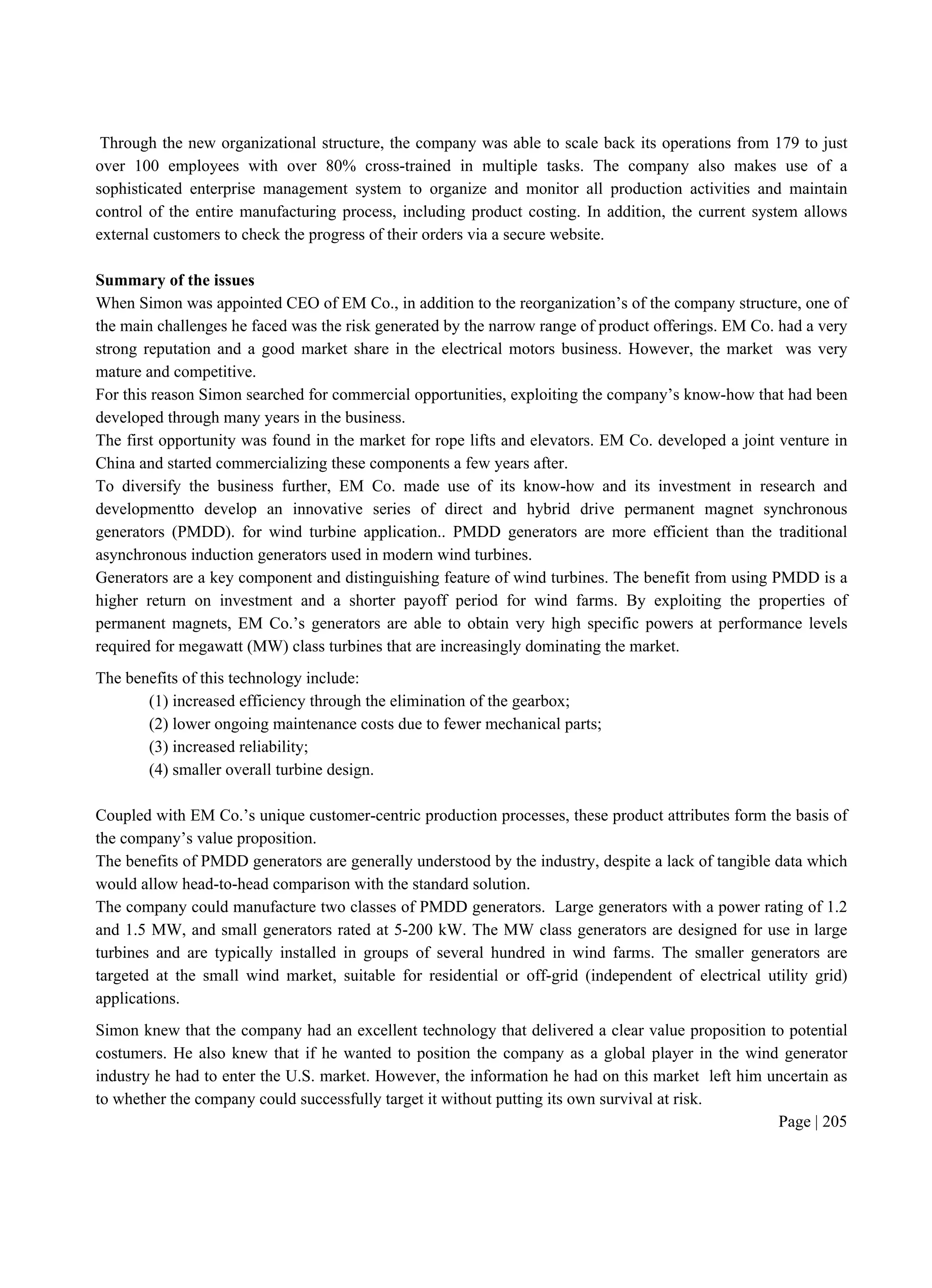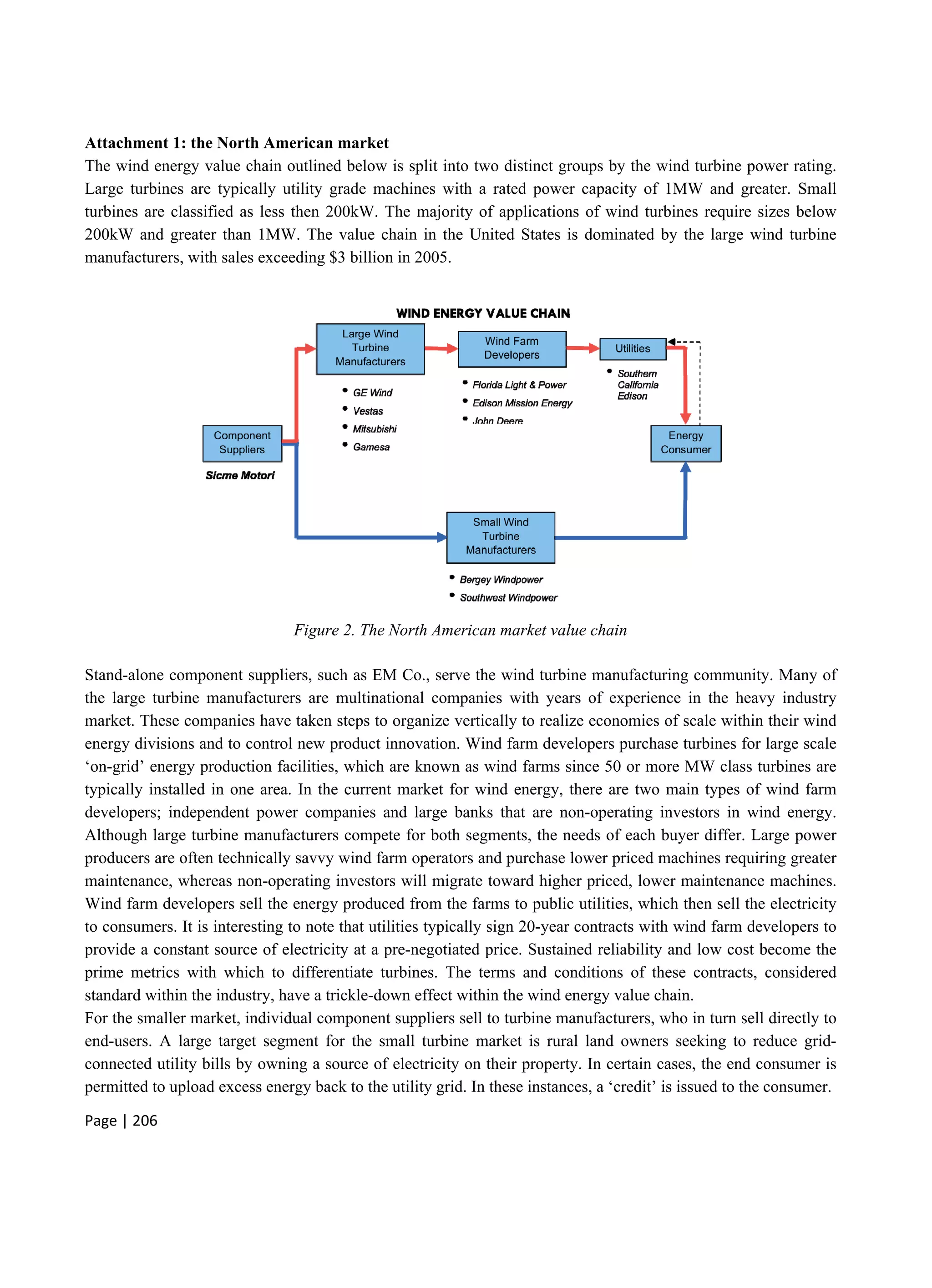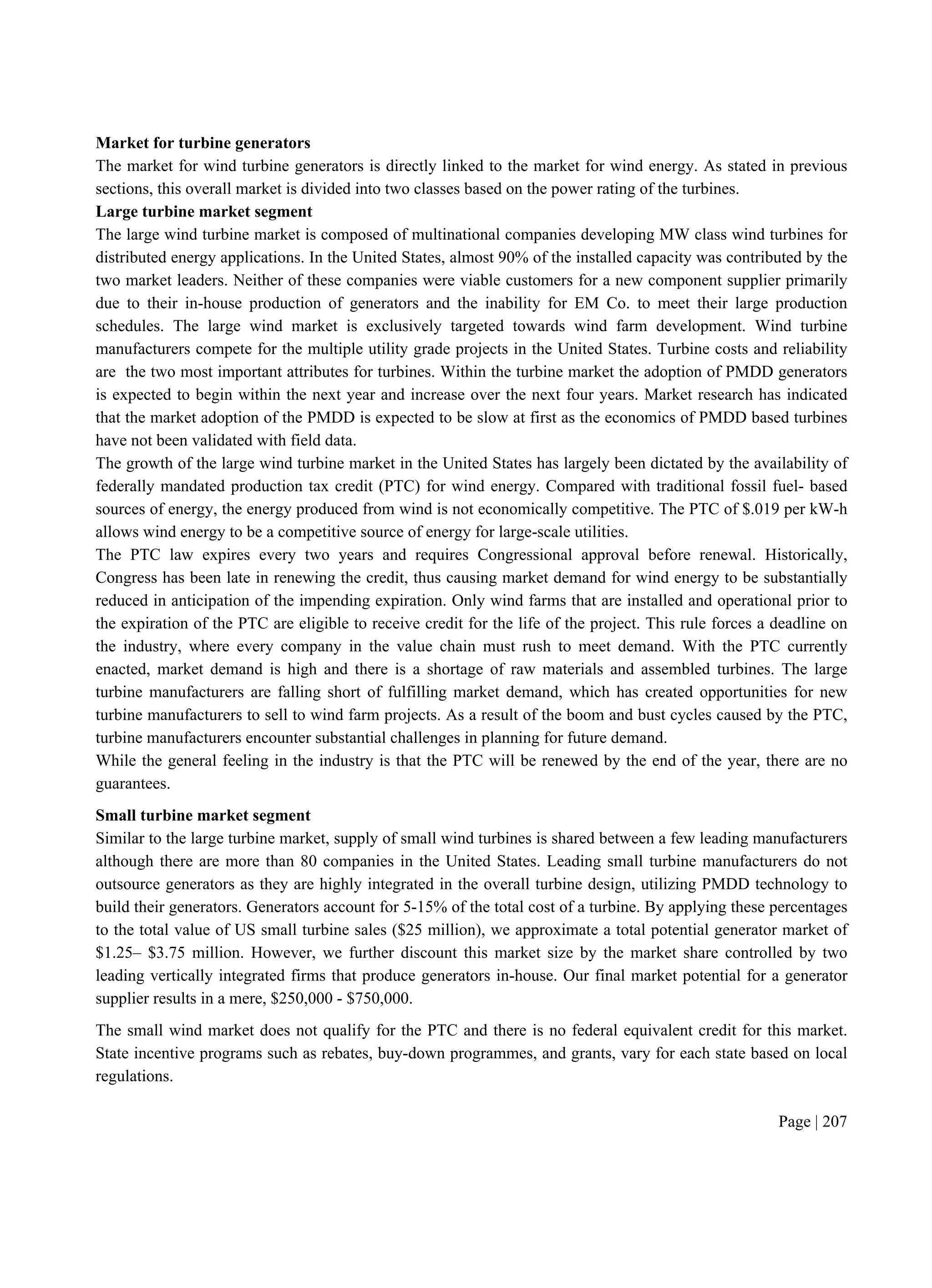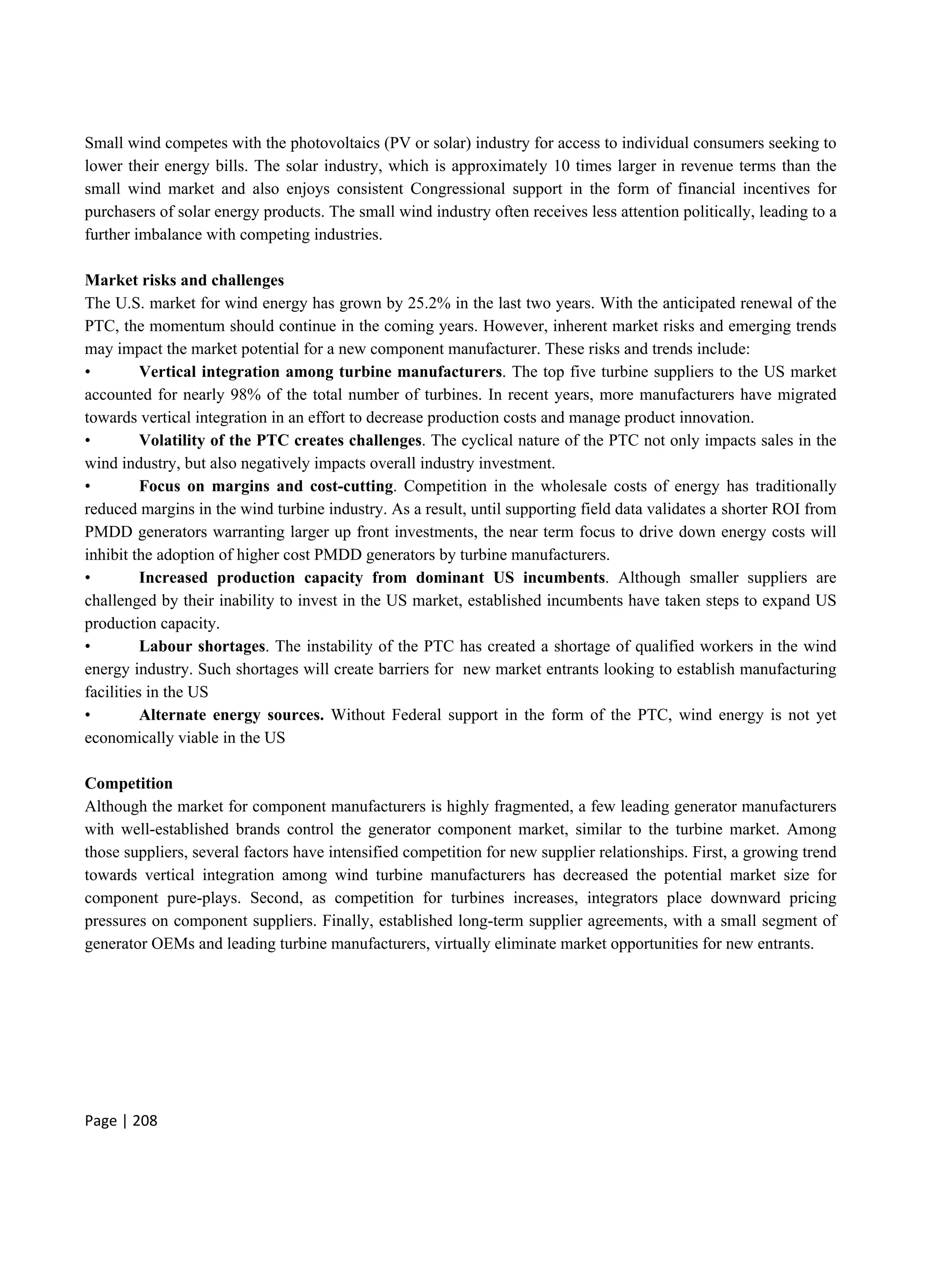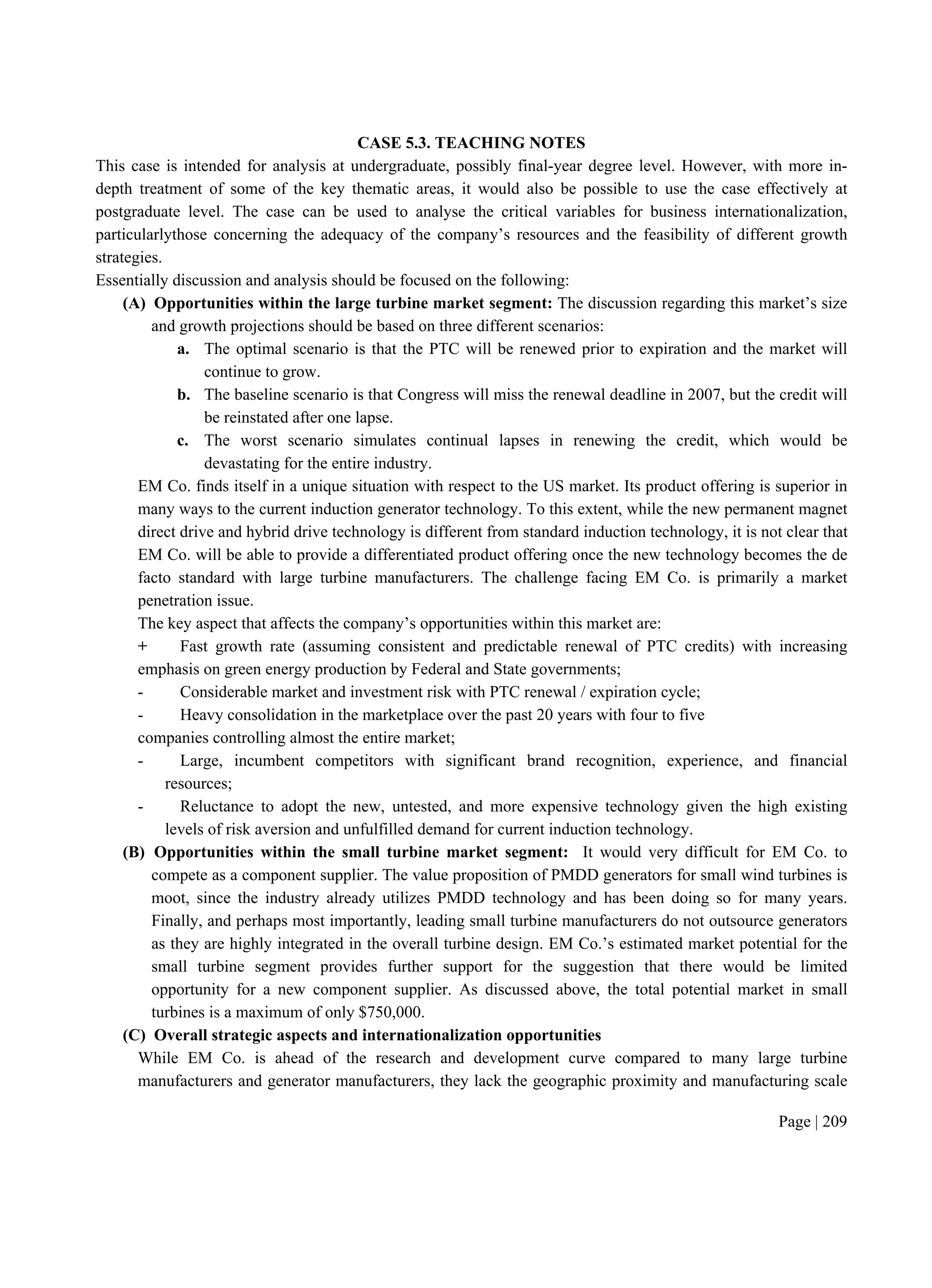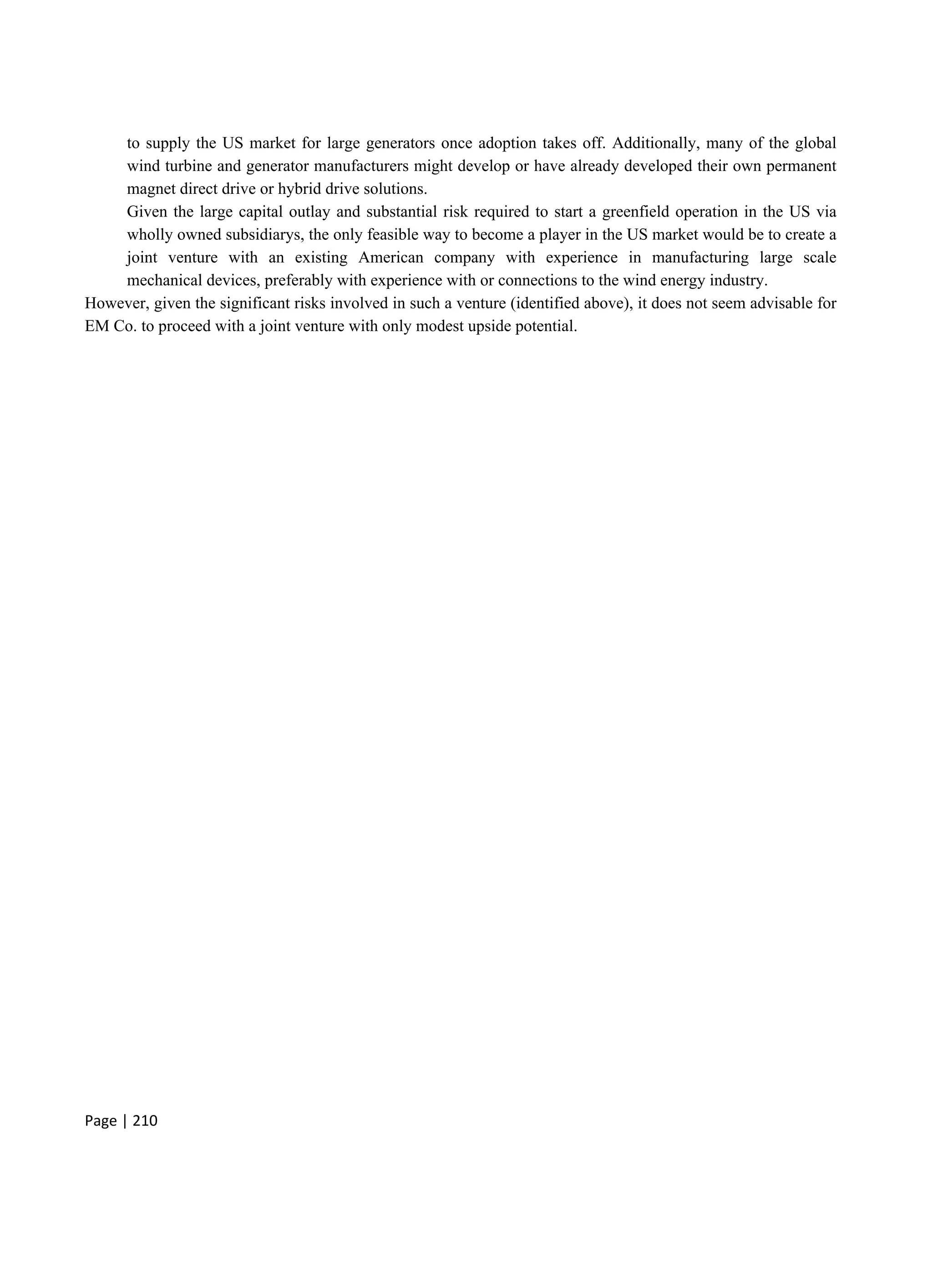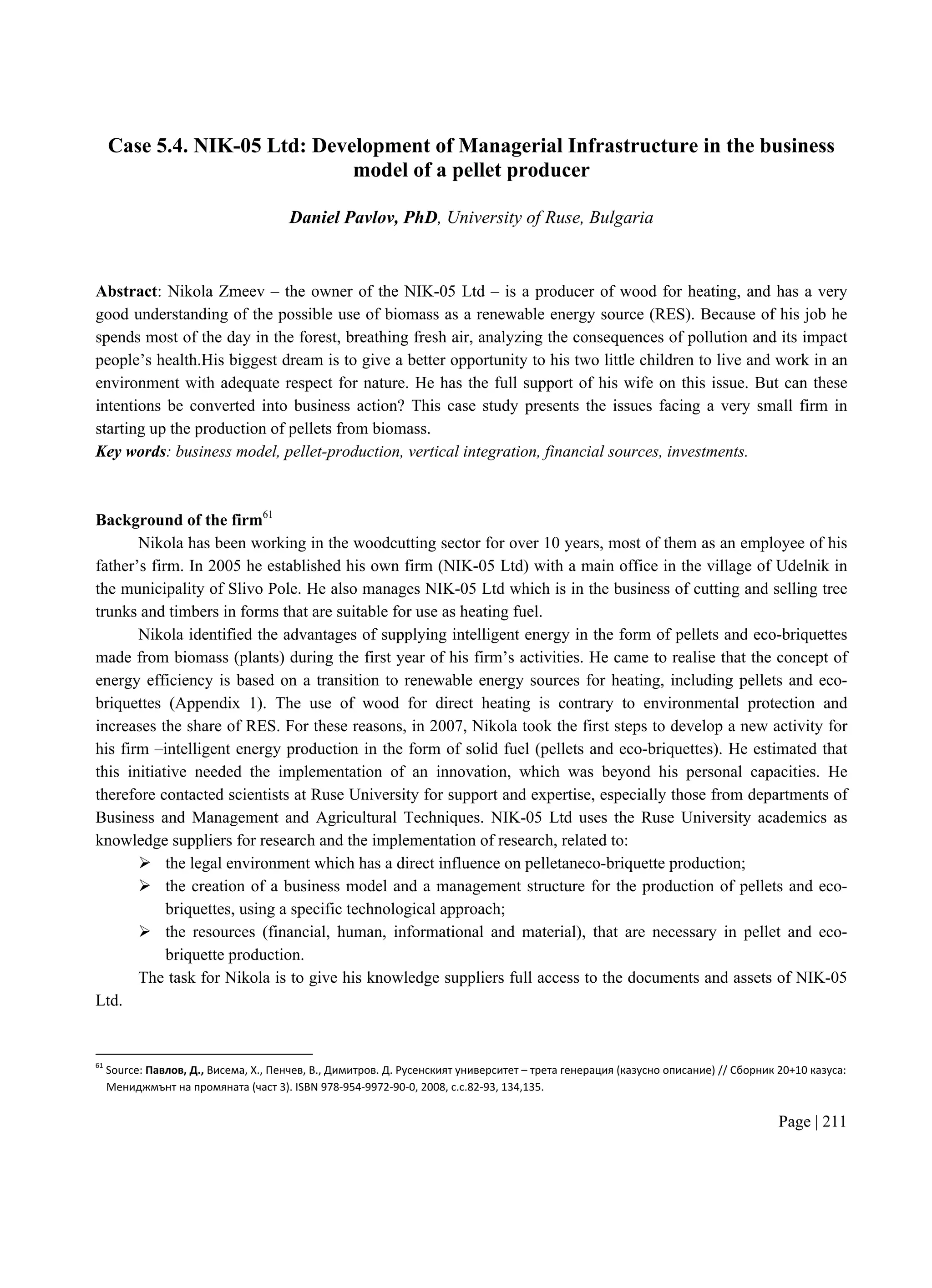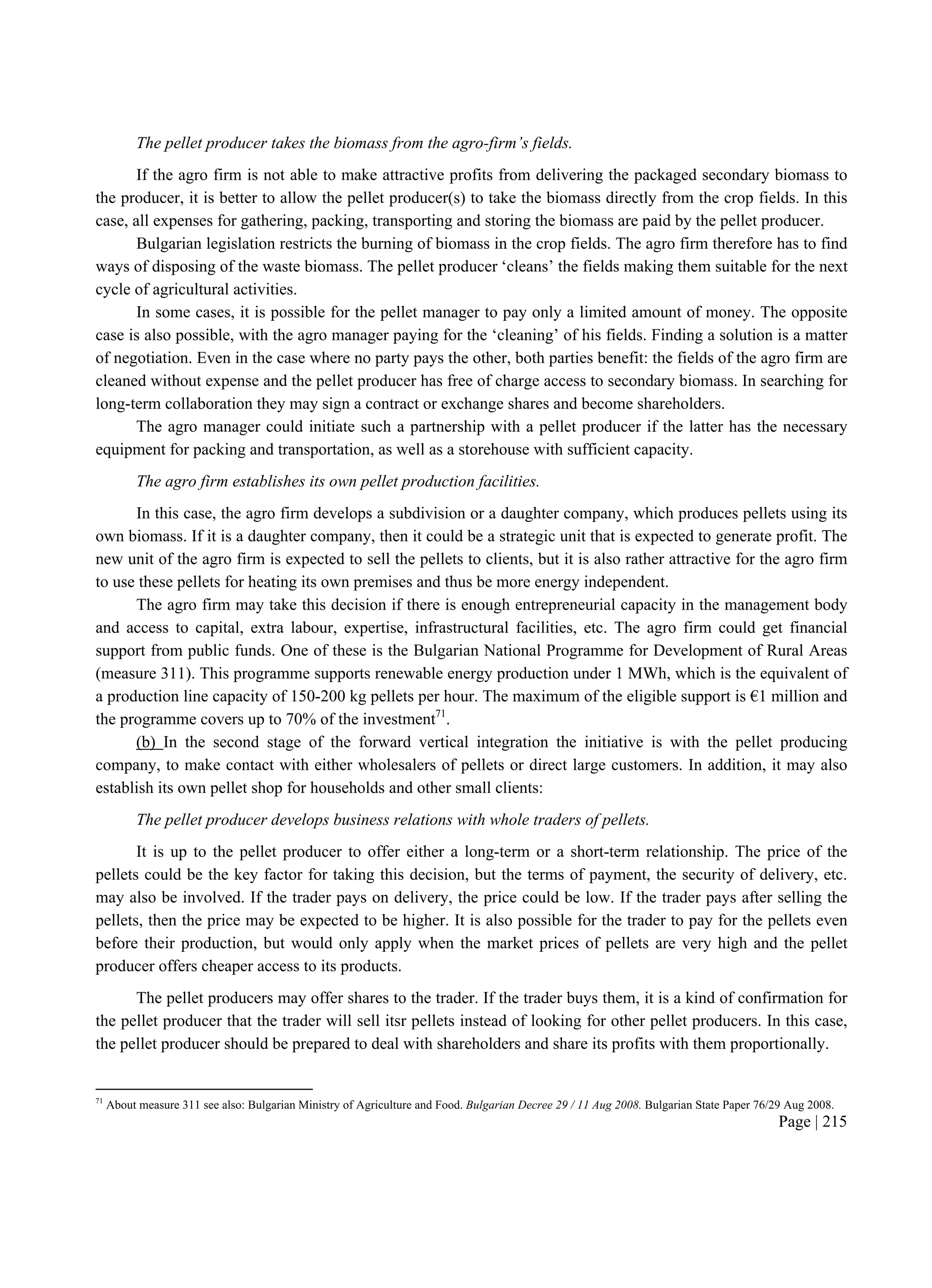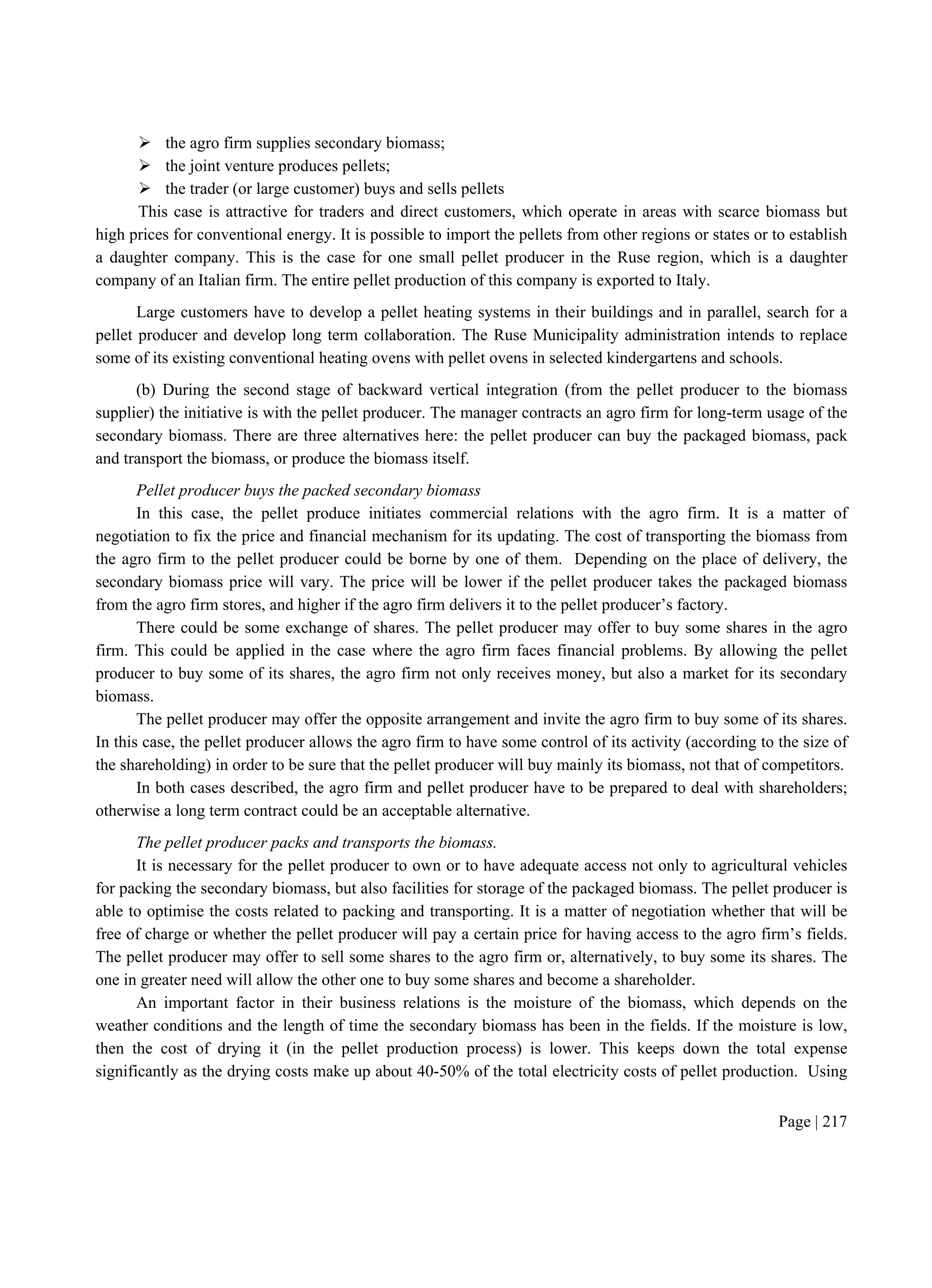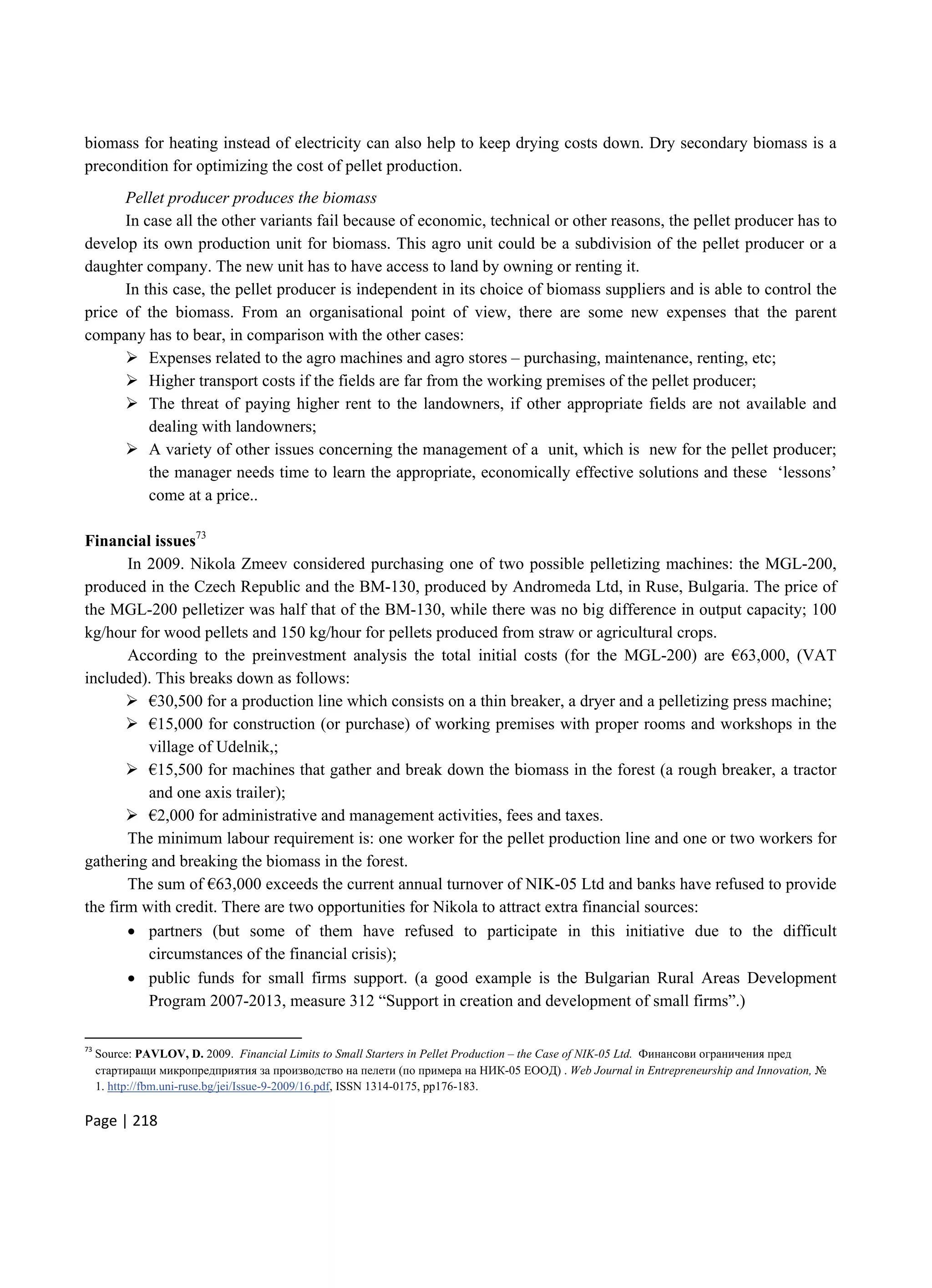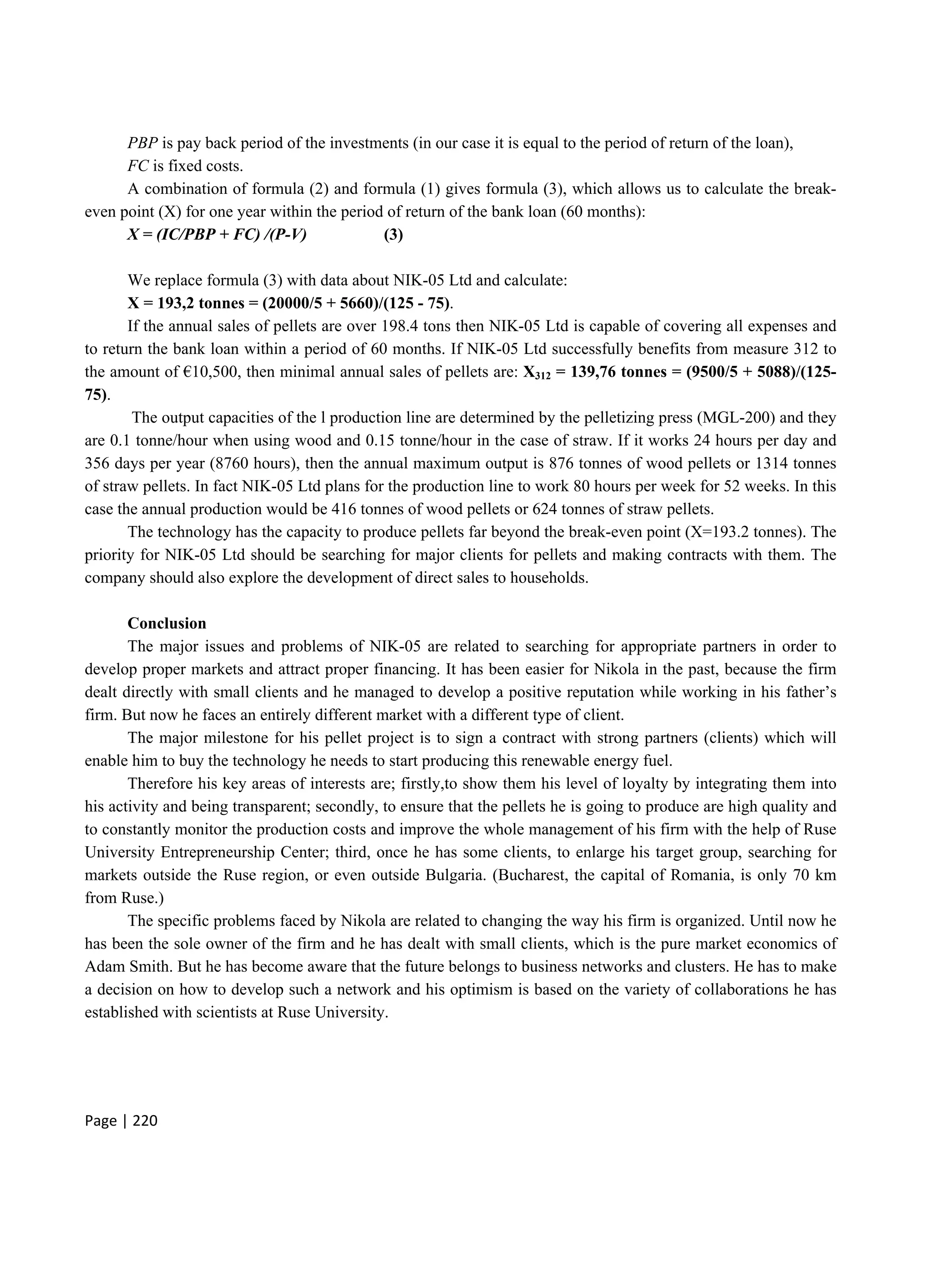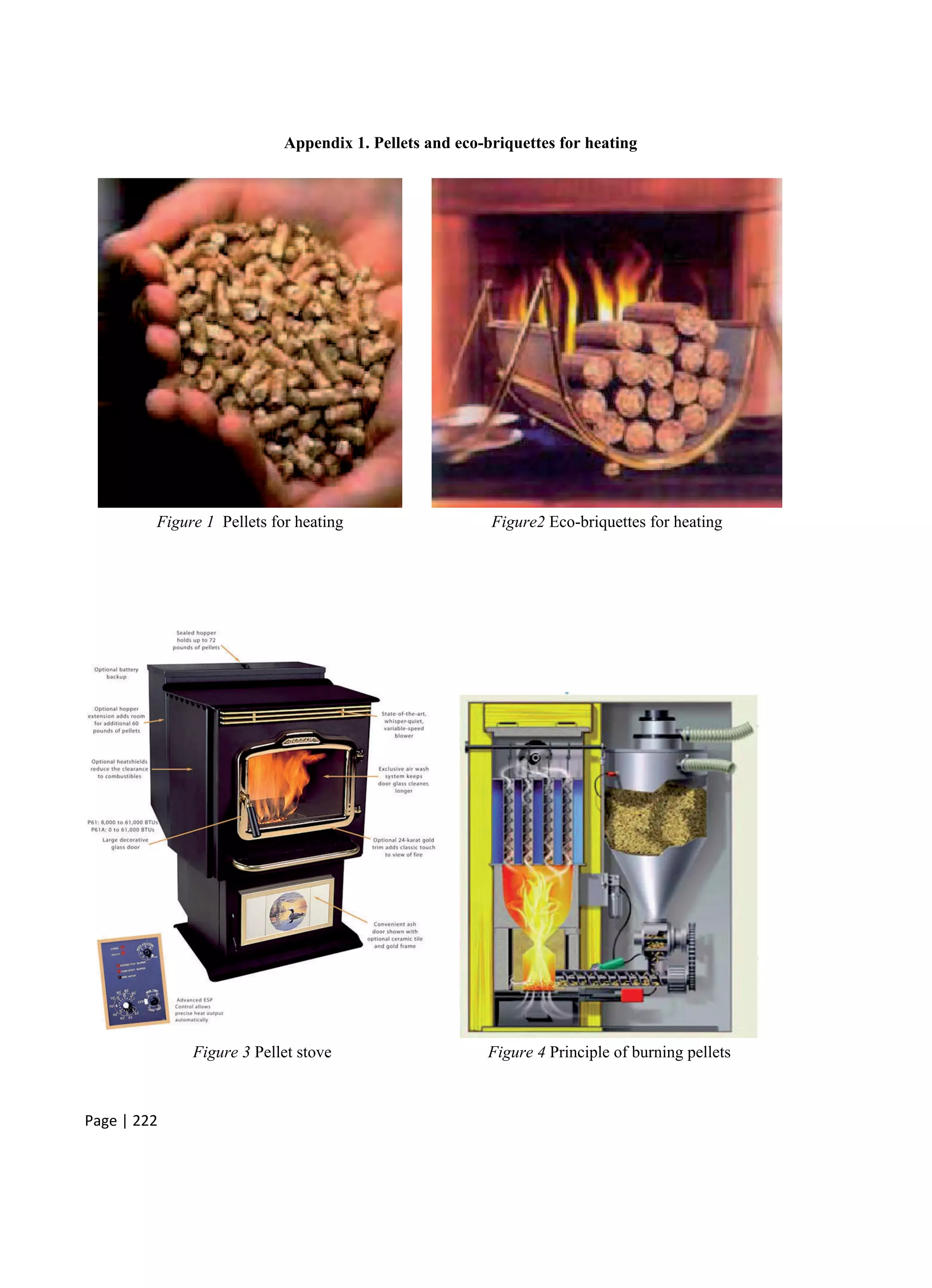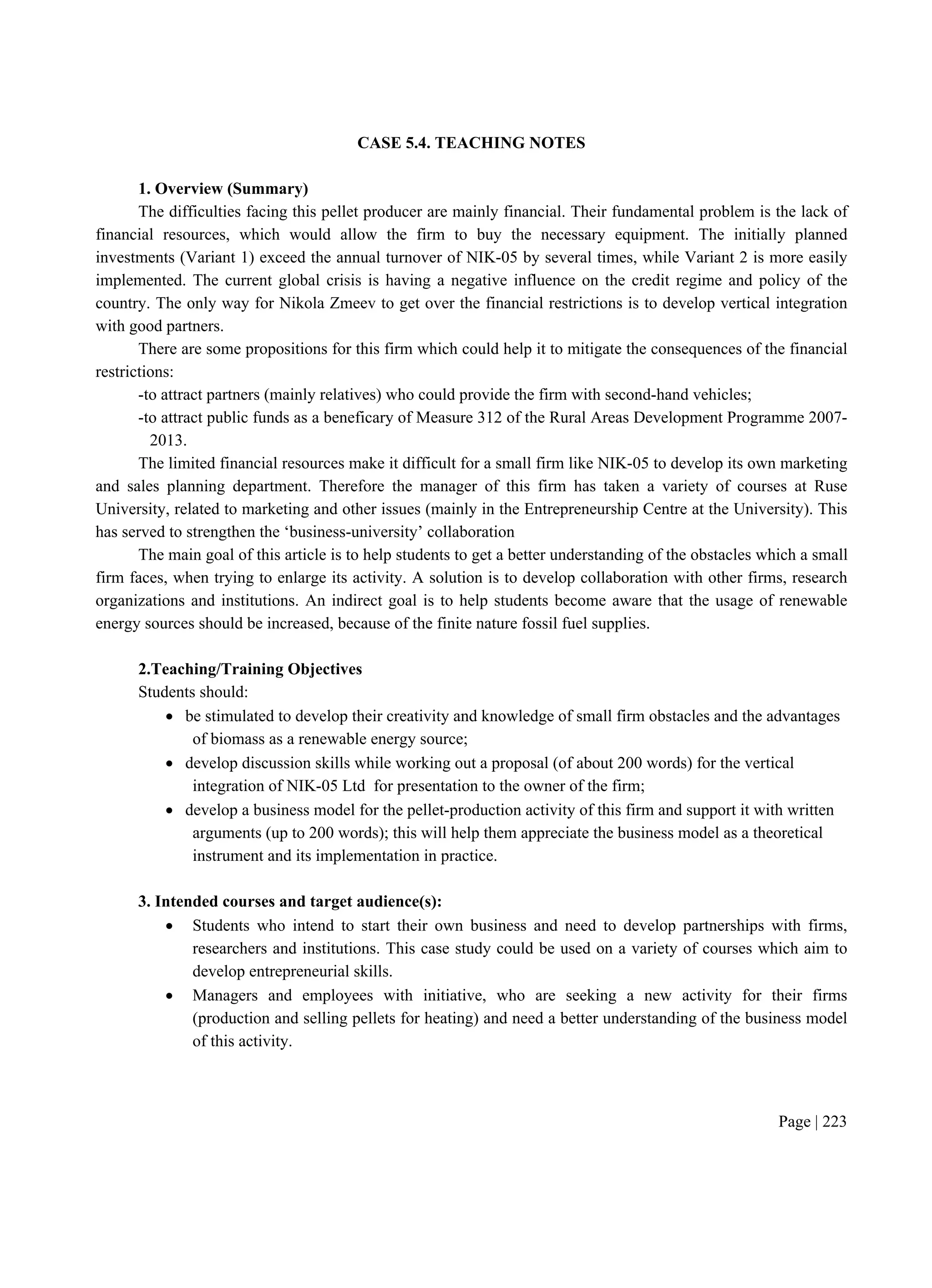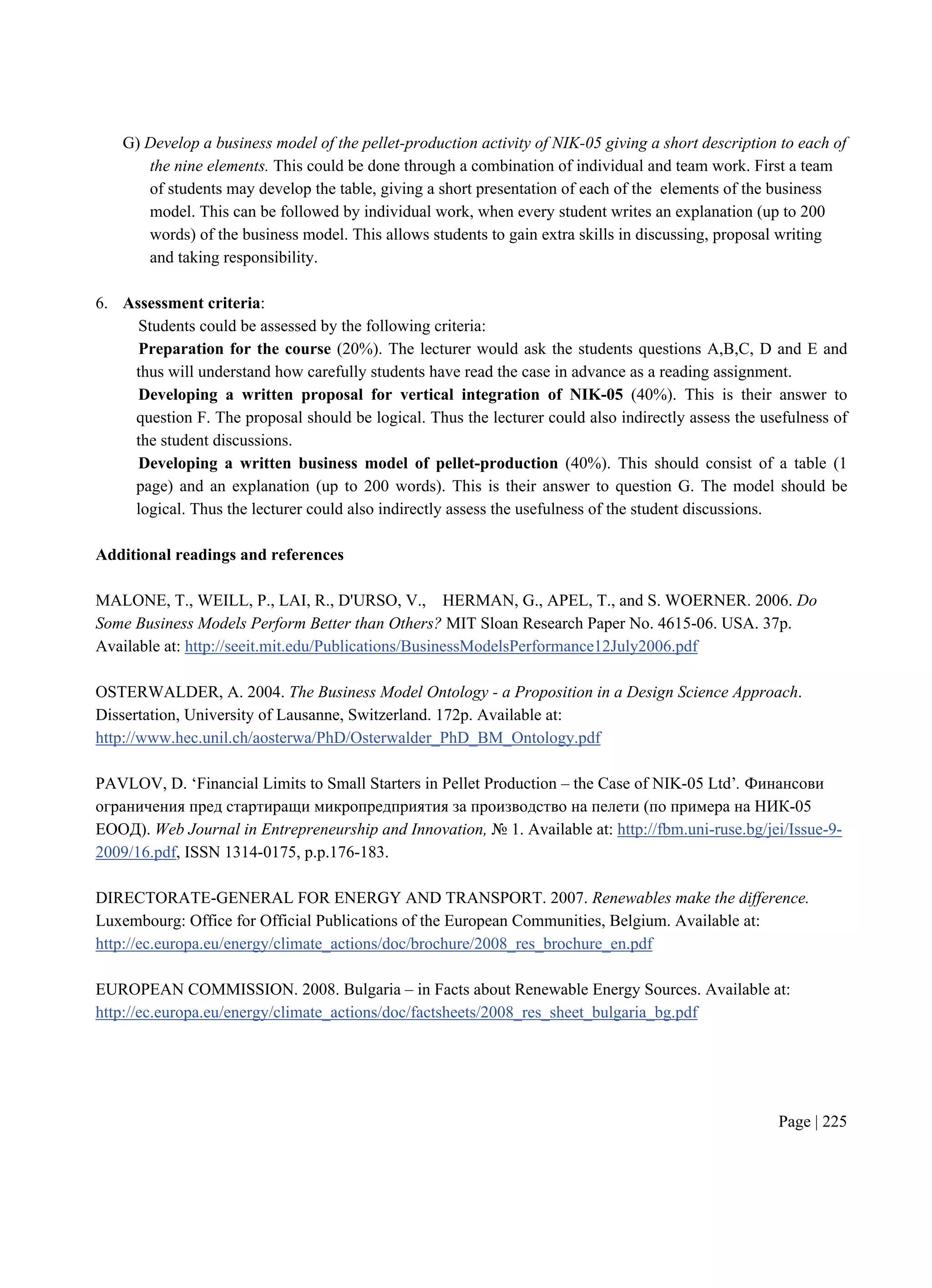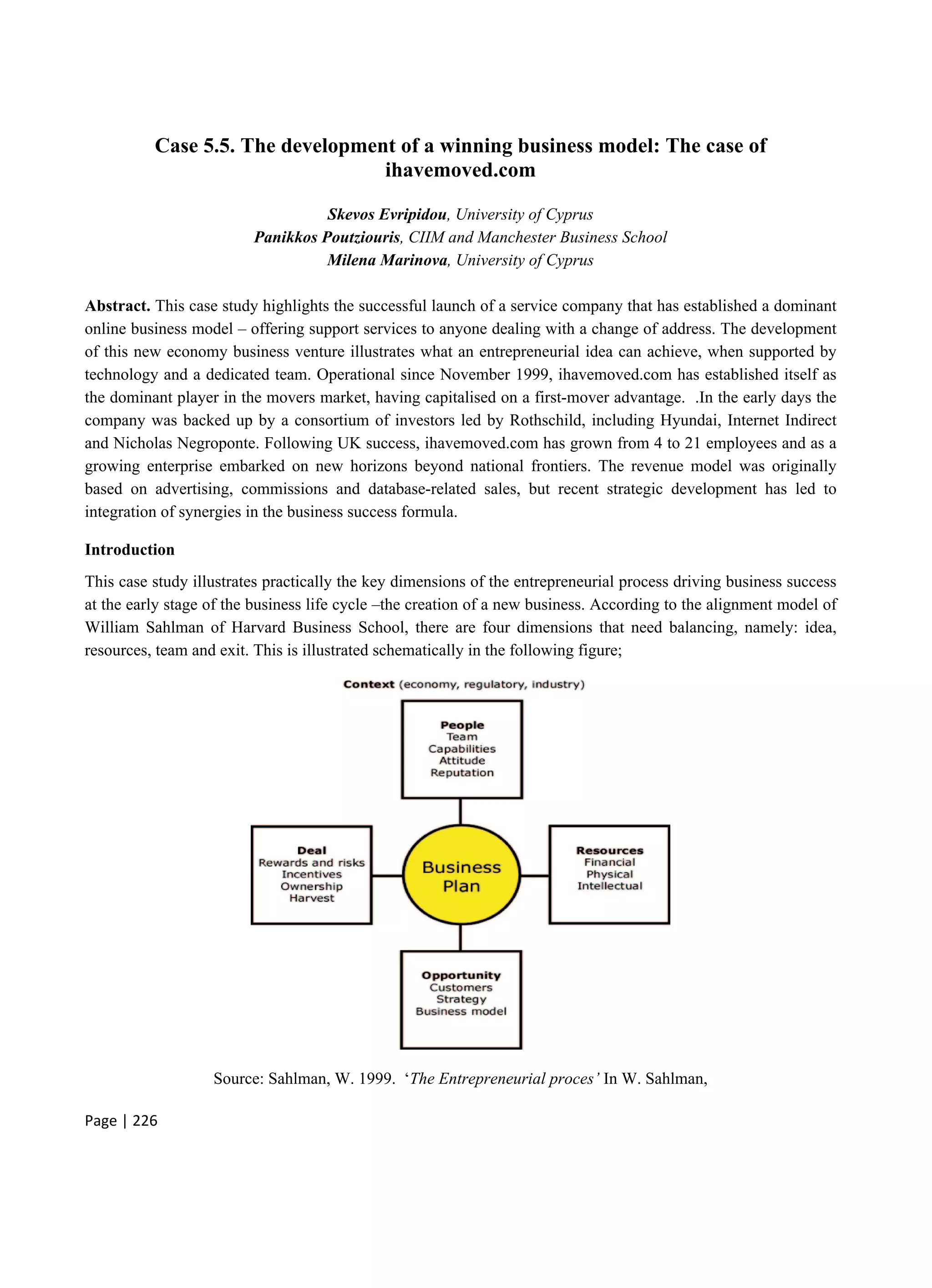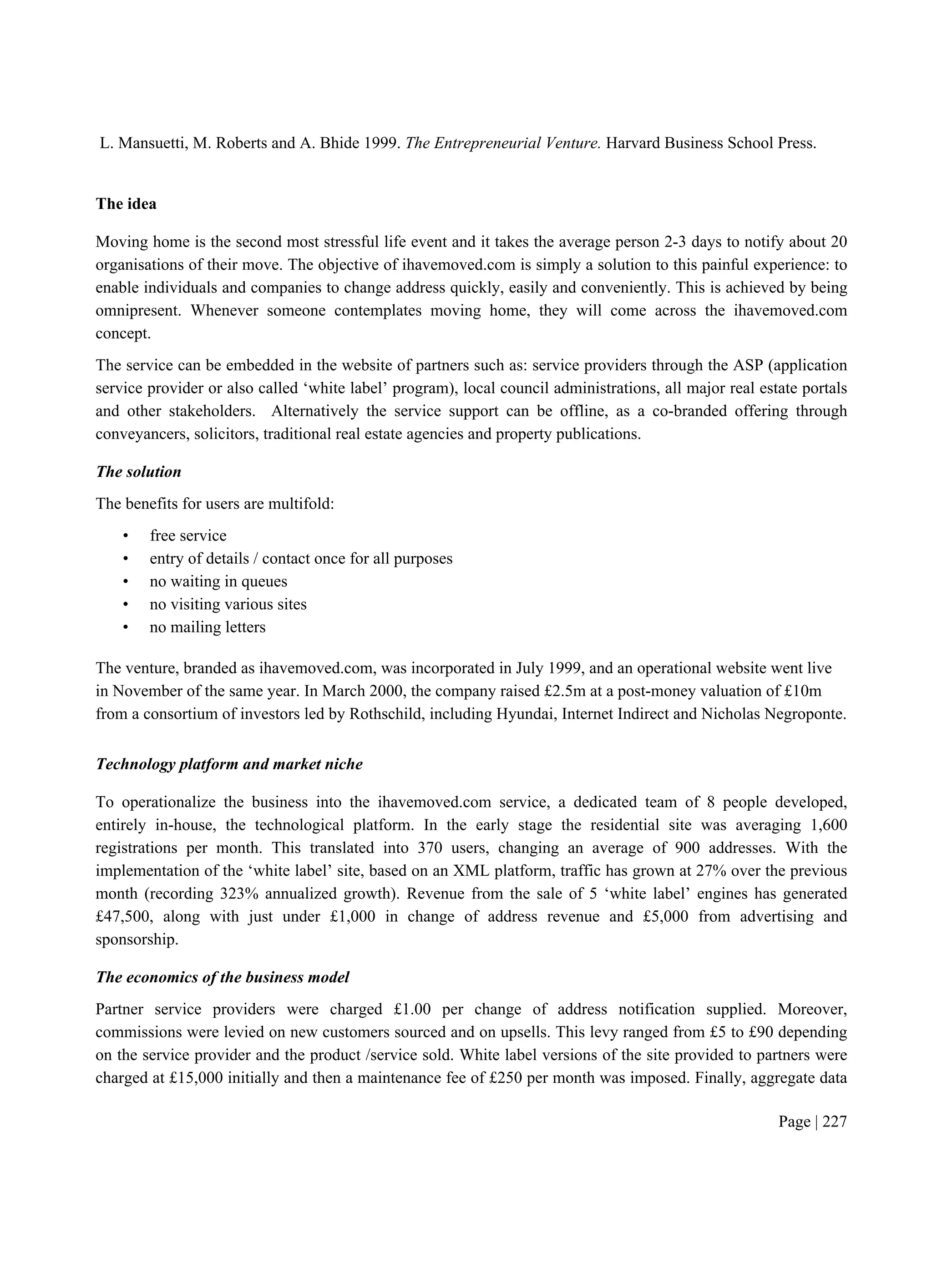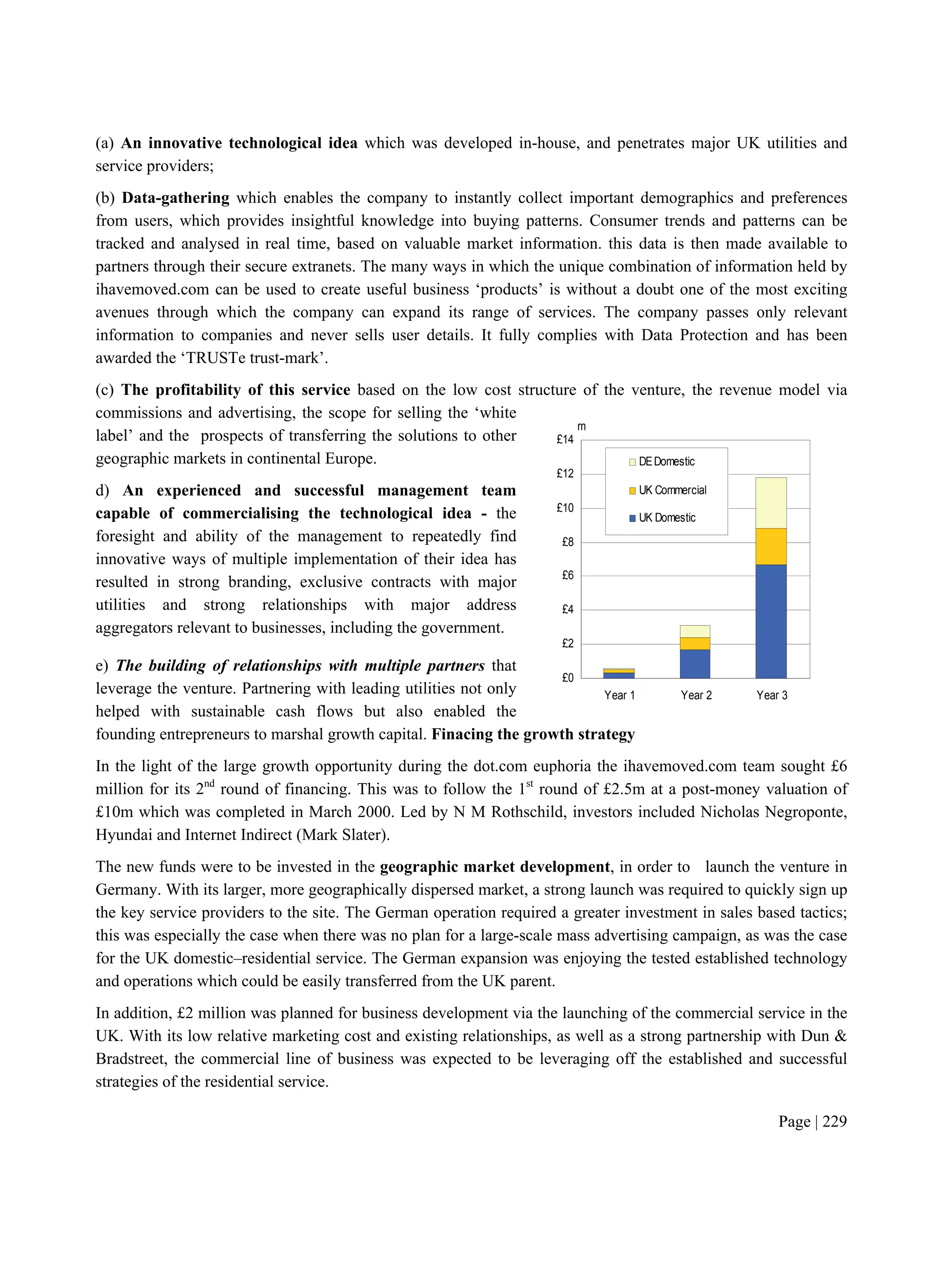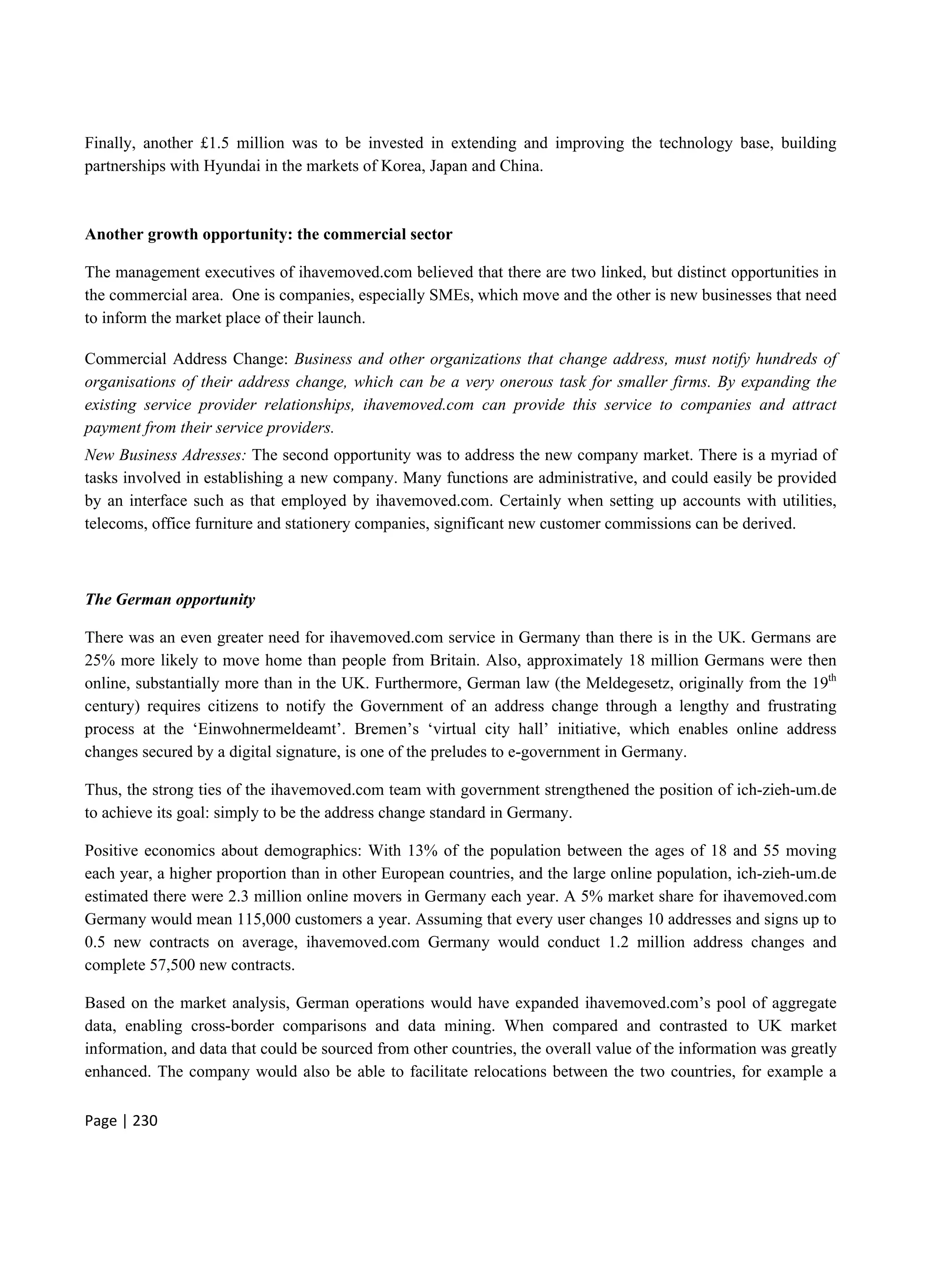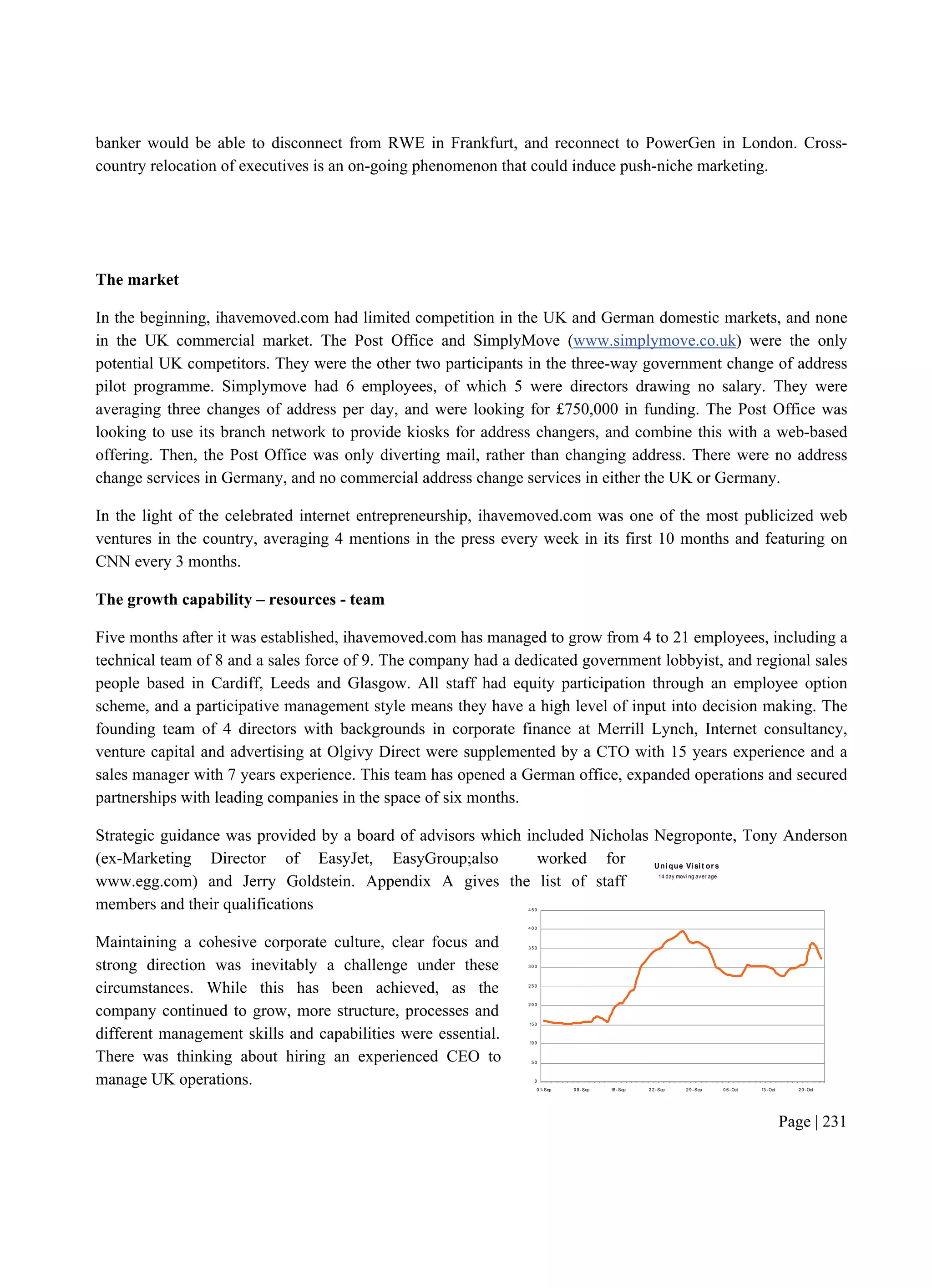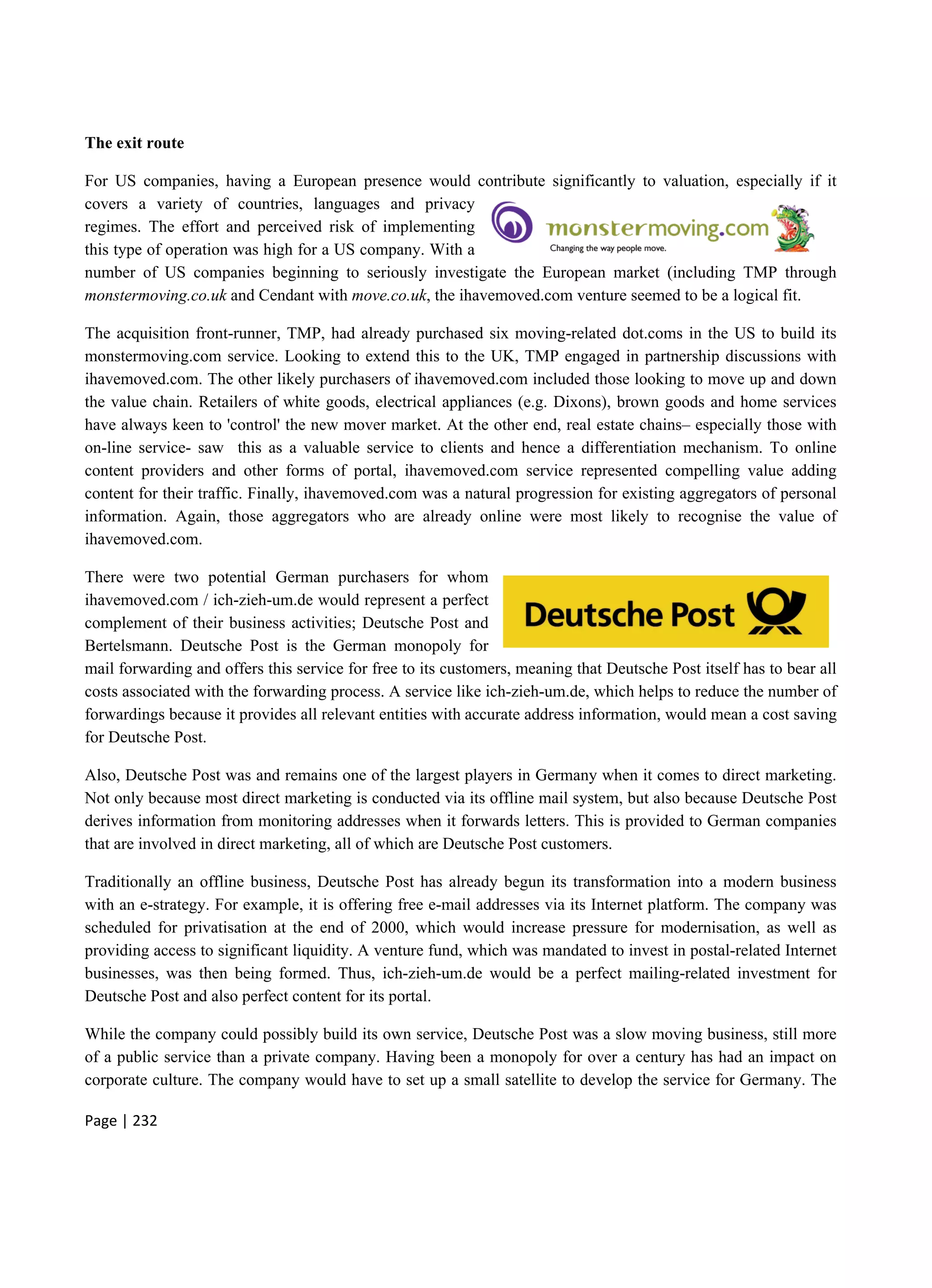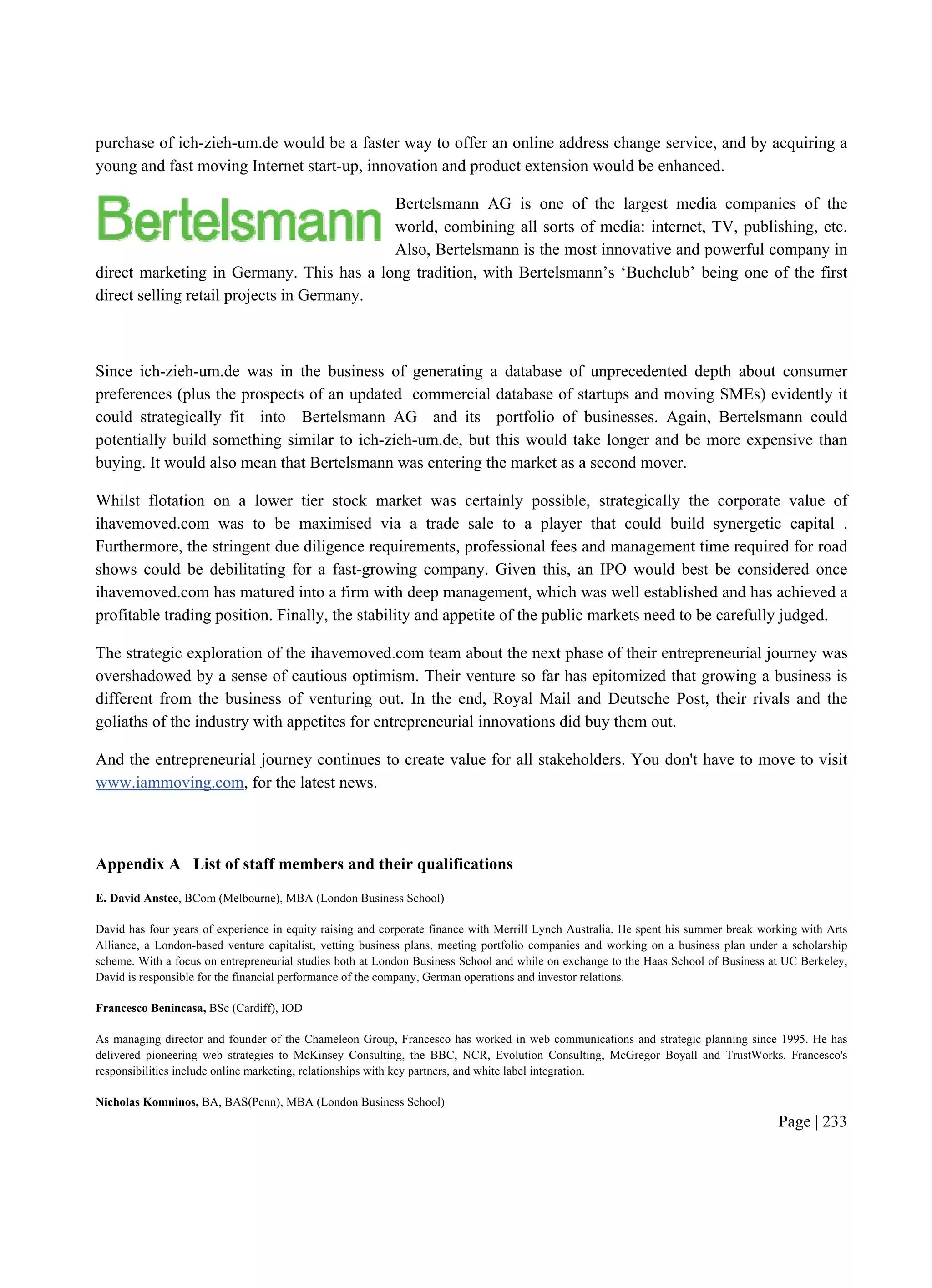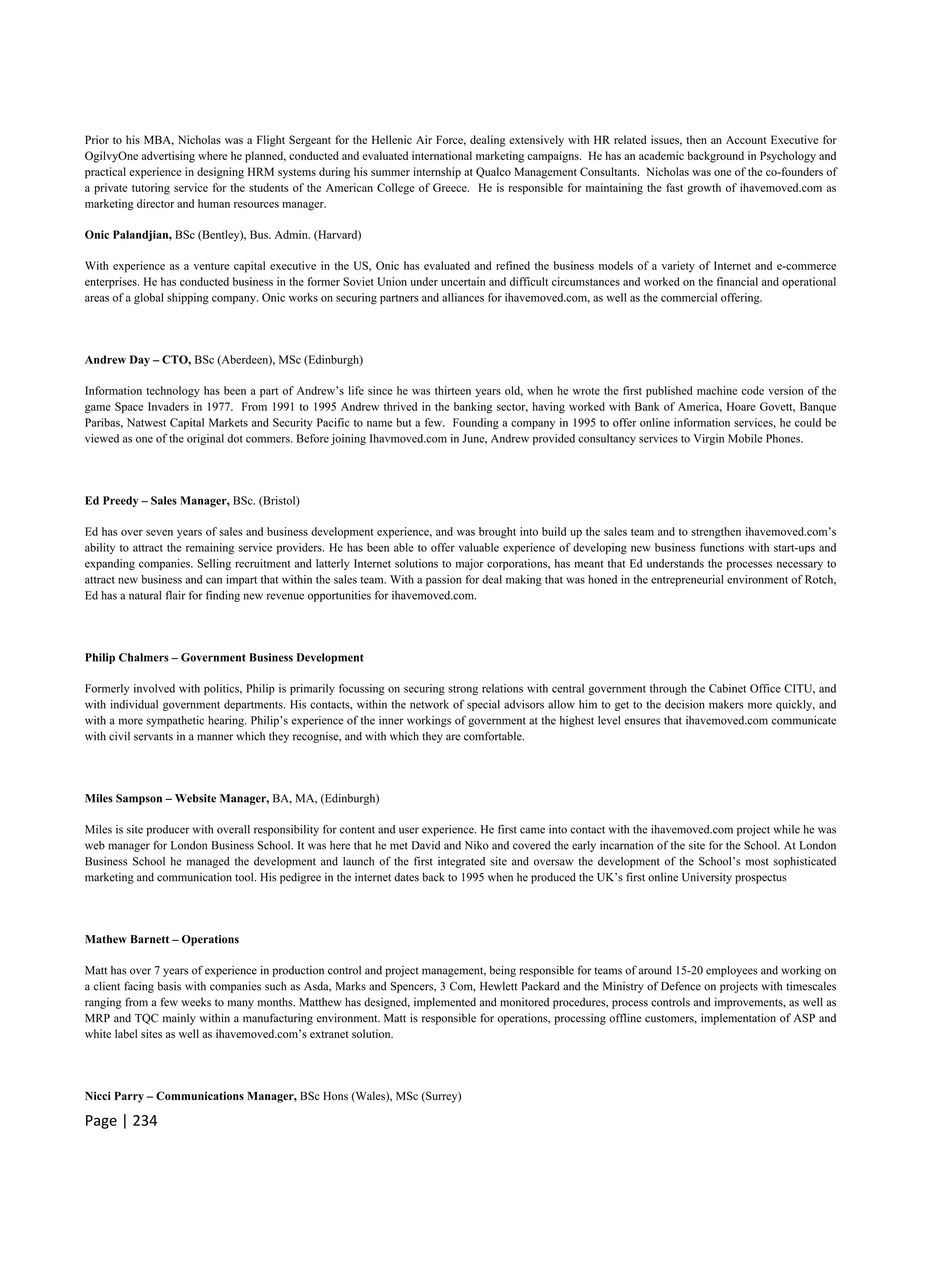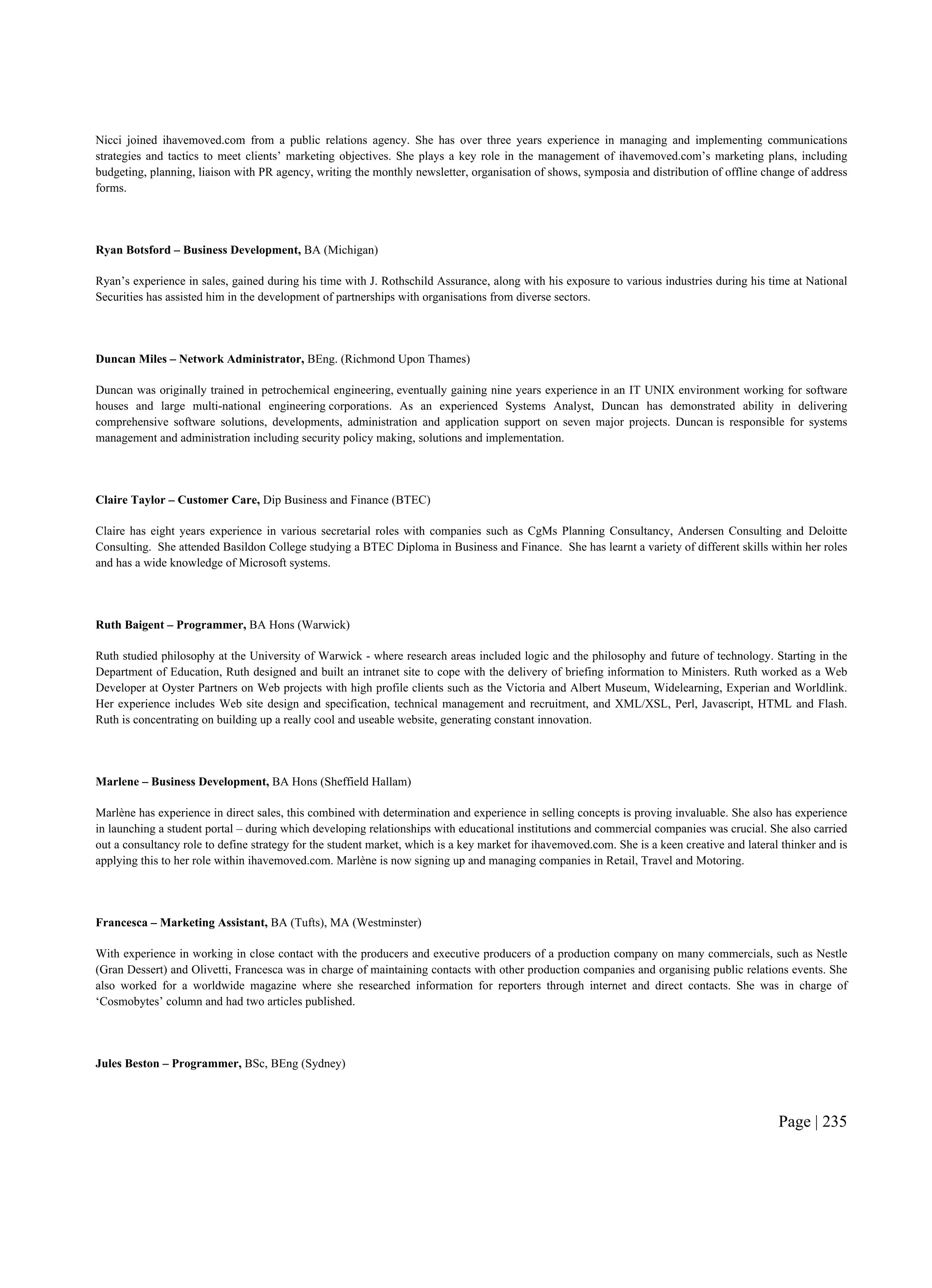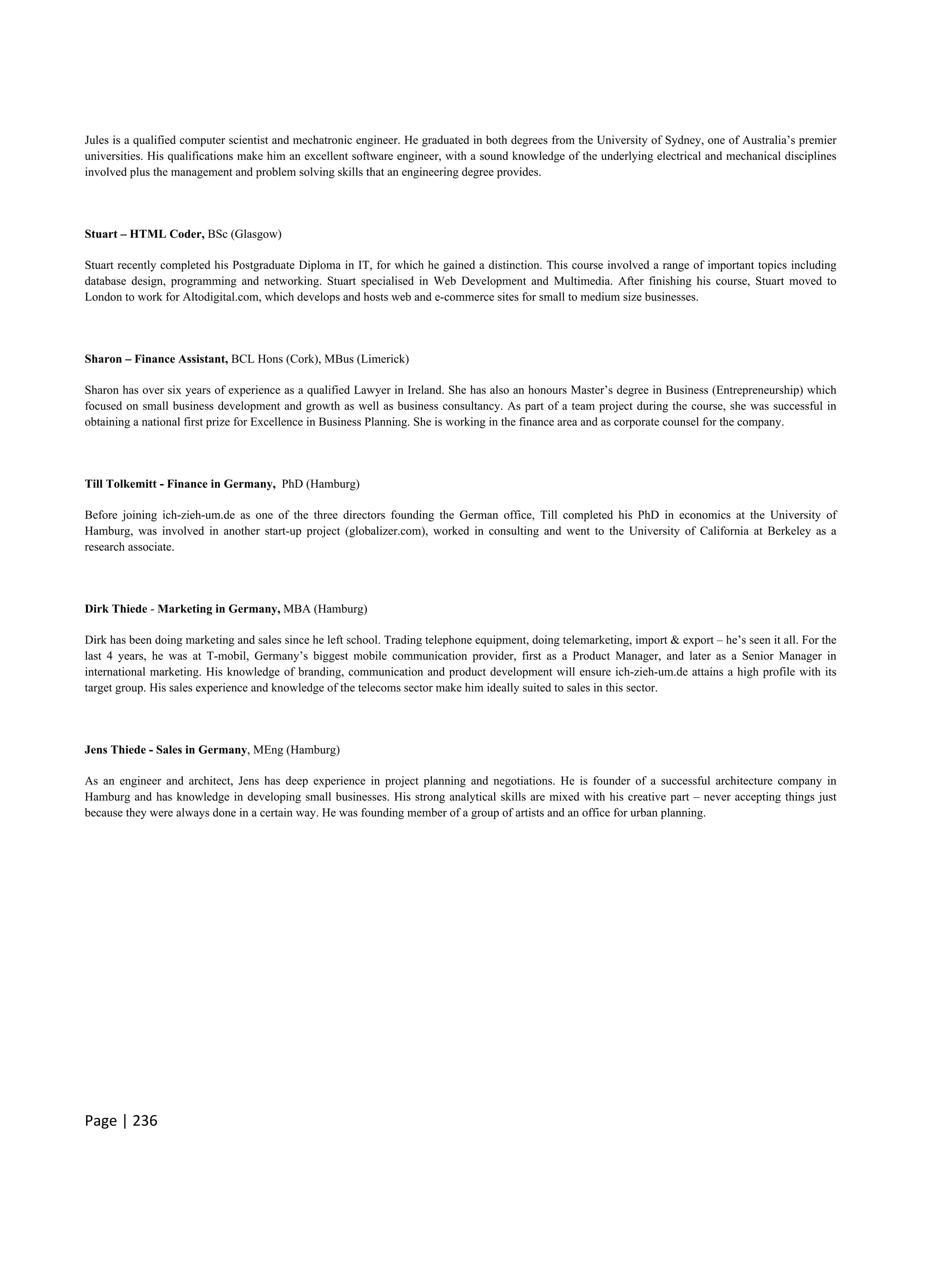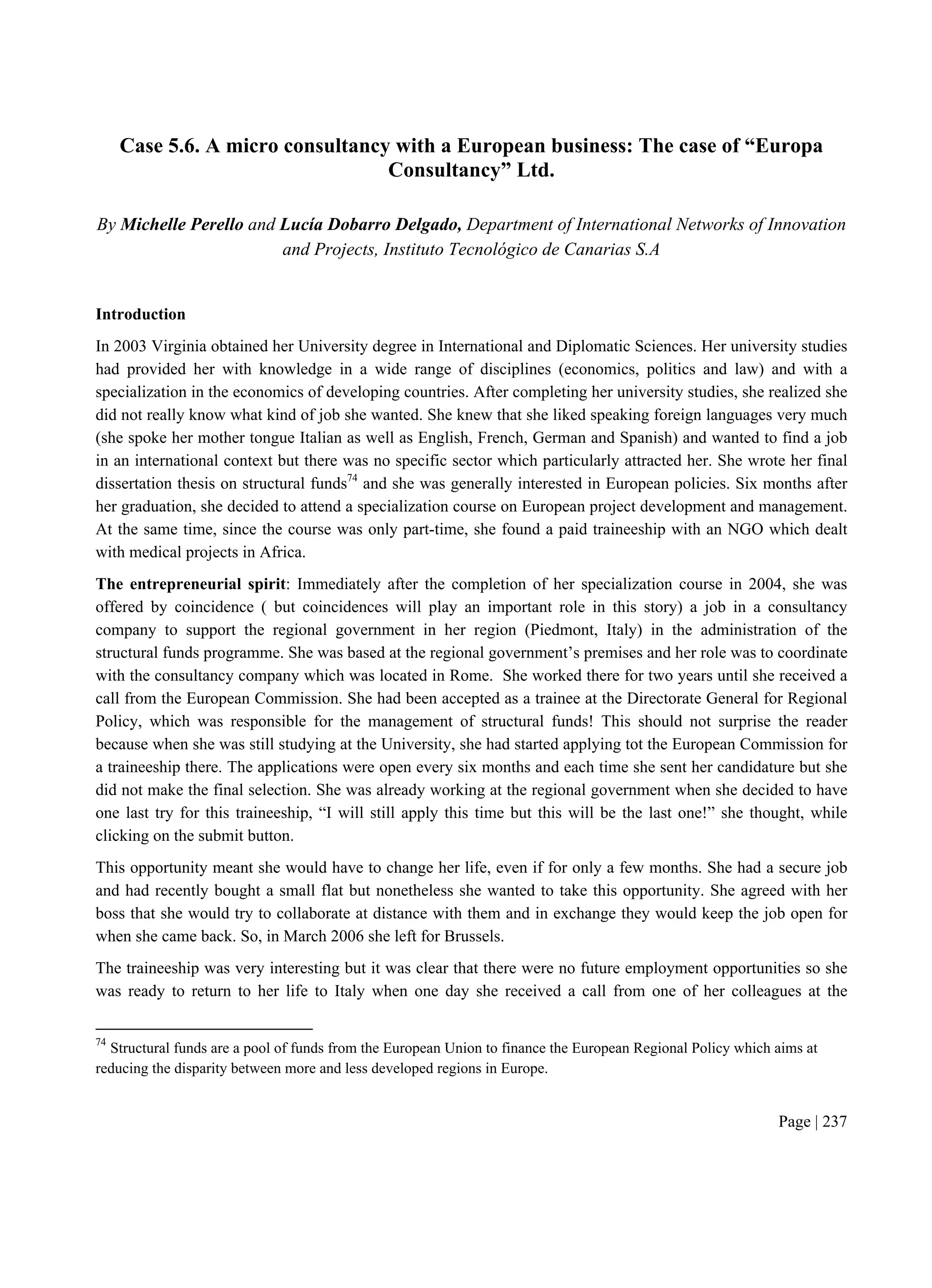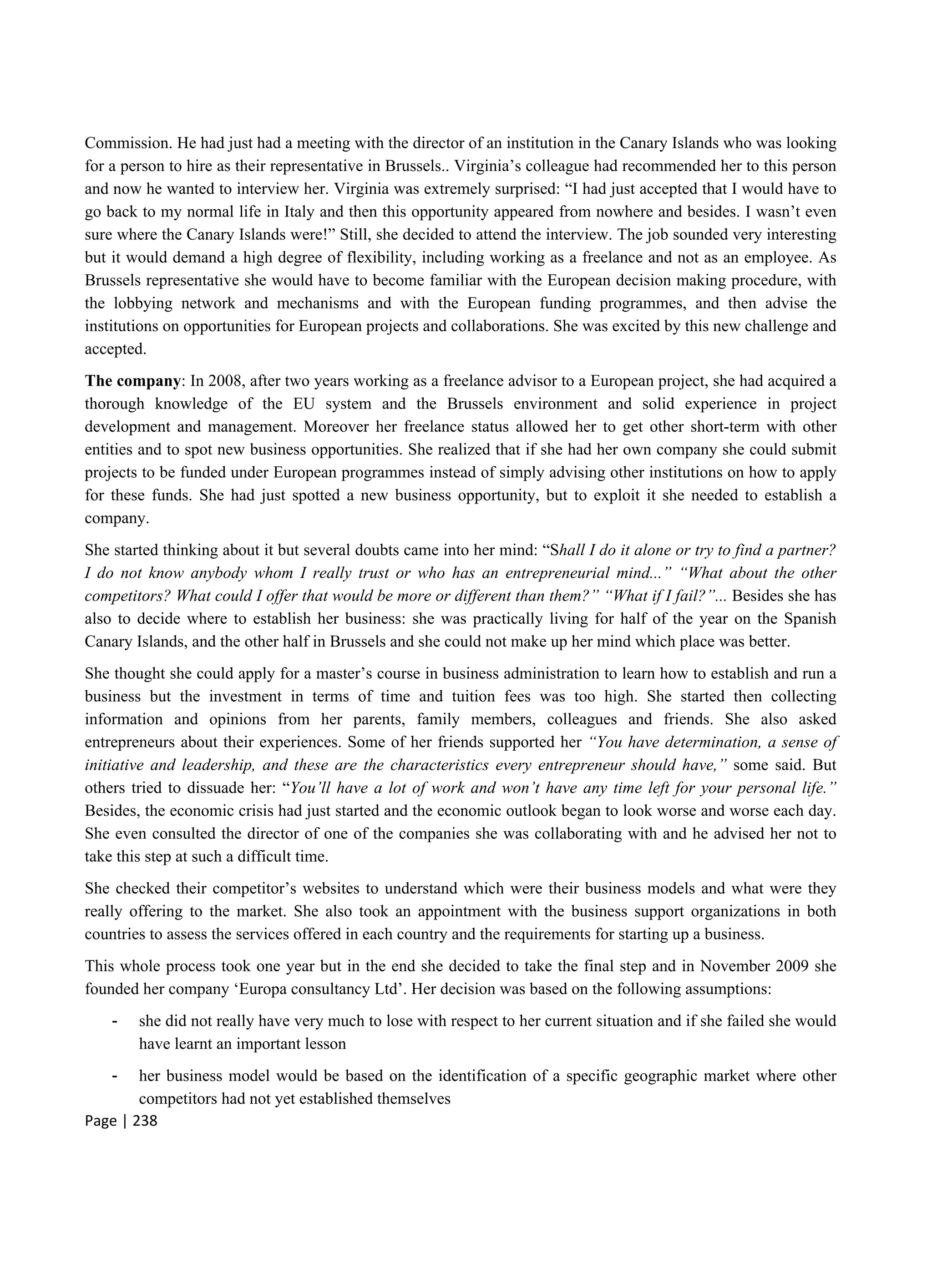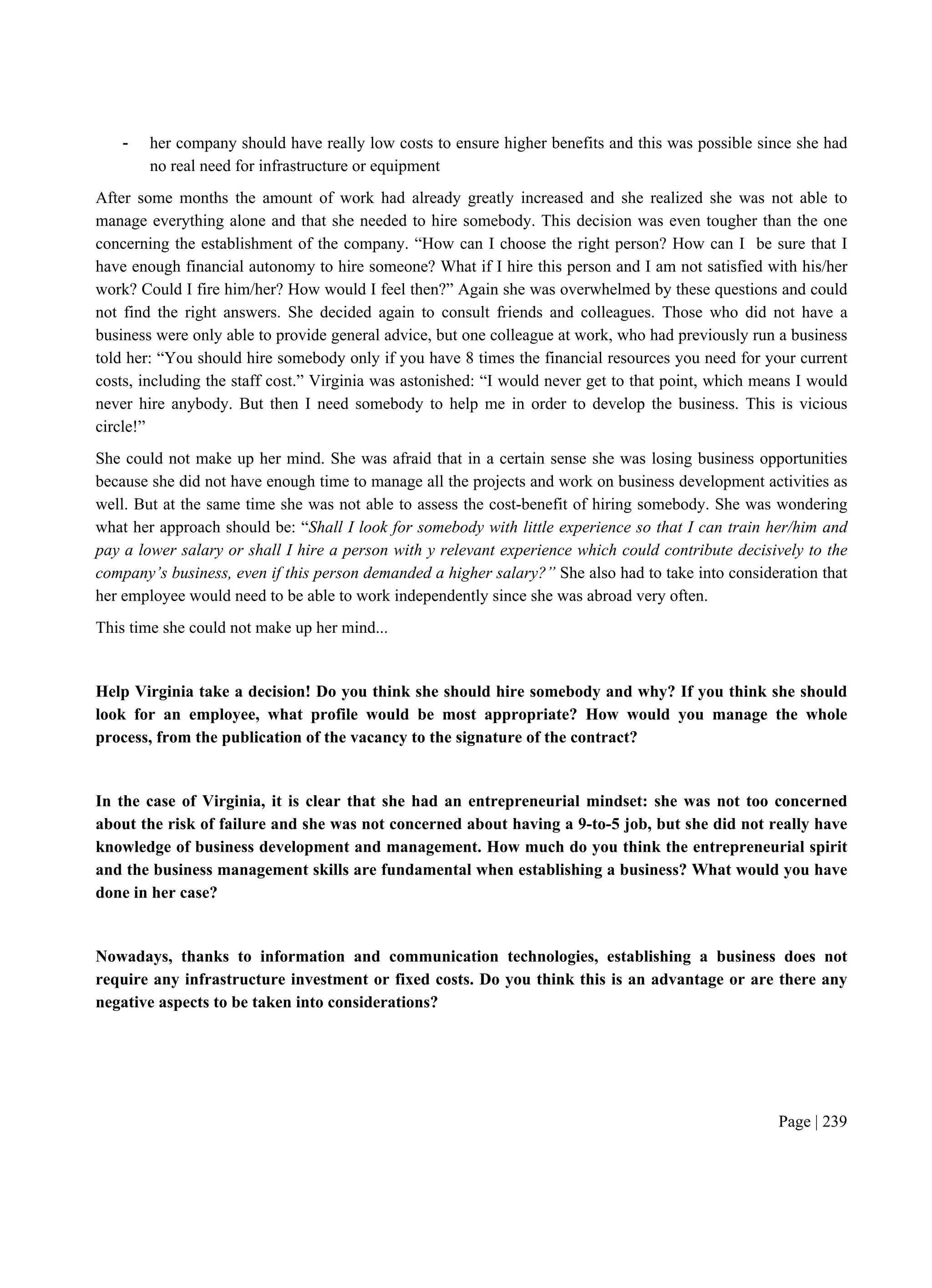This document provides an overview and table of contents for a case studies book on entrepreneurship and business creation/management. The book contains 51 case studies organized across 5 chapters that focus on different stages of entrepreneurship: first steps, internationalization, innovative development, social impact, and growth/expansion. Each case study profiles an existing company and their experiences with various entrepreneurial challenges. The case studies come from various European countries and sectors and are intended to serve as teaching materials on entrepreneurship for higher education students through experiential learning.
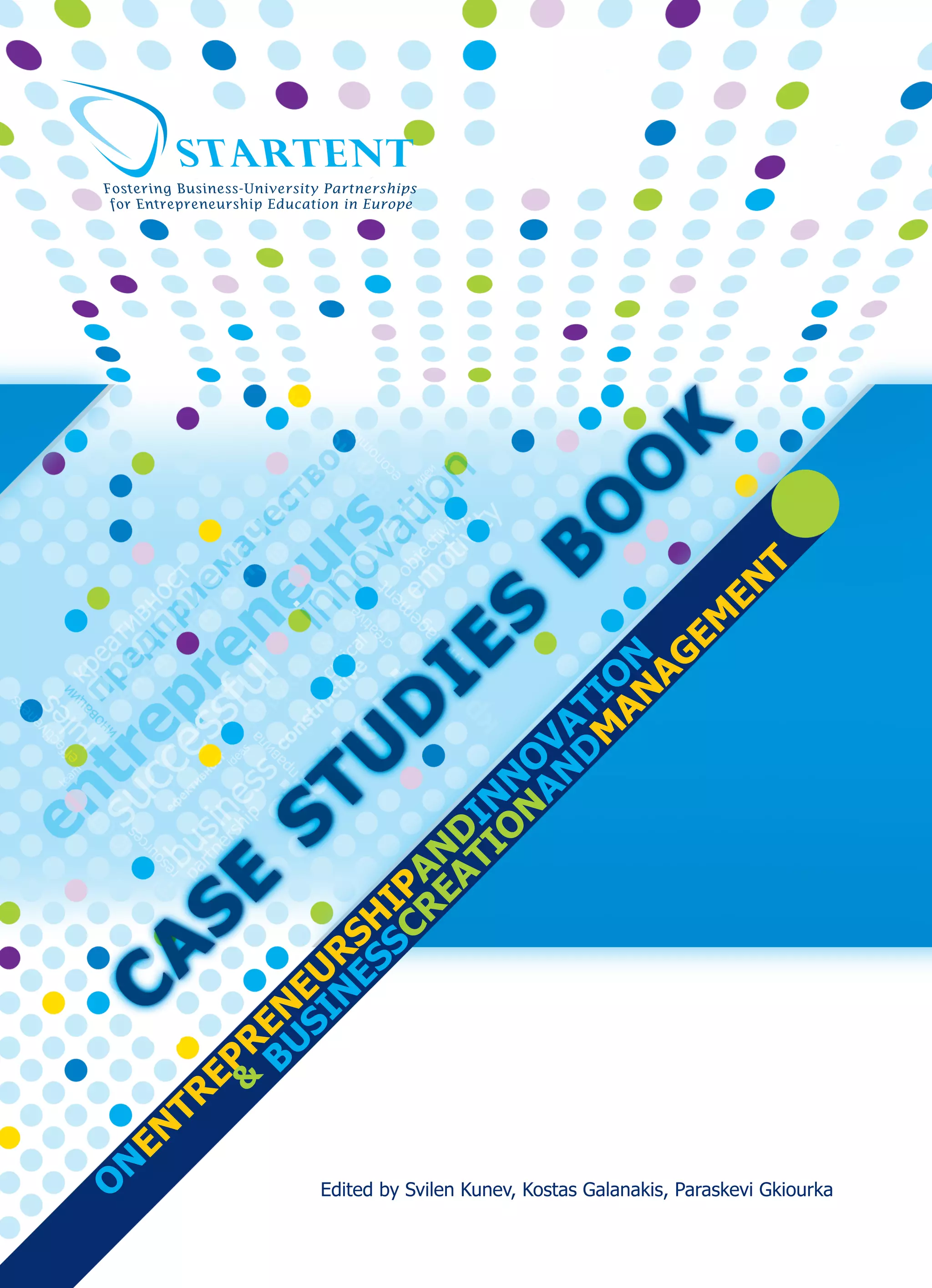

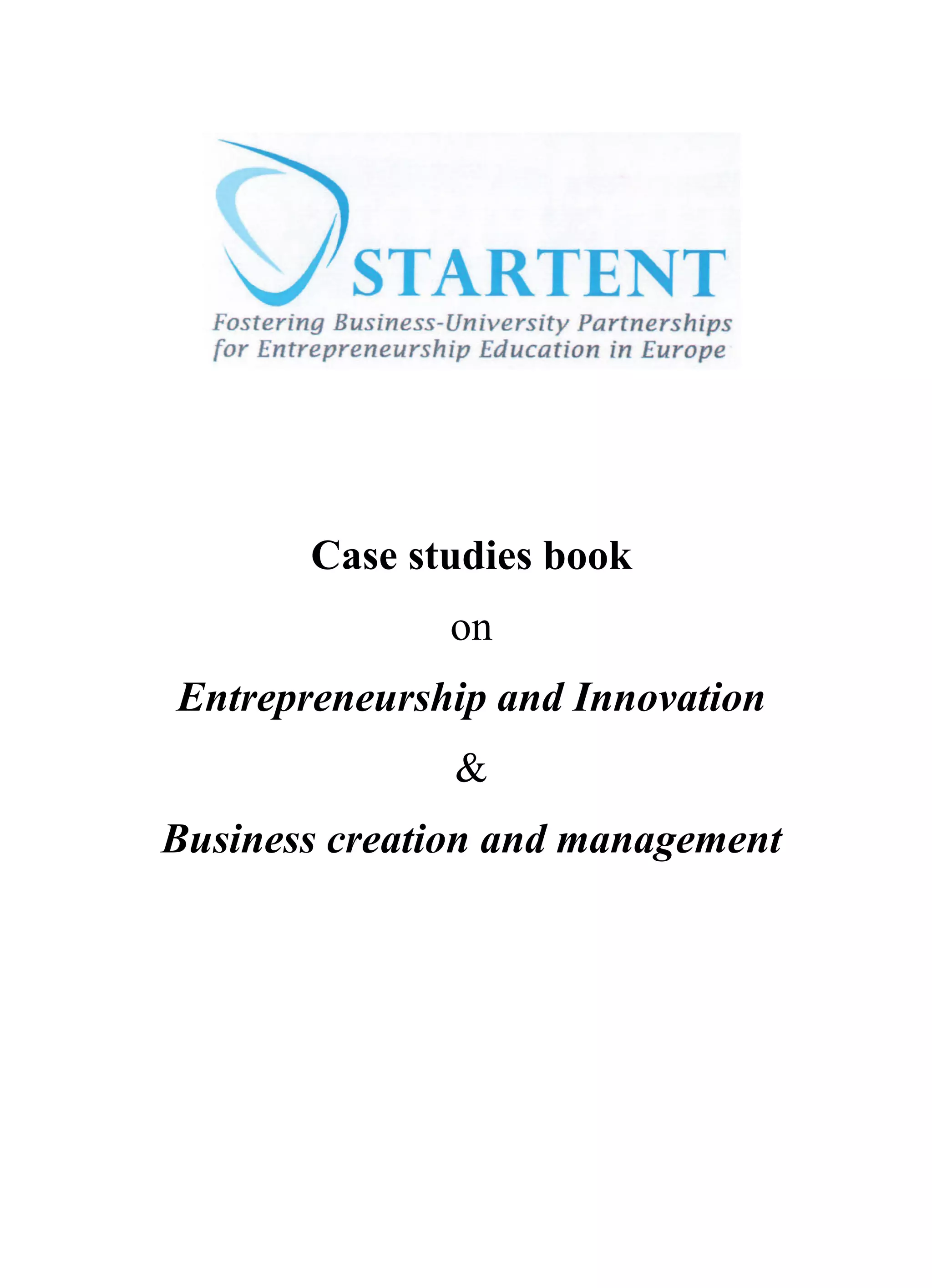
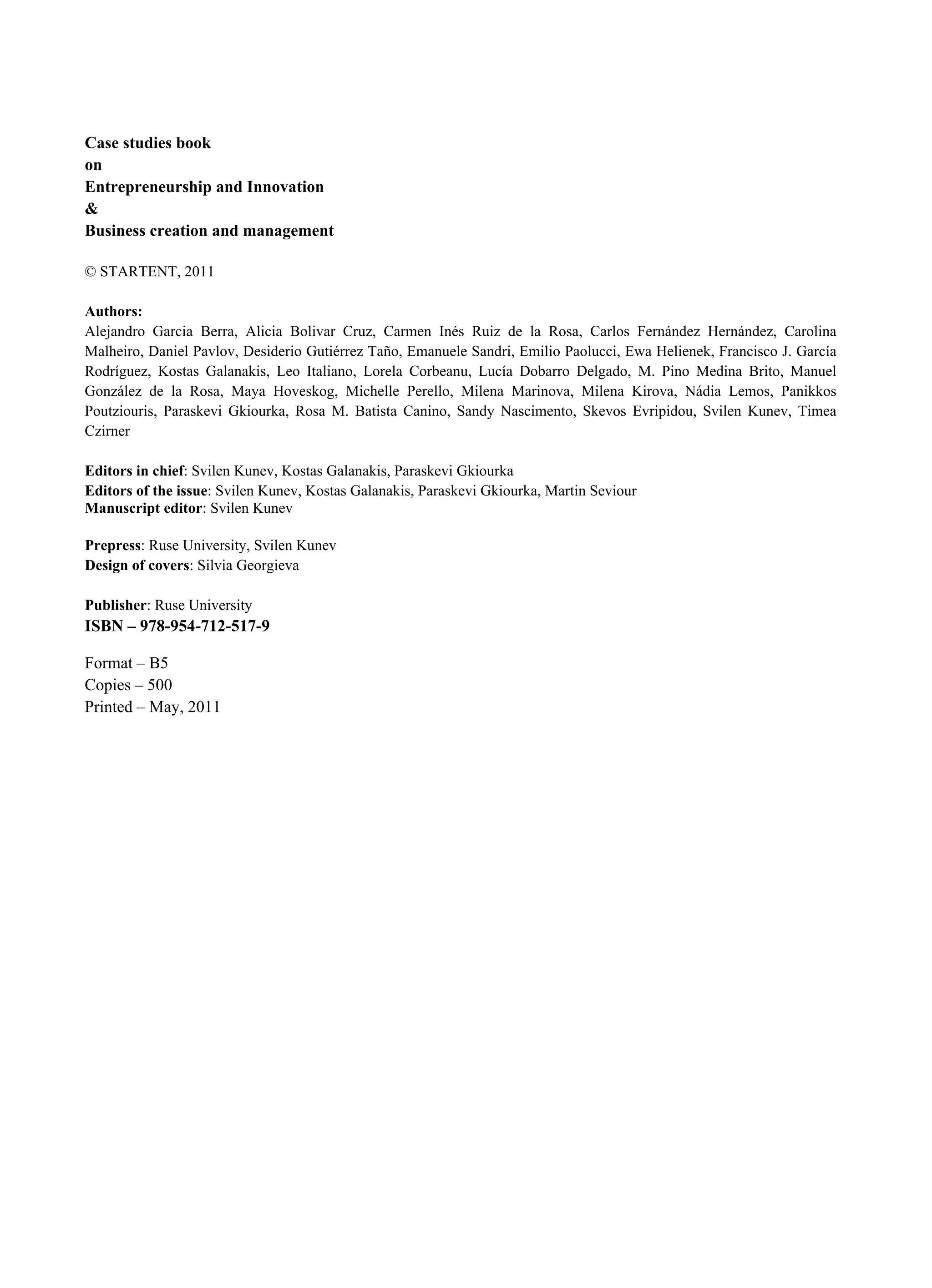
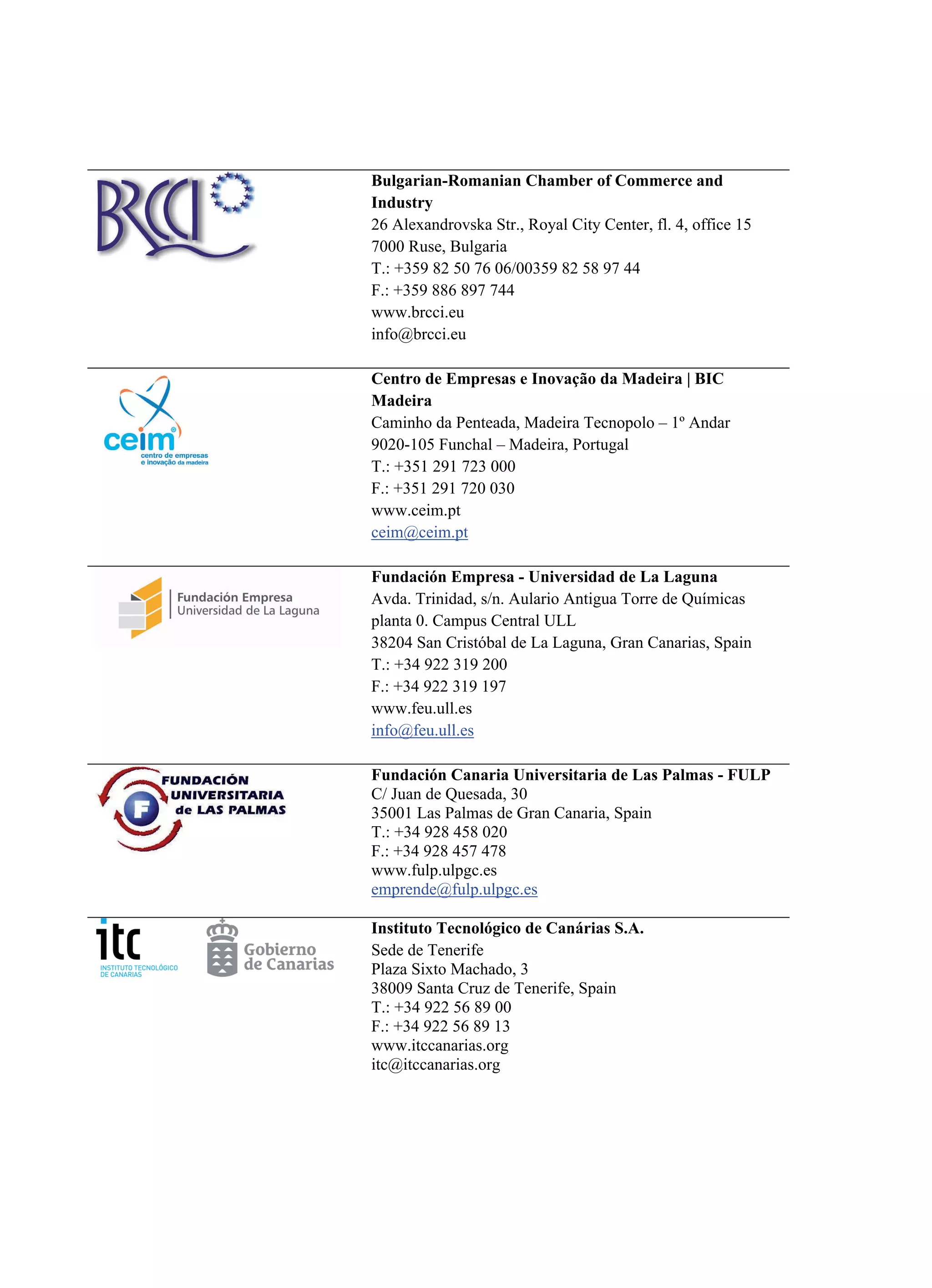
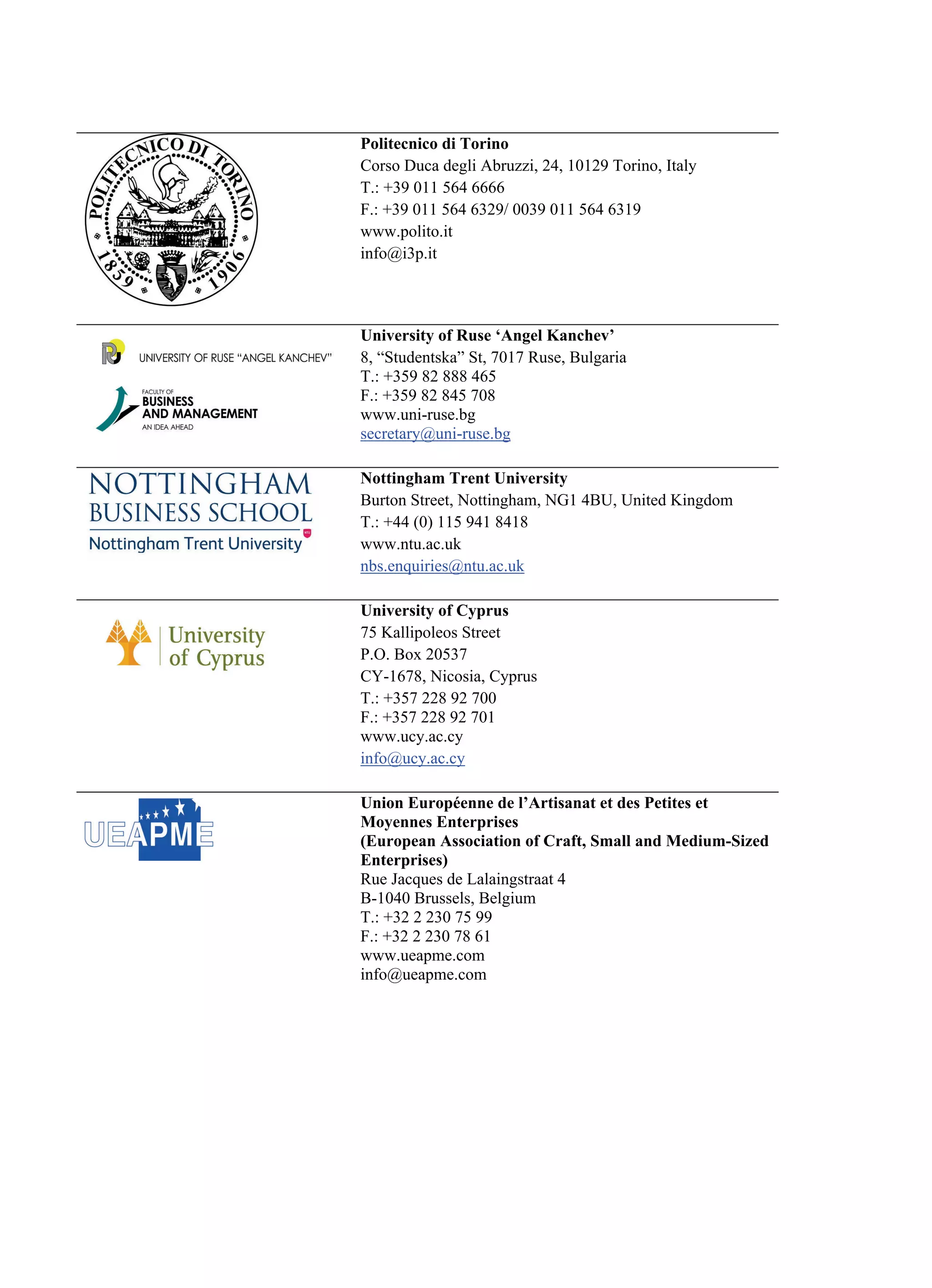
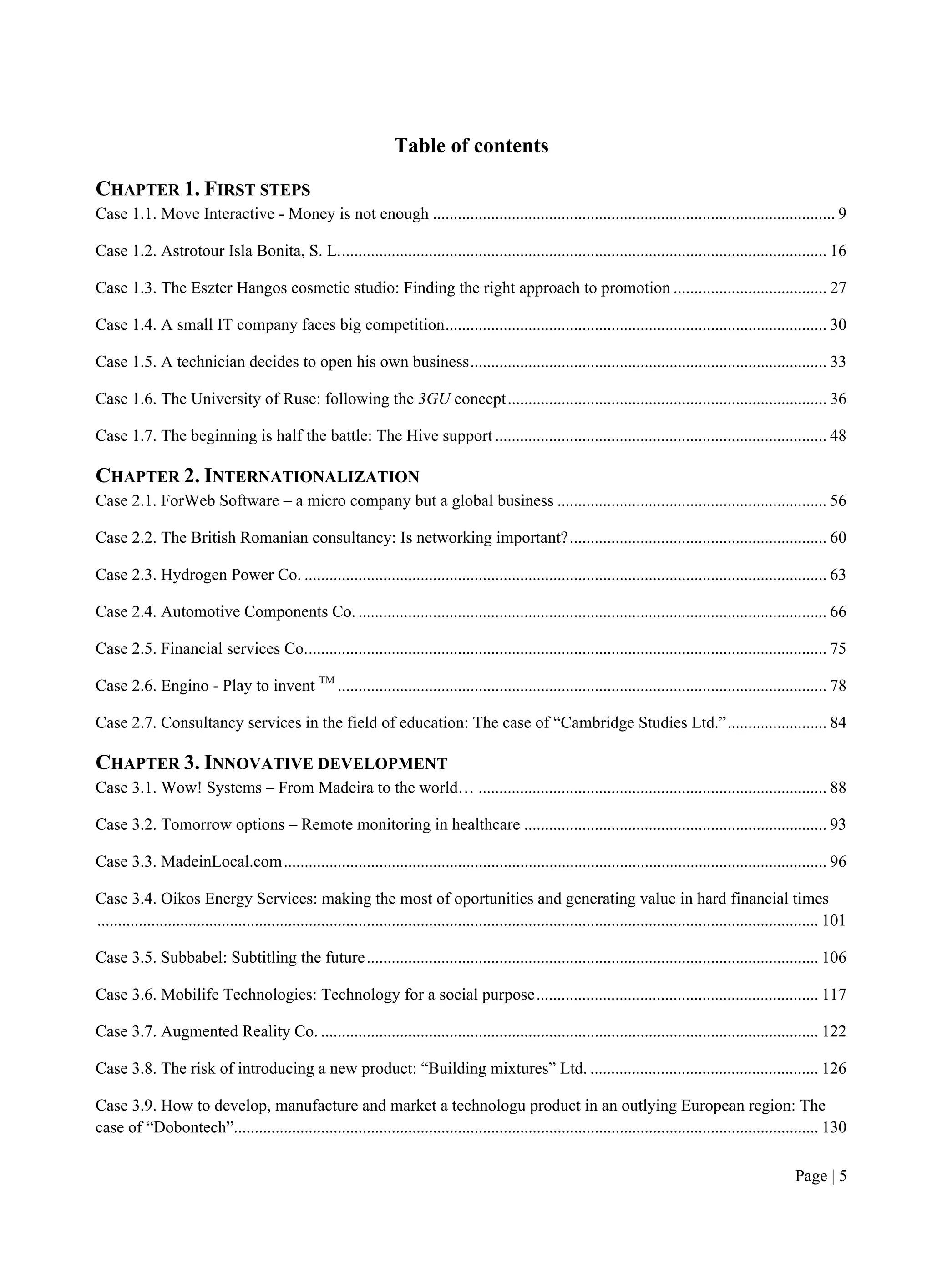
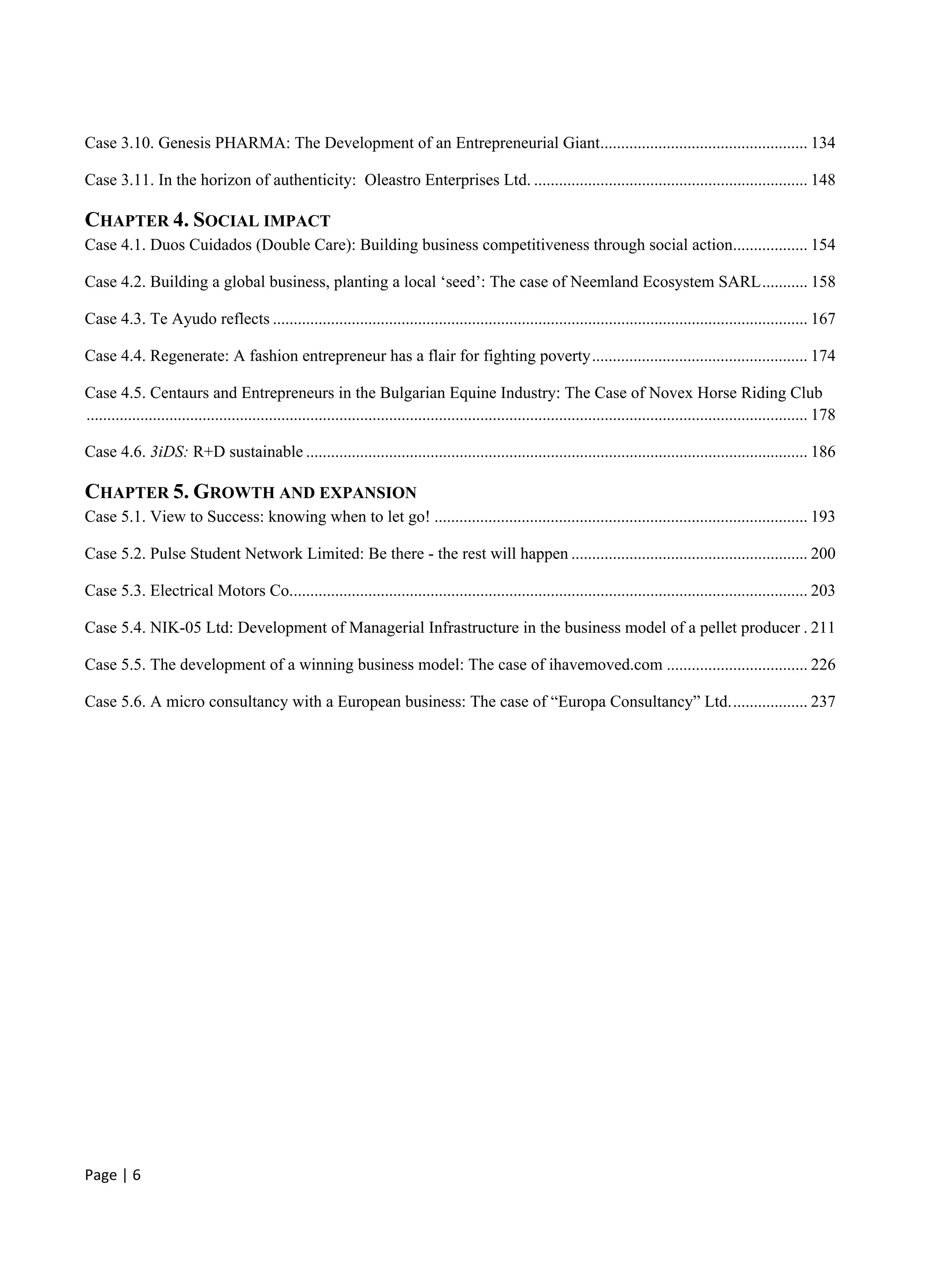
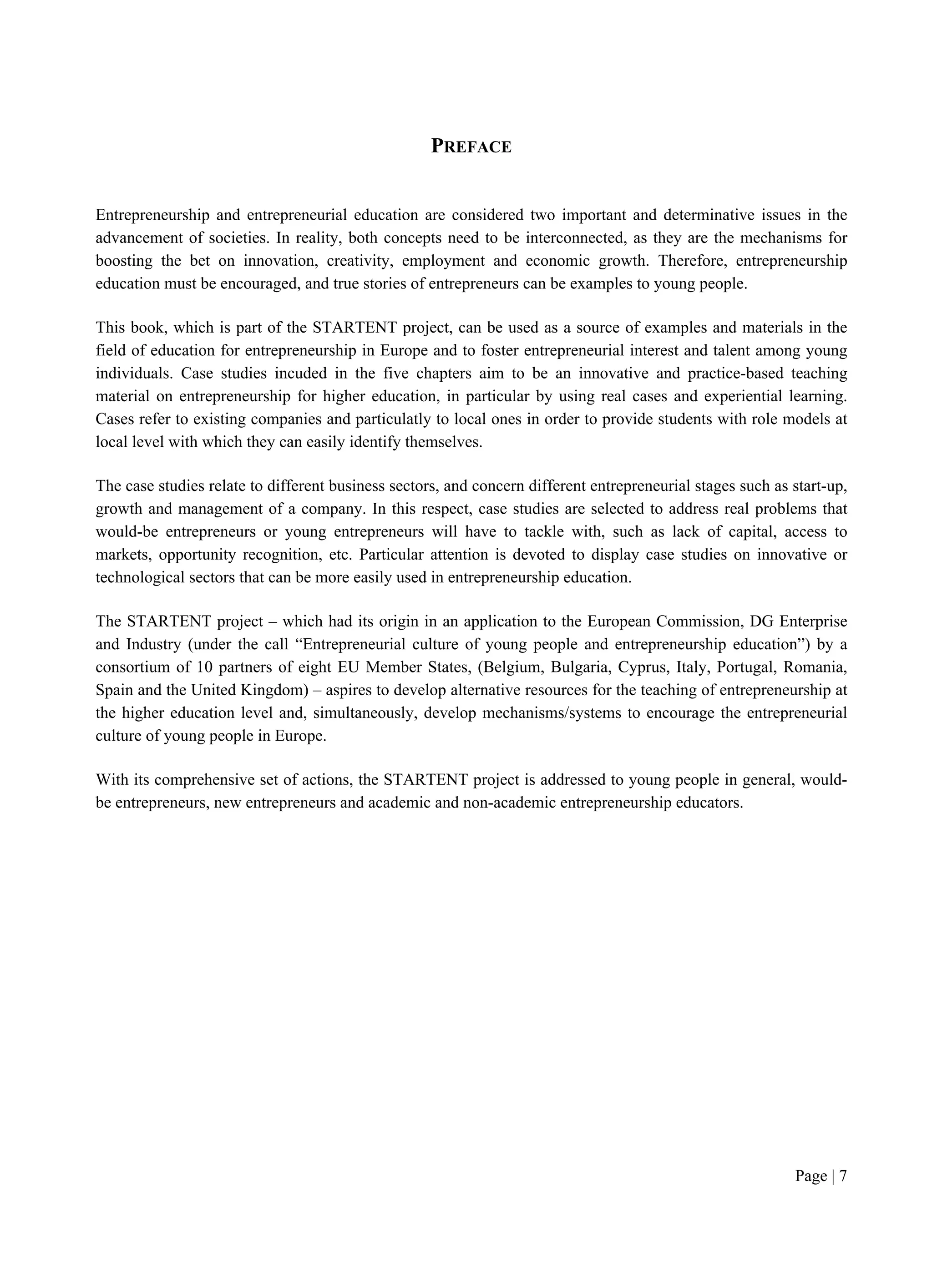
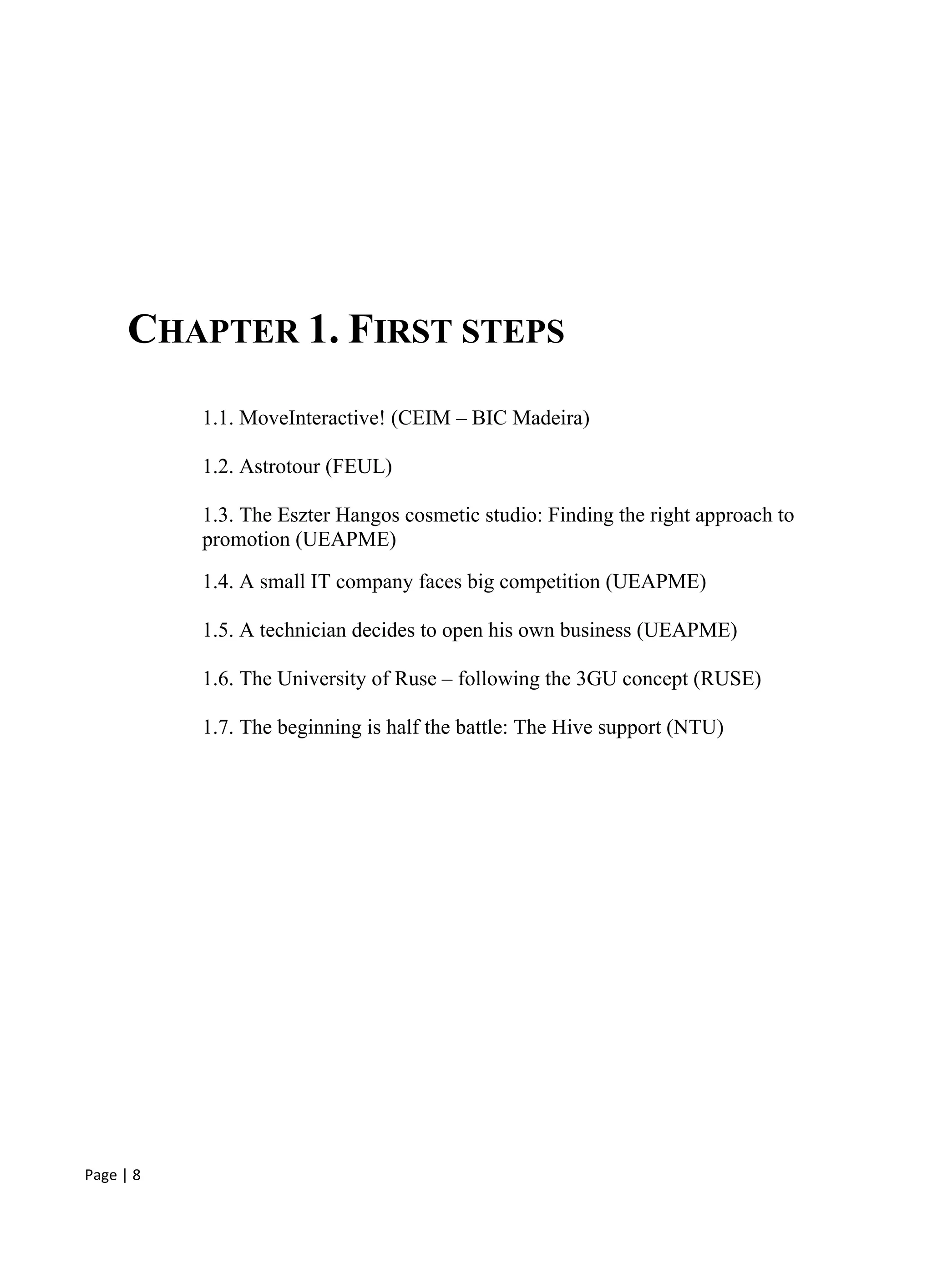
![Page | 9
Case 1.1. Move Interactive - Money is not enough
Sandy Nascimento, CEIM – BIC Madeira
Abstract – Rogério Varela was a teenager when he started to modify videogames and distribute them on the
Internet. This ‘hobby’ brought recognition for his skills and he began to be talked about by people in the
videogames world. It was just the first step to building a business. Rogério and his brother Roberto, who had
management and multimedia knowledge, got together and decided to create a new videogame, called Ugo Volt.
and their own business- MoveInteractive.
Keywords – technology, venture capital, investments, financial support, videogame industry, entrepreneurship
Background of the firm/Business idea
“My brother [Rogério Varela] is self-taught. When he was 17 years old, he began to modify videogames that
already existed in the market and put them on the Internet. Later, his Tomb Raider adaptations were among the
world’s top downloads. That’s how we came up with the idea to create Ugo Volt, a videogame about Lisbon in
the year 2055, in conditions of global warming,” explains Roberto Varela, MoveInteractive’s CEO.
Roberto and Rogério Varela are two Portuguese brothers with entrepreneur spirit. Because of Rogerio’s ideas
and skill in modifying existing videogames, by changing the characters and, scenarios, adding new chapters, etc.,
the two brothers decided to create a new videogame and, therefore, start their own business. So, in 2001
MoveIntercative was created (initially under the name GraficWeb) with the main objective of producing
videogames for international markets.
MoveInteractive´s first idea was the production of the game Ugo Volt (also known by its original title ‘Flow –
Prospects of Mayhem’) an action/adventure videogame for personal computers and consoles, in which Ugo Volt
is the main character.
Figure 1– Ugo Volt, the main character of the videogame ’Flow – Prospects of Mayhem’](https://image.slidesharecdn.com/casestudiesbookb5tosent11-151109112812-lva1-app6891/75/Case-studies-book_b5_to_sent_1_1-11-2048.jpg)
![Page | 10
In the early days, MoveInteractive had only limited financial resources (Roberto and Rogério had to seek
financial help from their family to start the business) and so the business depended on the dedication of its
founders.
A year later, MoveInteractive won the Madeira Business Innovation Award, promoted by CEIM/BIC Madeira
(Business Innovation Centre Madeira)1
, which gave them the opportunity to open an office in BIC Madeira’s
incubator and to enjoy a package of services that helped them when things were difficult at the beginning.
The promoters, Roberto and Rogério, also applied for SIPPE-RAM (an EU grant for SMEs managed by the
Madeira Regional Government), that was available at that time on Madeira Island and which gave them the
possibility to get €142,000.
As the creation of a videogame always demands the usage of the most innovative technology, Roberto and
Rogério decided to use this money to acquire new technology, like the ‘Gypsy Motion Capture System’. Until
then, videogame development was done through algorithms, which made production slower. However, the new
system made production faster and more precise, because it allowed real movement to be captured, which
enriched the videogame.
So, with this new acquisition, MoveInteractive was ready to produce a demo of their Ugo Volt project. With the
increase in work and responsibilities, Roberto realized that he should follow his brother and work full time for
the company. So he left his job in a training firm where he had financial security and stability. “I decided to take
this step because with so many things to do for the company [MoveInteractive] it just wasn’t sustainable
working for others. The decisive factor in this decision was the fact that the partner was my brother with whom I
have always had a lot of empathy. I believed in his potential.”
Over the next year the brothers worked hard and, in November 2003, Roberto and Rogério presented the demo at
the videogames producers and publishers fair - Game Connection (in Lyon, France). In searchof a business
opportunity, the brothers met with several publishers at the event. Although their reactions were quite positive
they were surprised that the technological platform used to produce the demo was already outdated. However,
Ugo Volt was a very ambitious project, with many special features and details, and the publishers remained
interested in the product. They asked for a second demo so they could see other features that weren’t included in
the first one.
The second demo
Ugo Volt had had some success with the publishers. Roberto and Rogério’s dream was becoming reality. Now
they just needed to produce the second demo asked for at the Lyon fair and show just how good their videogame
could be. So, despite their limited financial and human resources, the brothers made an extra effort to produce
the second demo.
While the demo was in production, the possibility arose for MoveInteractive to establish a partnership with
Dynamedion, a German music and sound effects producer well-known in the videogame industry. Dynamedion
decided to support the Ugo Volt demo for no profit, with their services being payed for only if MoveInteractive
succeeded in obtaining financial support from a videogame publisher.
When it was complete, the second demo was presented to the publishers who had received the first so well at the
fair. But this time, the reaction was different. Although the demo received positive feedback on its production
there was criticism of the technological platform used, which was still very outdated. Of course, human and
financial limitations meant that the demo had taken a long time to produce so the technological platform used
was no longer ‘cutting edge’.
1
CEIM/BIC Madeira (Business Innovation Centre Madeira) – established in 1997, BIC Madeira is an instrument for regional development to support
entrepreneurial innovative projects in Madeira Region (Portugal). – www.ceim.pt](https://image.slidesharecdn.com/casestudiesbookb5tosent11-151109112812-lva1-app6891/75/Case-studies-book_b5_to_sent_1_1-12-2048.jpg)
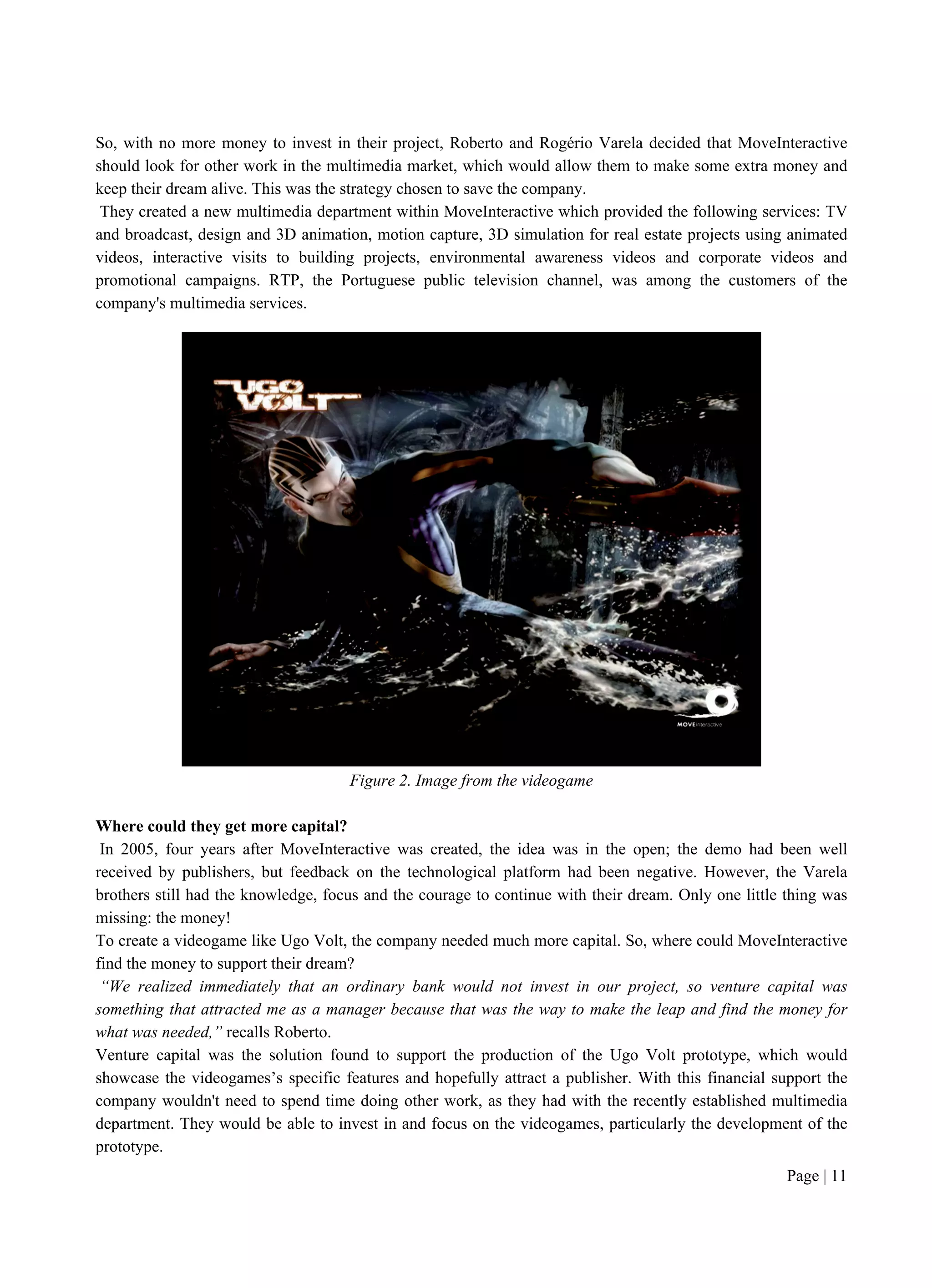

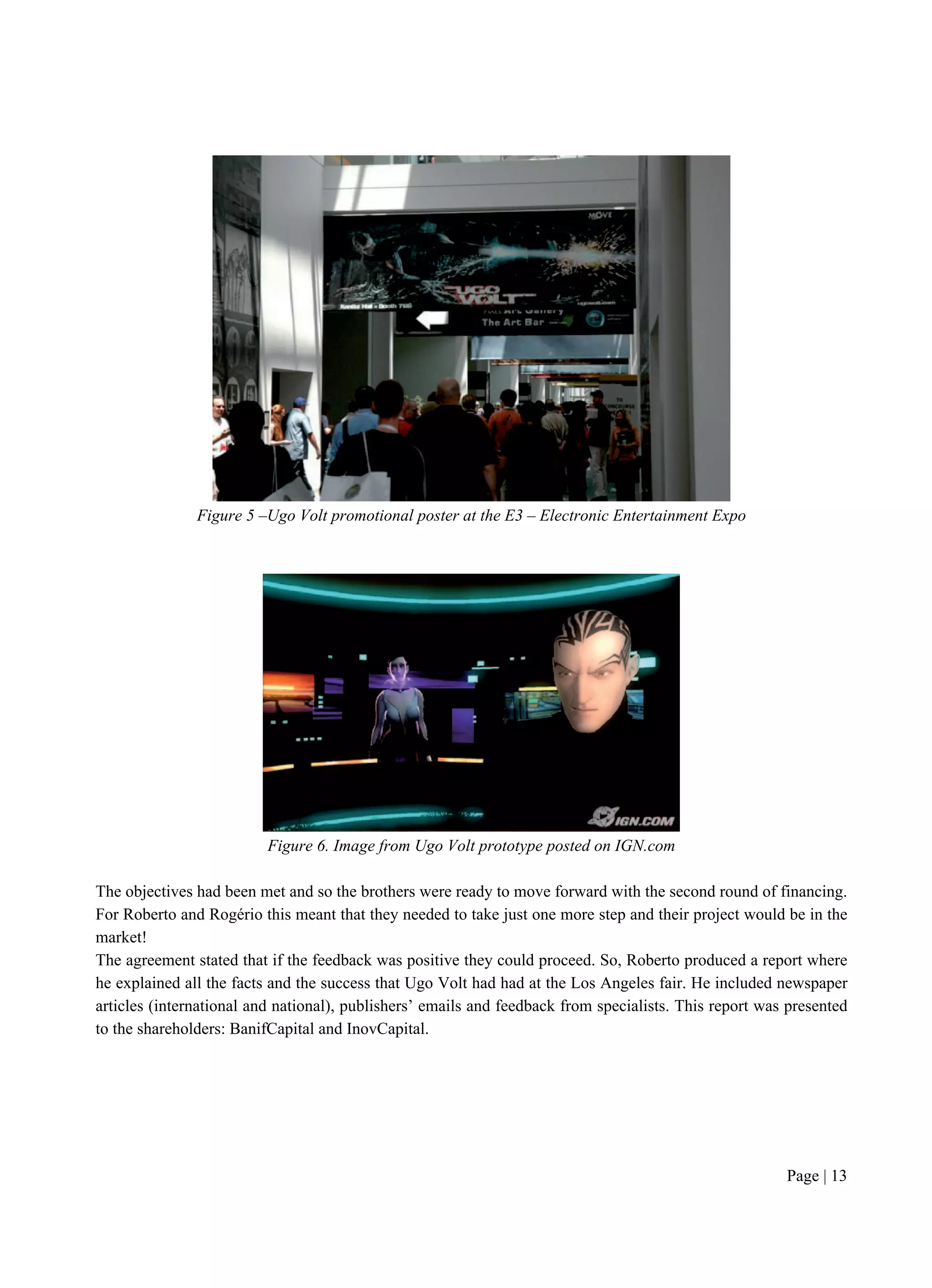
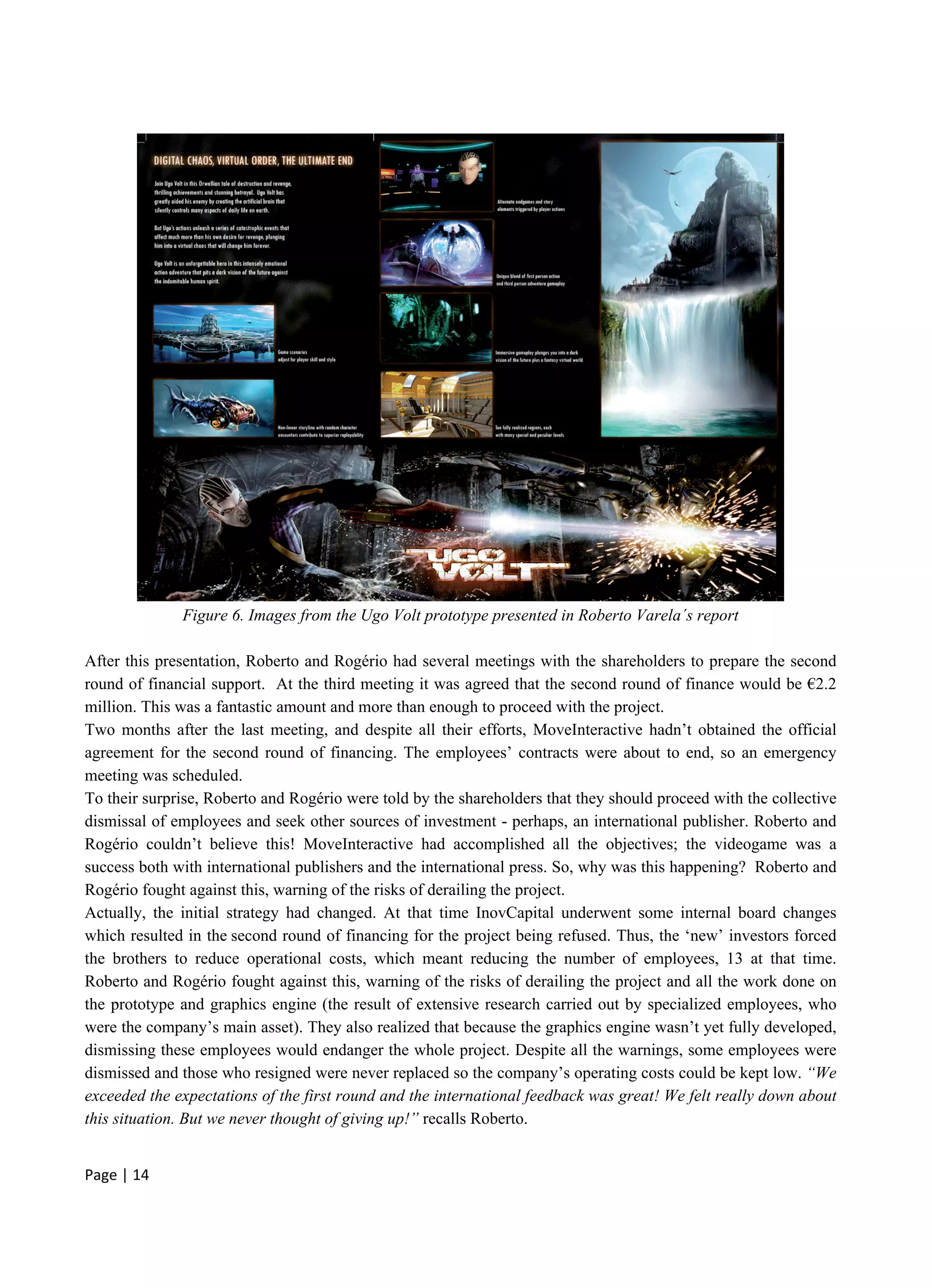

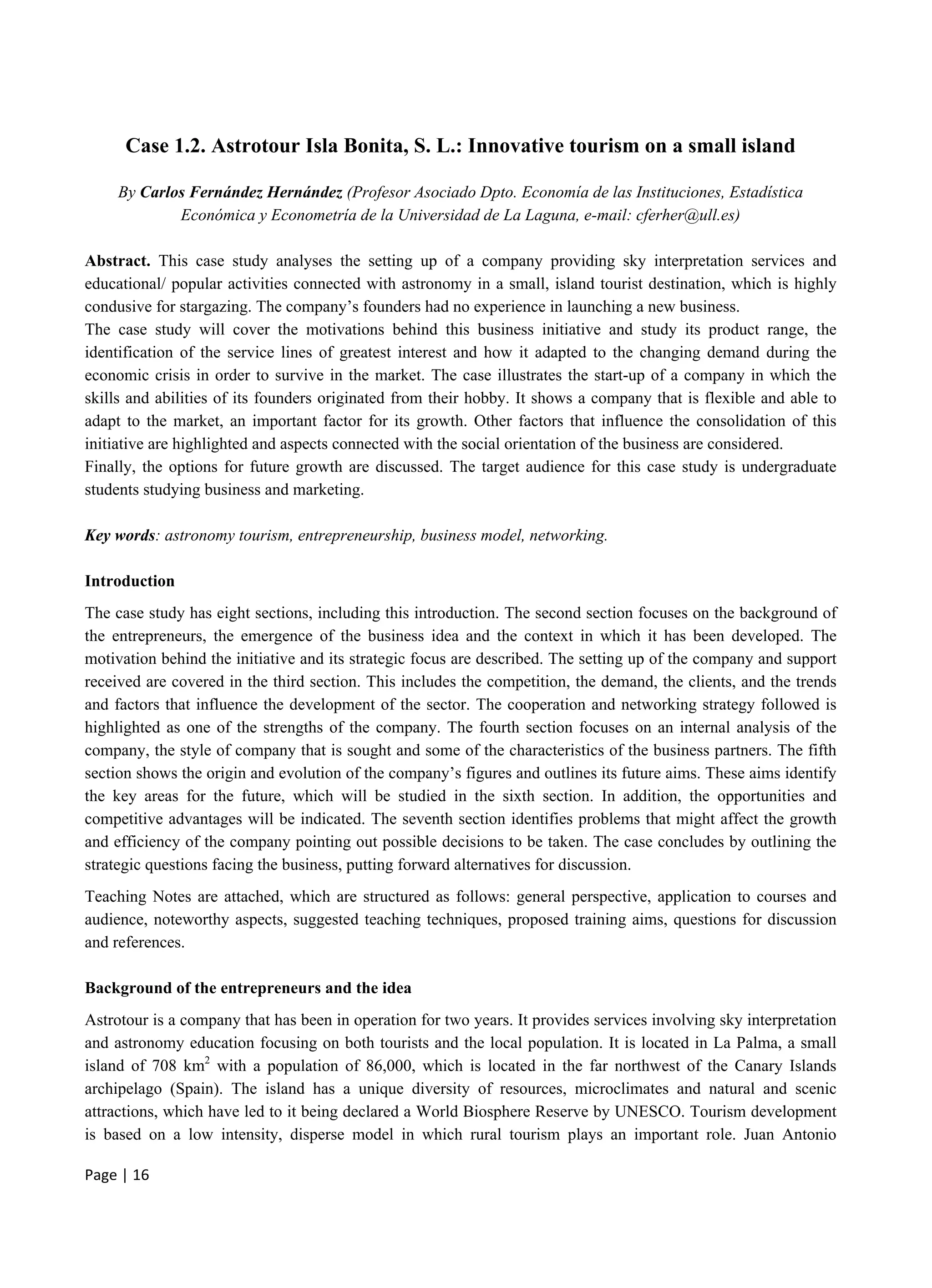
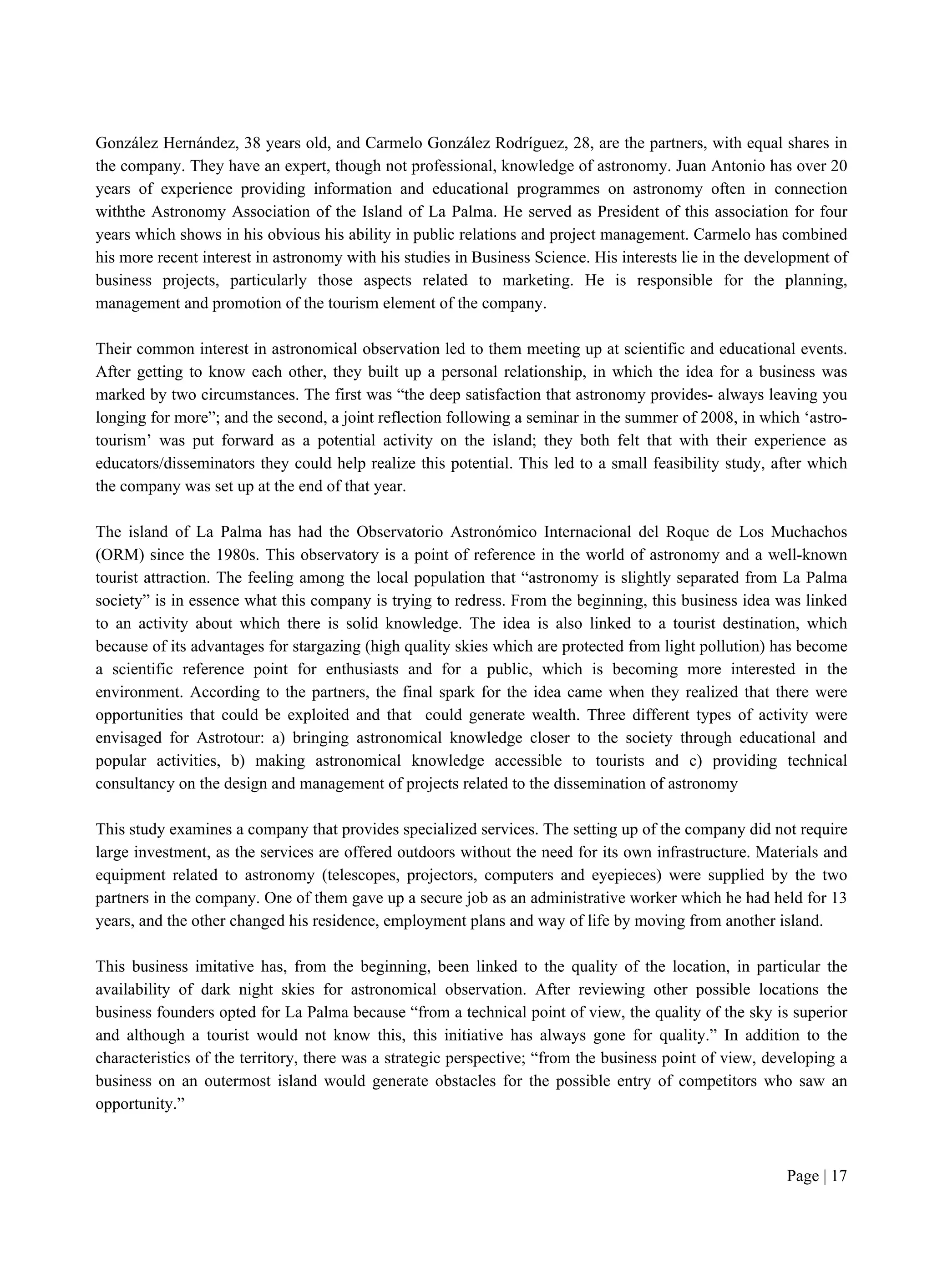



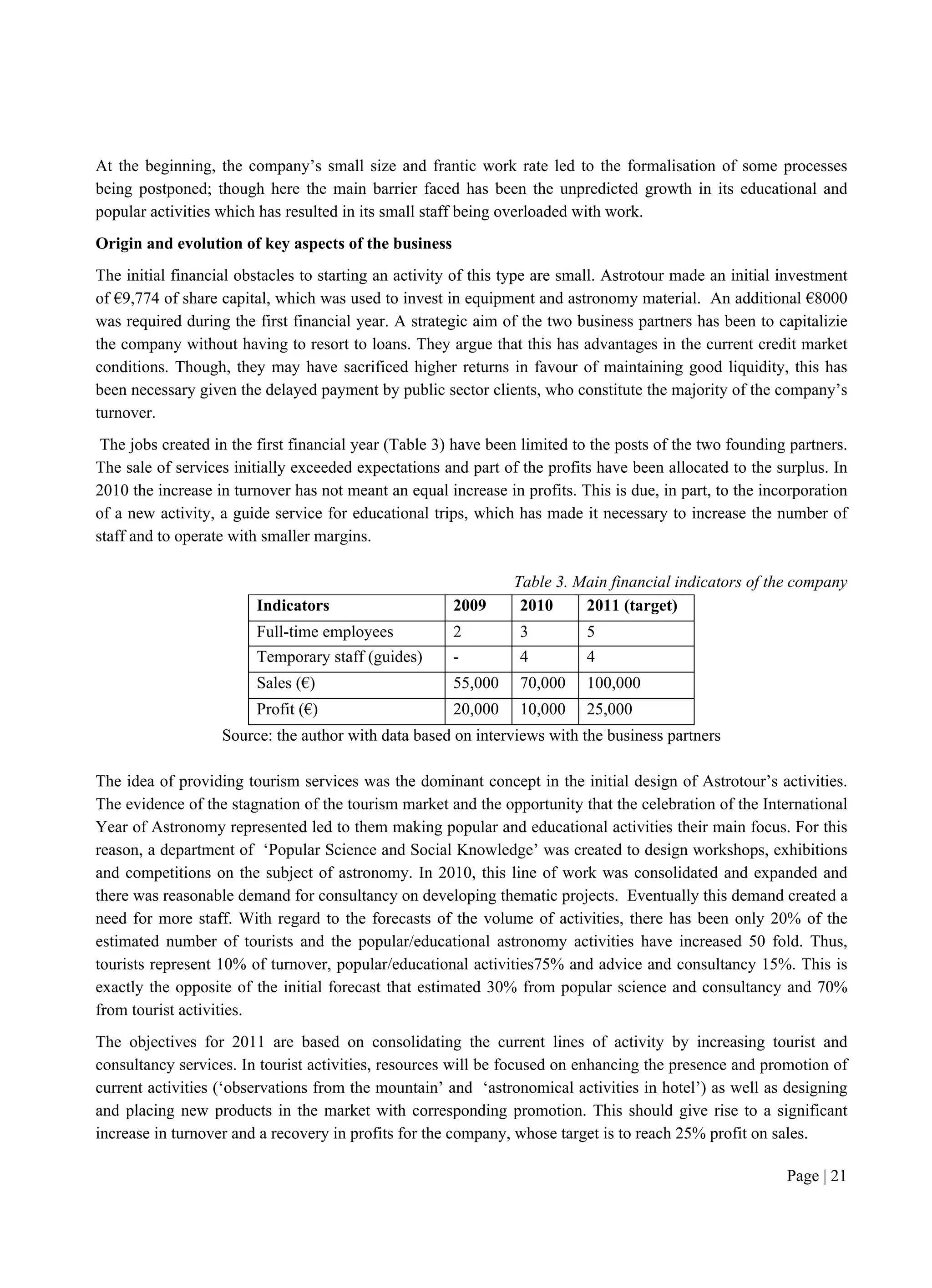
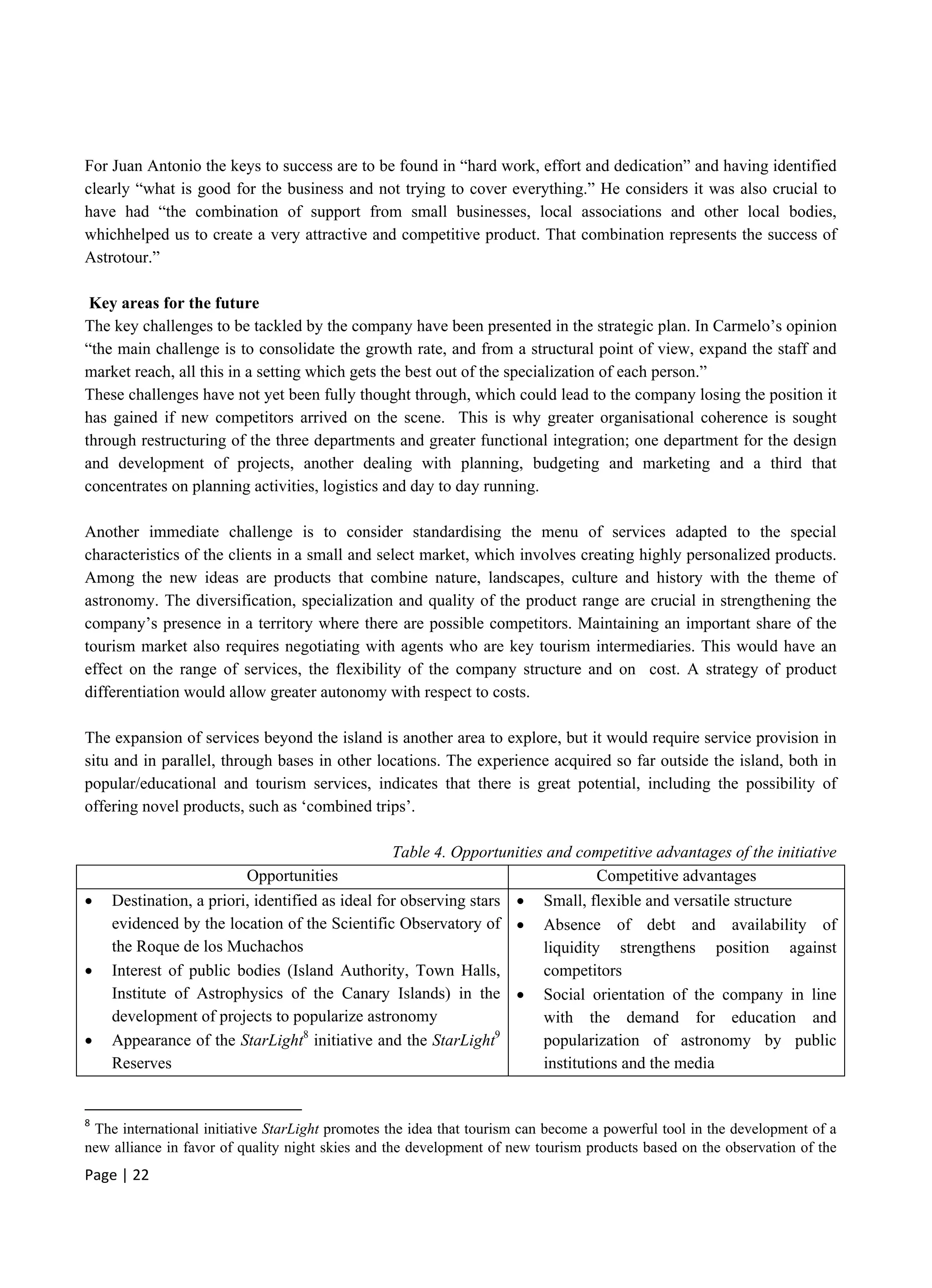
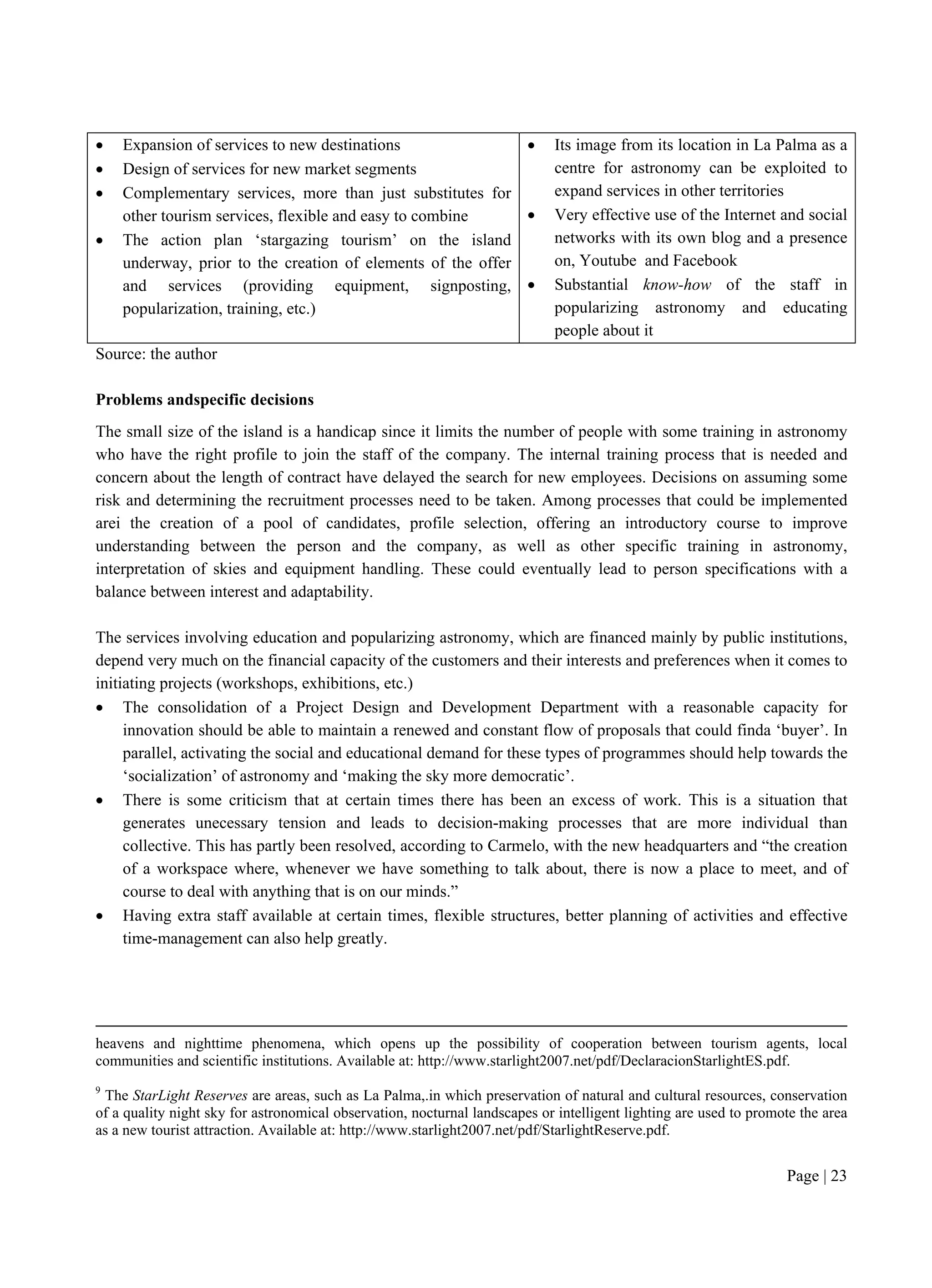
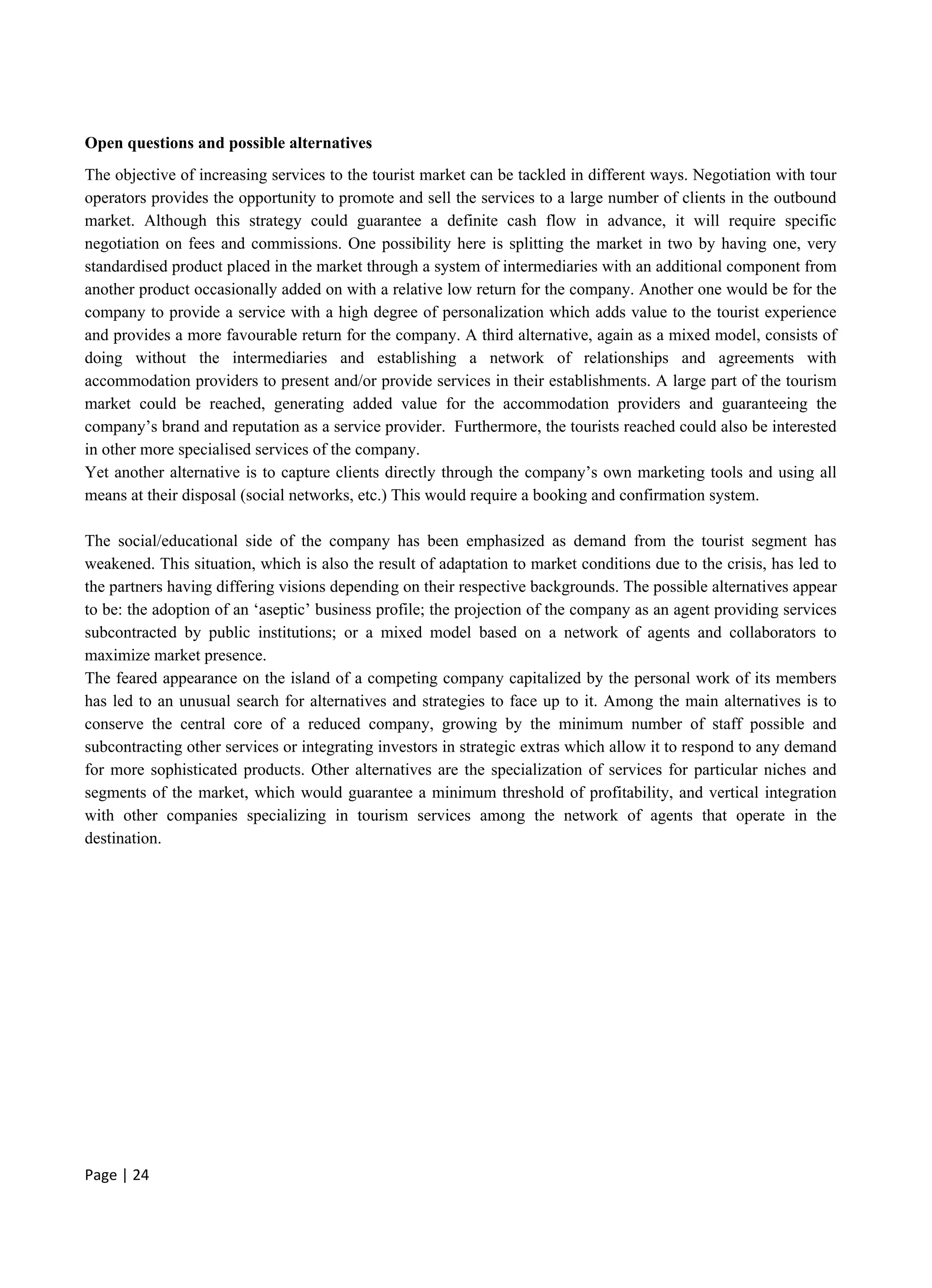

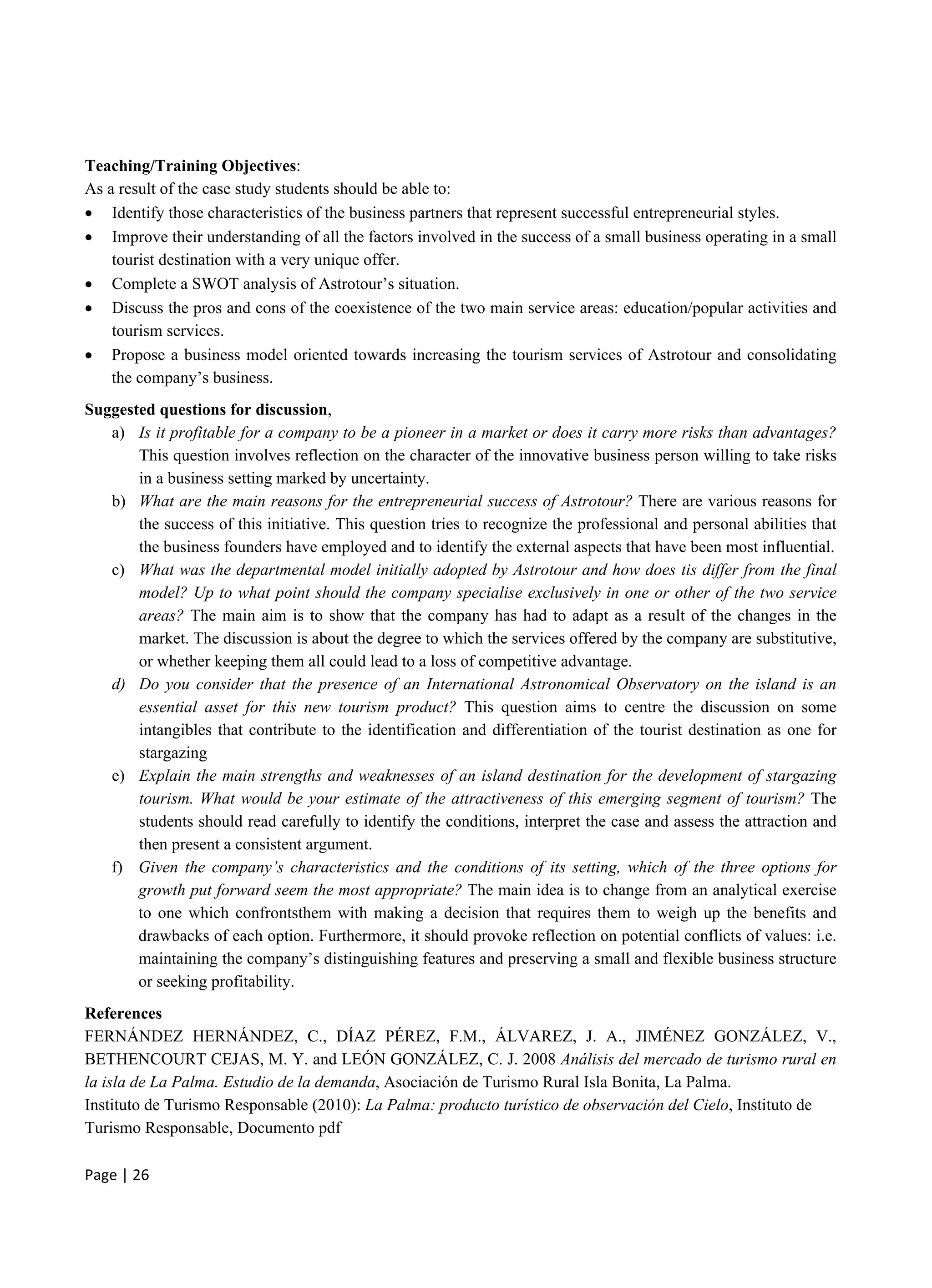

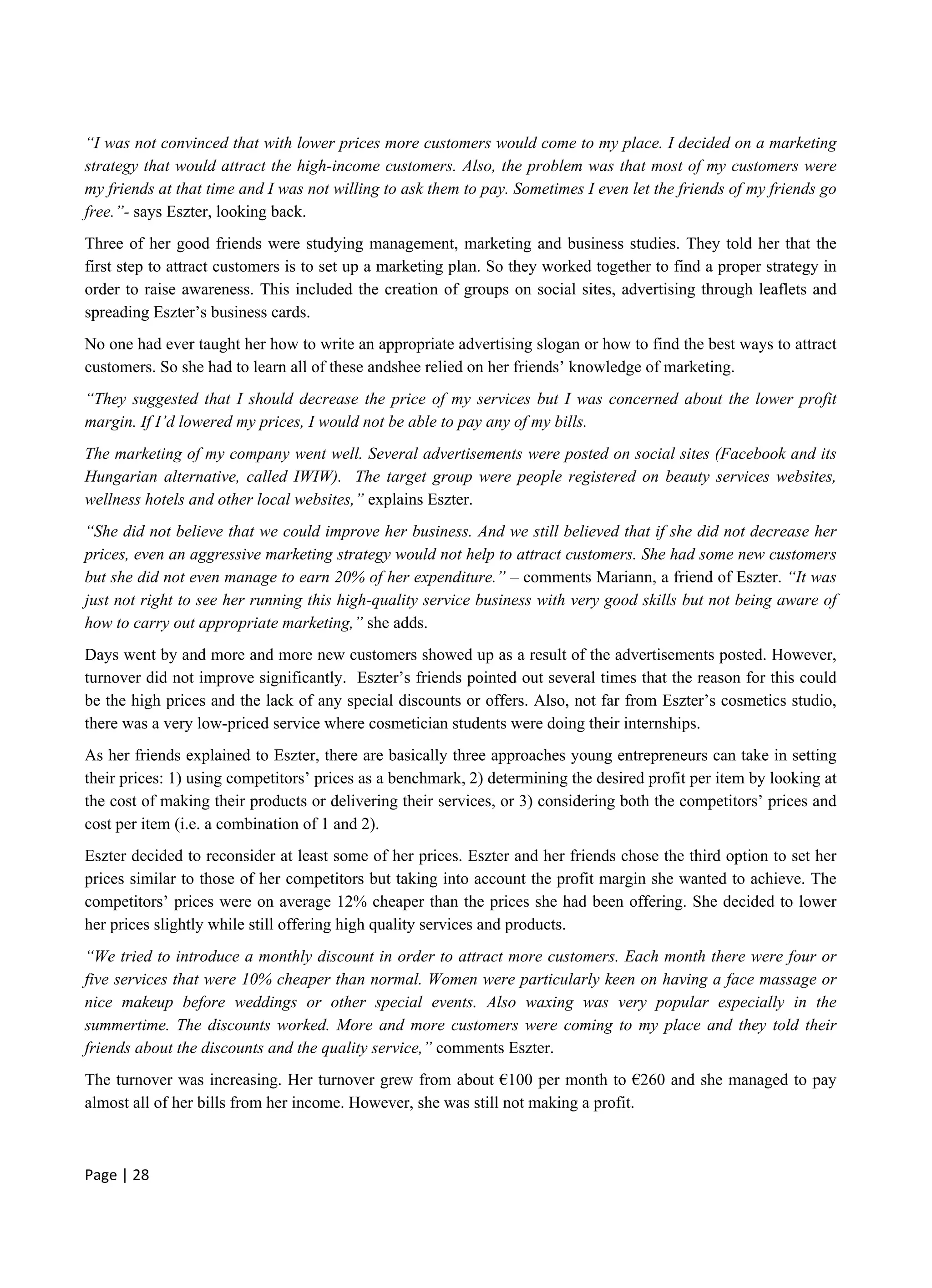
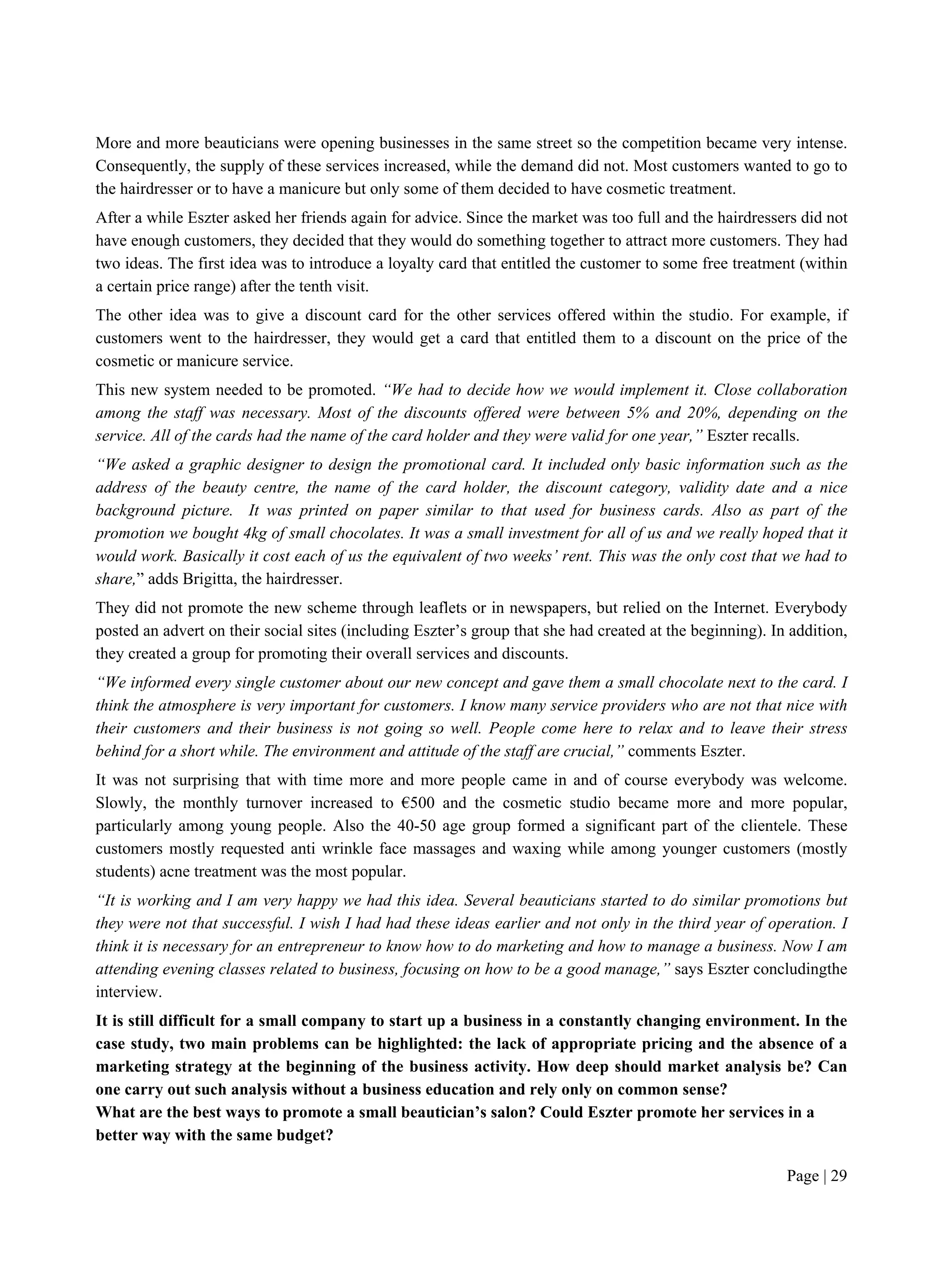

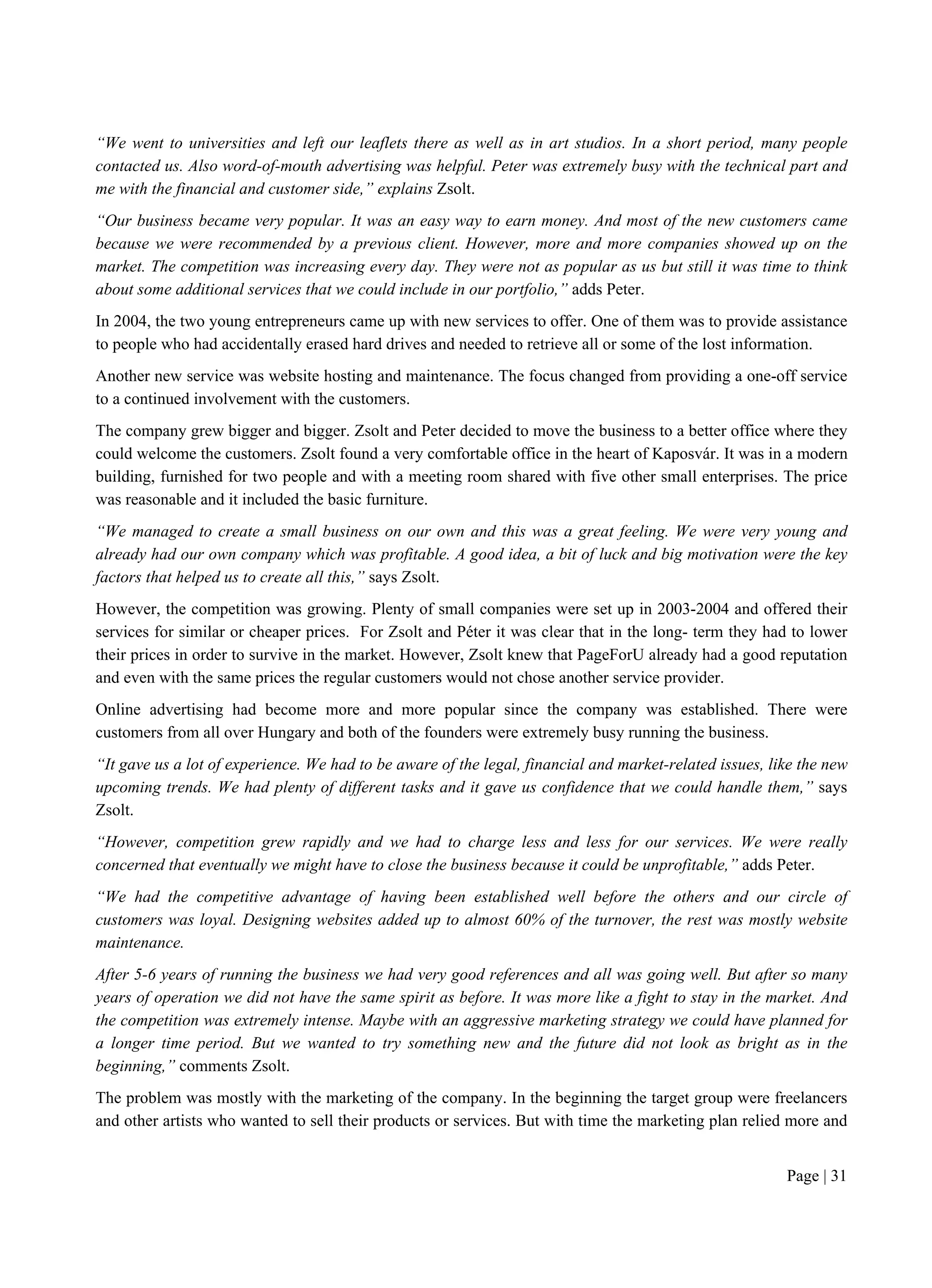
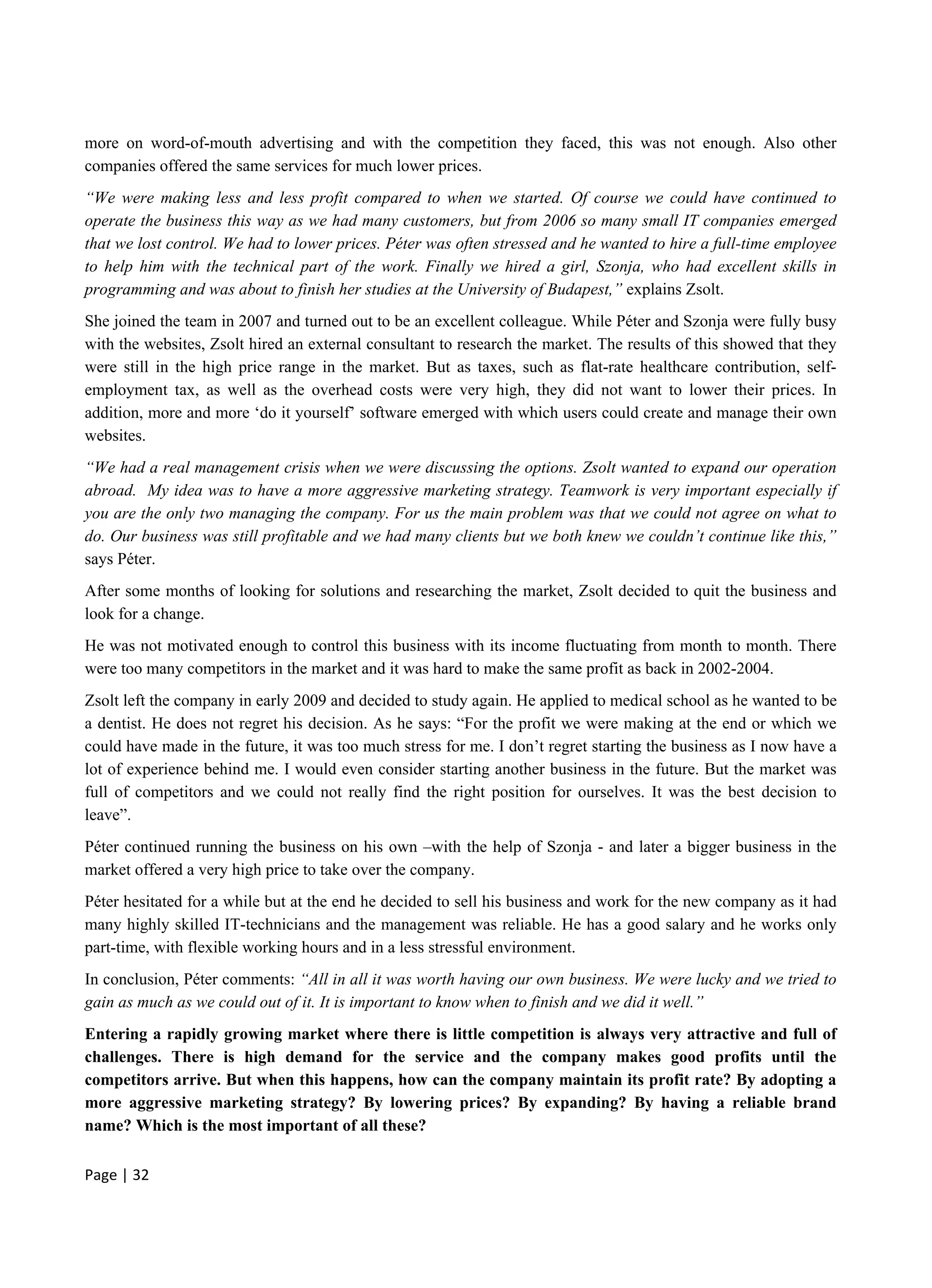
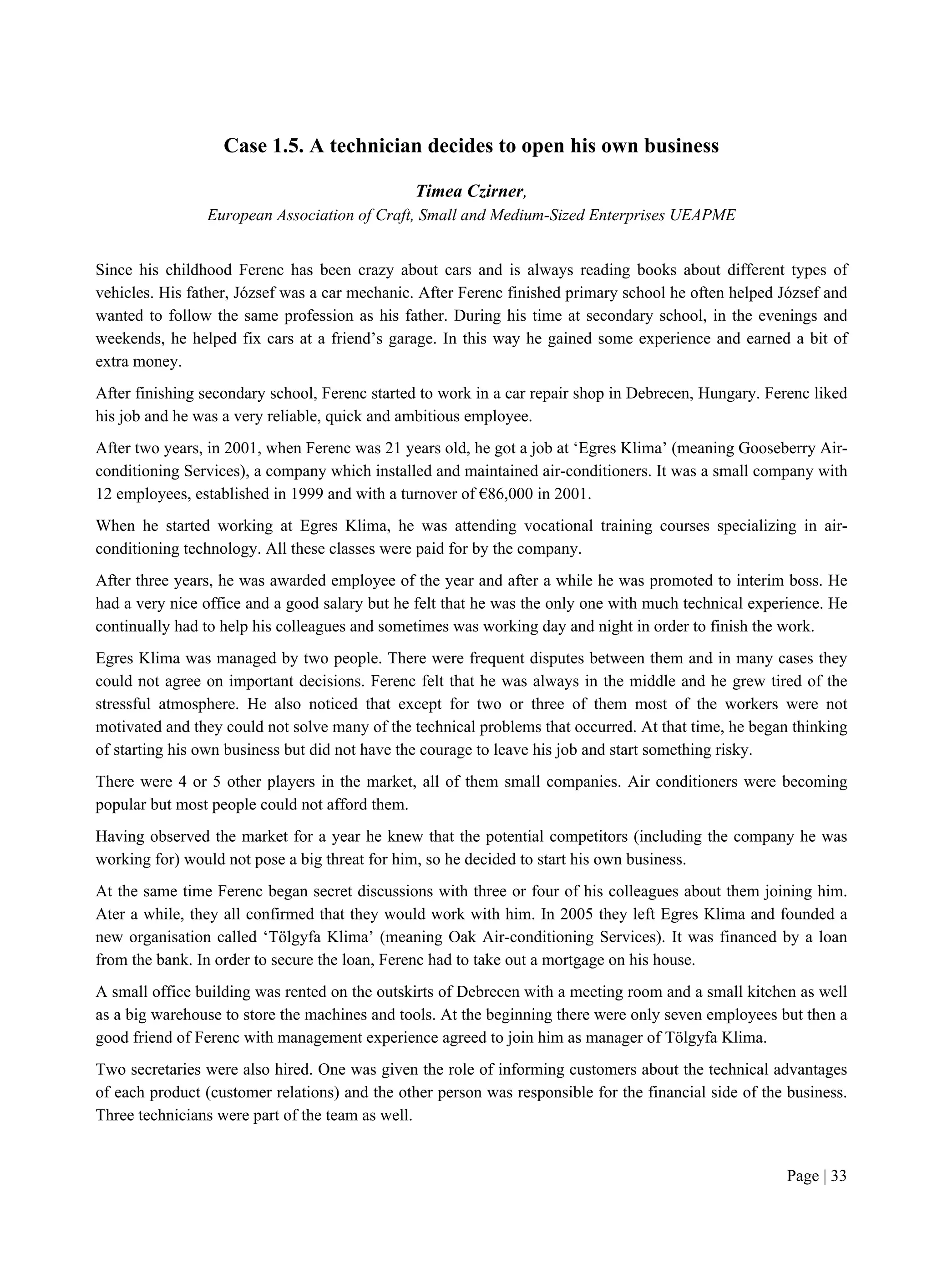
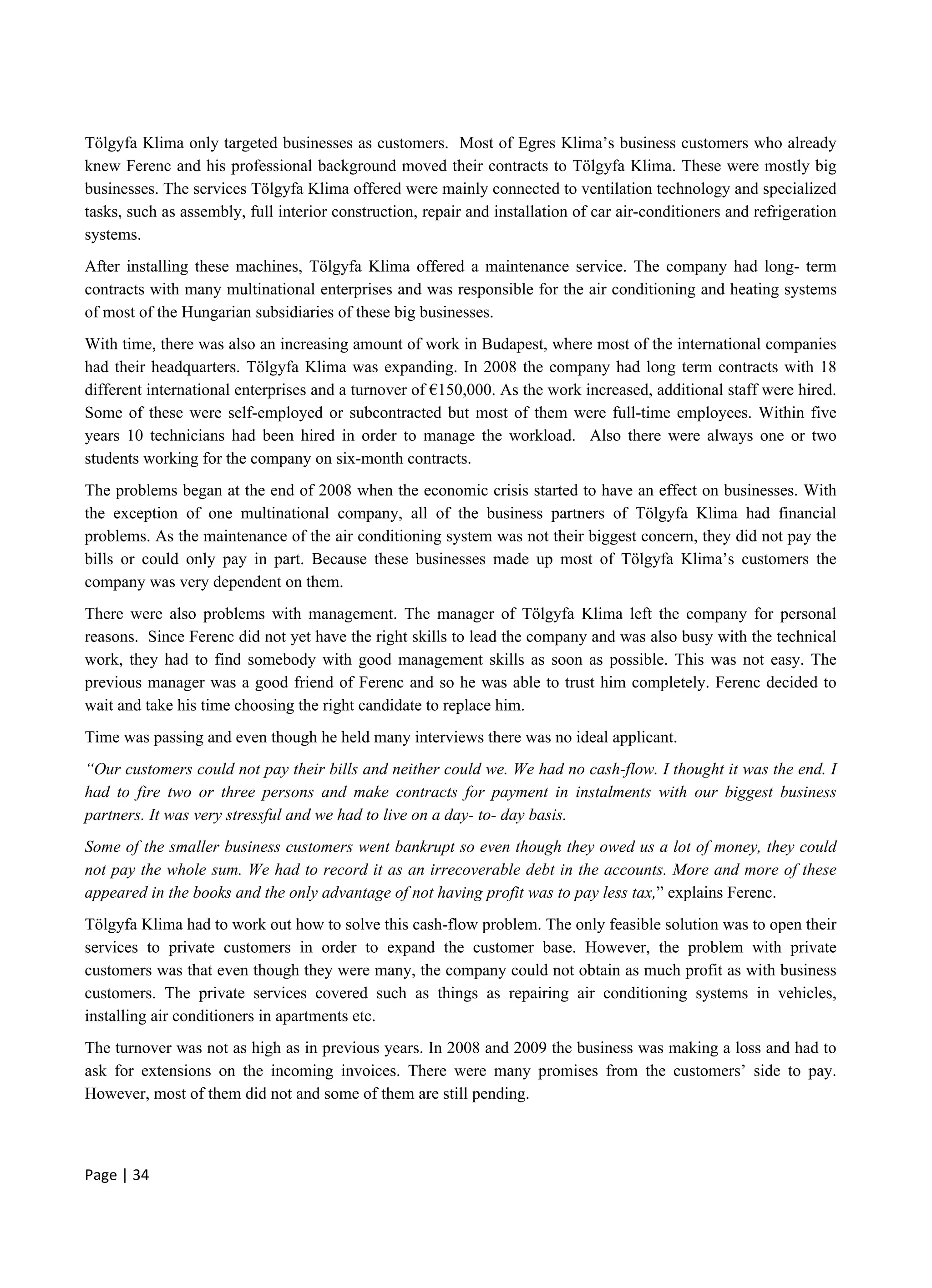
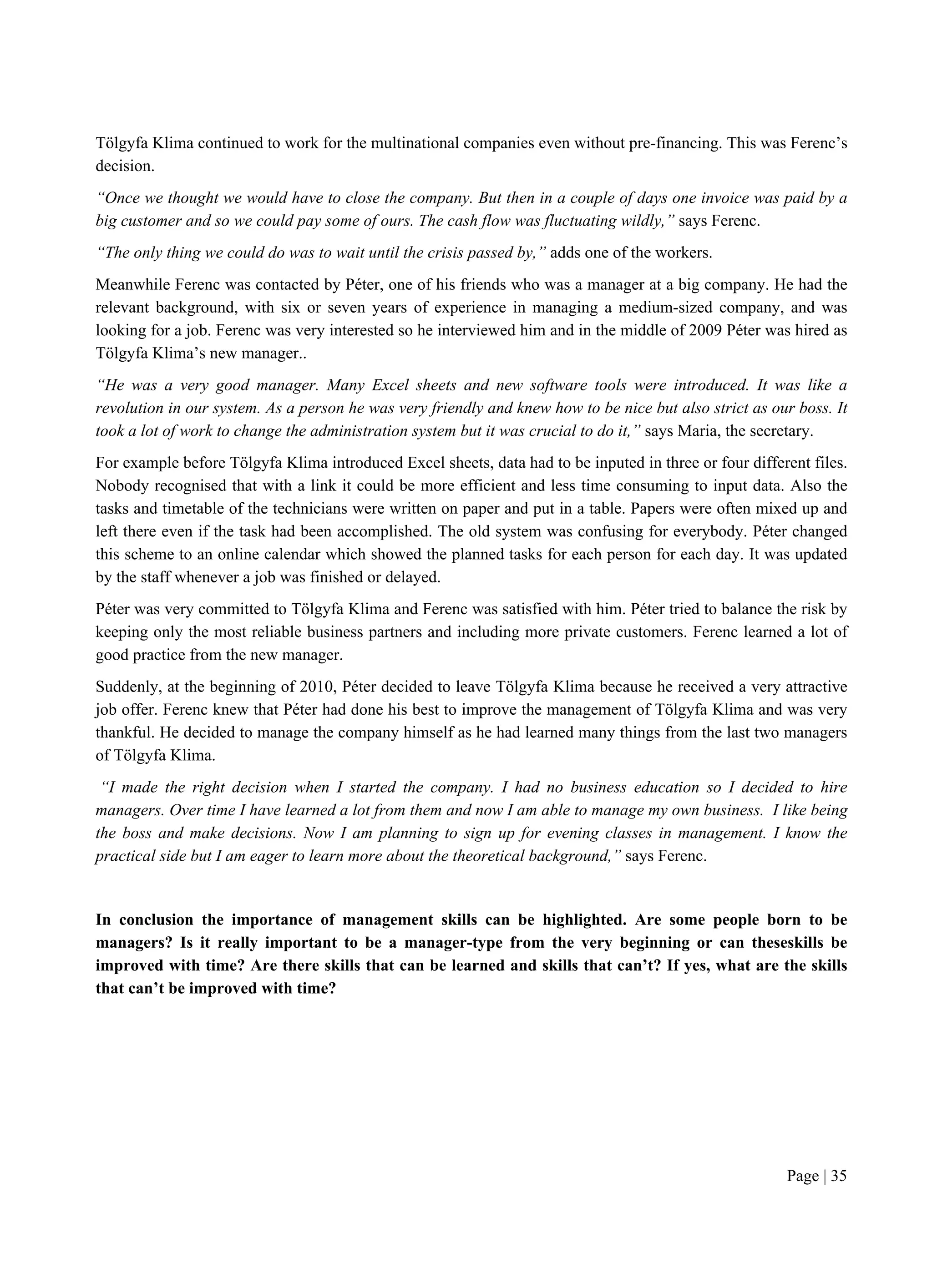
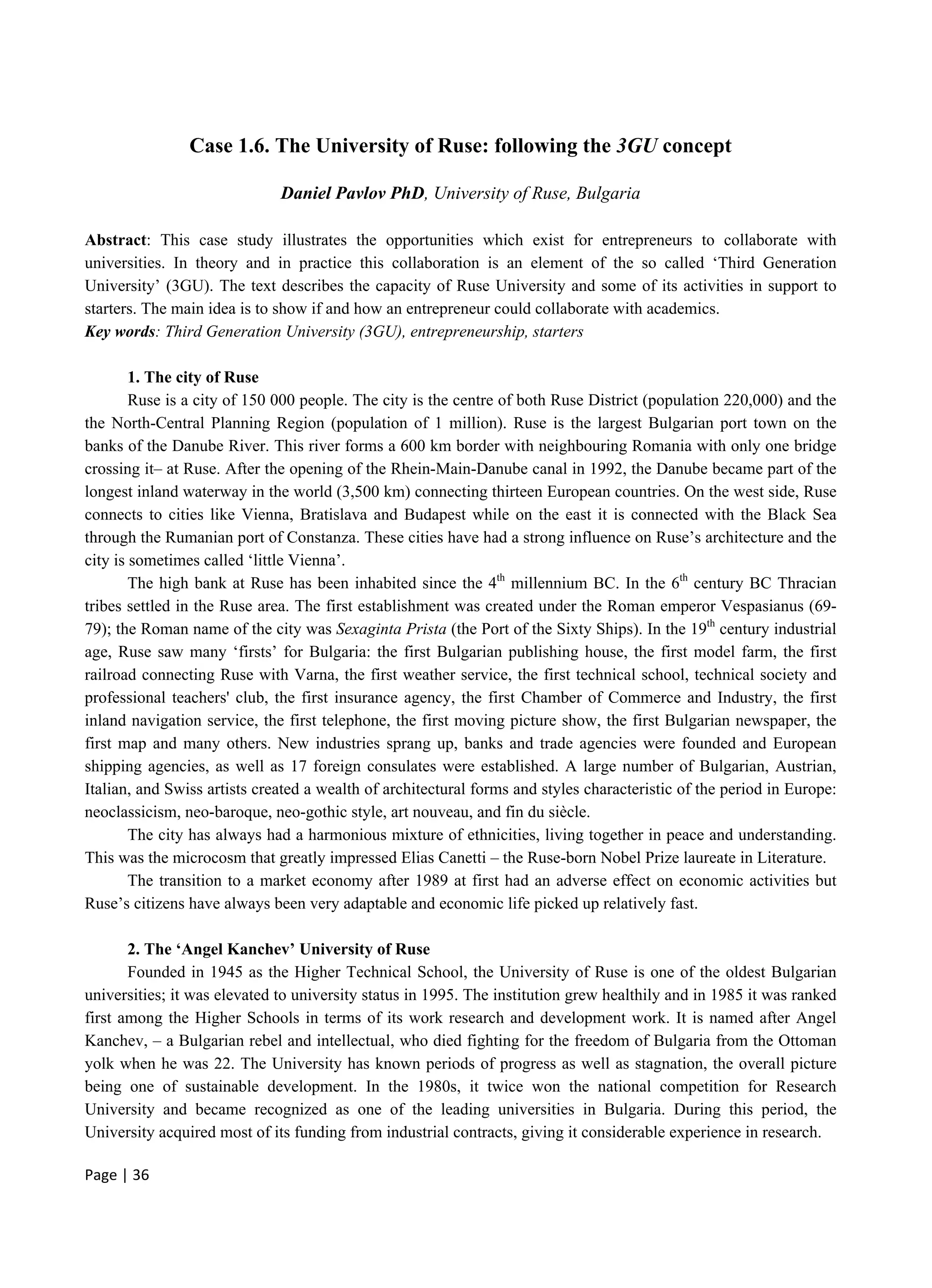
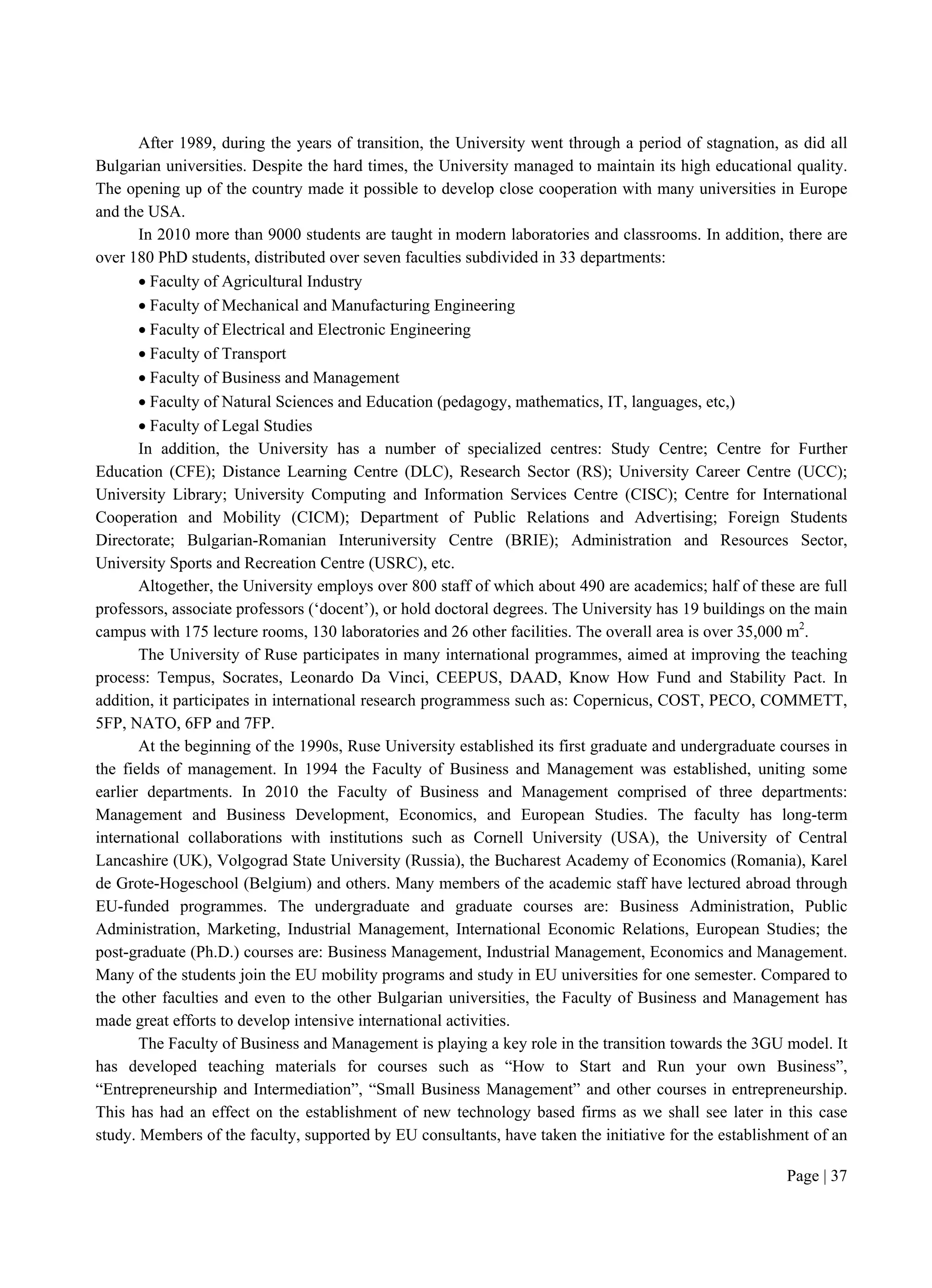



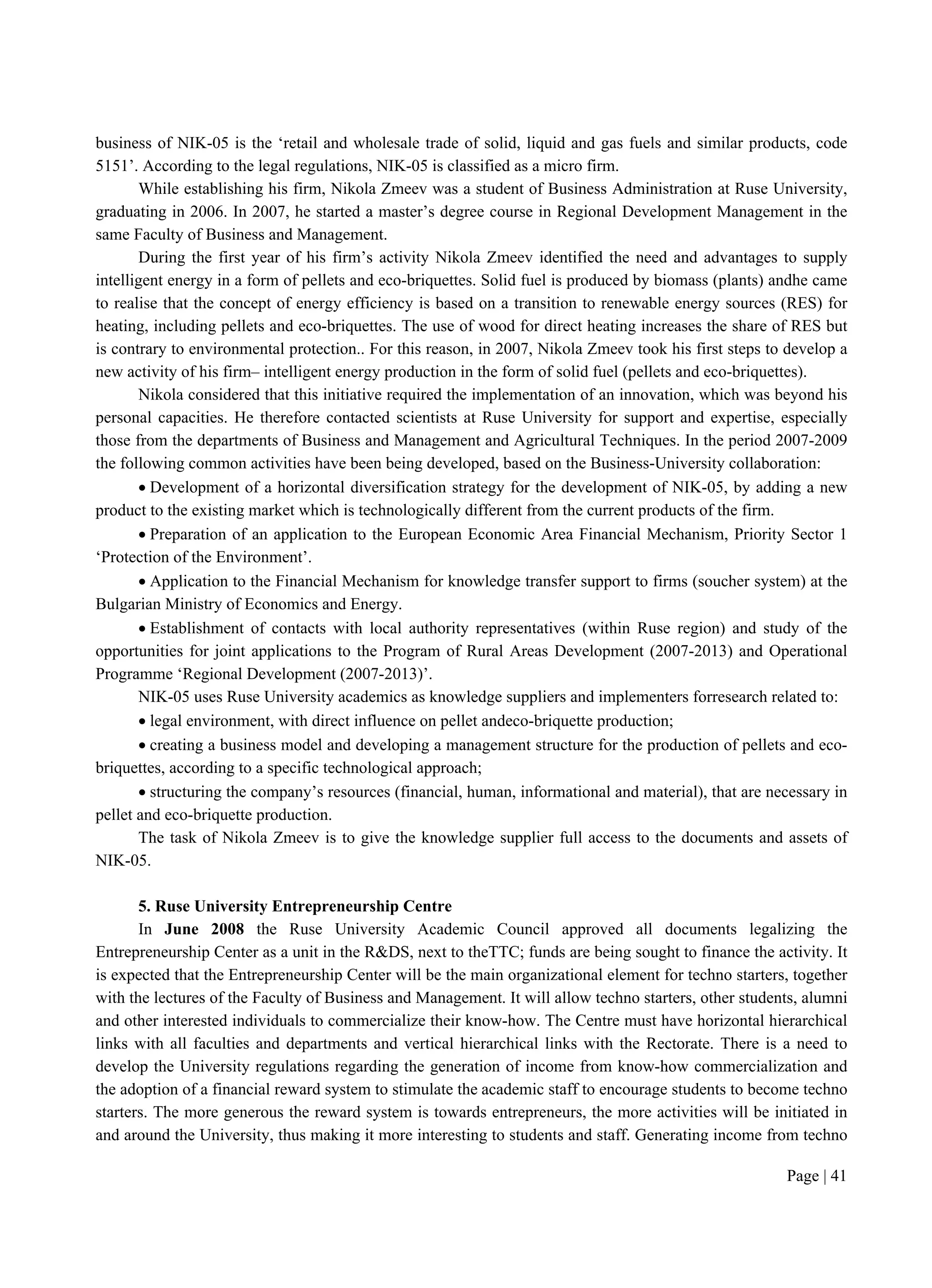
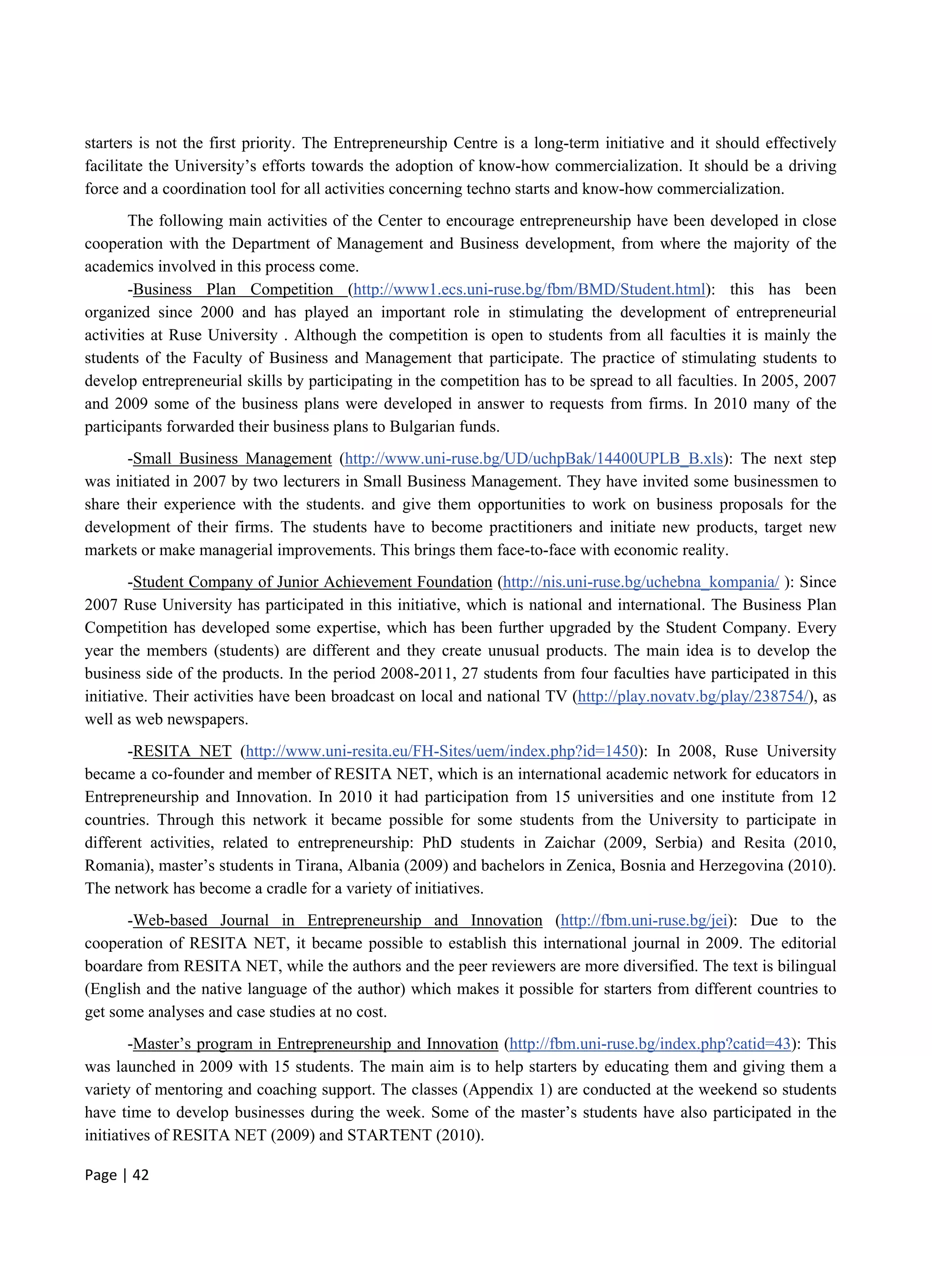
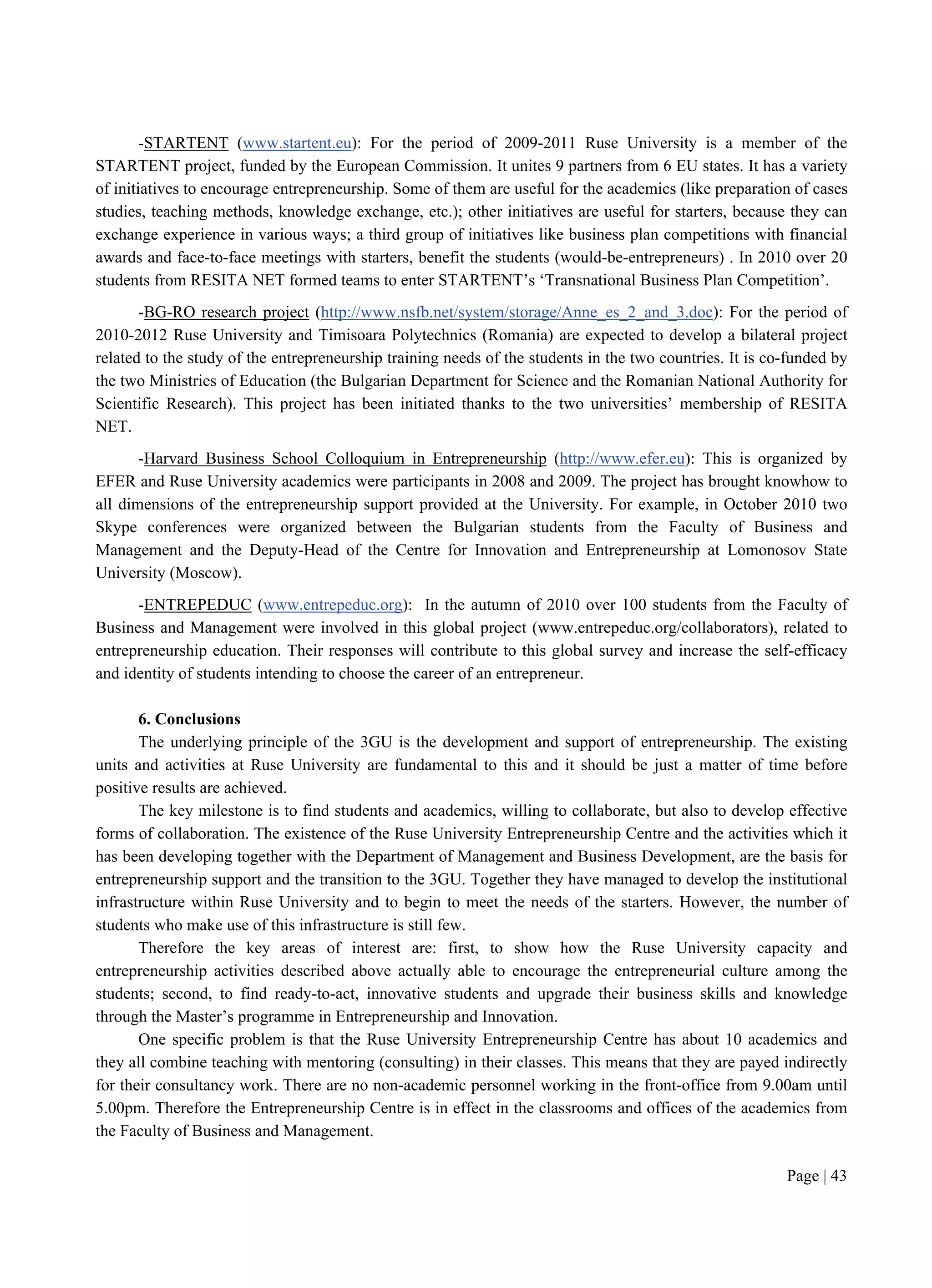
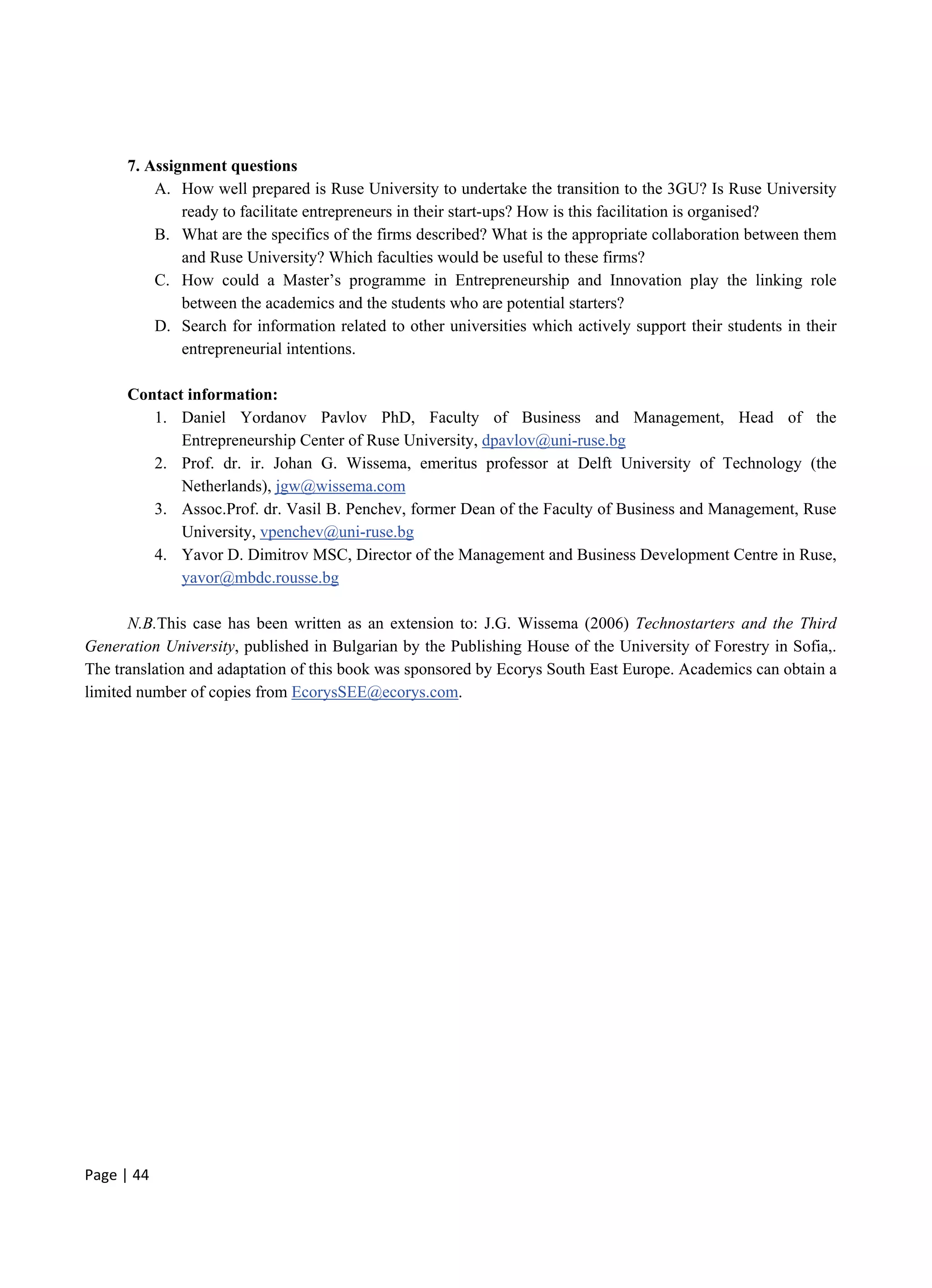
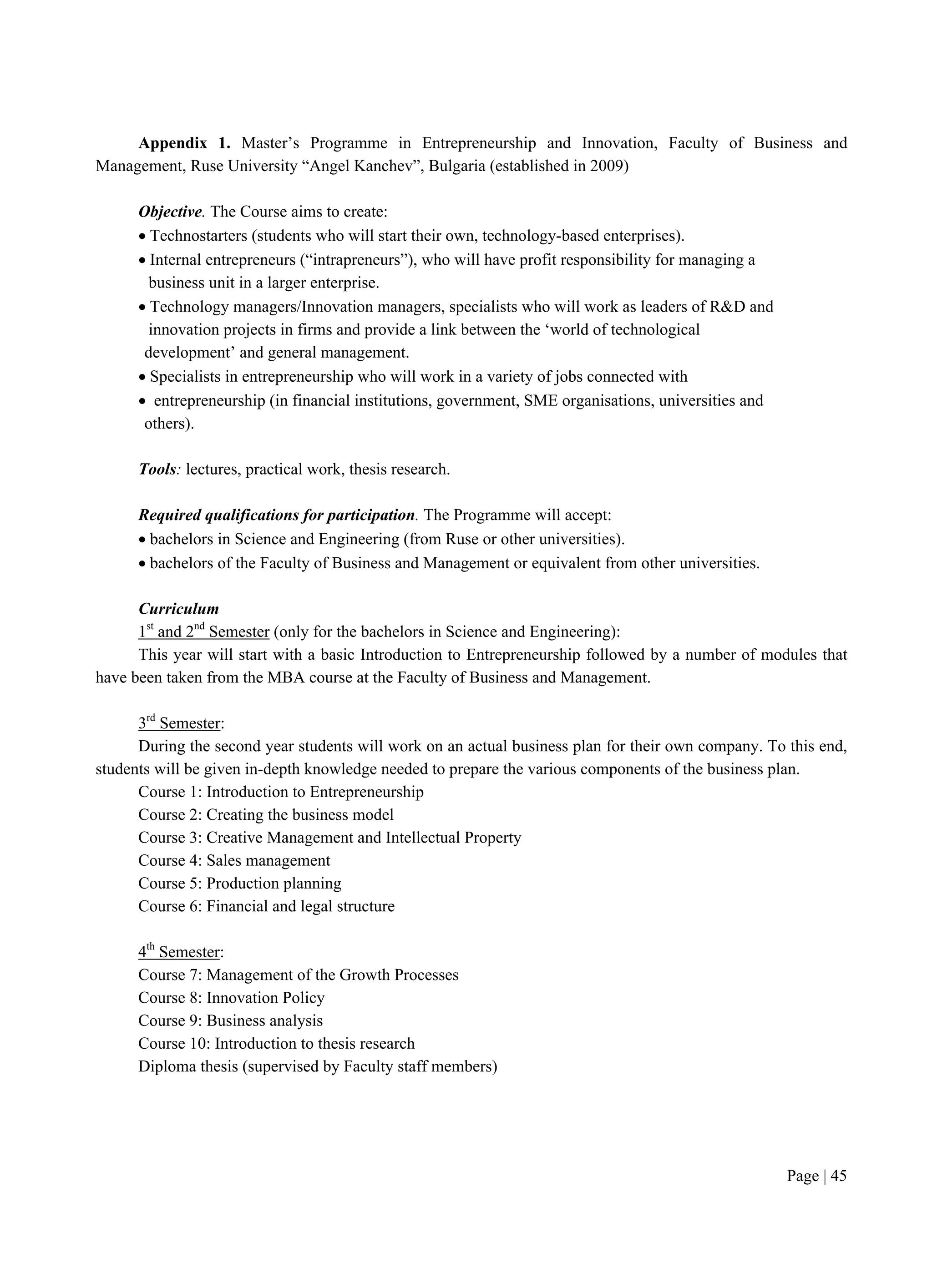
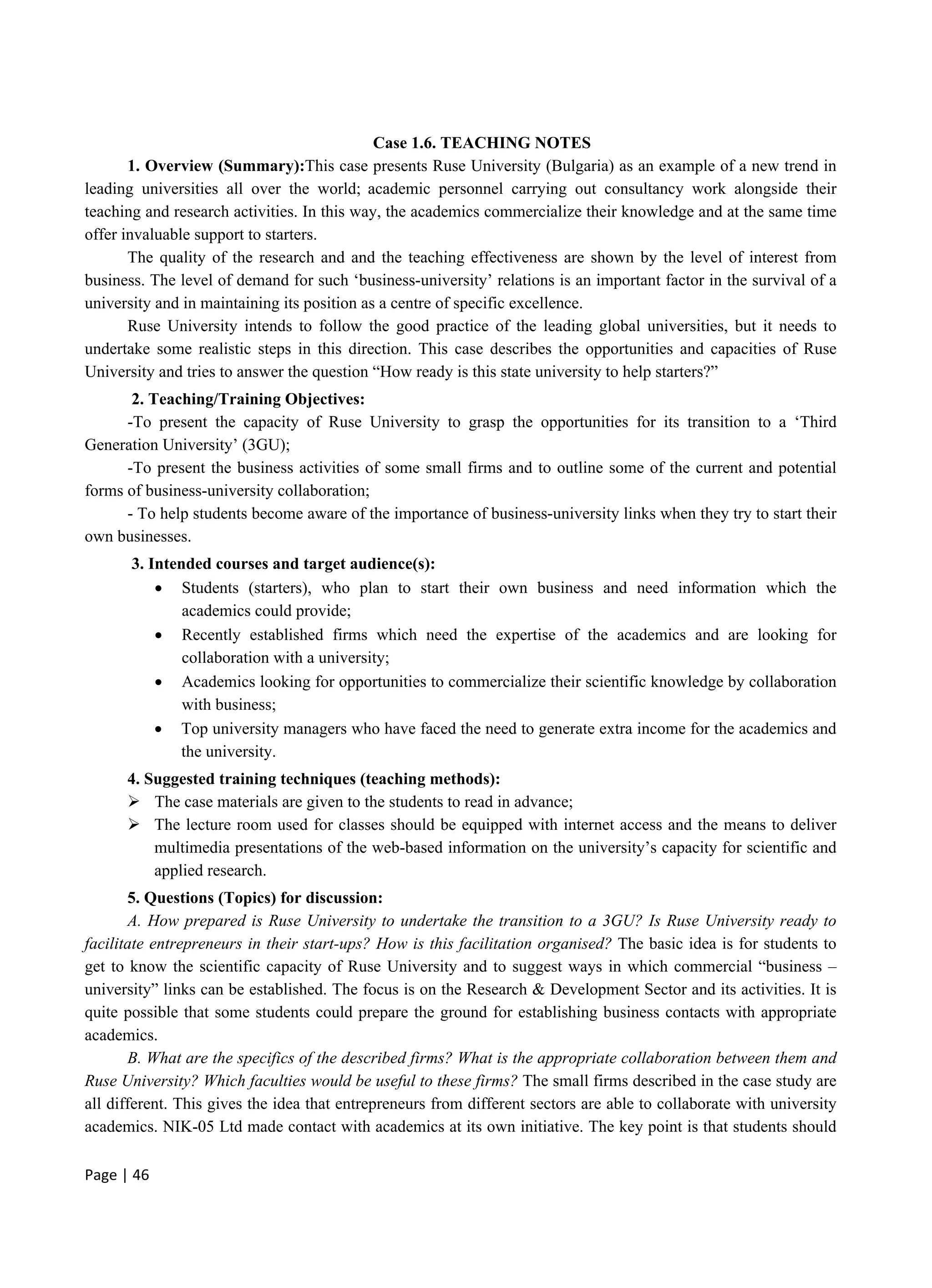
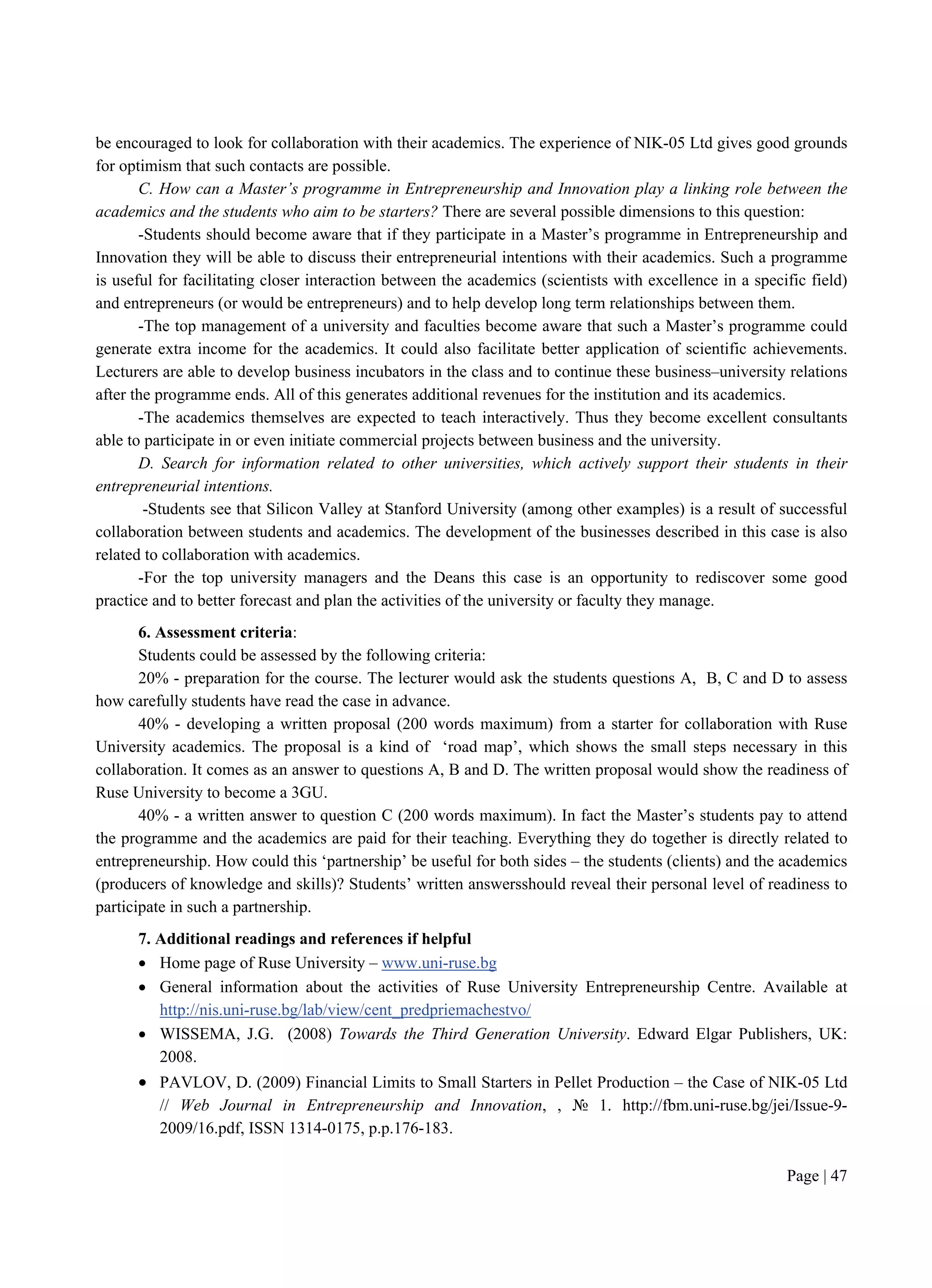

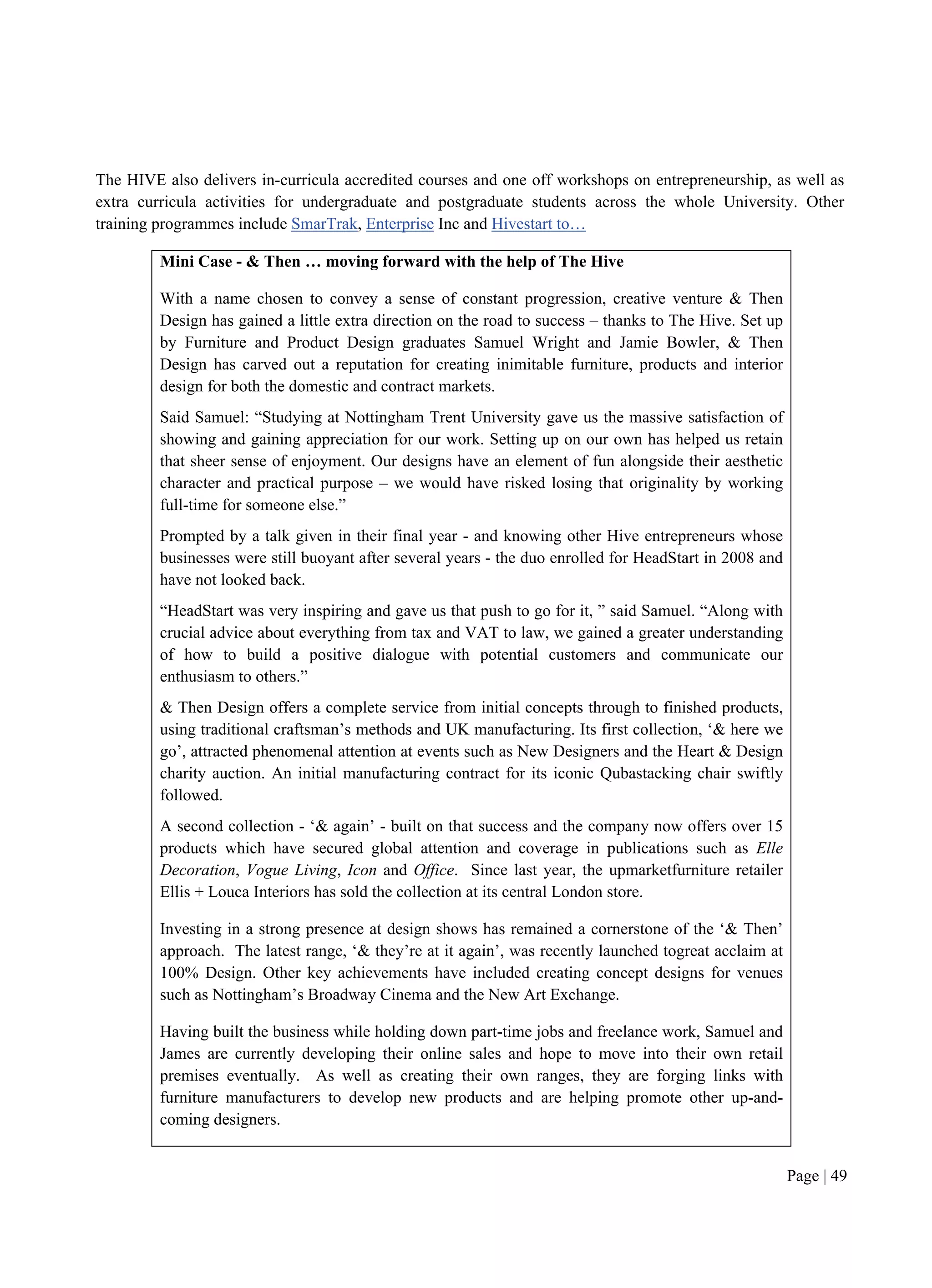
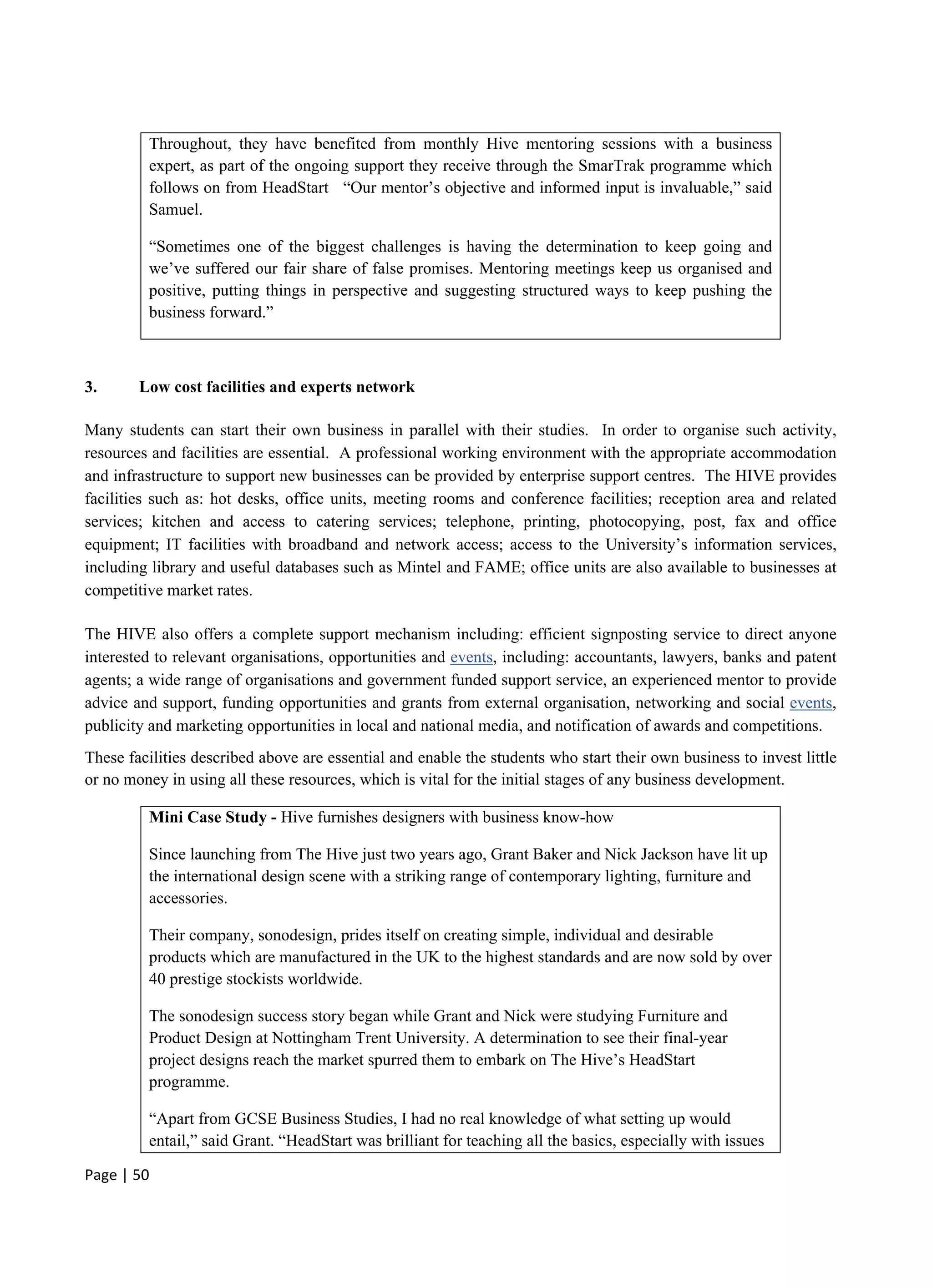
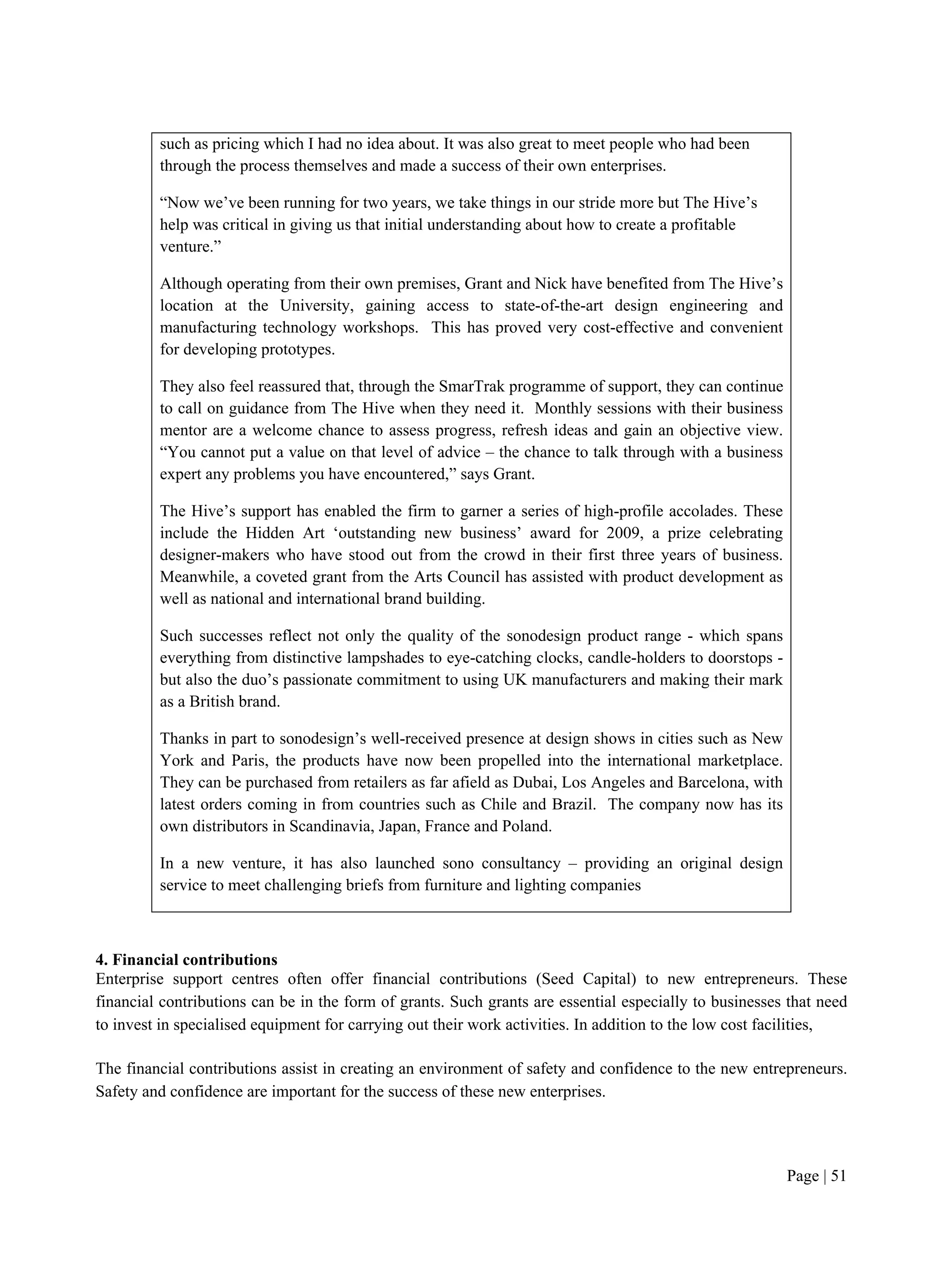
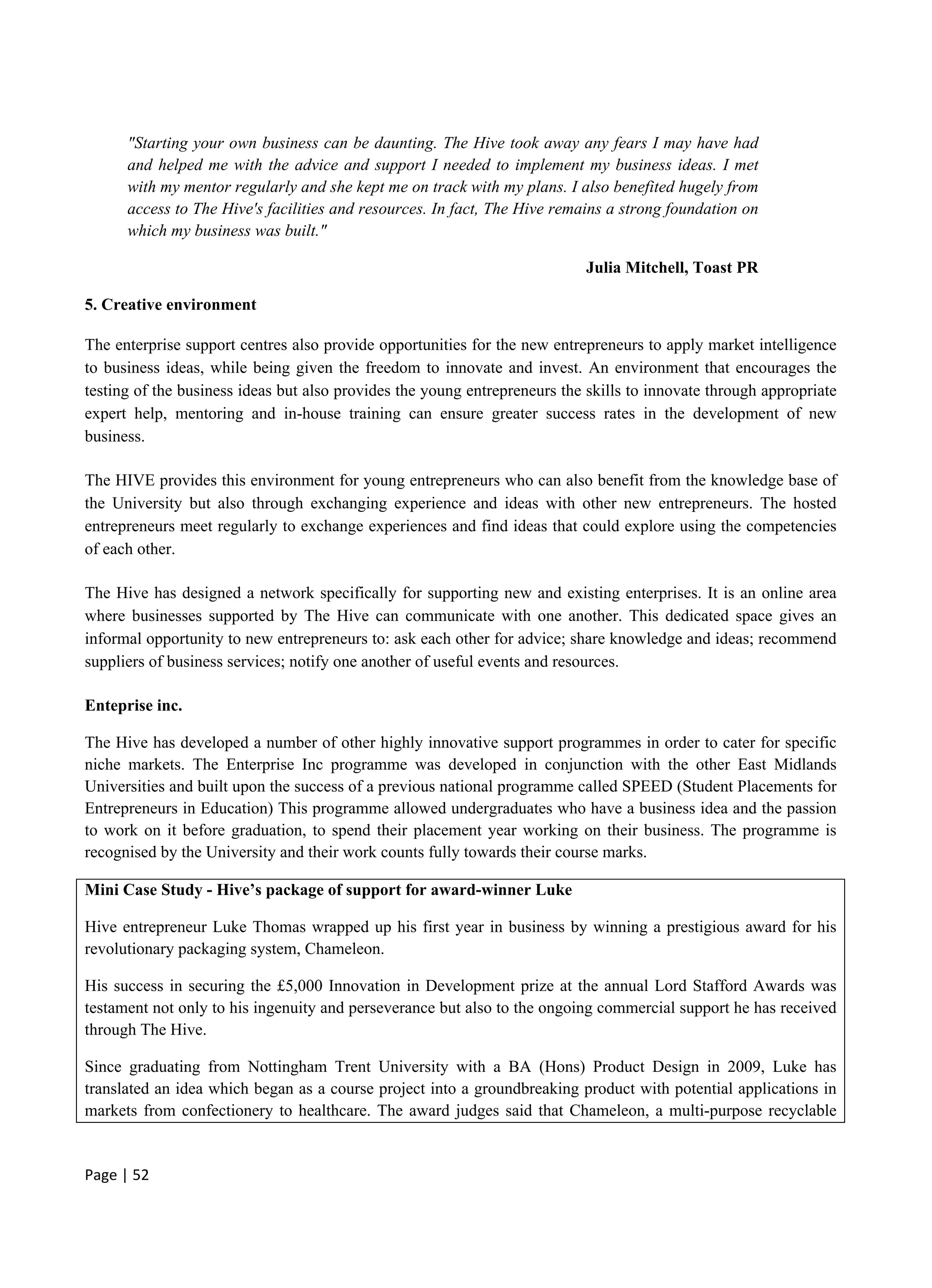
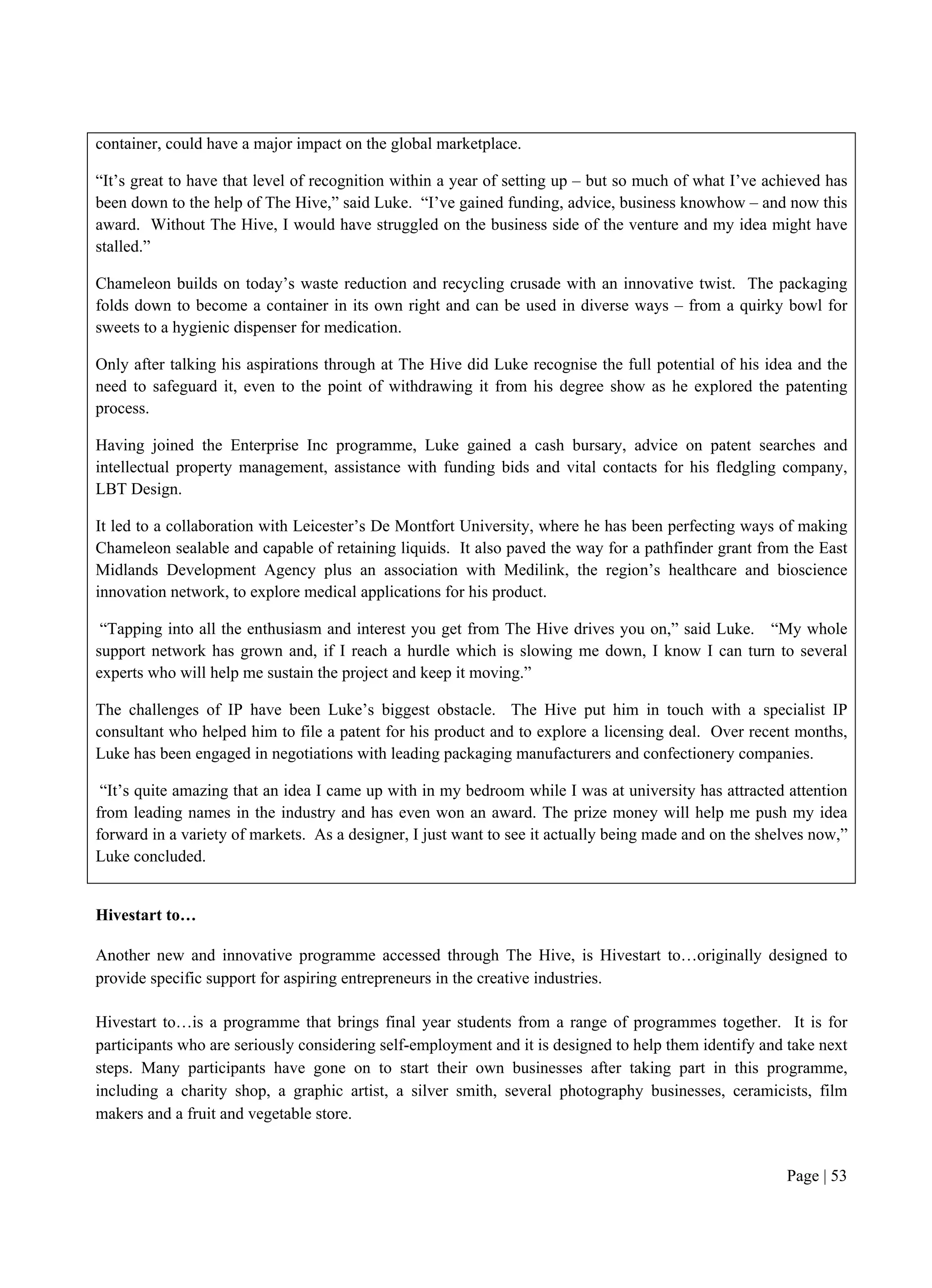
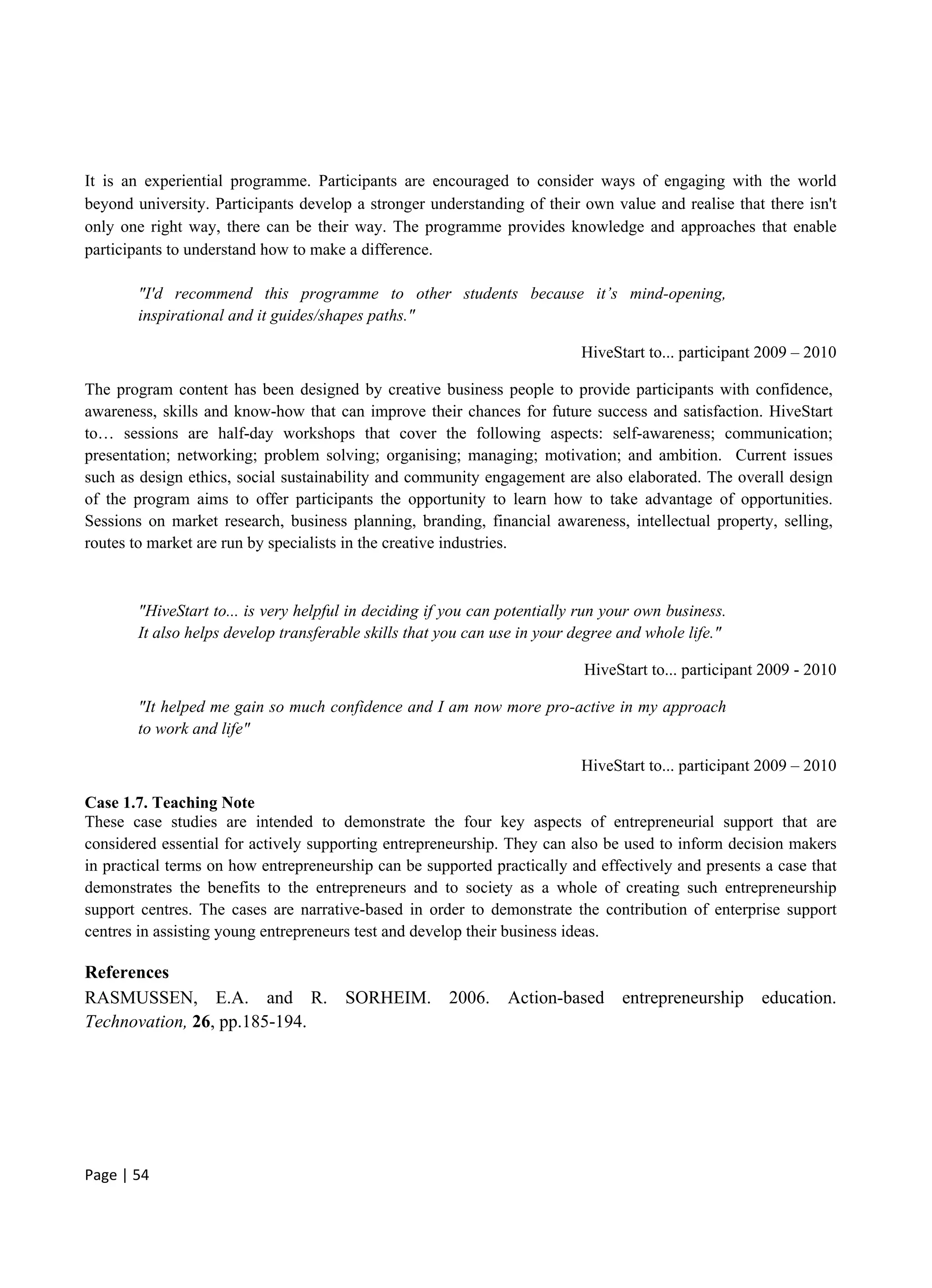

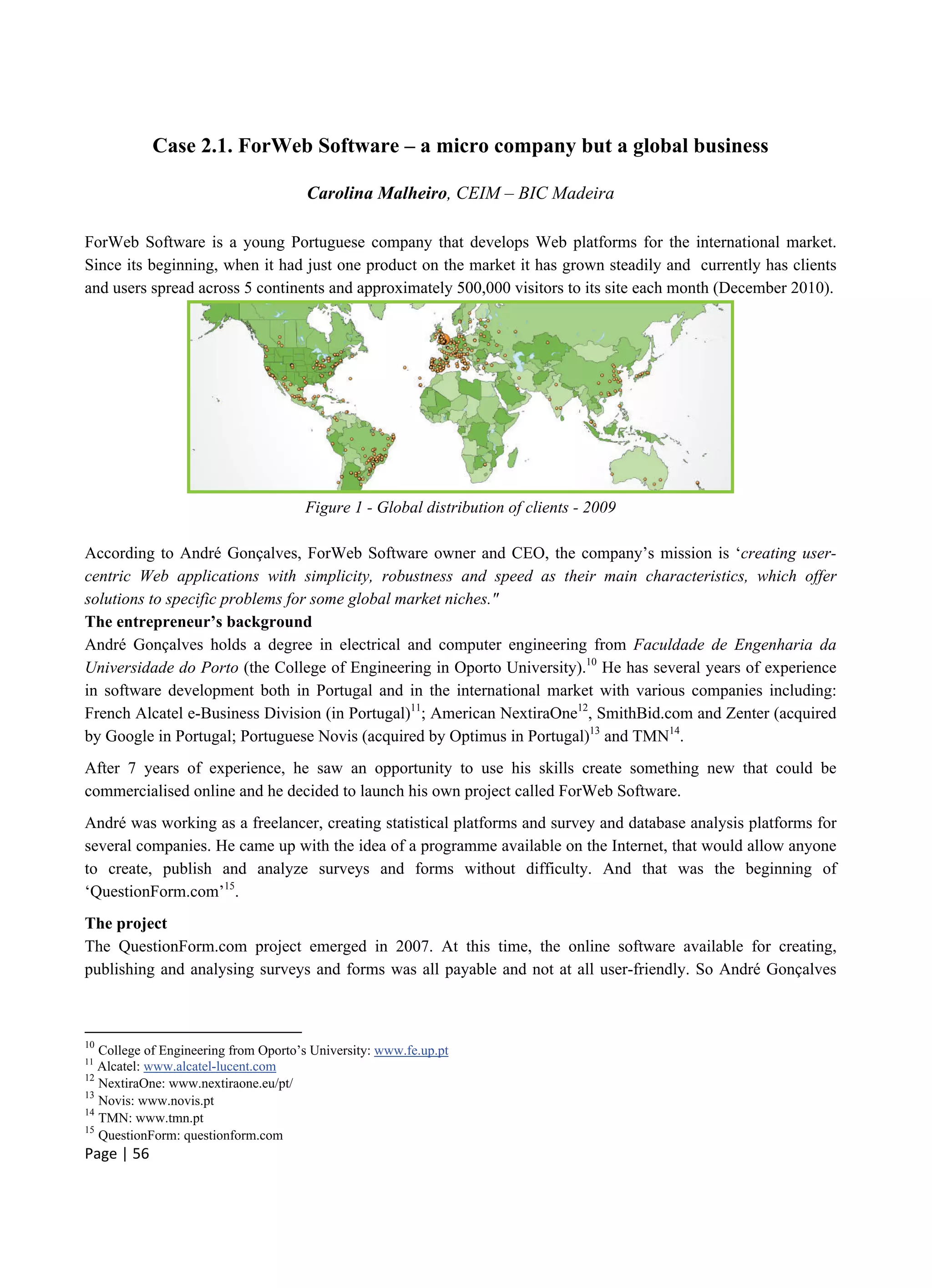
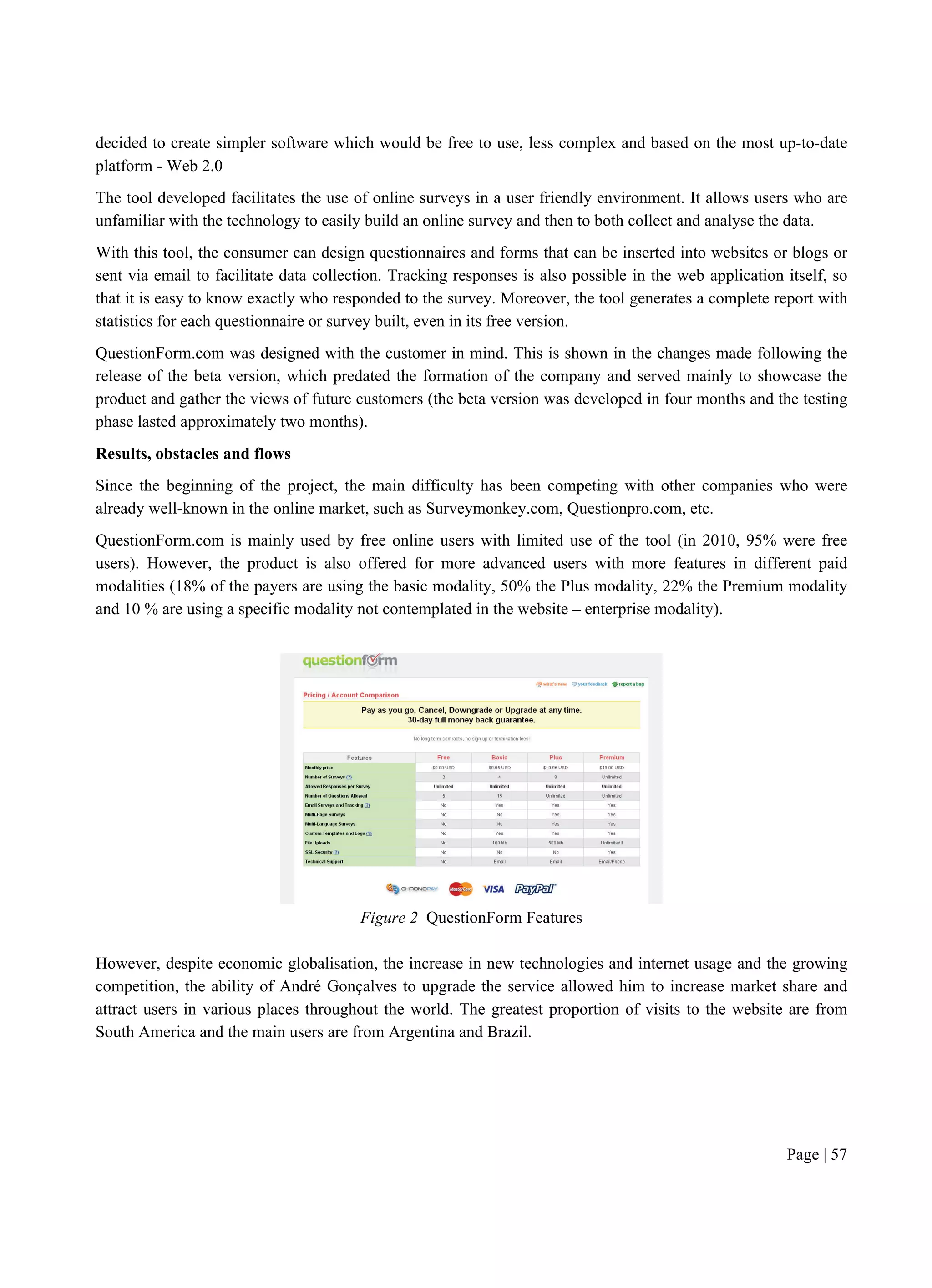
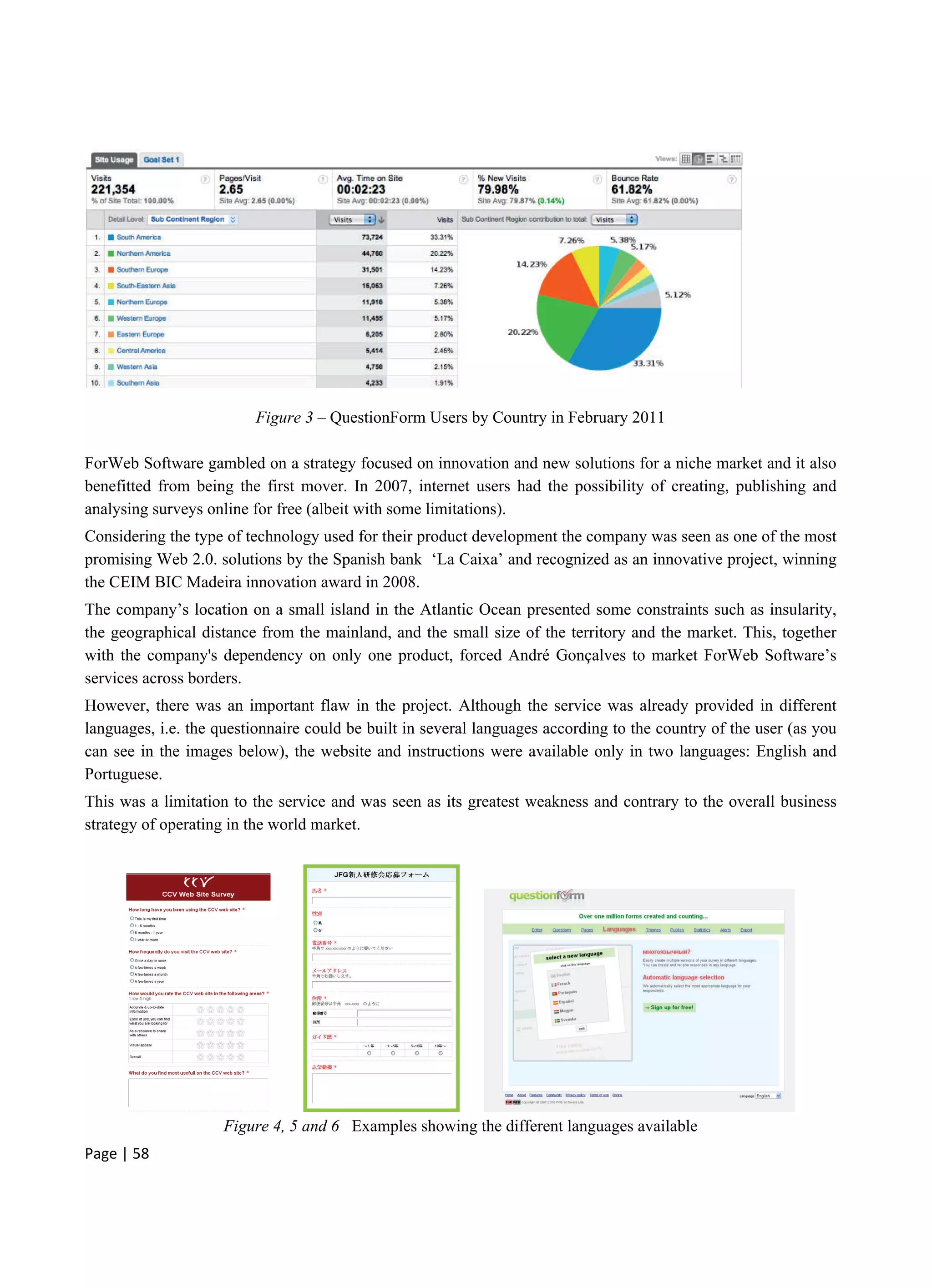
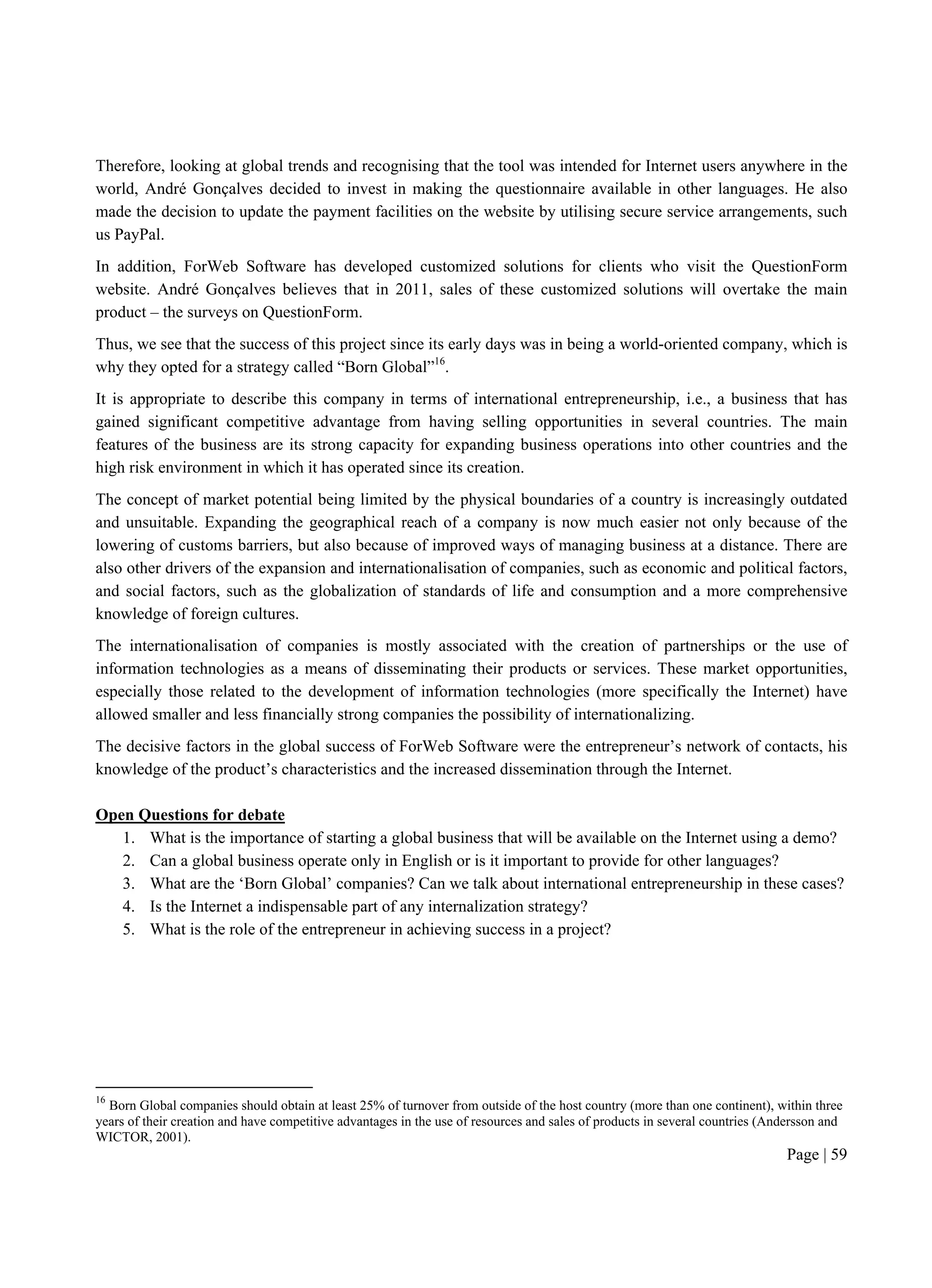


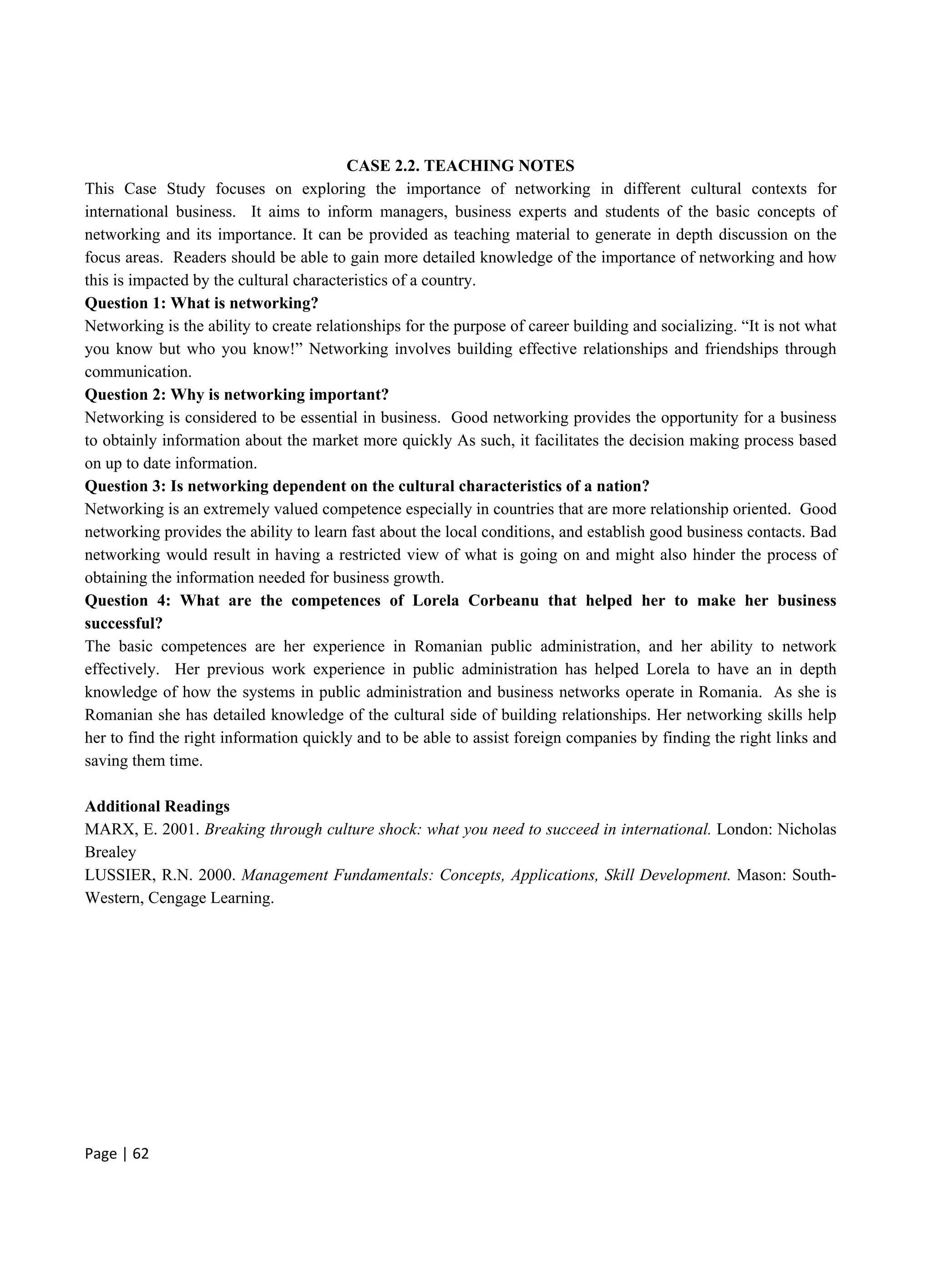
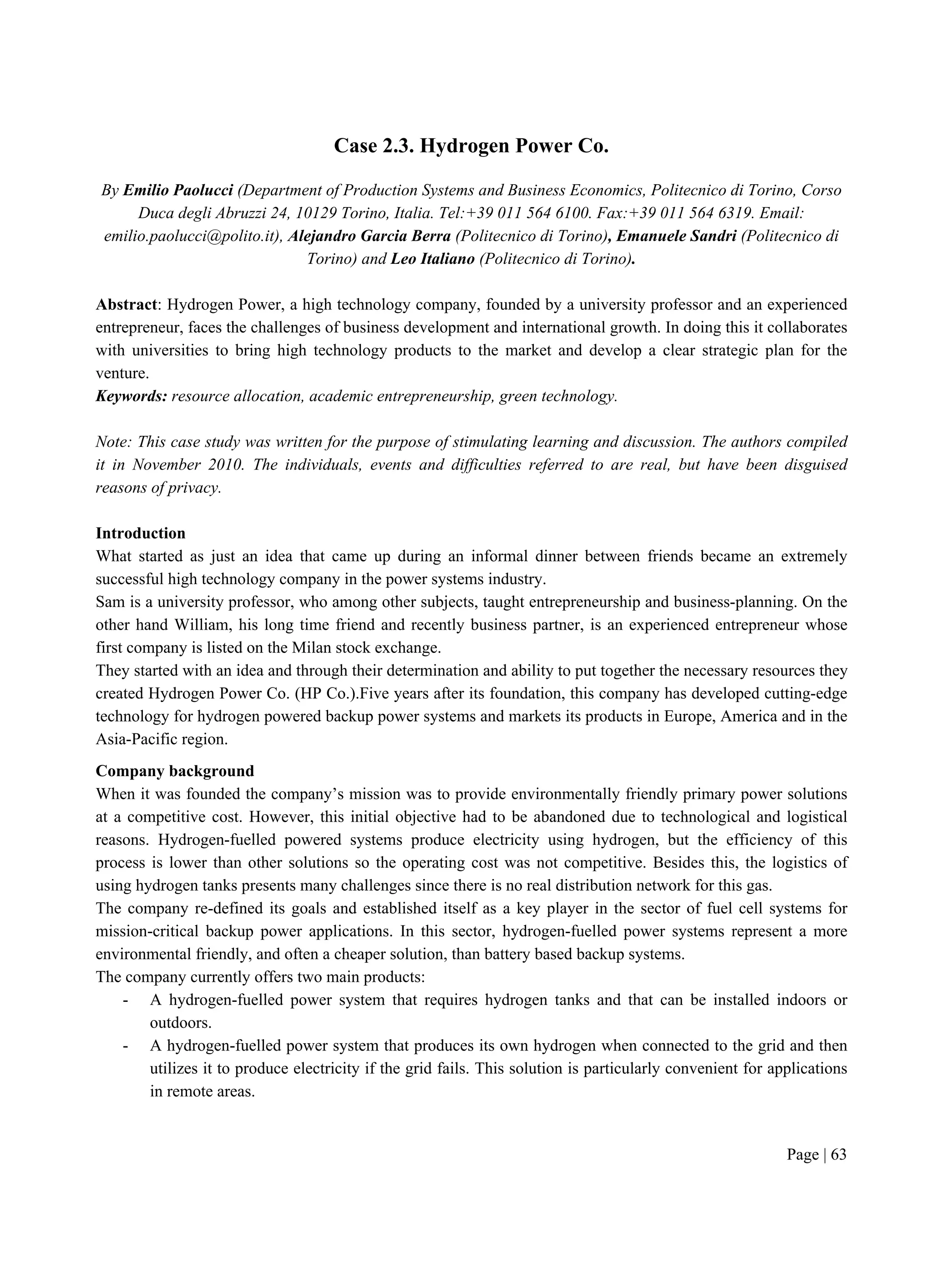
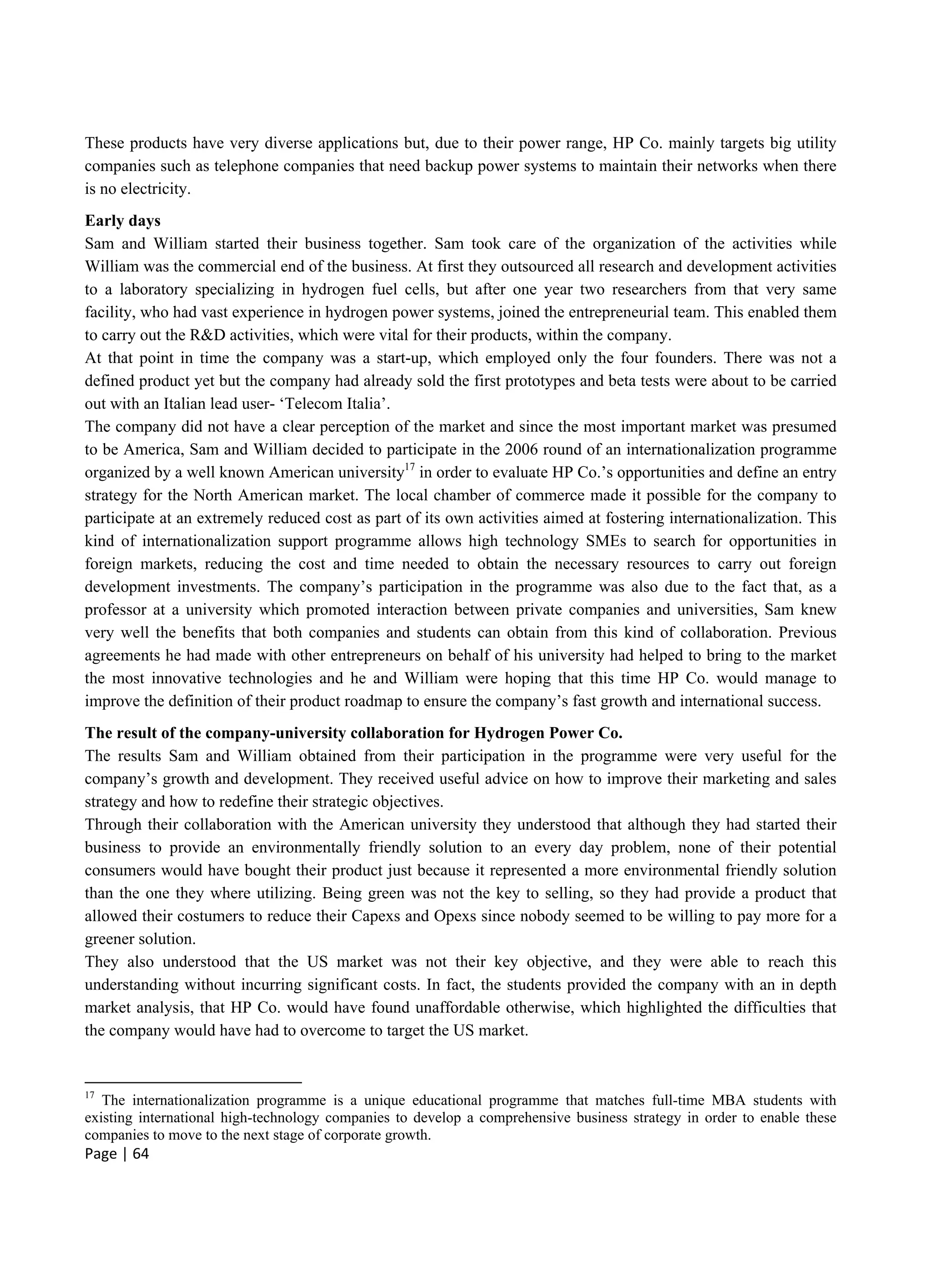
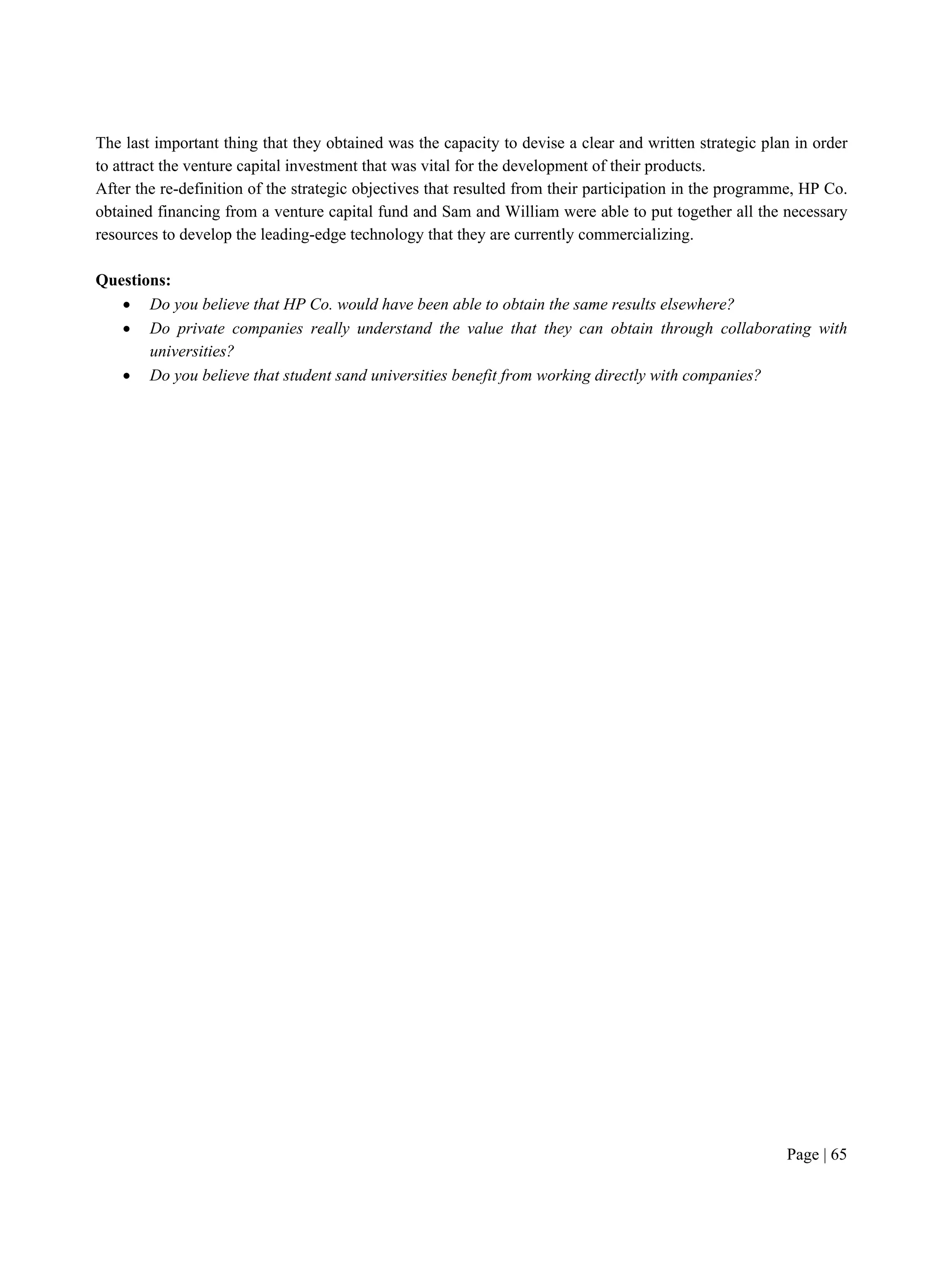
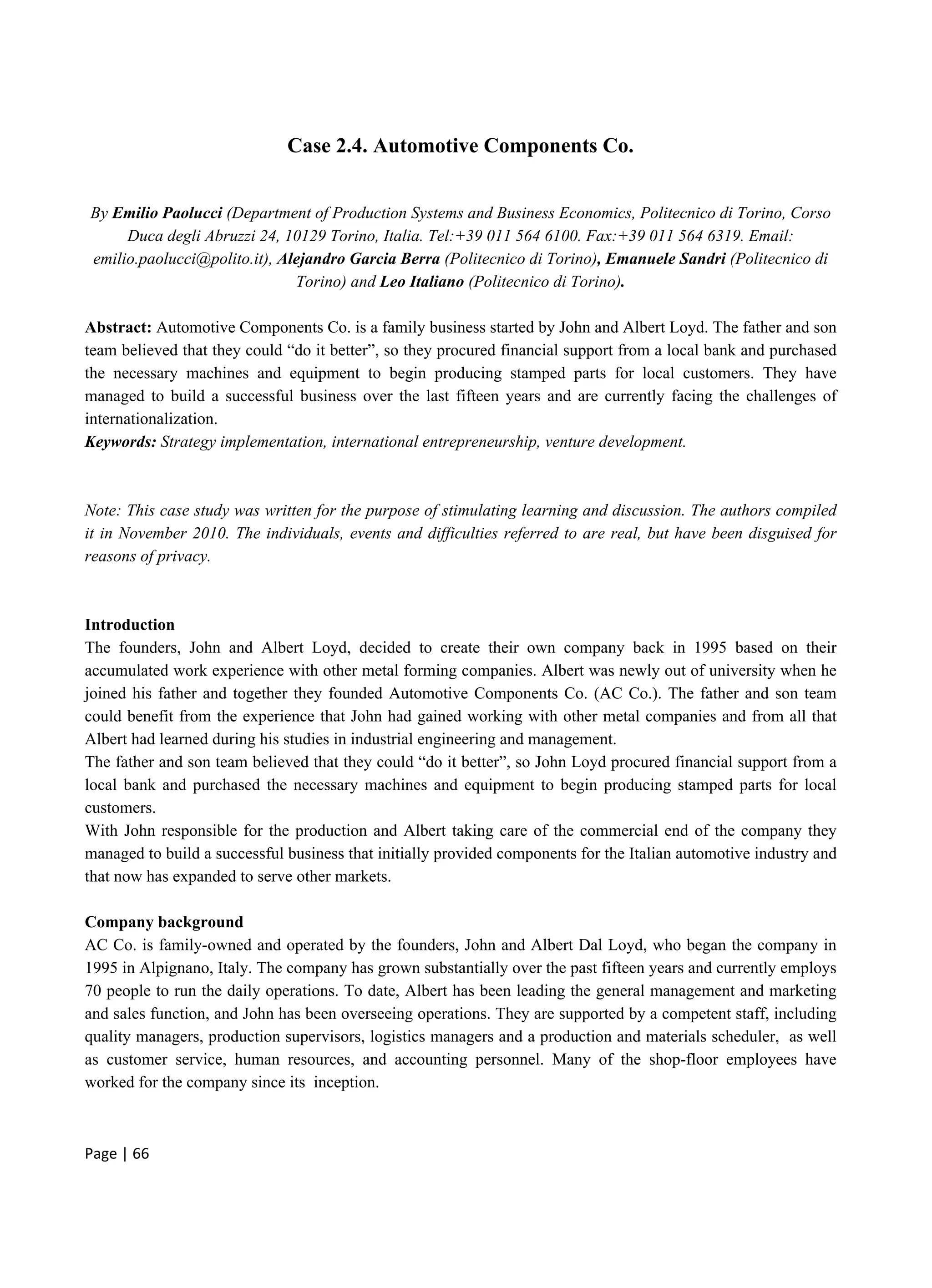
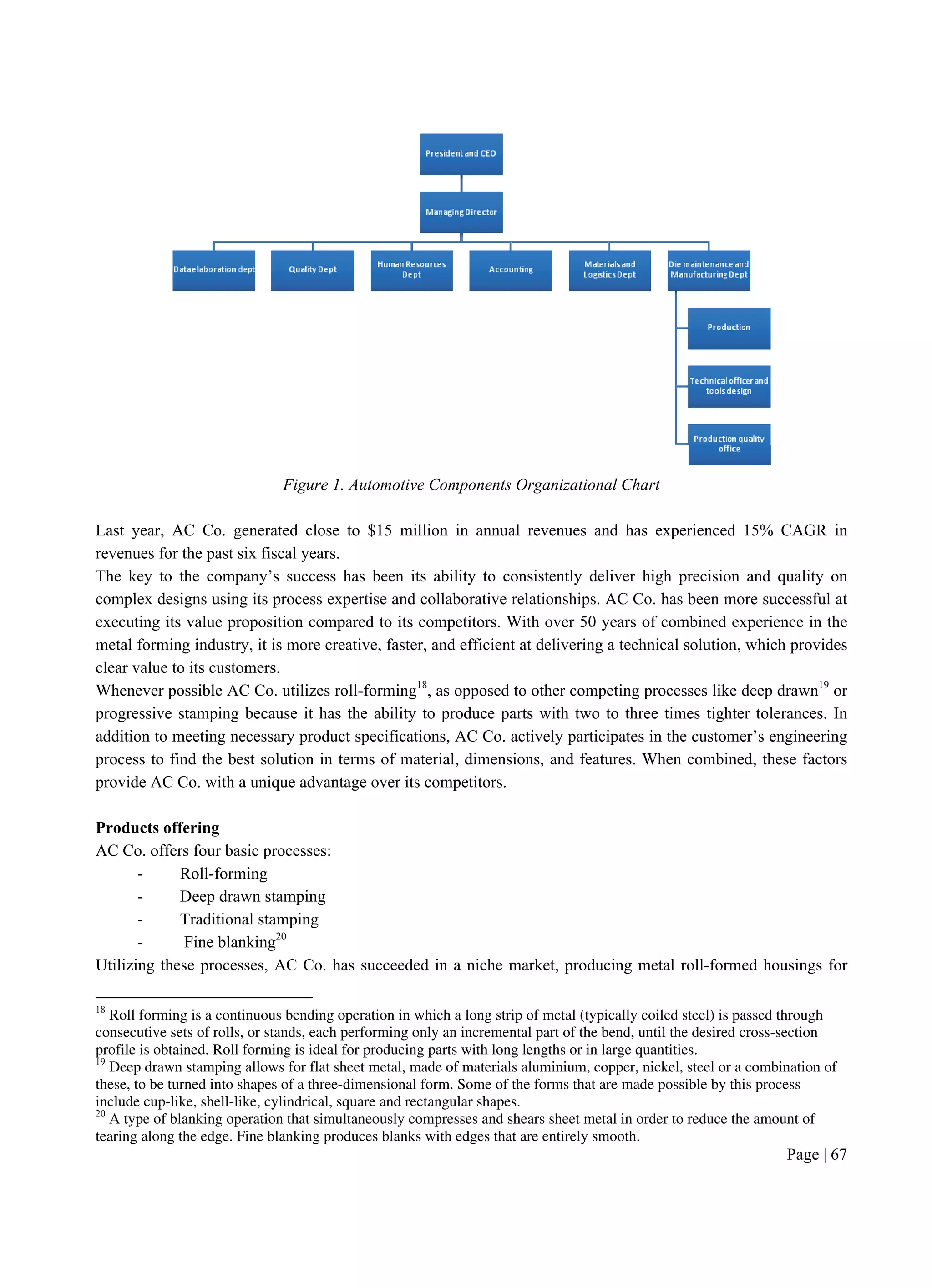

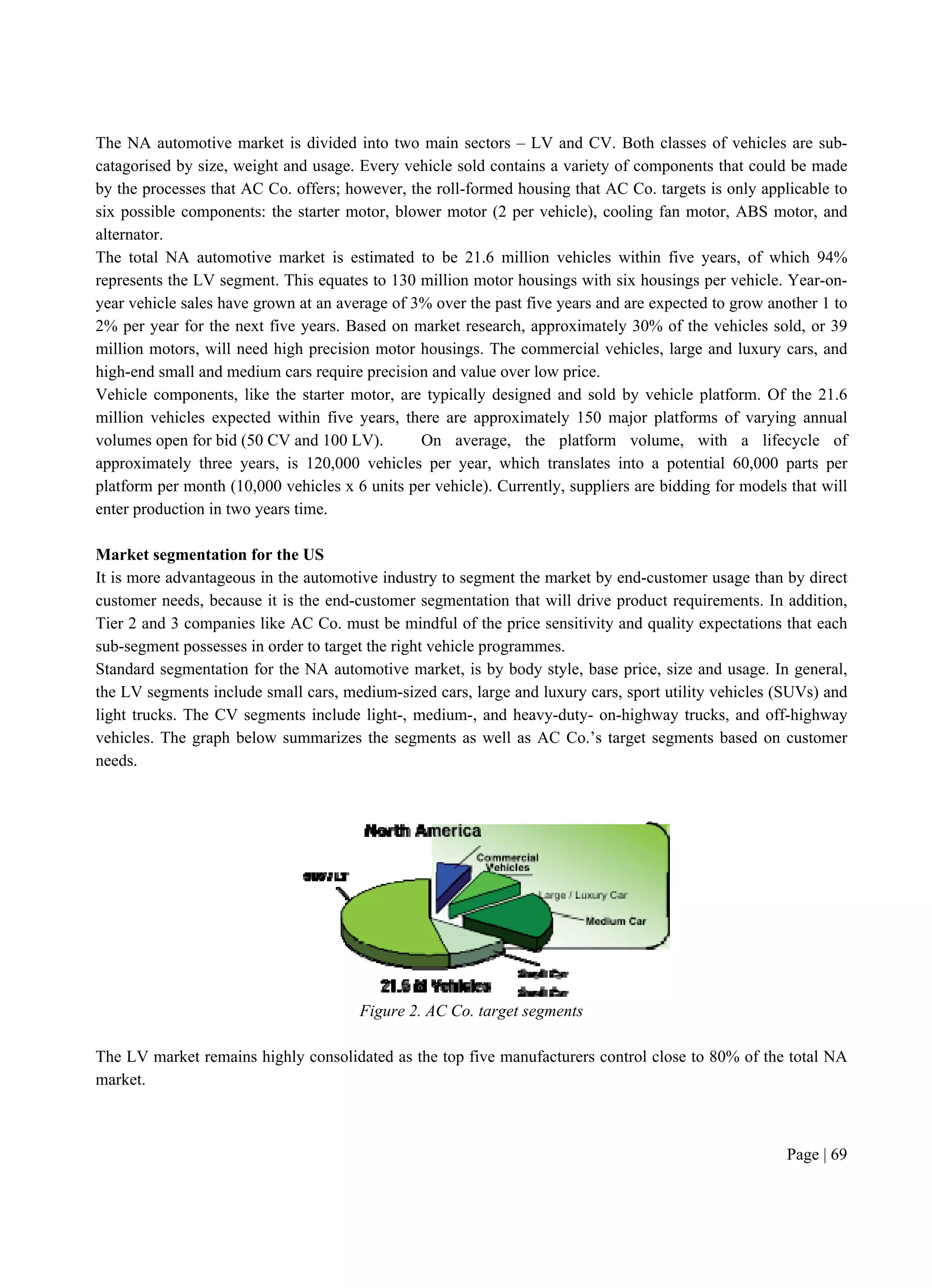
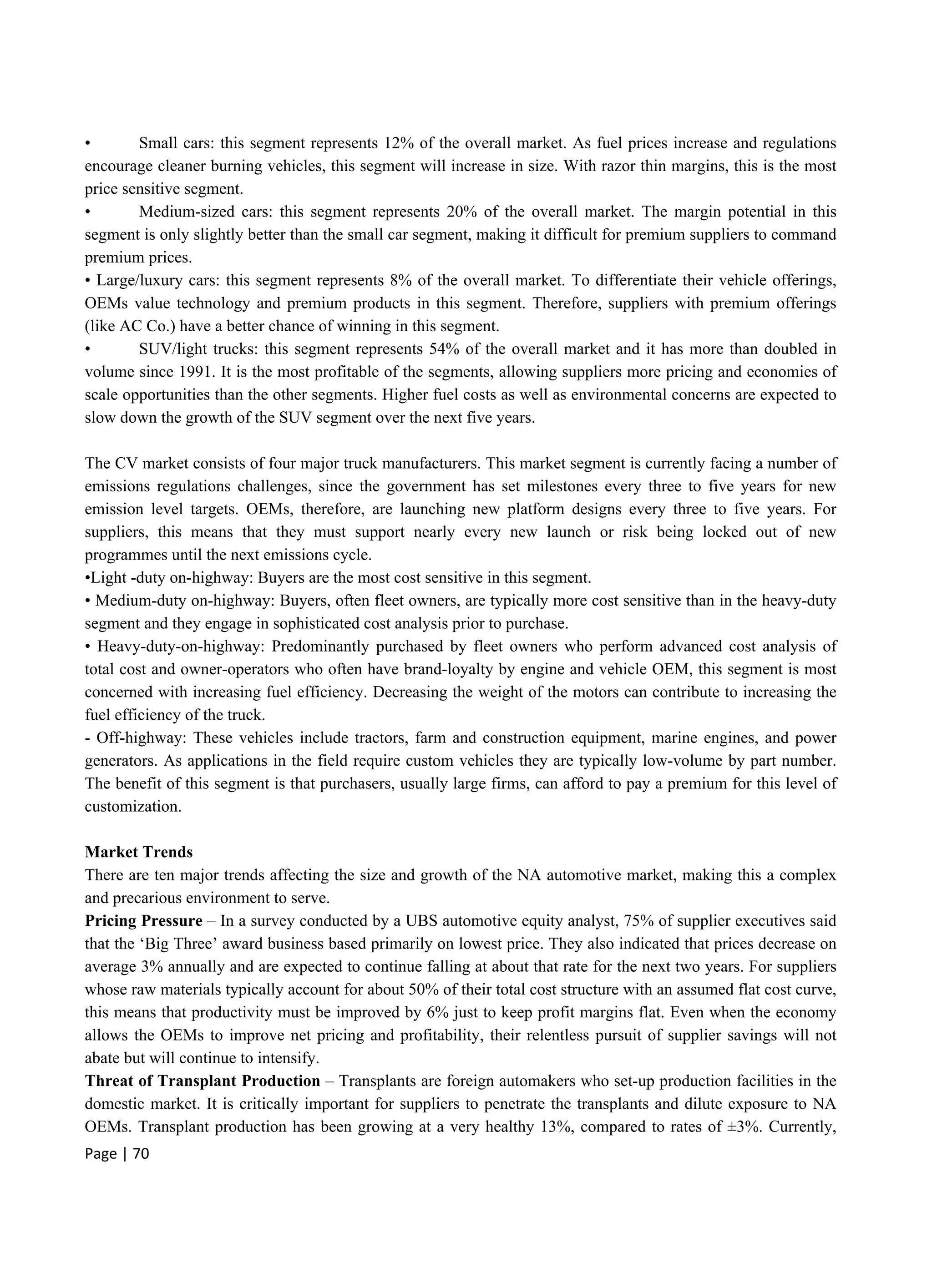
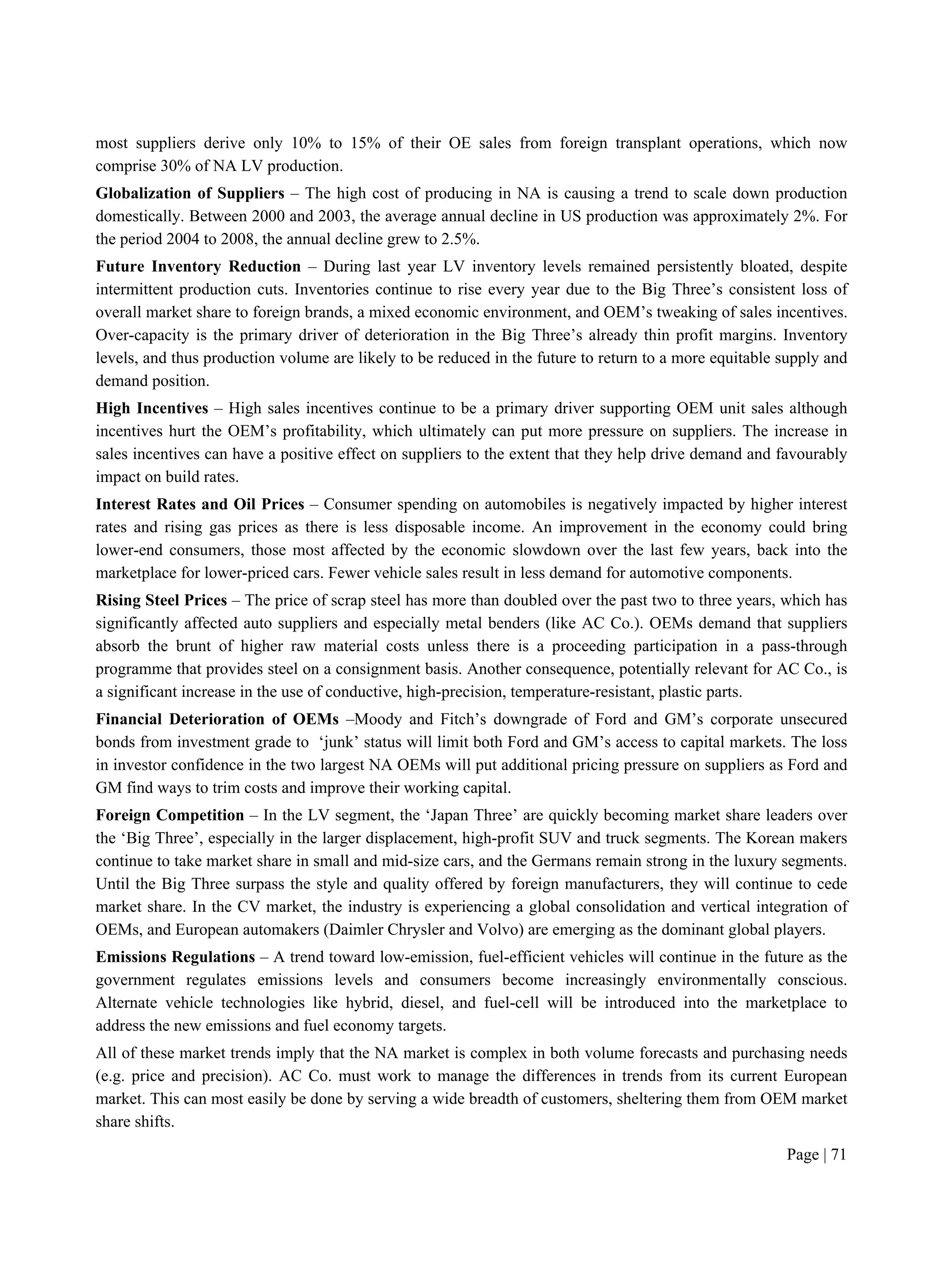


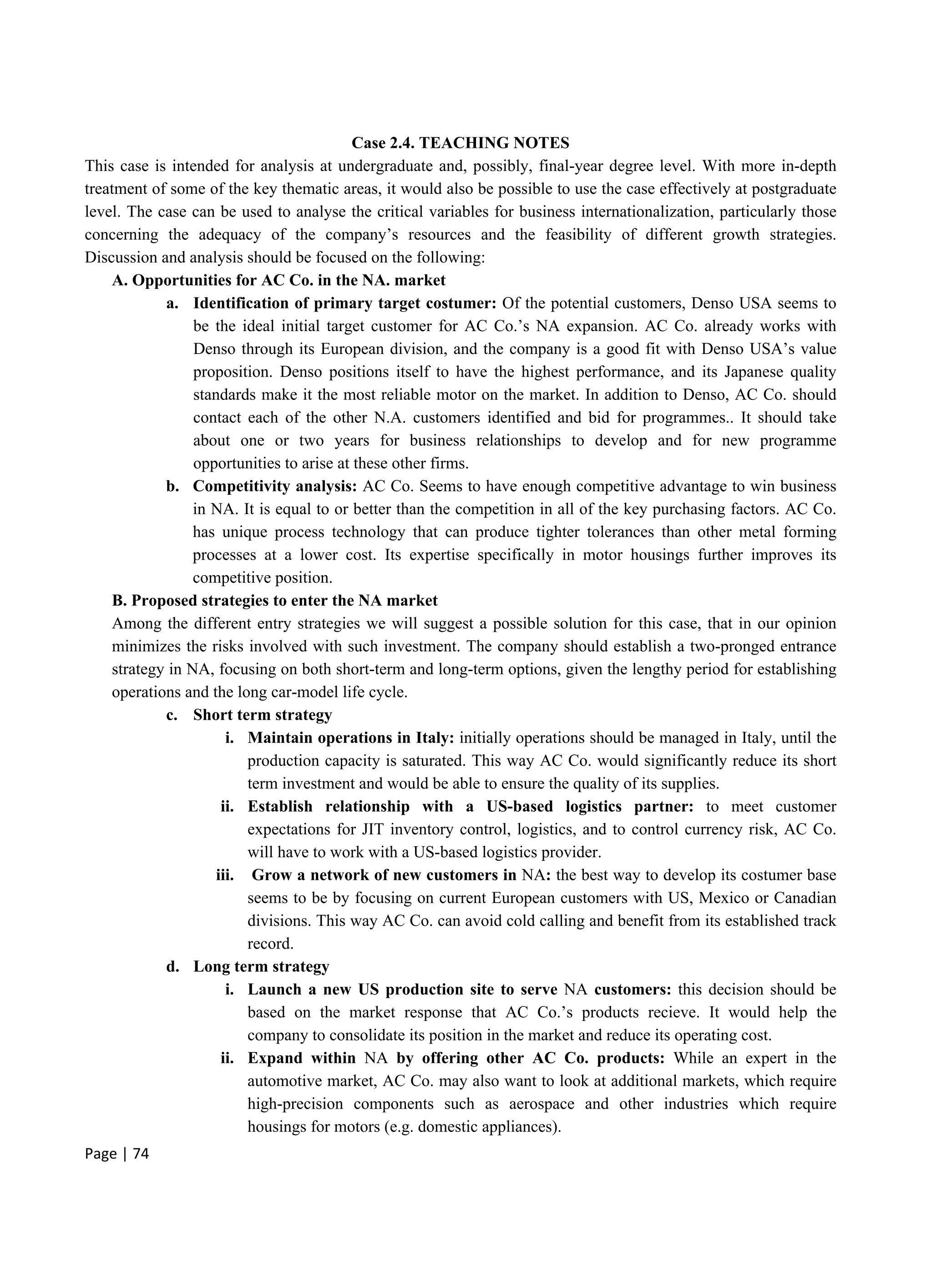
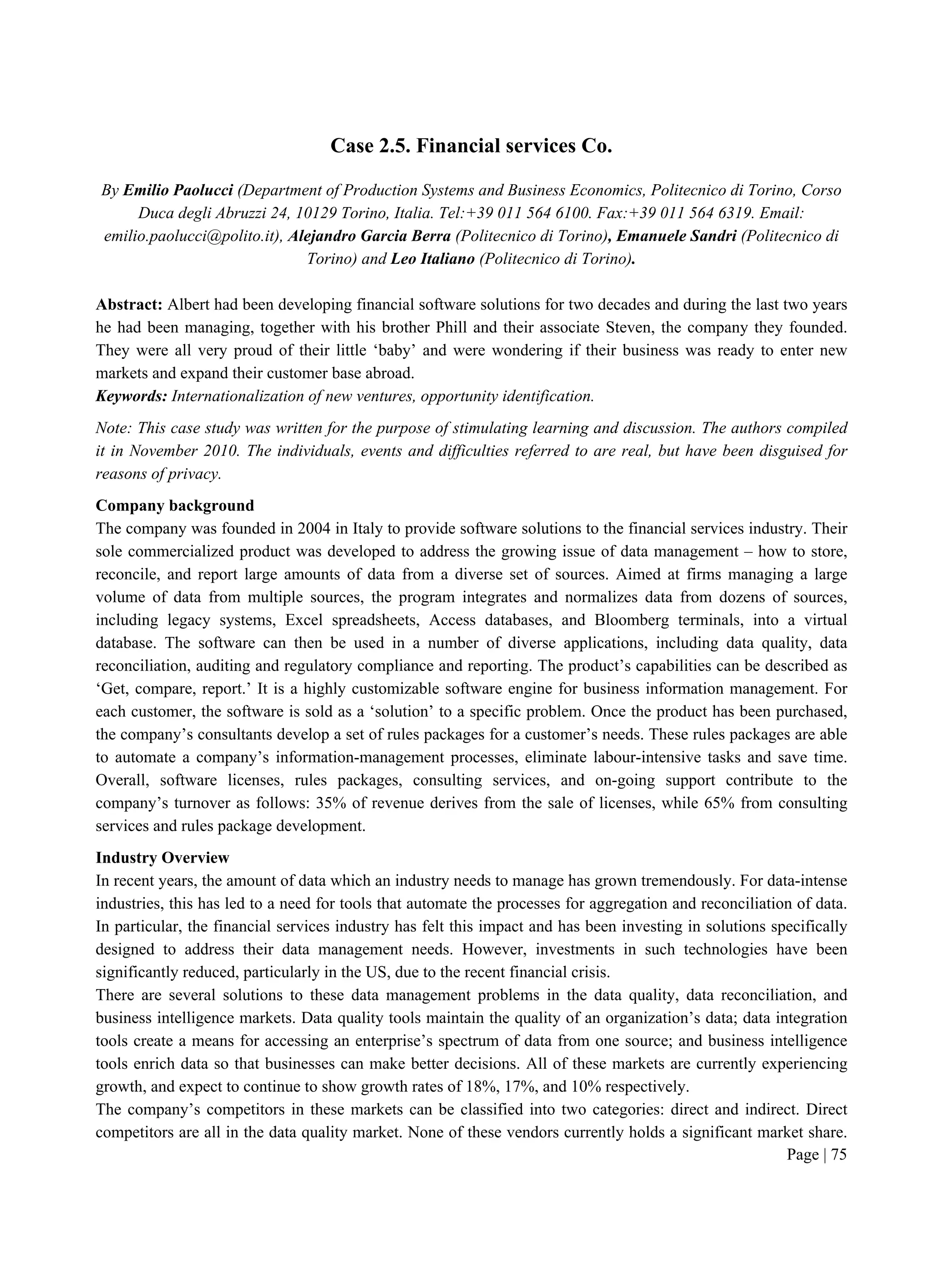
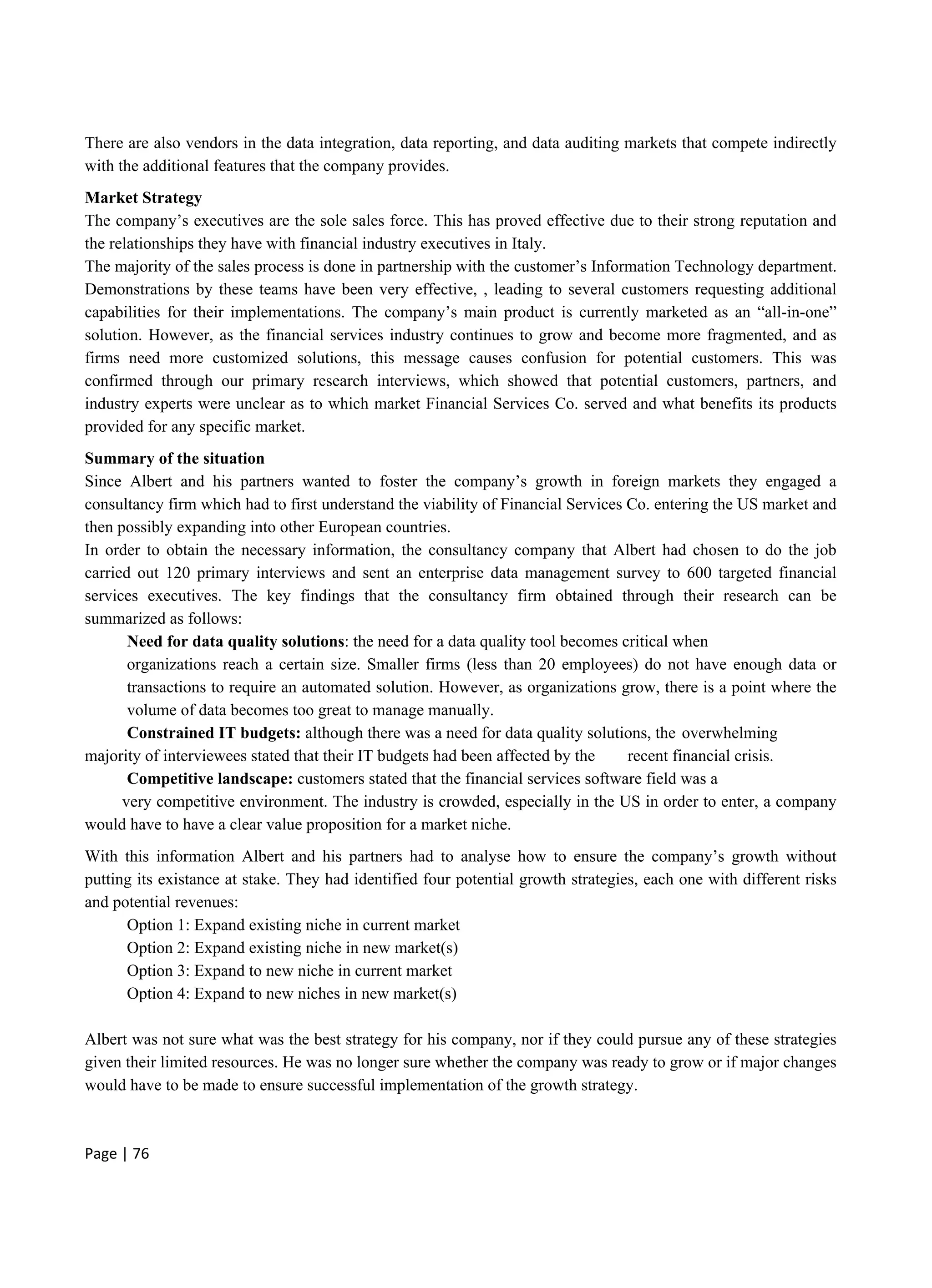
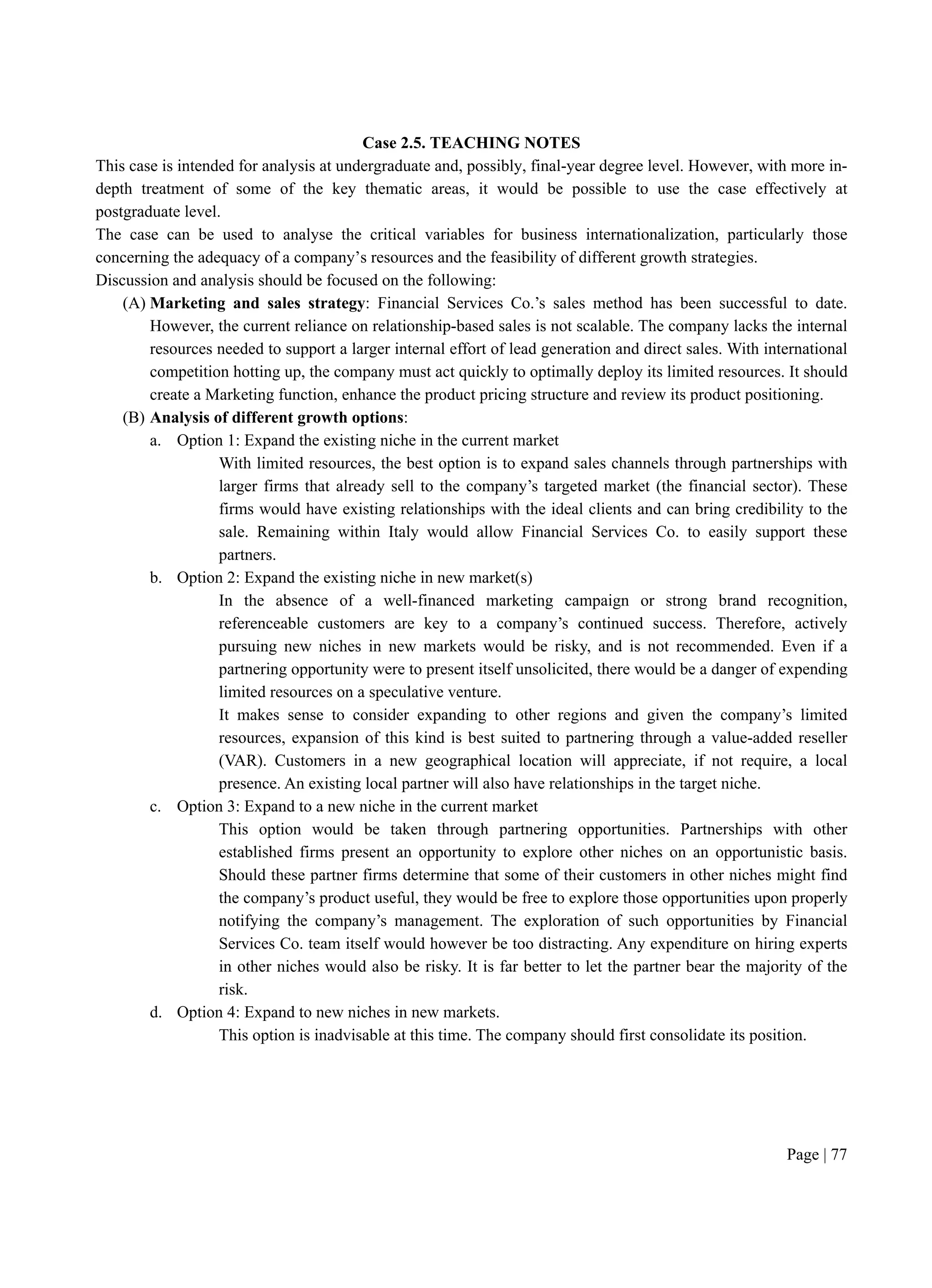
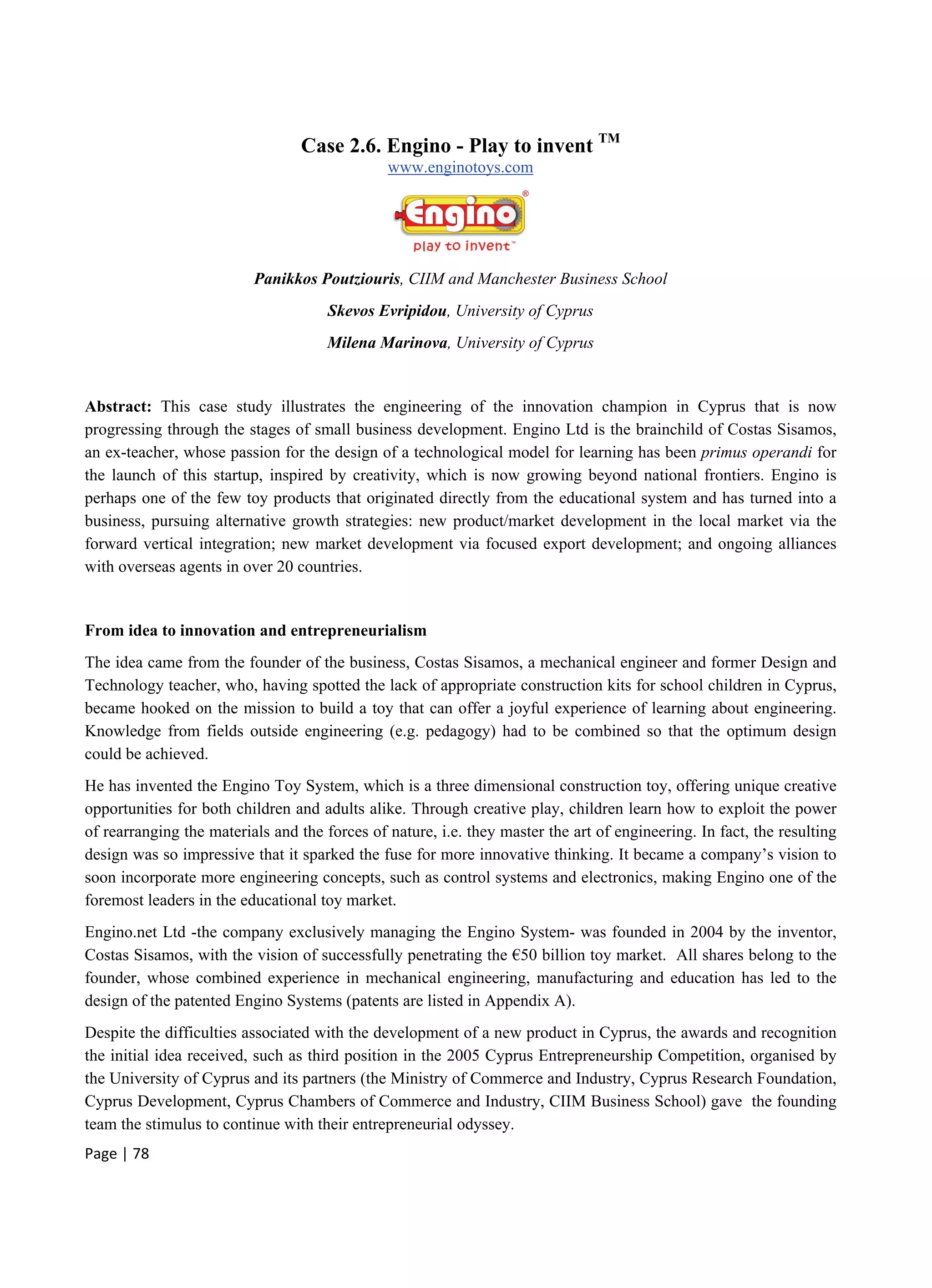
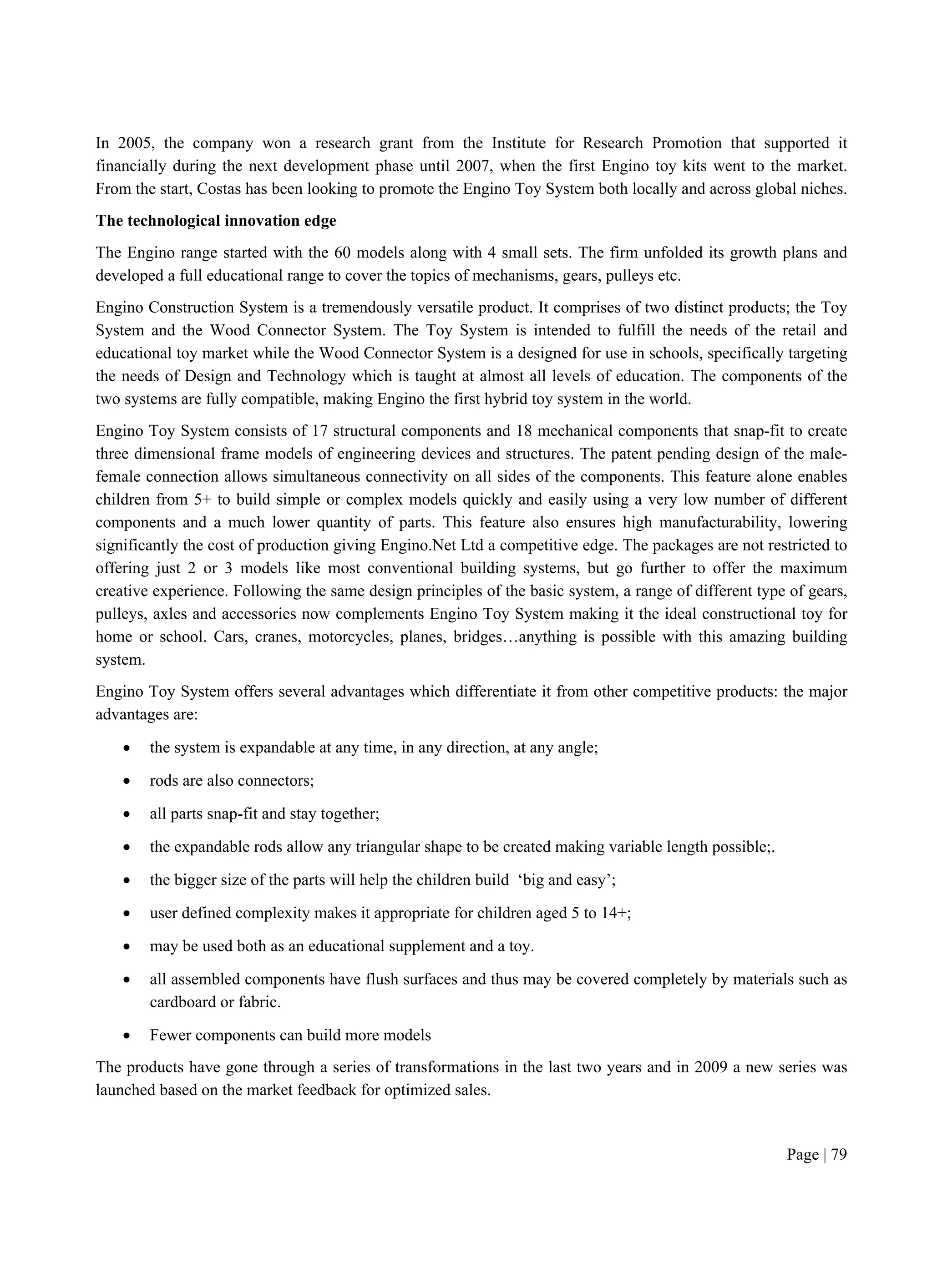
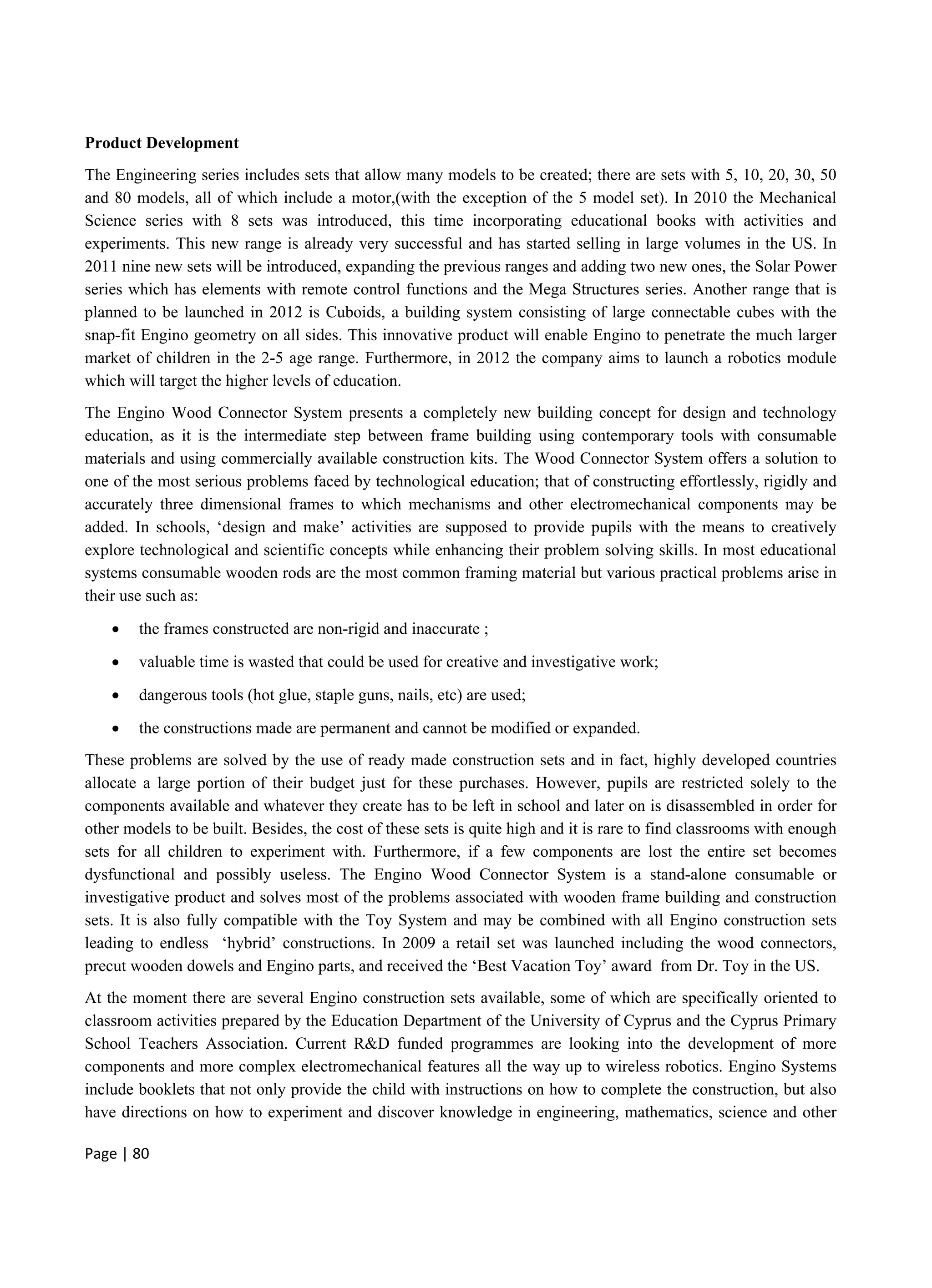
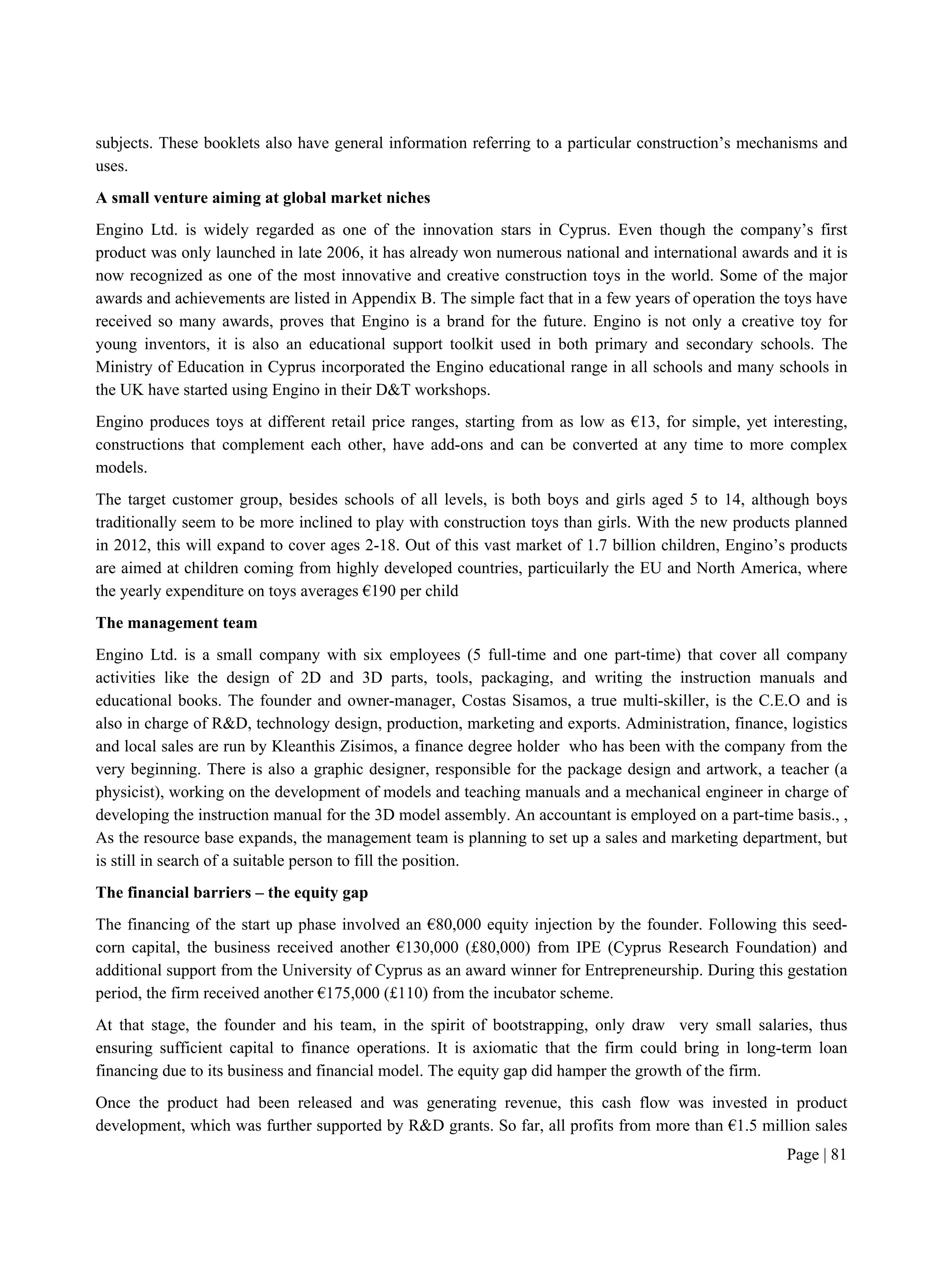
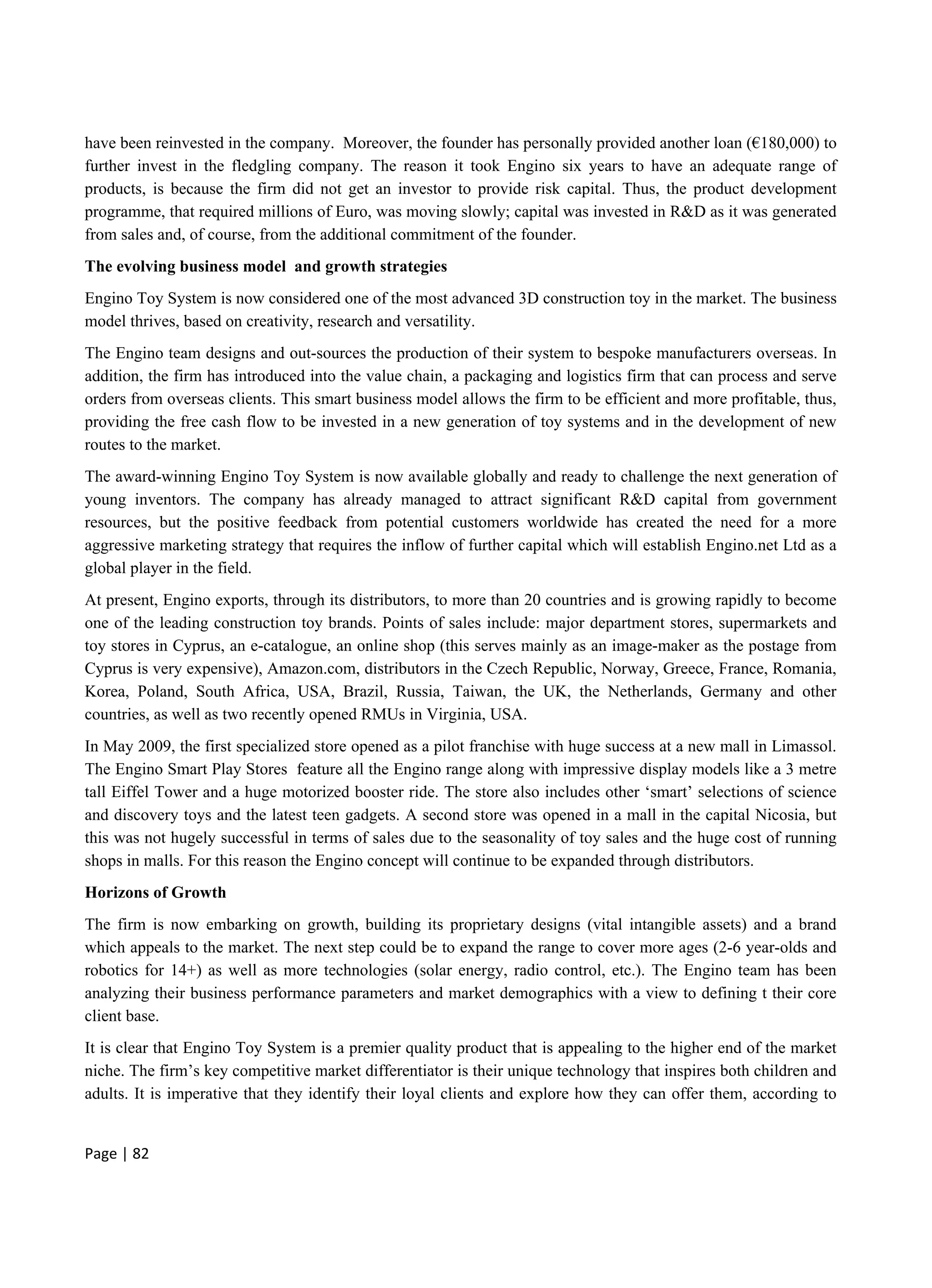
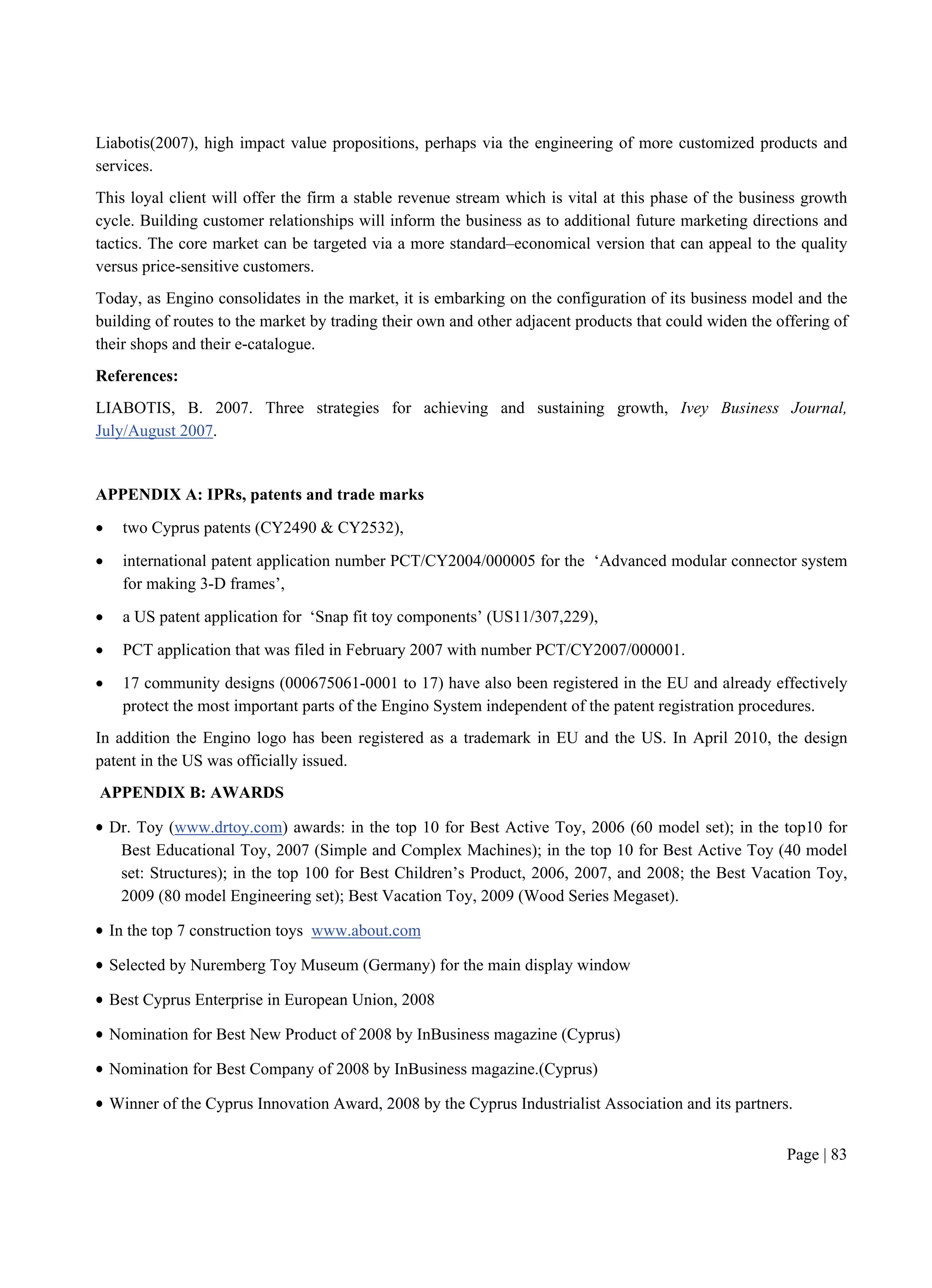
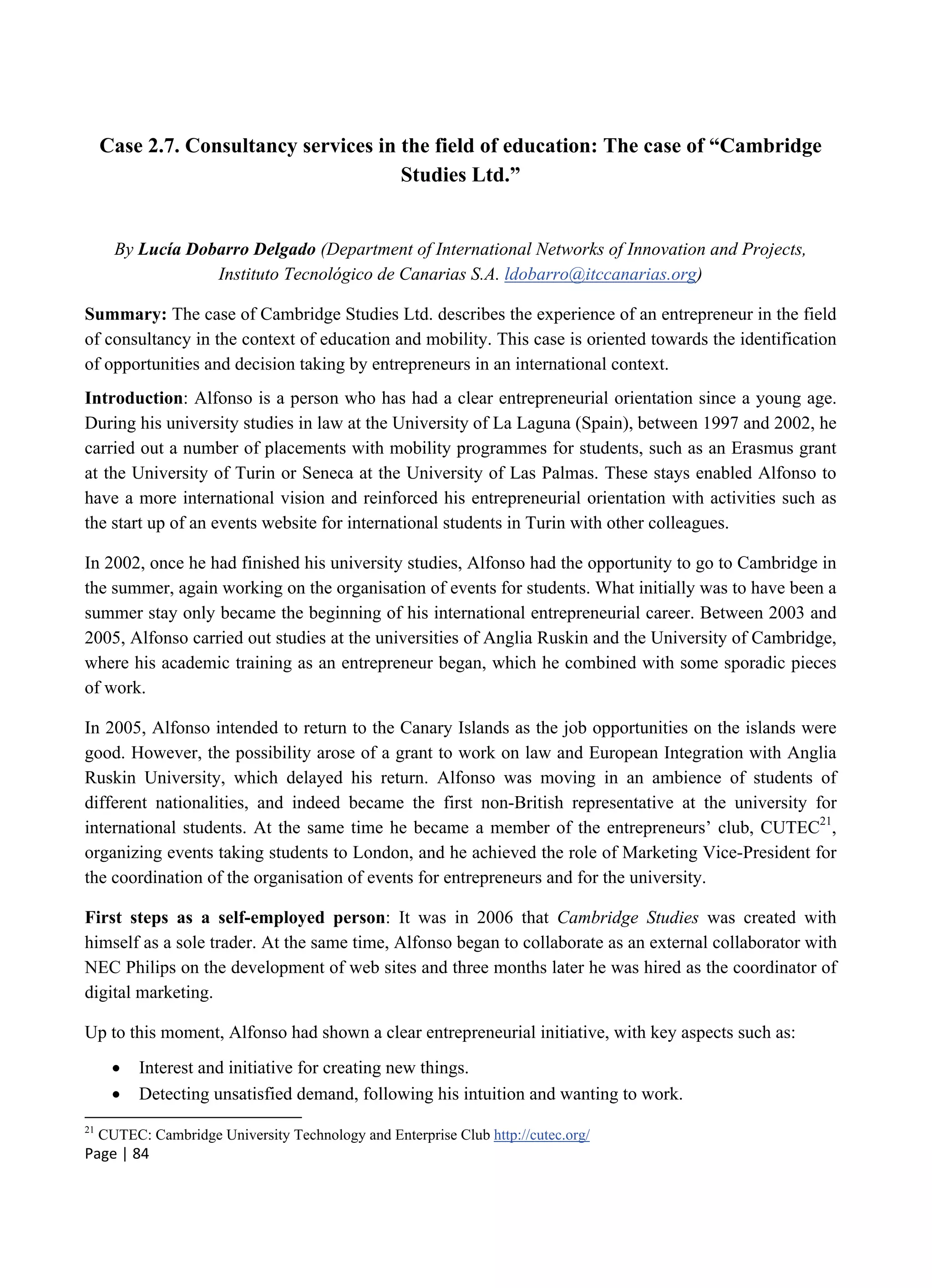
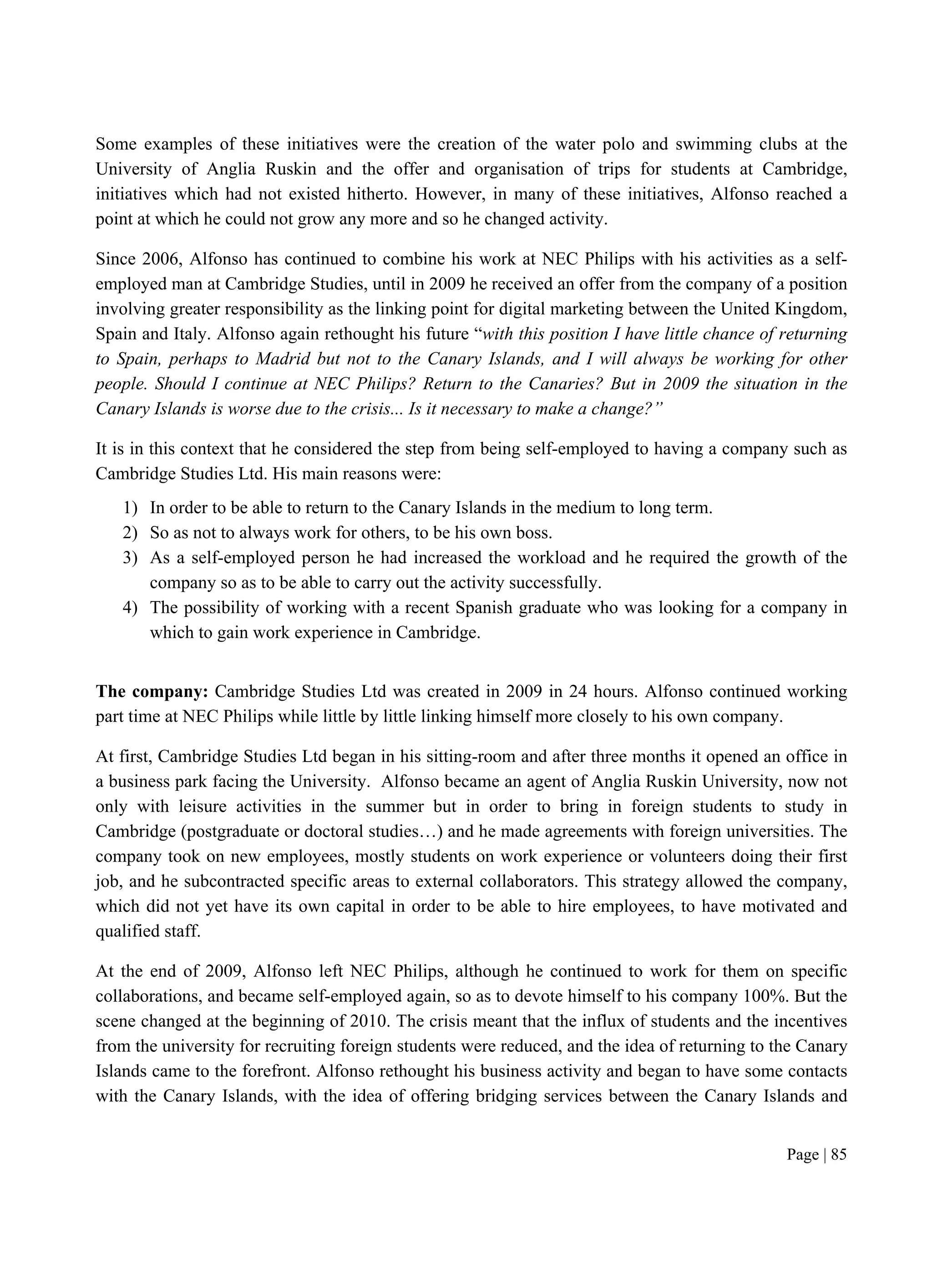
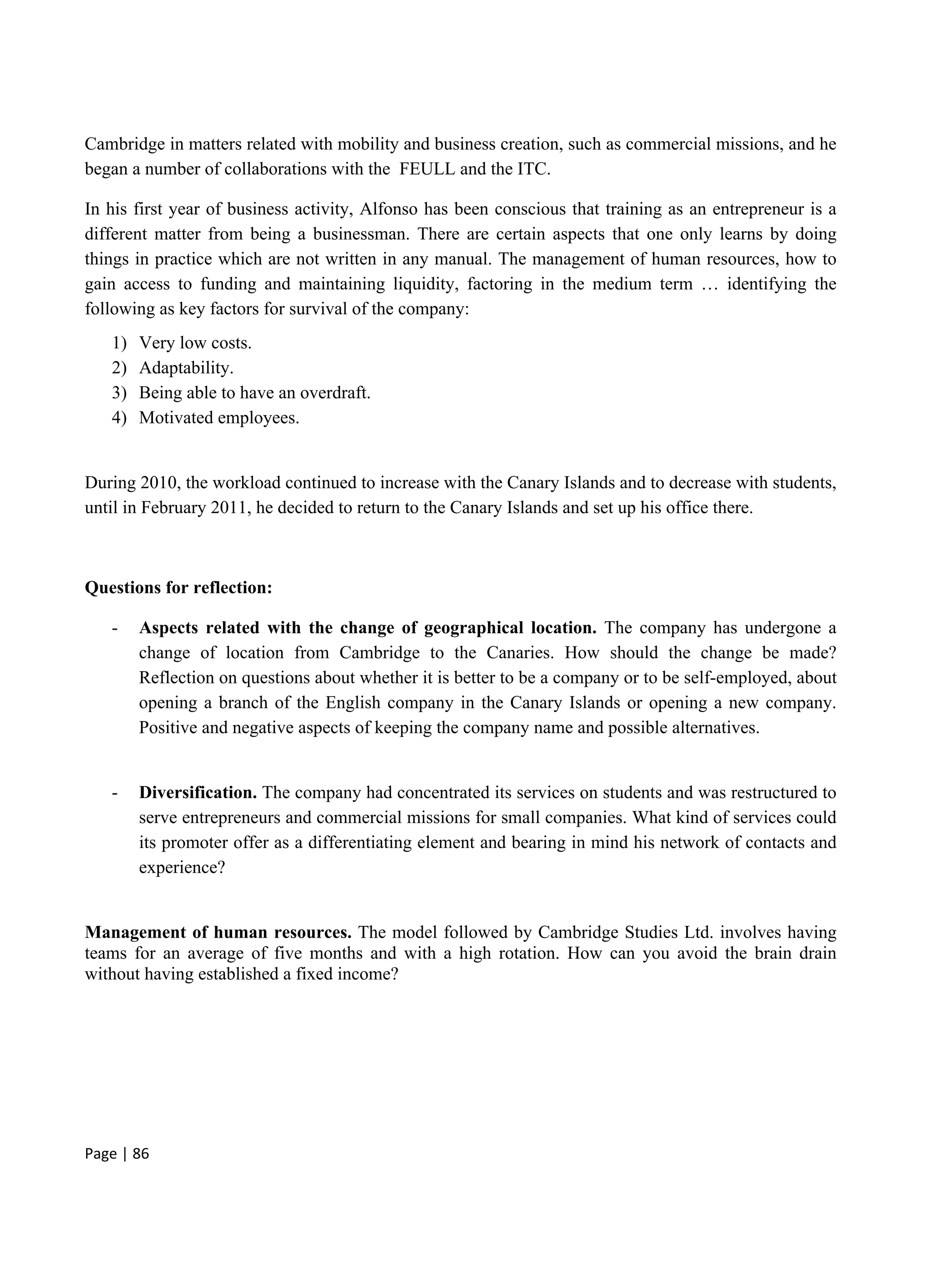

![Page | 88
Case 3.1. Wow! Systems – From Madeira to the world…
Carolina Malheiro, CEIM – BIC Madeira
Wow!Systems22
is a high-tech start up with a focus on creating paradigms of interaction and interactive
technologies, i.e., interactive multimedia solutions.
According to the founders of the company: ‘we deliver experiences that really make people go "Wow!" by
applying novel interaction techniques to areas such as tourism, entertainment, advertising, education and
culture. We combine industrial experience, creativity and hard work. Wow! offers expertise in developing mobile
applications for several platforms… (We) also deliver web-based solutions …[and] other services including the
development of interactive surfaces, from magic floors to gesture controlled projections or multitouch screens.”
Figure 1 – WOW !Systems
The entrepreneurs’ background
This is a family business project that was born in 2008 when the two Campos brothers, Ana Marta (a biological
engineering graduate) and Fernando Miguel (a law graduate), saw an area with an attractive market opportunity,
although it was an area in which neither had a career path.
They became aware that at that time there was a lack of companies offering people access to new and modern
content and digital technologies, whether they were consumers of a product, visitors to museums, or tourists.
Today Miguel Campos manages the enterprise and considers that ‘although I have a professional lawyer’s
license, I believe that the personal fulfilment from being an entrepreneur is incomparably superior. Creating
something from scratch and seing the development of an idea can be more rewarding than any other type of
work.’
He has been the coordinator of all R&D projects carried out by the company, making the link between the
company’s technicians and any customer or national/international partner. Examples of this are the installation
of a "Wow!Floor" at the World Expo in Zaragoza, and the installation of an interactive display in the Regional
exposition ‘Cultural Tourism’ which was inaugurated by the President of the Portuguese Republic – Anibal
Cavaco Silva.
22
WOW!Systems: wowsystems.pt](https://image.slidesharecdn.com/casestudiesbookb5tosent11-151109112812-lva1-app6891/75/Case-studies-book_b5_to_sent_1_1-90-2048.jpg)
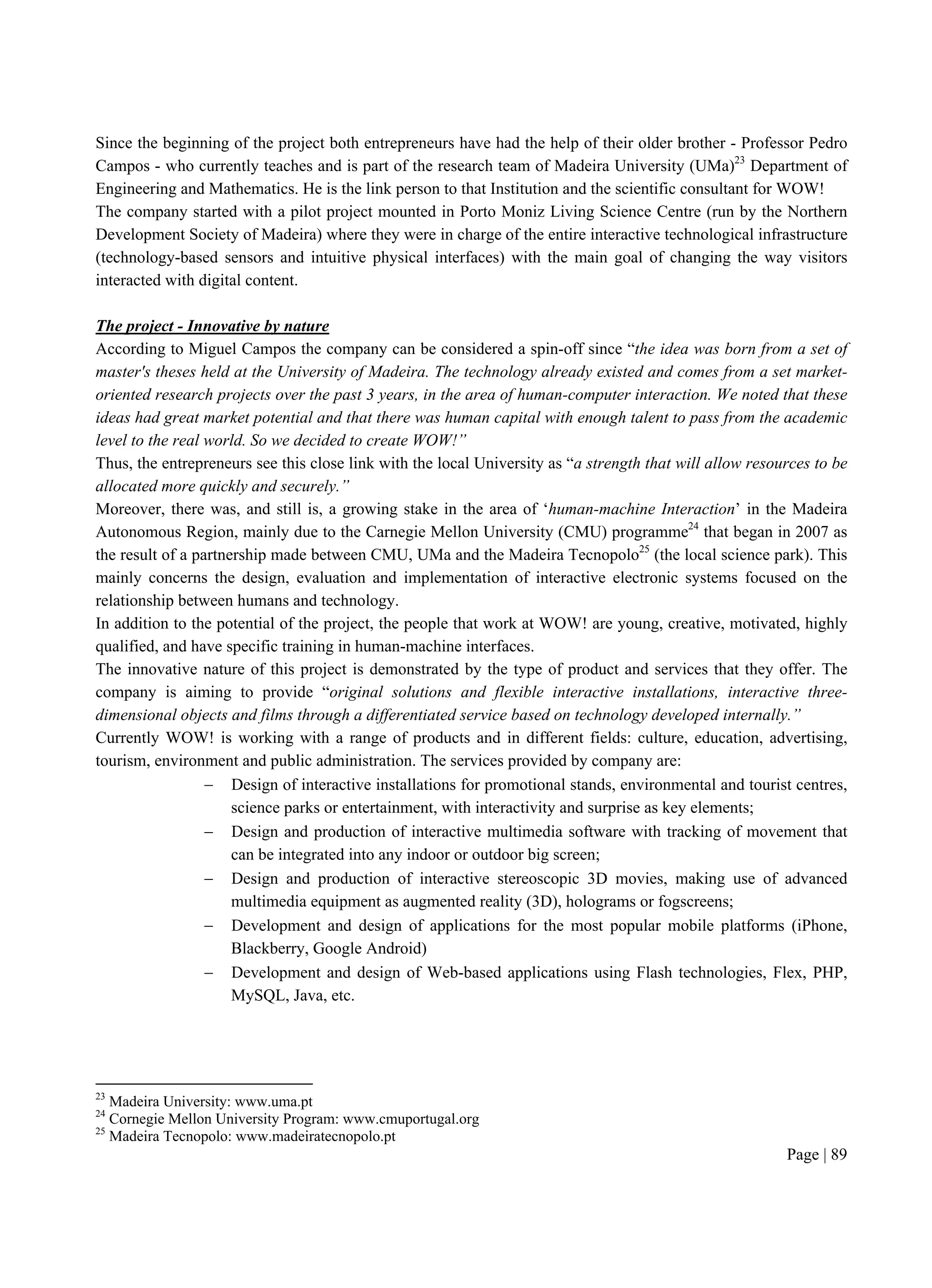
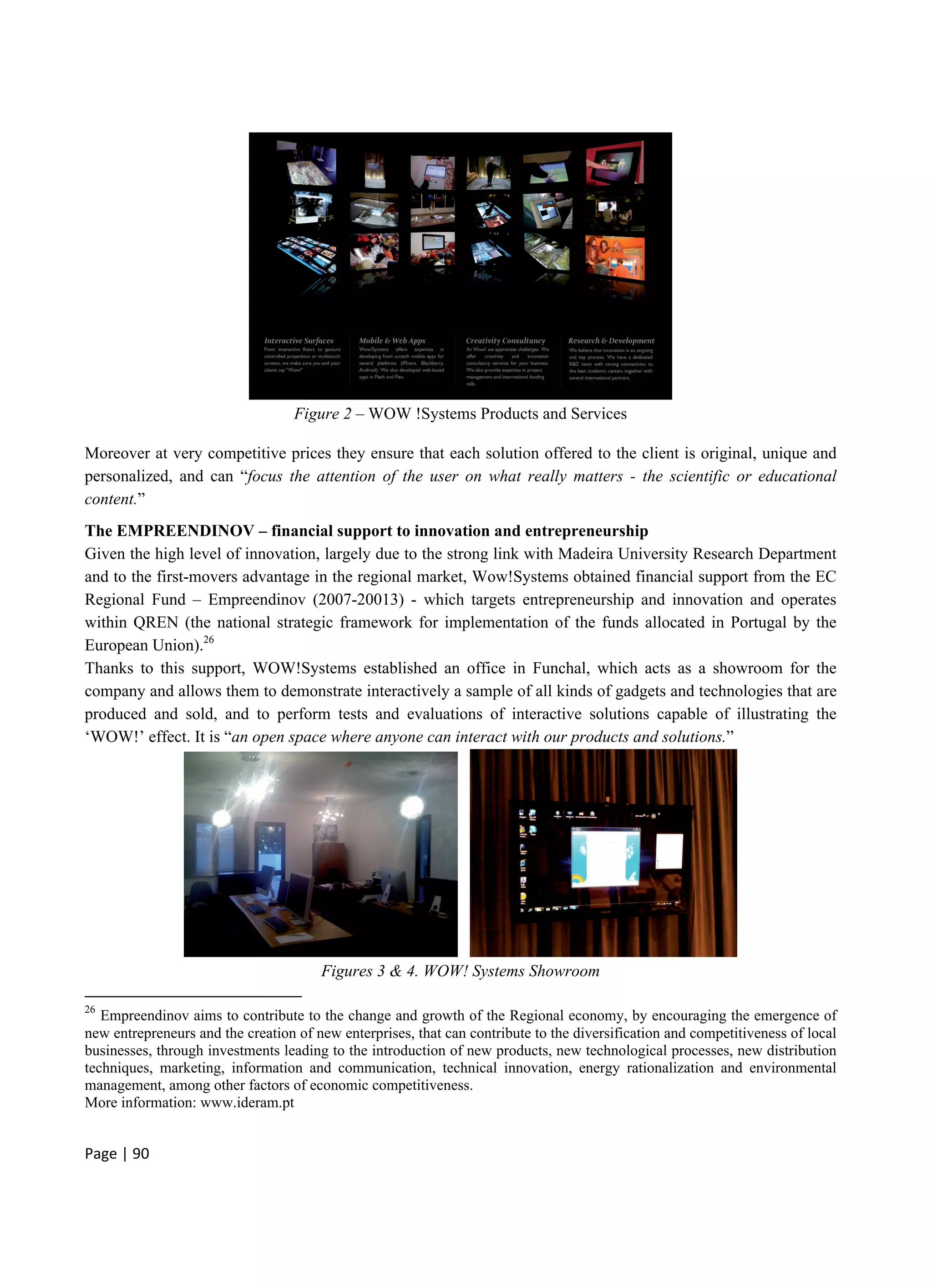
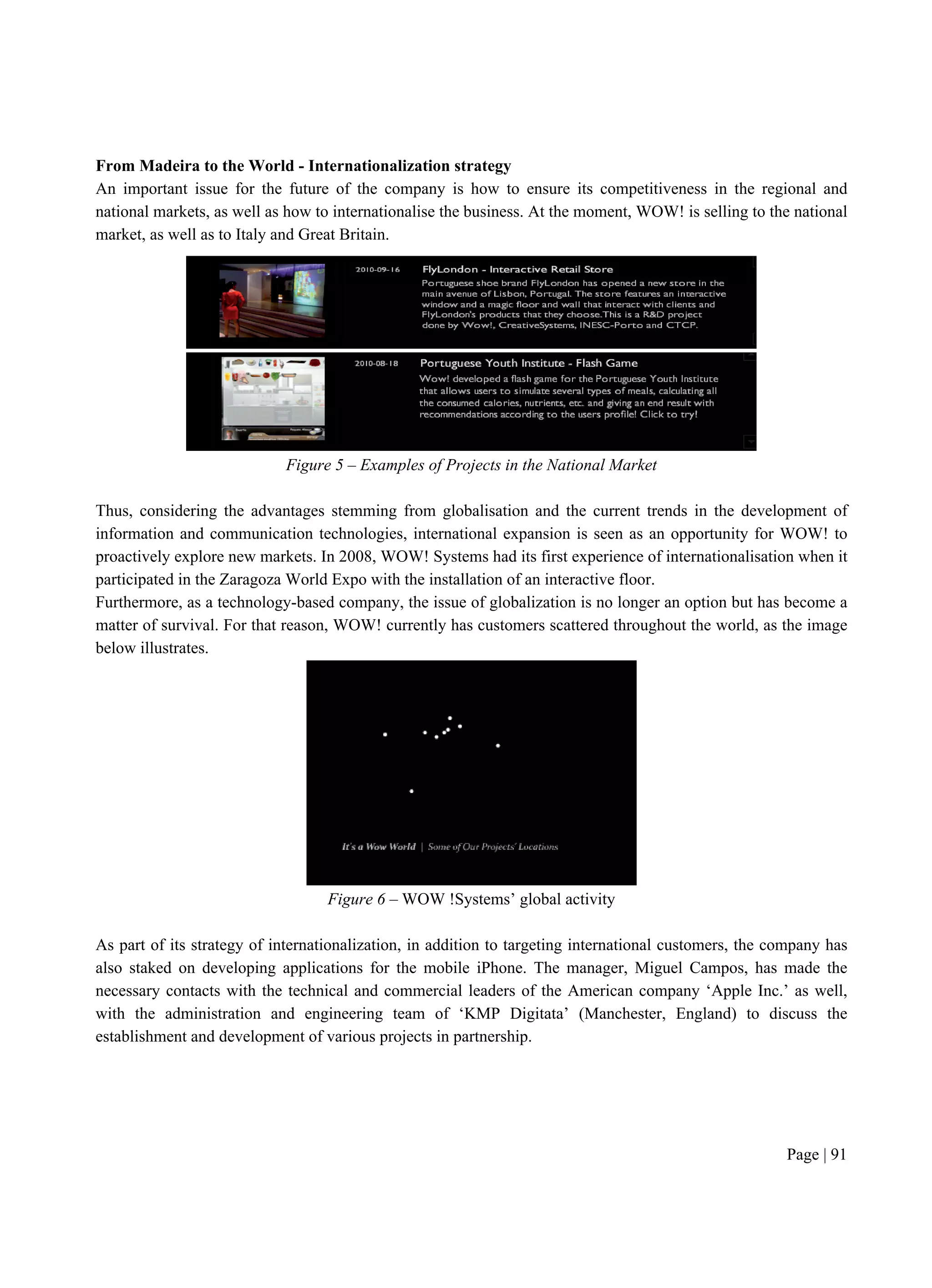

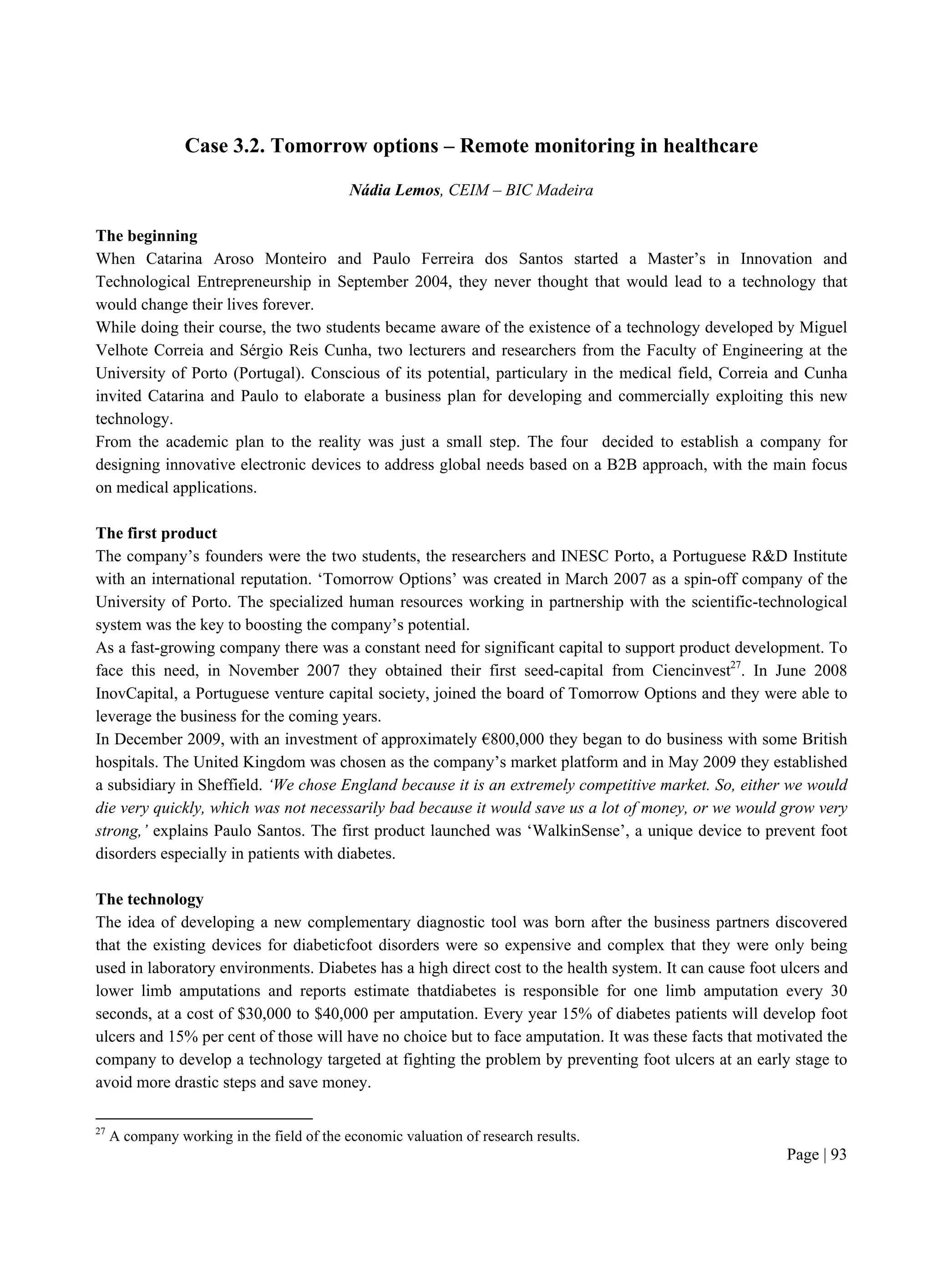
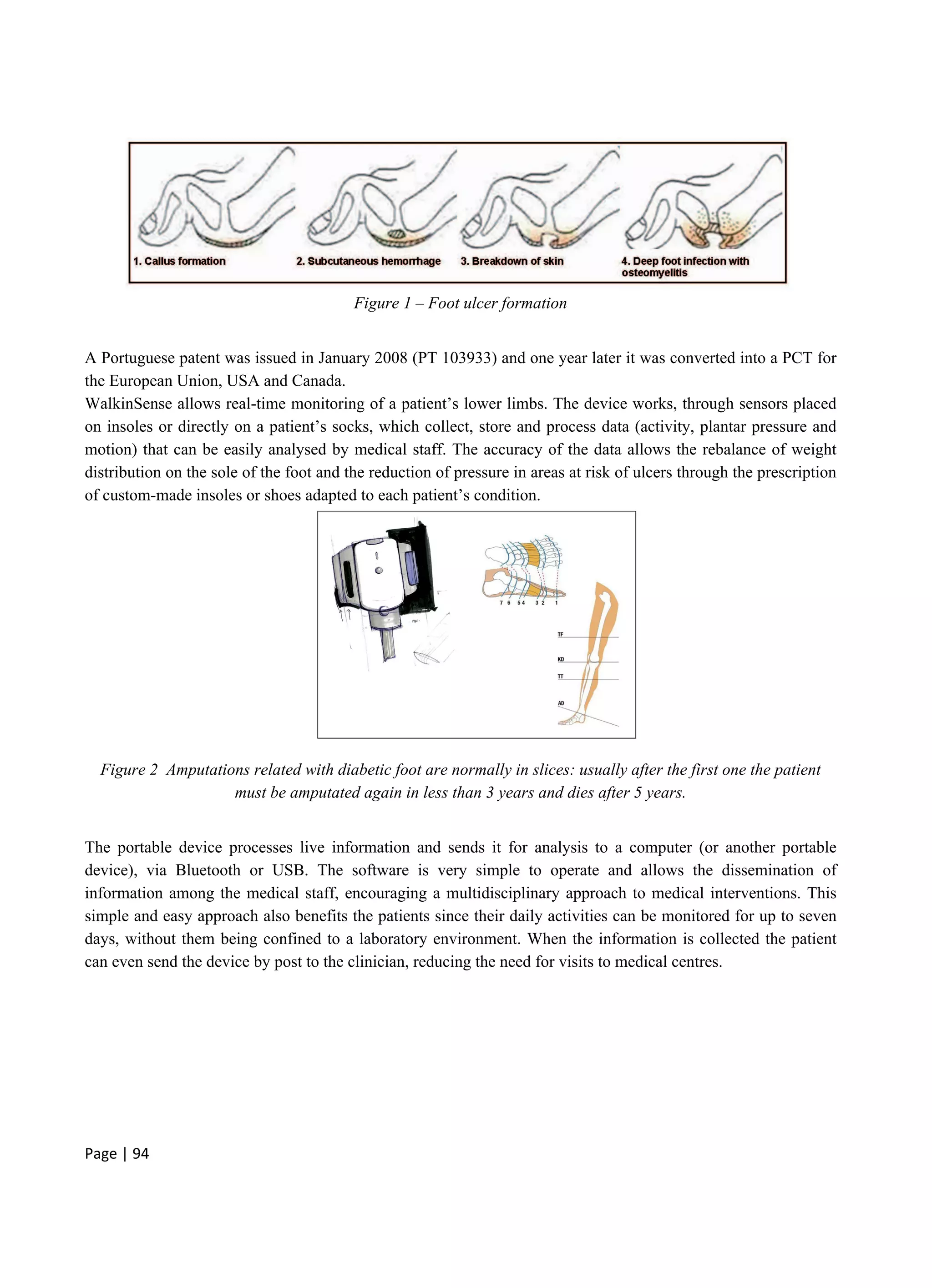
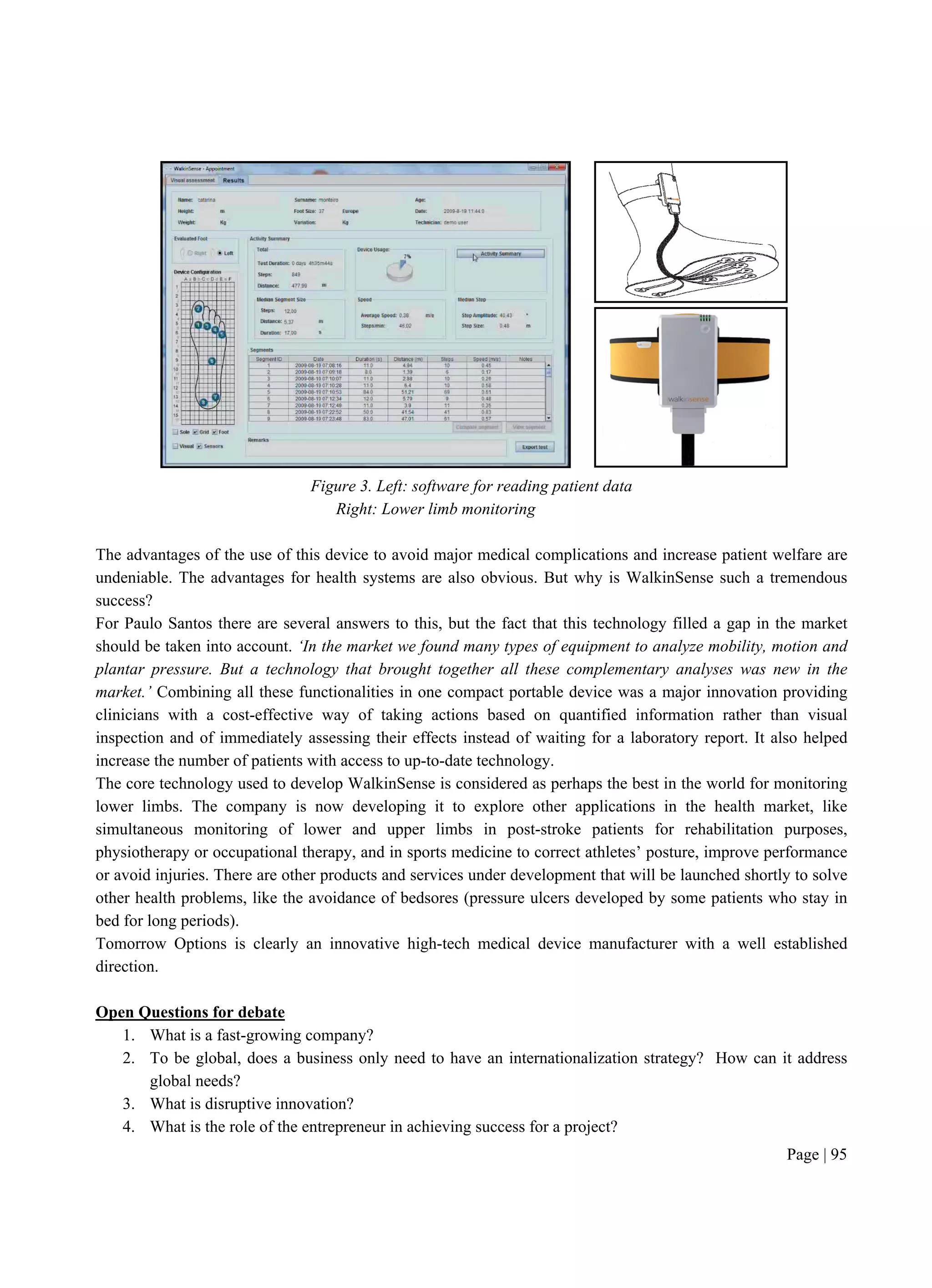

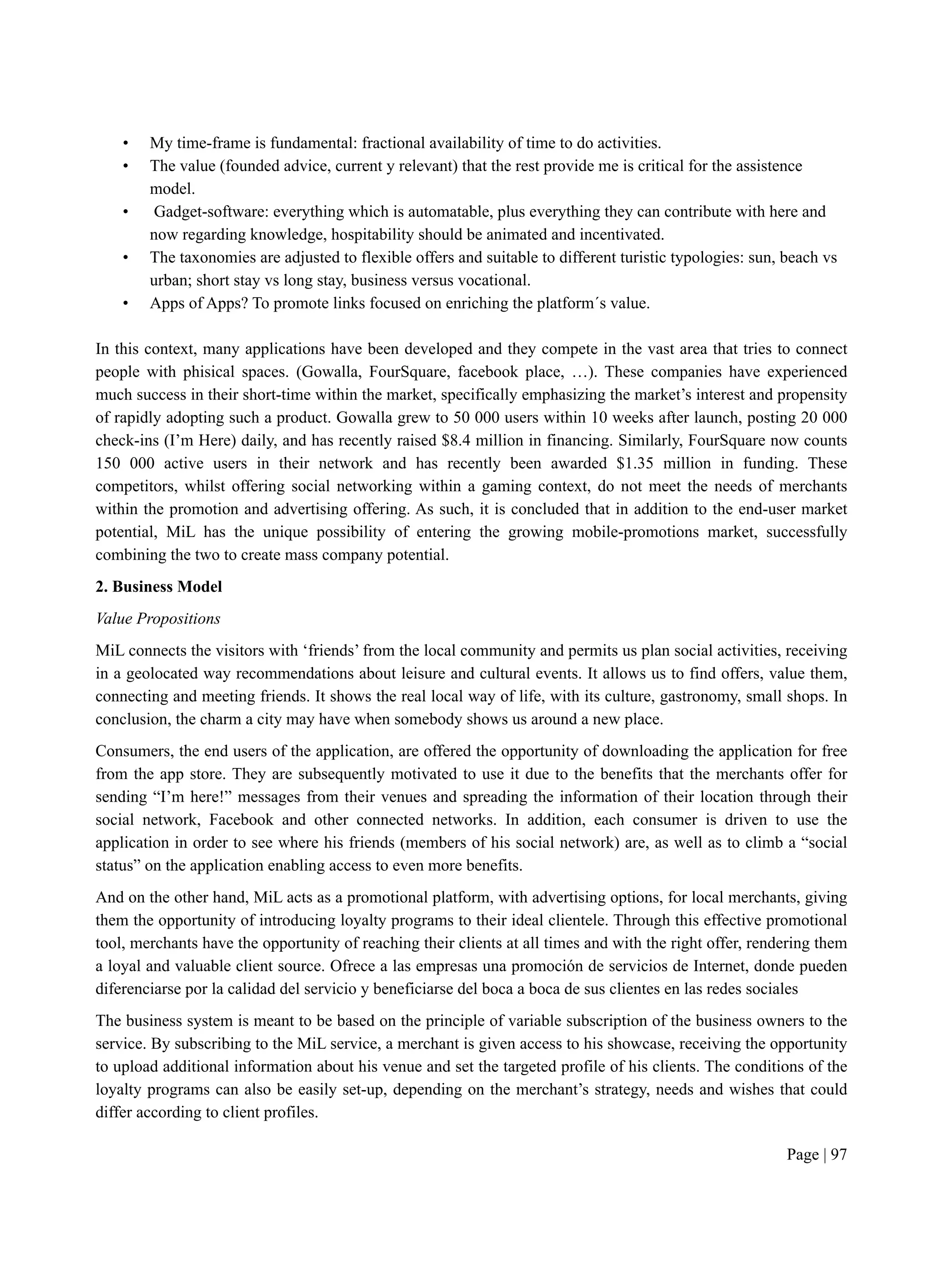
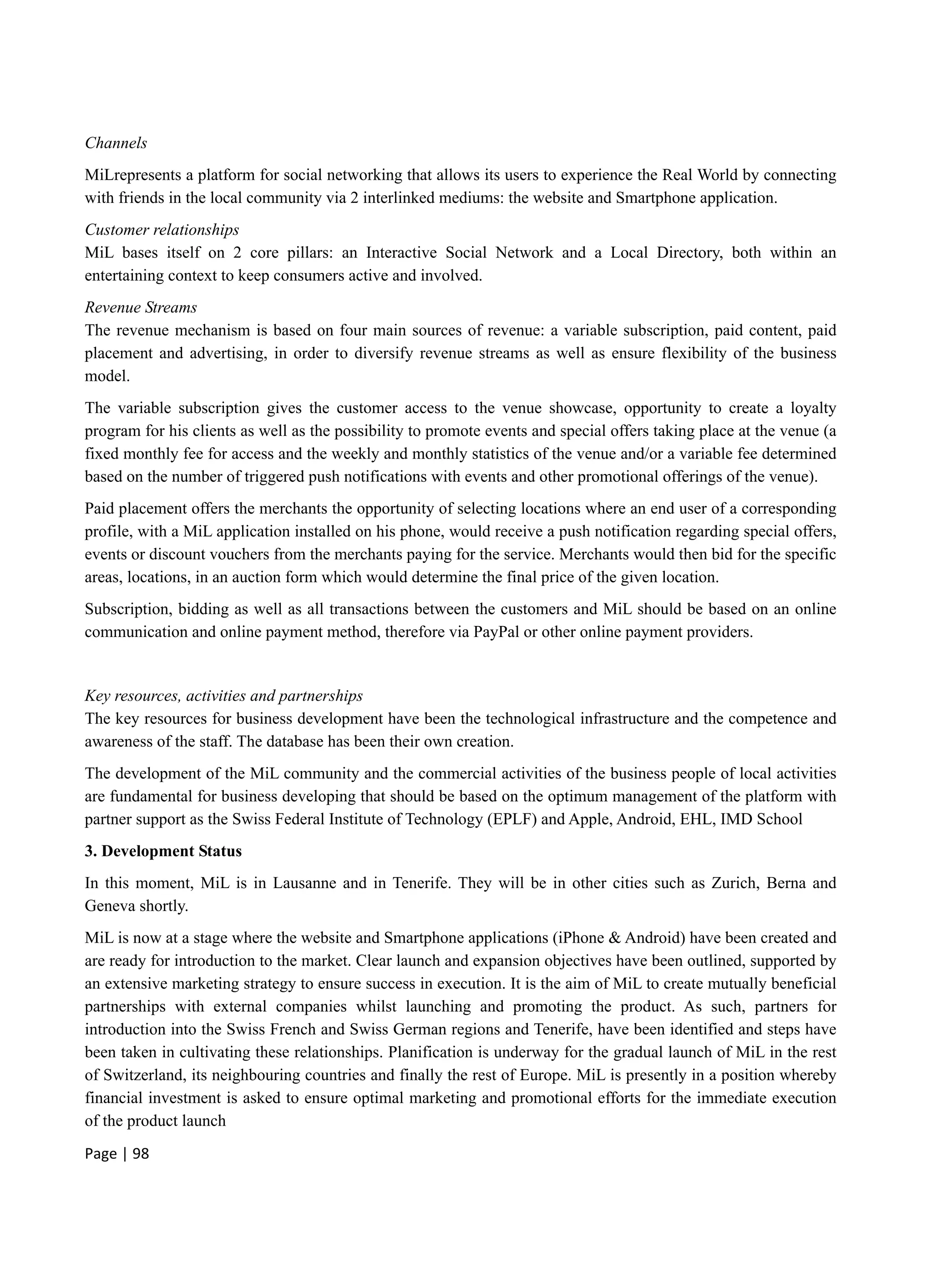
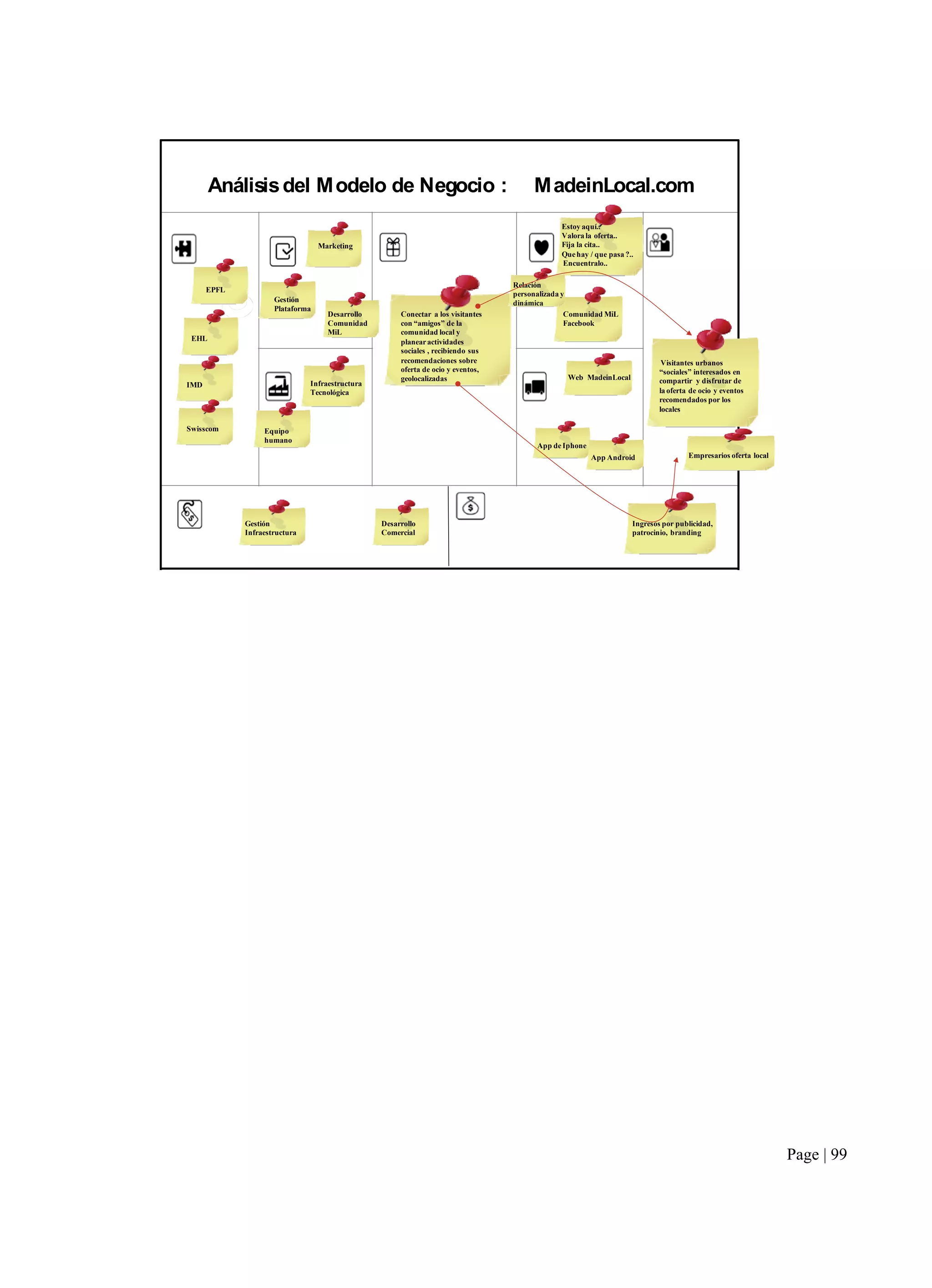
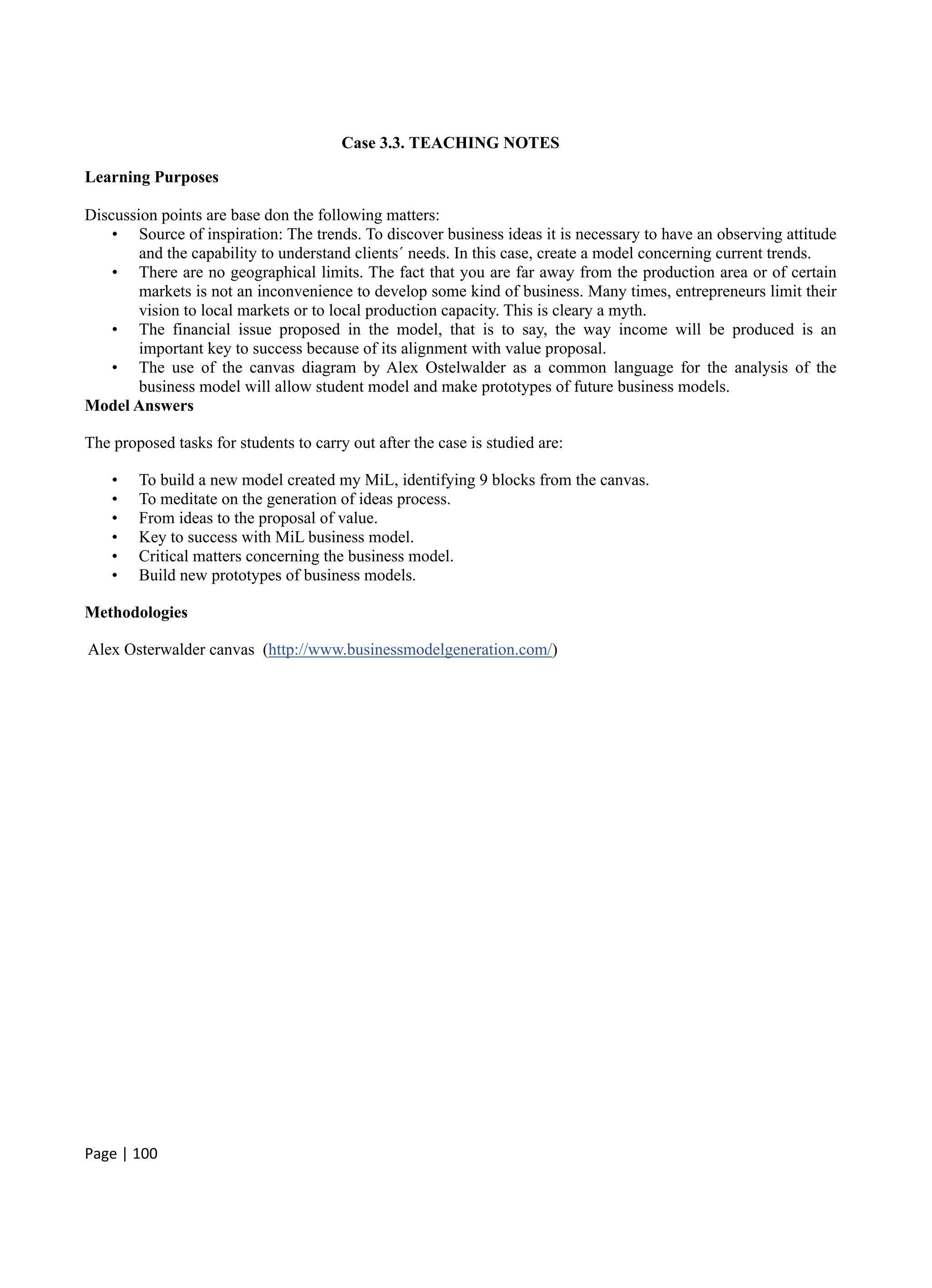
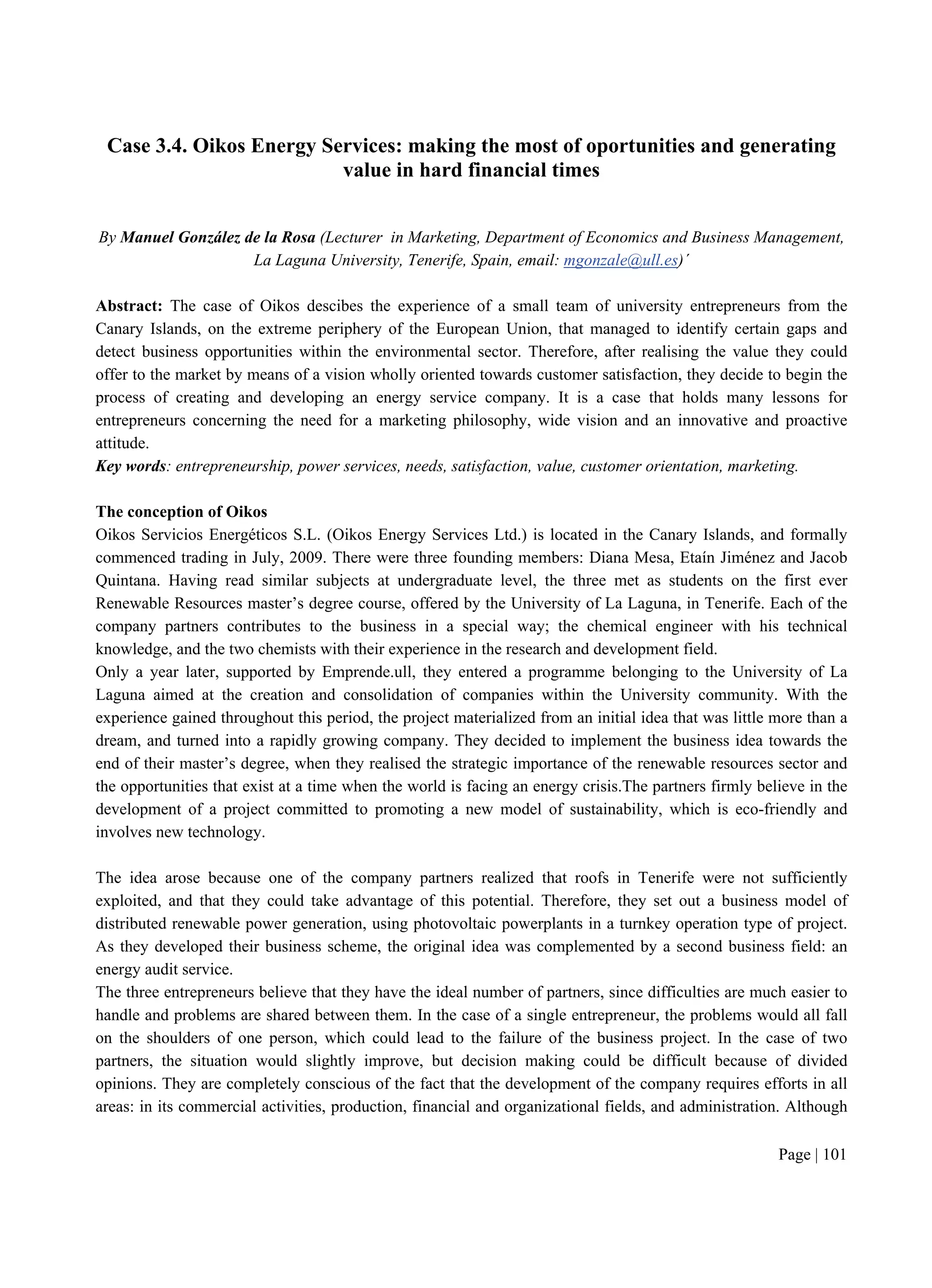
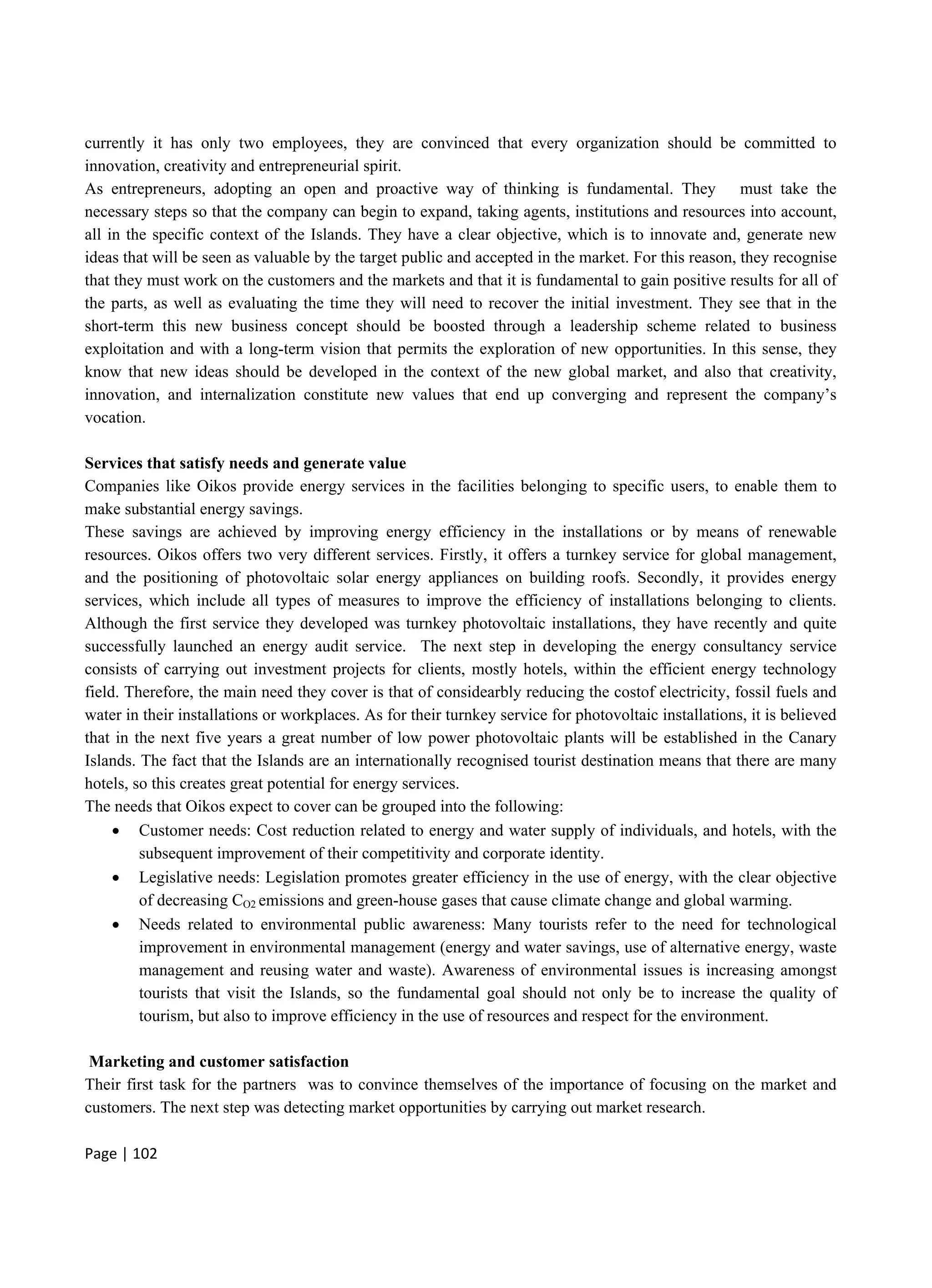
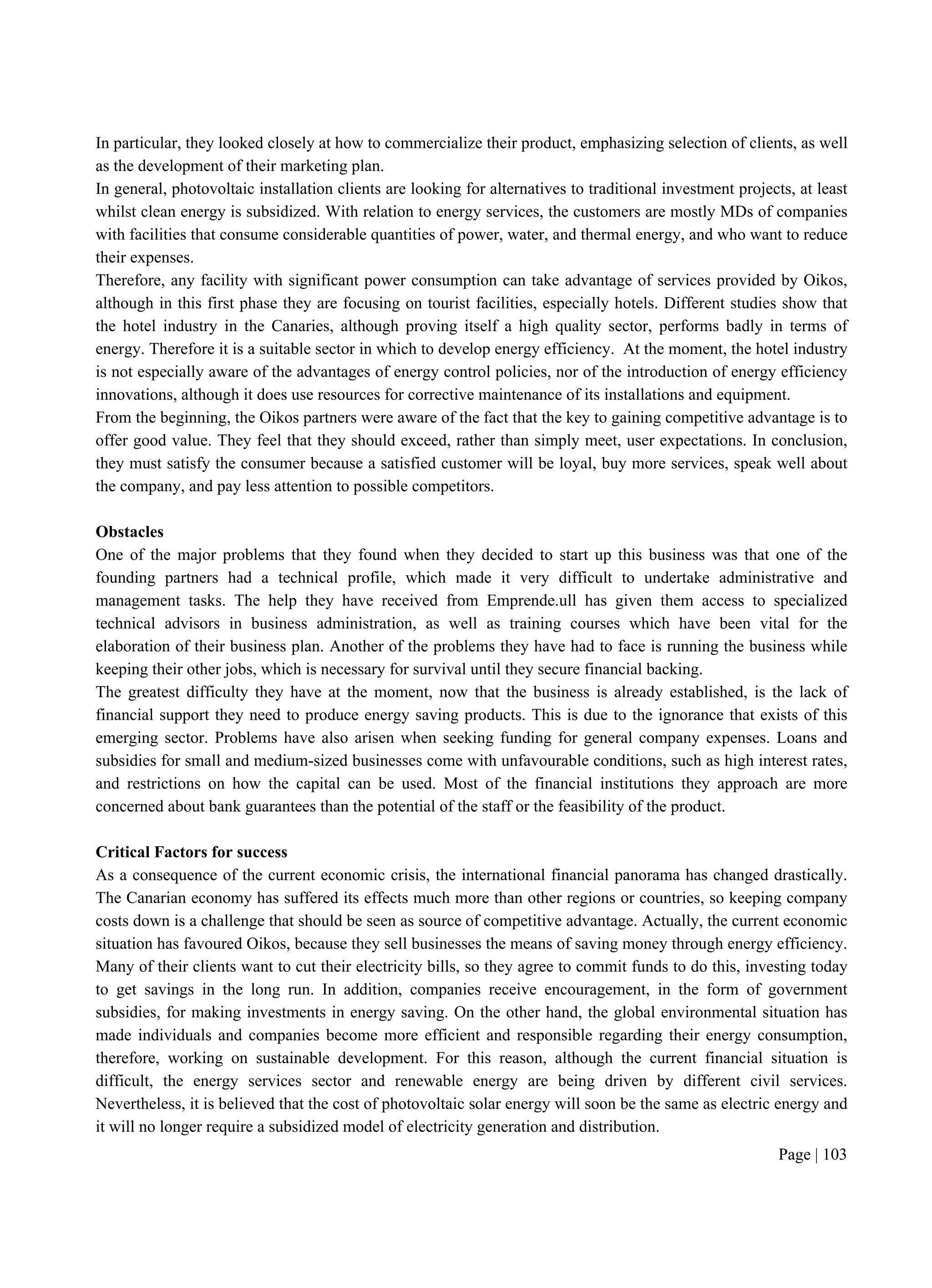
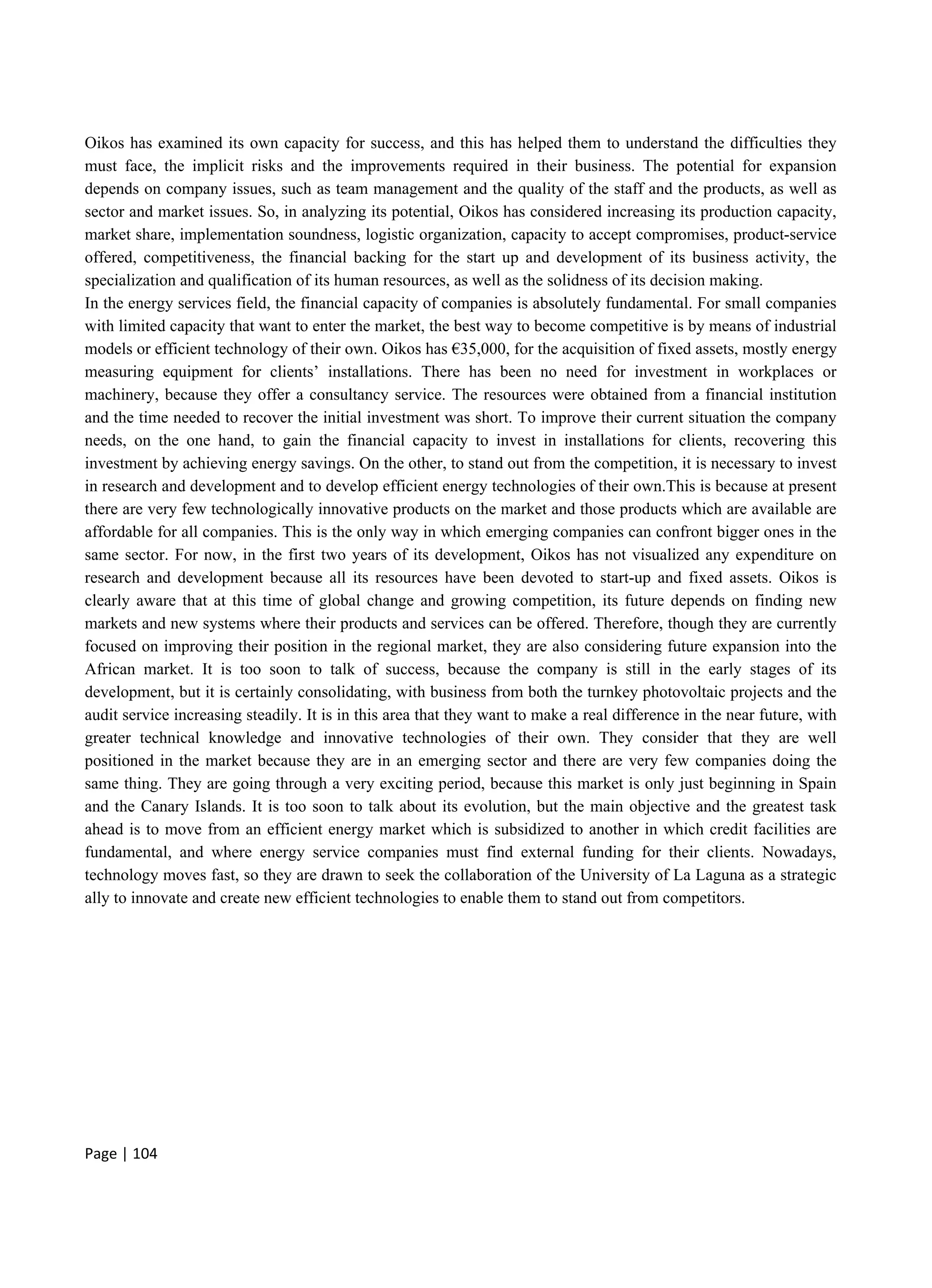
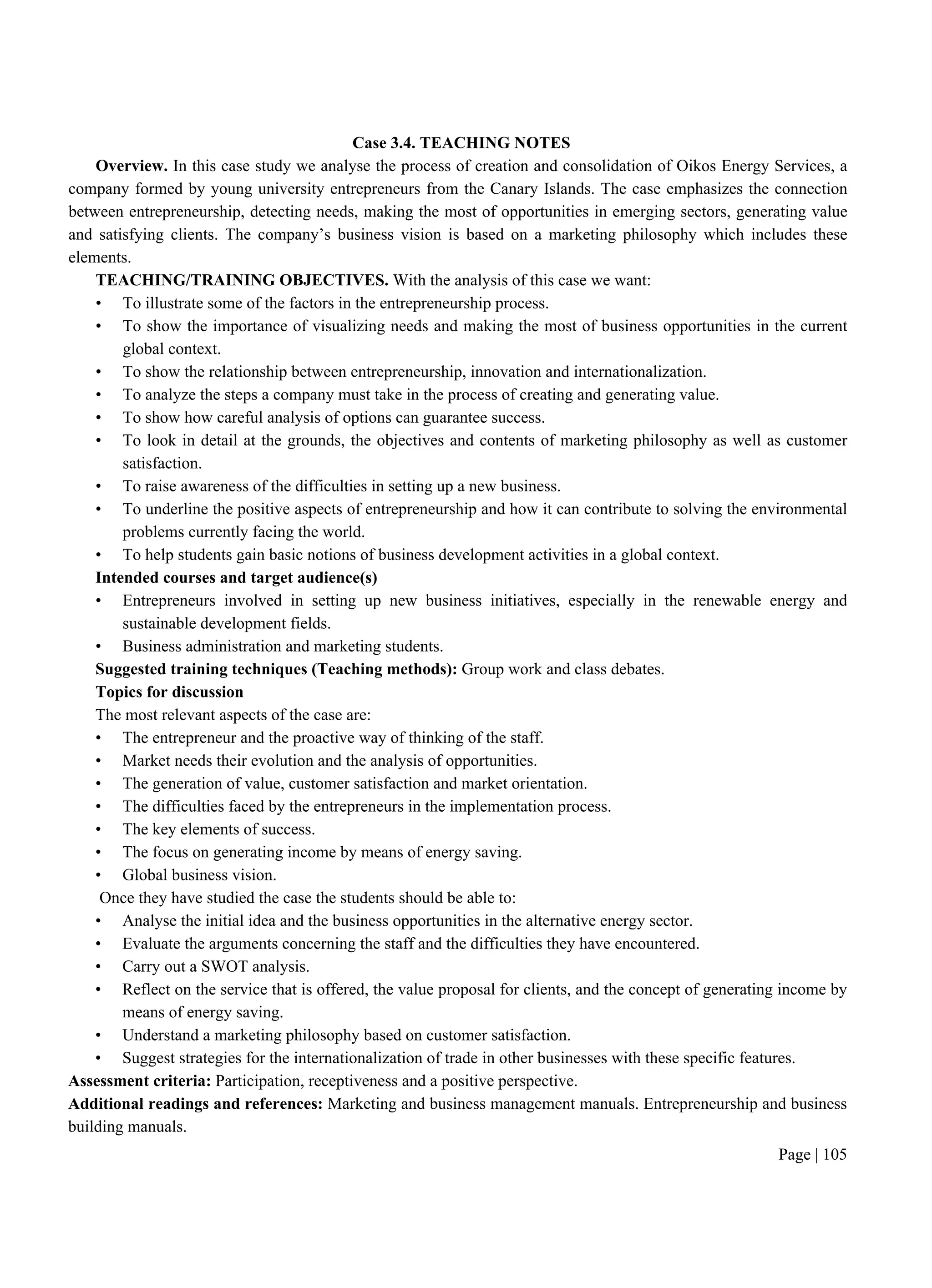
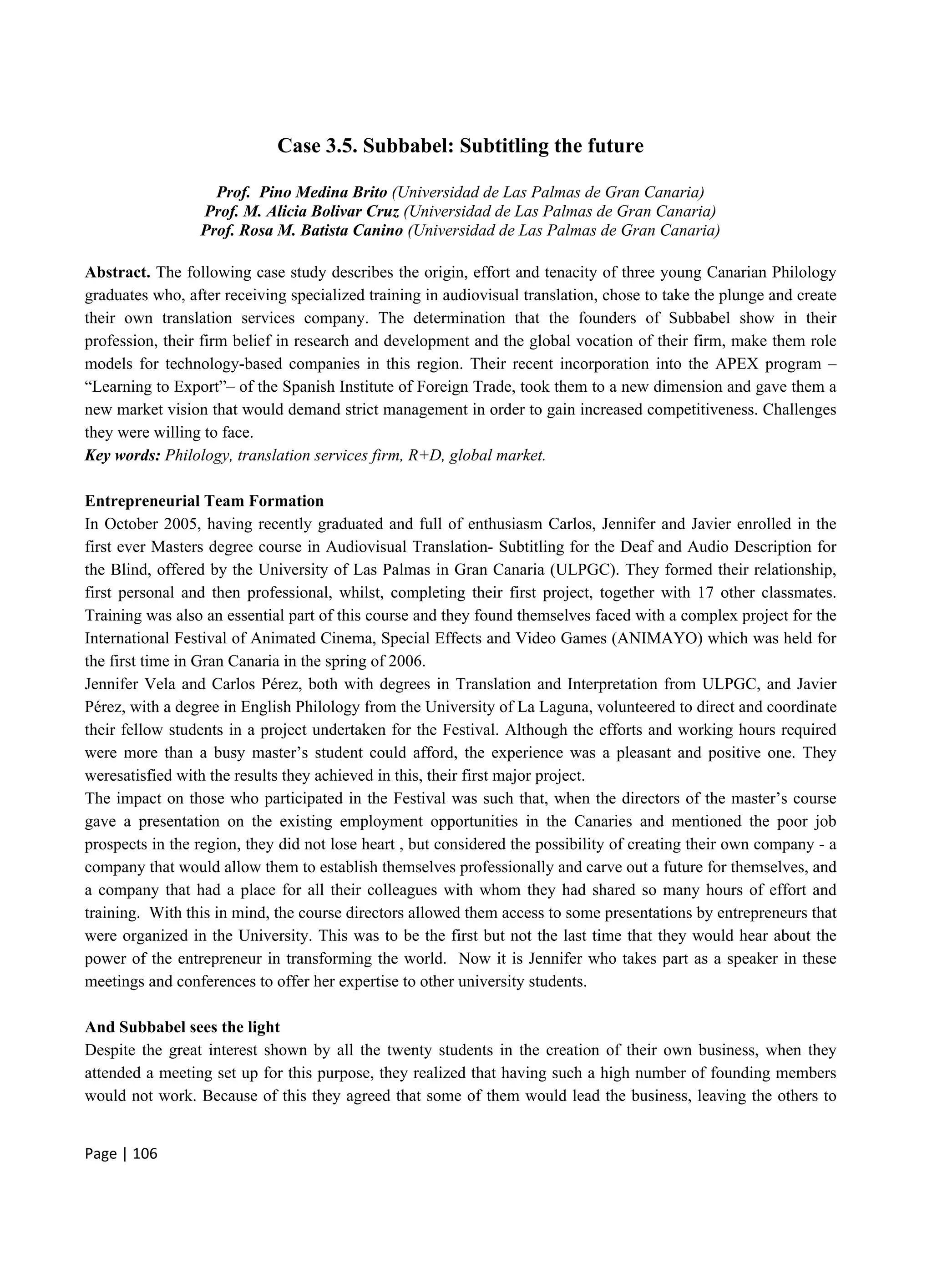

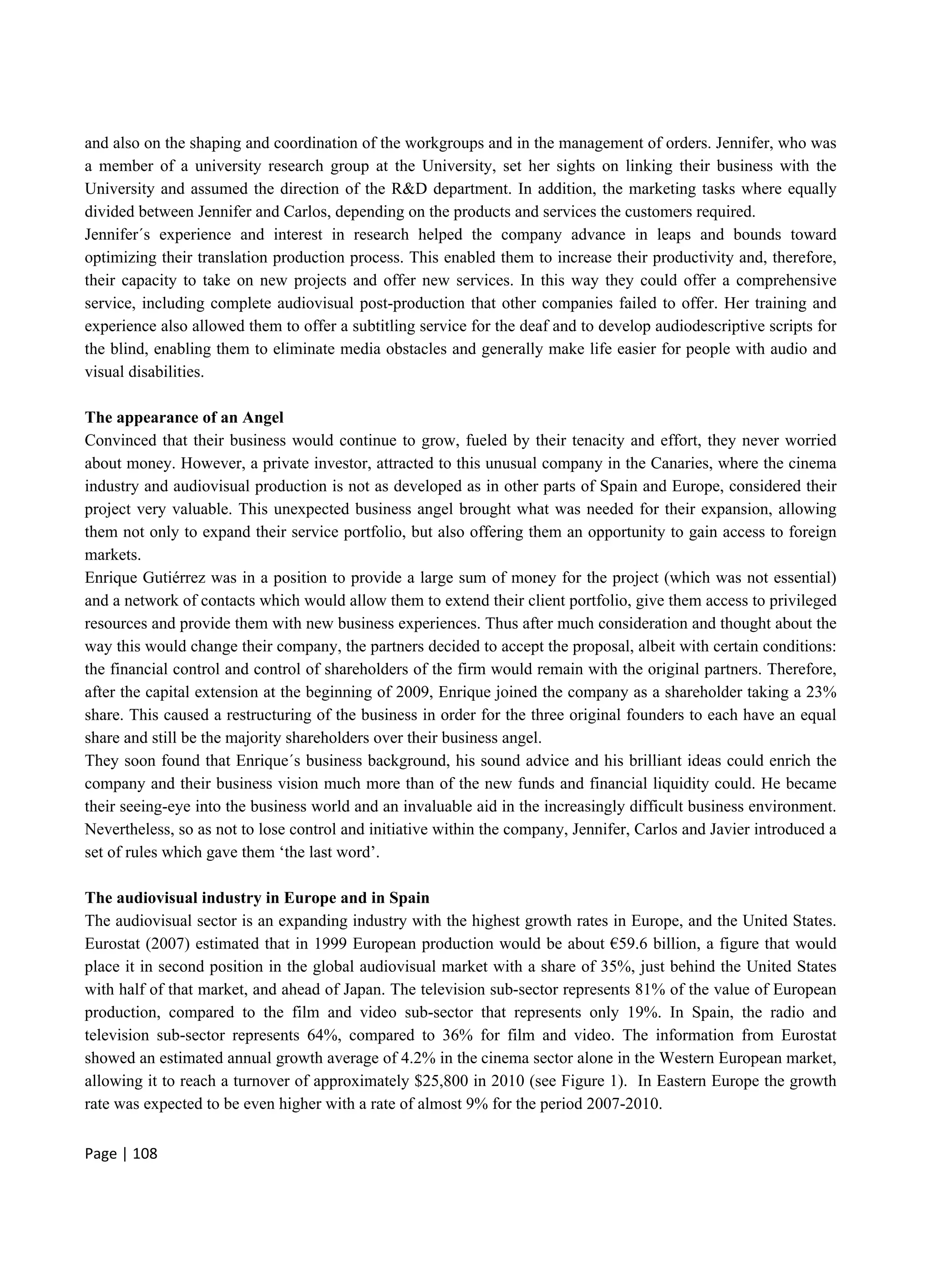
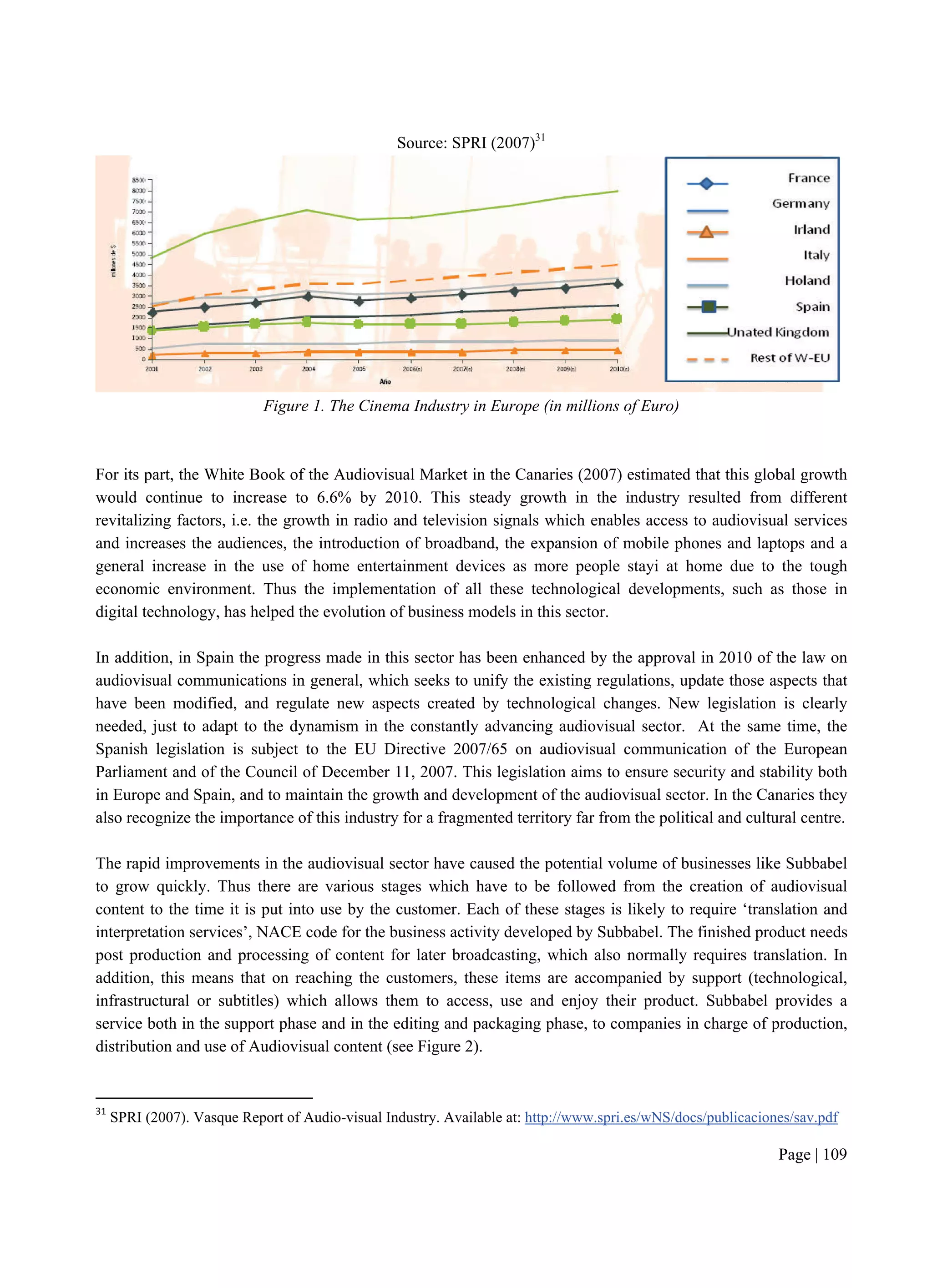
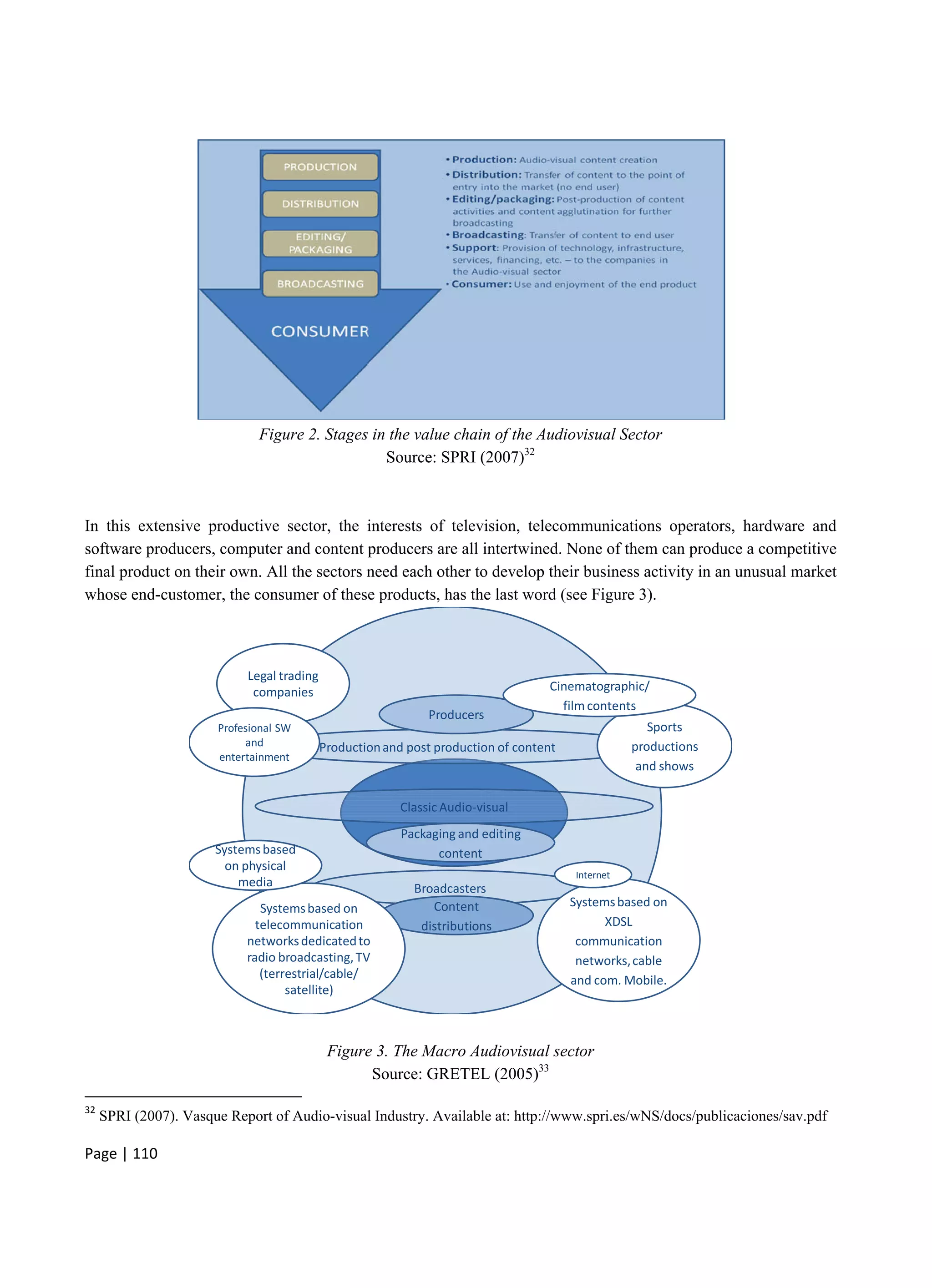
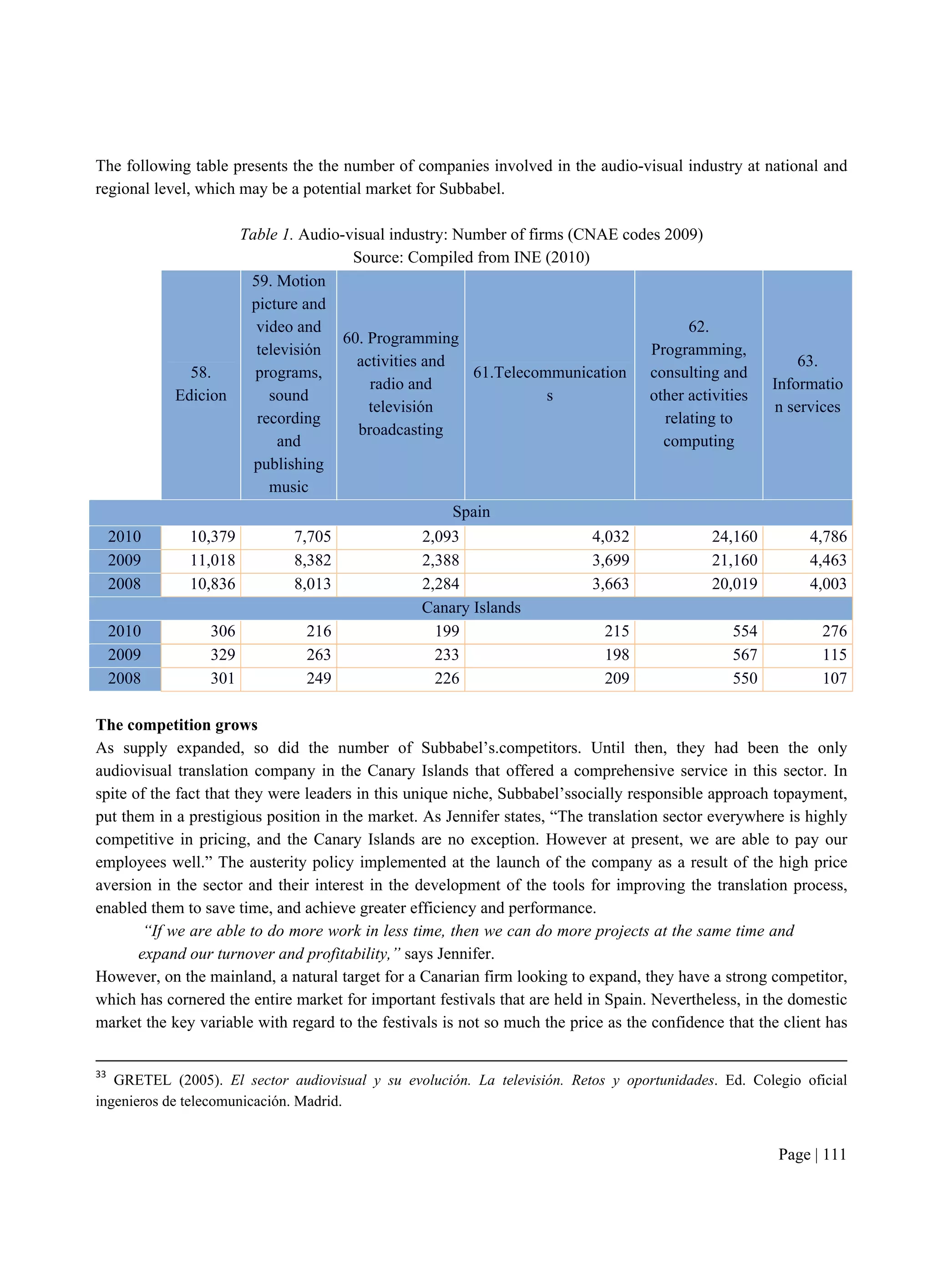
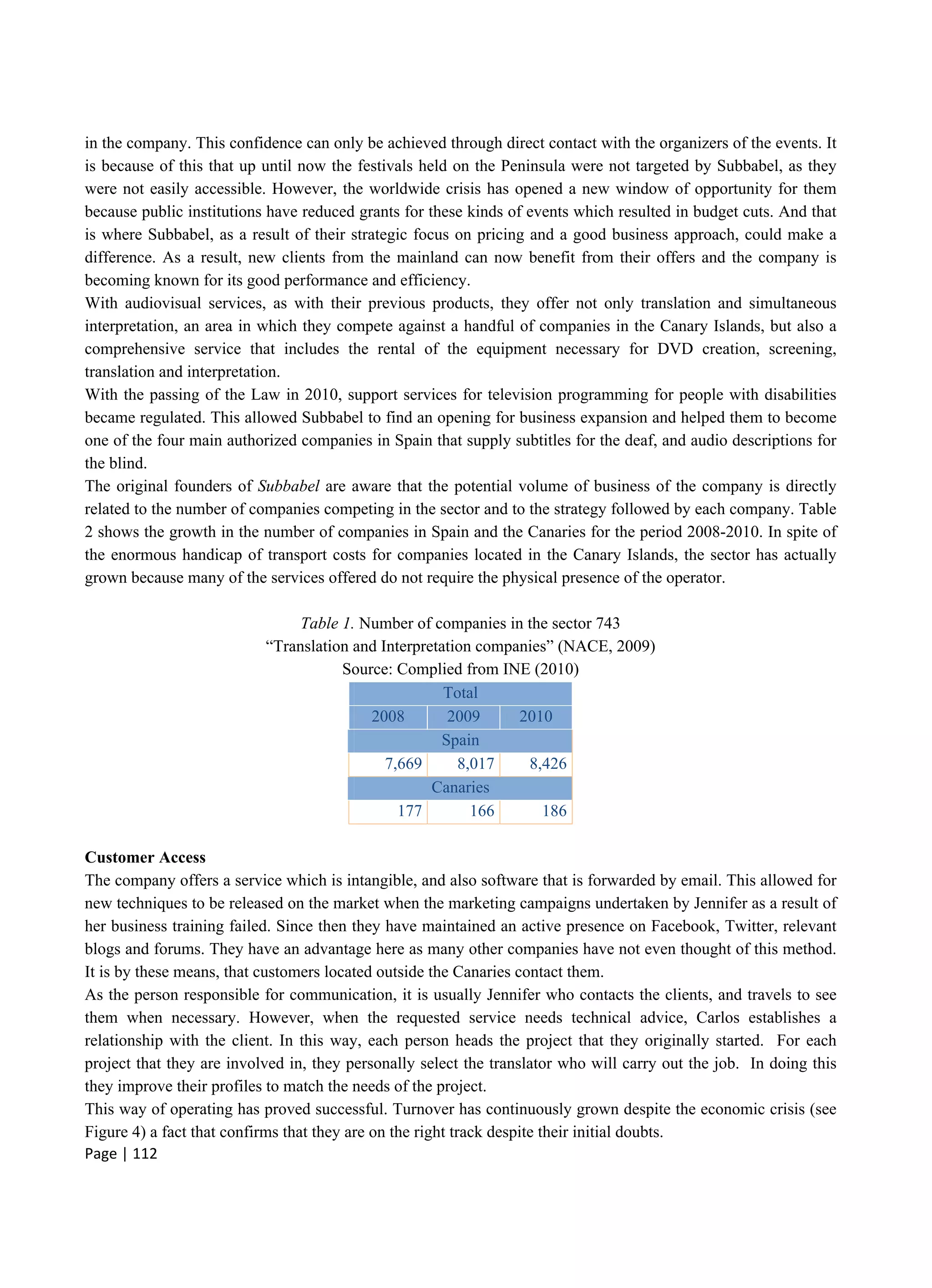
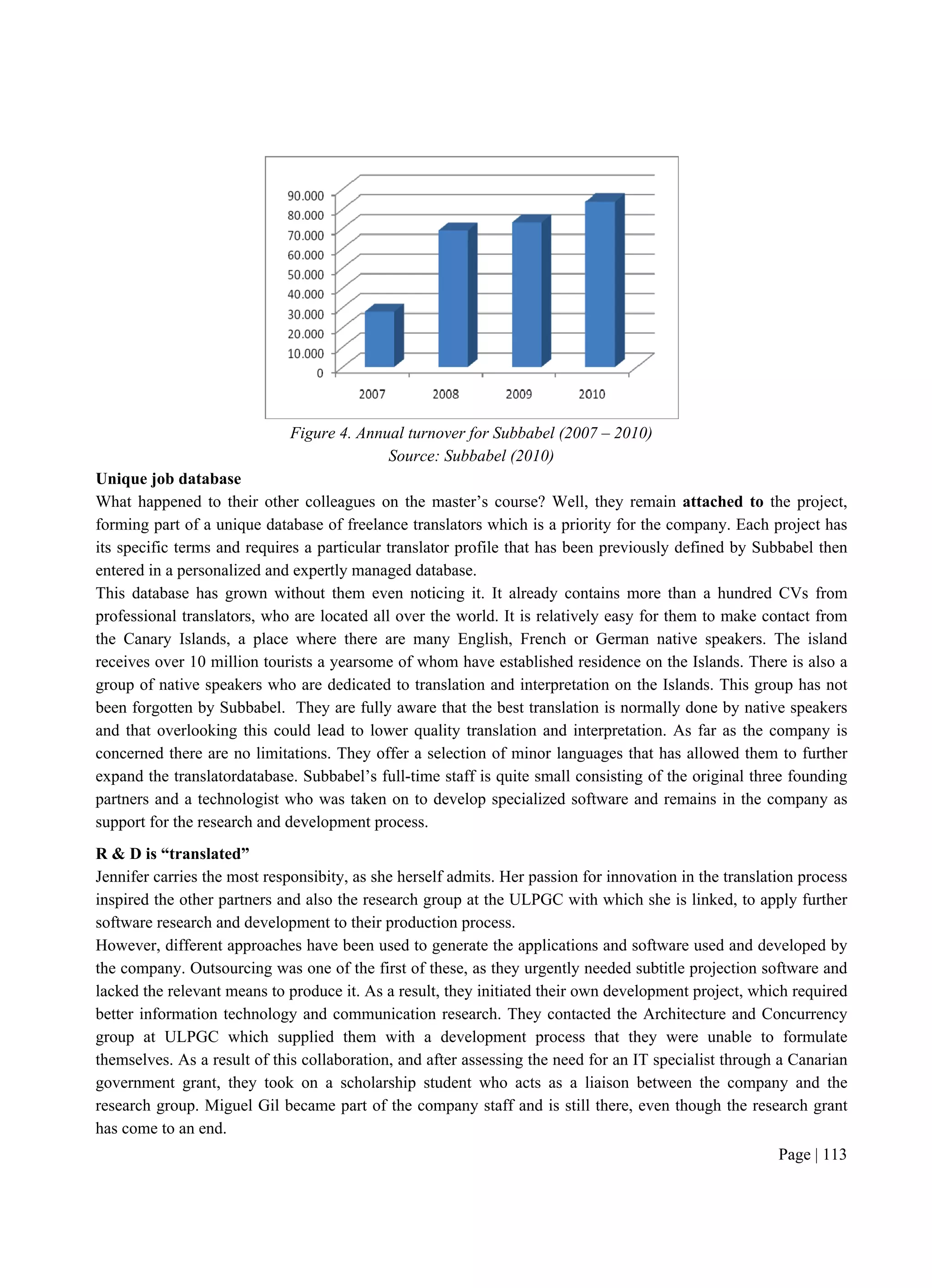
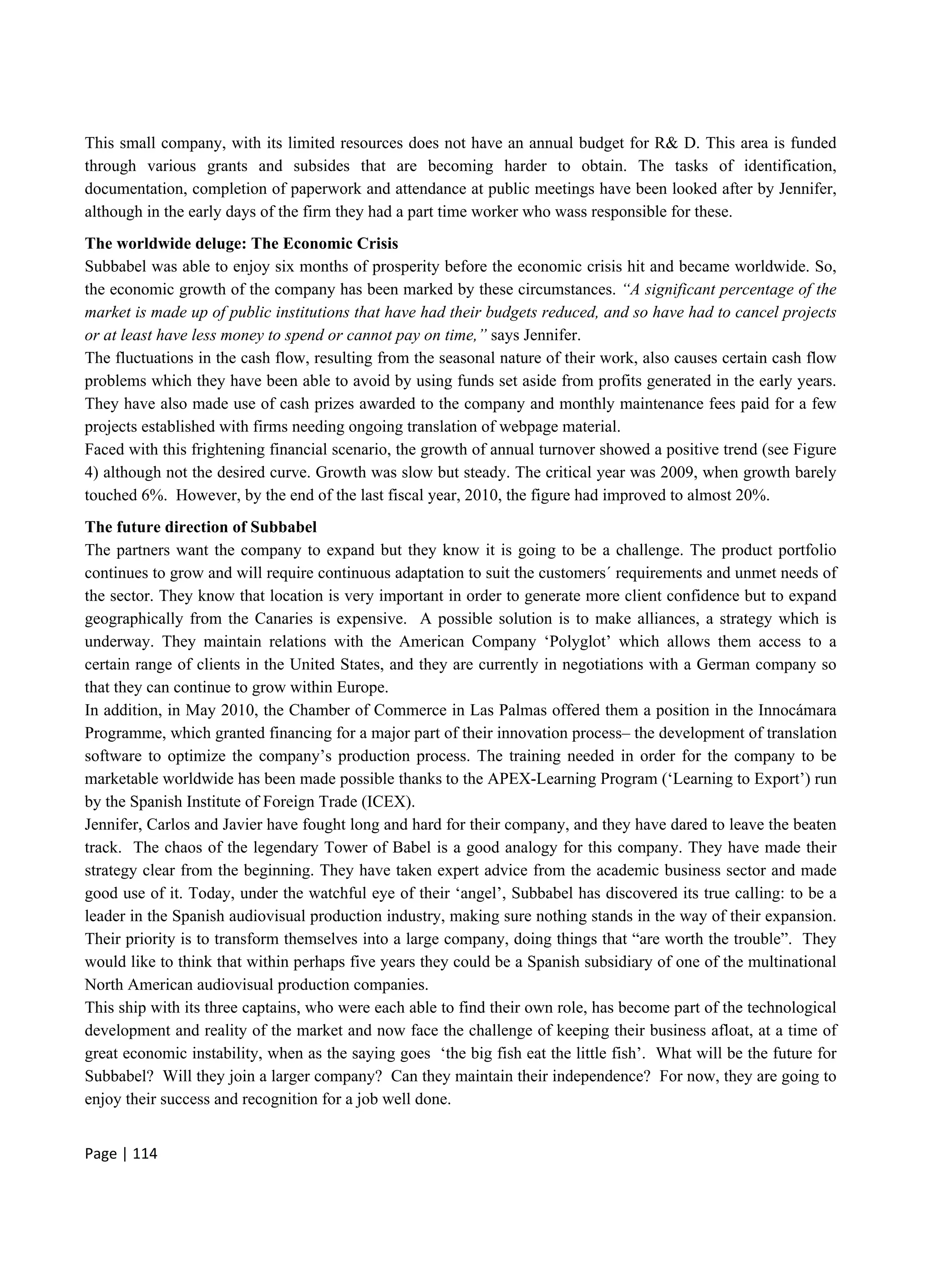
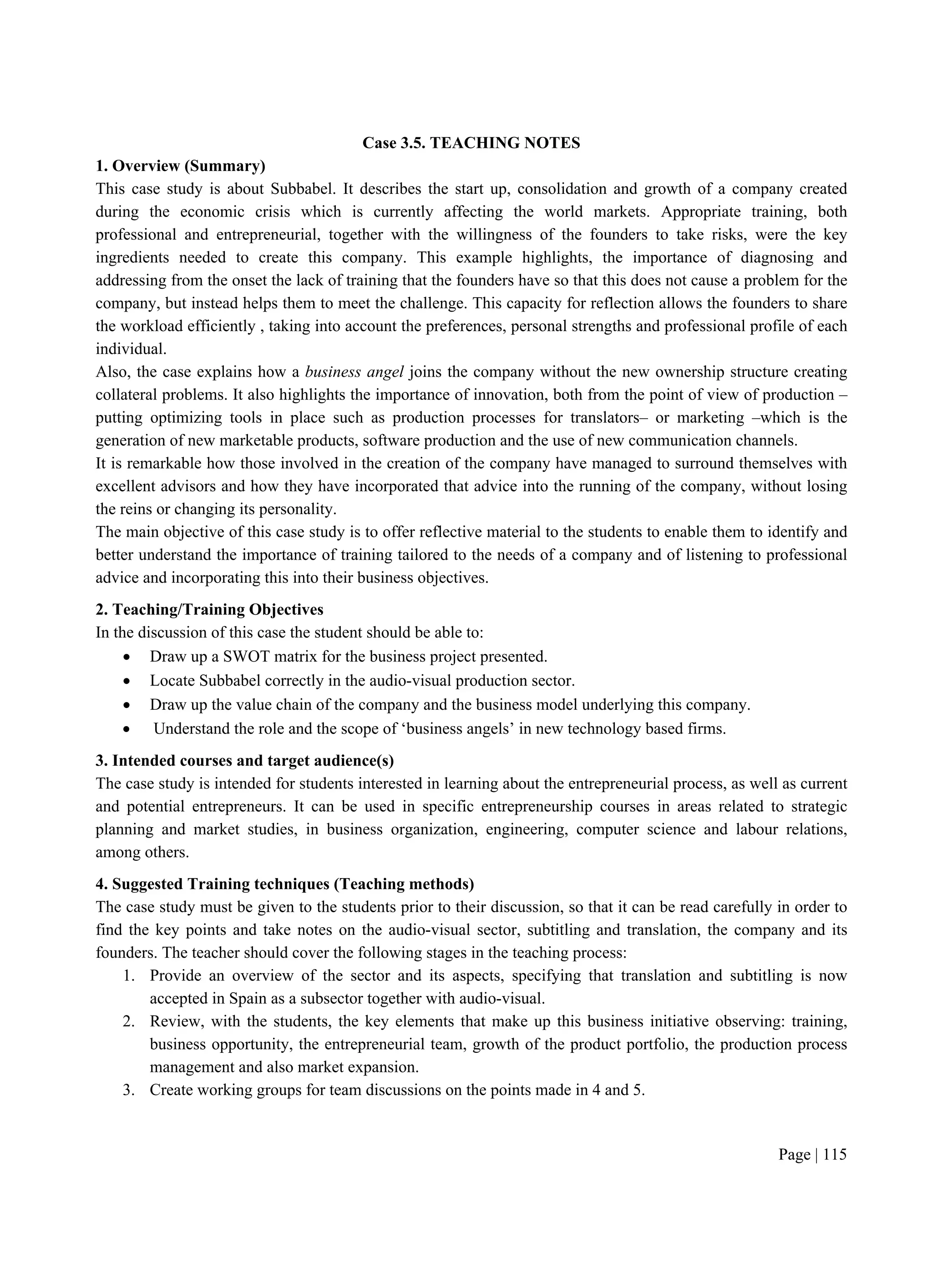
![Page | 116
4. Ask students to reflect on the general environment, the company environment, the company’s financial
plan and its model of growth.
5. Draw up future scenarios for the company, indicating how the original business model and the value
chain should evolve.
6. Presentation (by the students) of the topics debated in points 4 and 5 by the working groups.
5. Questions (Topics) for discussion
The following questions may be discussed in the working groups:
a. In relation to the general and specific environment of the firm and its own characteristics as a company:
1. What are the external environmental factors that could generate a positive impact (opportunities) or a
negative impact (threats) for the company?
2. What are the internal environmental factors which should help (strengthen) the company in the future?
3. What are the internal environmental factors should the company improve (weaknesses) or remove to
overcome competition in the market?
b. In relation to the finance plan:
1. Indentify the funding sources used by the company.
2. Indicate the advantages and disadvantages associated with these funding sources.
c. In relation to the expansion plan:
1. Indentify the internal and external growth plans used by the company.
2. Indentify the possible problems or consequences associated with those growth plans.
d. How do you think the company will evolve in the near future considering your answers to the previous
questions (a, b and c)?
6. Assessment criteria:
The following criteria may be followed for the evaluation of the students:
Preparation of the case study (10%) - the teacher can calculate the grade based on the effort that the student
has put into the preparation of the case study. Having an overview of the key elements of the case study could be
helpful in this.
Situation/summary report (50%) - the workgroup/group should submit a written report (45%) and an oral
report (5%) in which they respond to the questions raised in questions a, b and c.
Future proposal (40%) - the working group should submit a brief written report of no more than one page
(35%) and an oral report (5%) in which they respond to question d.
7. Additional readings and references
[1] GOBIERNO AUTÓNOMO DE CANARIAS. 2007. Libro Blanco del Audiovisual Canario. Available at:
http://www.objetivocanarias.com/documentacion/OCDOC0103.pdf
[2] Emerging Technology Applied to Language and Literature Research Group: http://www.gi.ulpgc.es/tell/
[3] FUNDACIÓN ‘COTEC’ PARA LA INNOVACIÓN TECNOLÓGICA. 2010. Televisión y cultura
innovadora. Un análisis de programas con audiencia. Madrid: COTEC.
[4] SPRI. 2007. Vasque Report of Audio-visual Industry. Available at:
http://www.spri.es/wNS/docs/publicaciones/sav.pdf
[5] GRETEL. 2005. El sector audiovisual y su evolución. La televisión. Retos y oportunidades. Madrid:Colegio
oficial ingenieros de telecomunicación
Case study authors:
Prof. M. Pino Medina Brito (Las Palmas de Gran Canaria University)
Prof. Rosa M. Batista Canino (Las Palmas de Gran Canaria University)](https://image.slidesharecdn.com/casestudiesbookb5tosent11-151109112812-lva1-app6891/75/Case-studies-book_b5_to_sent_1_1-118-2048.jpg)
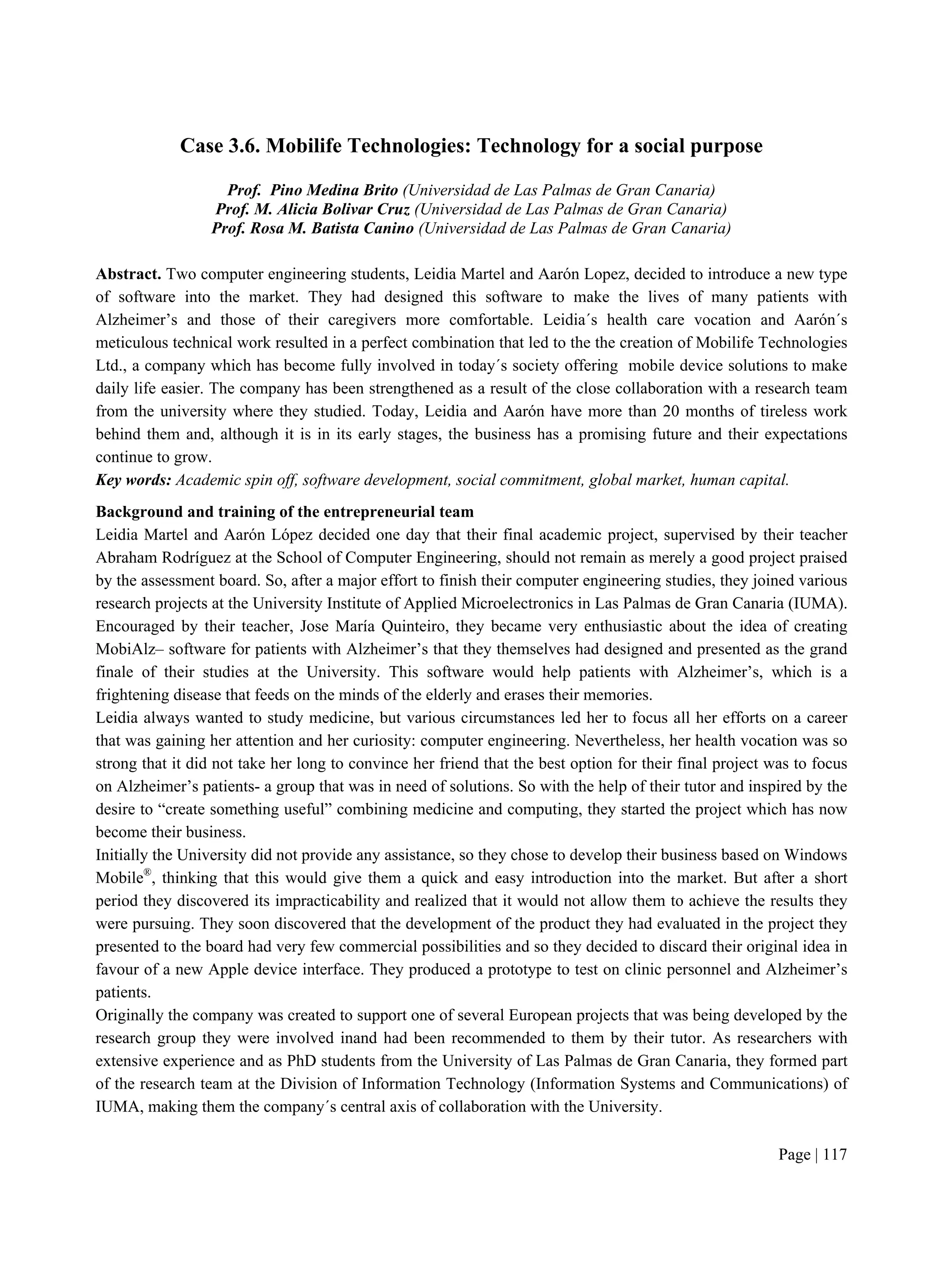

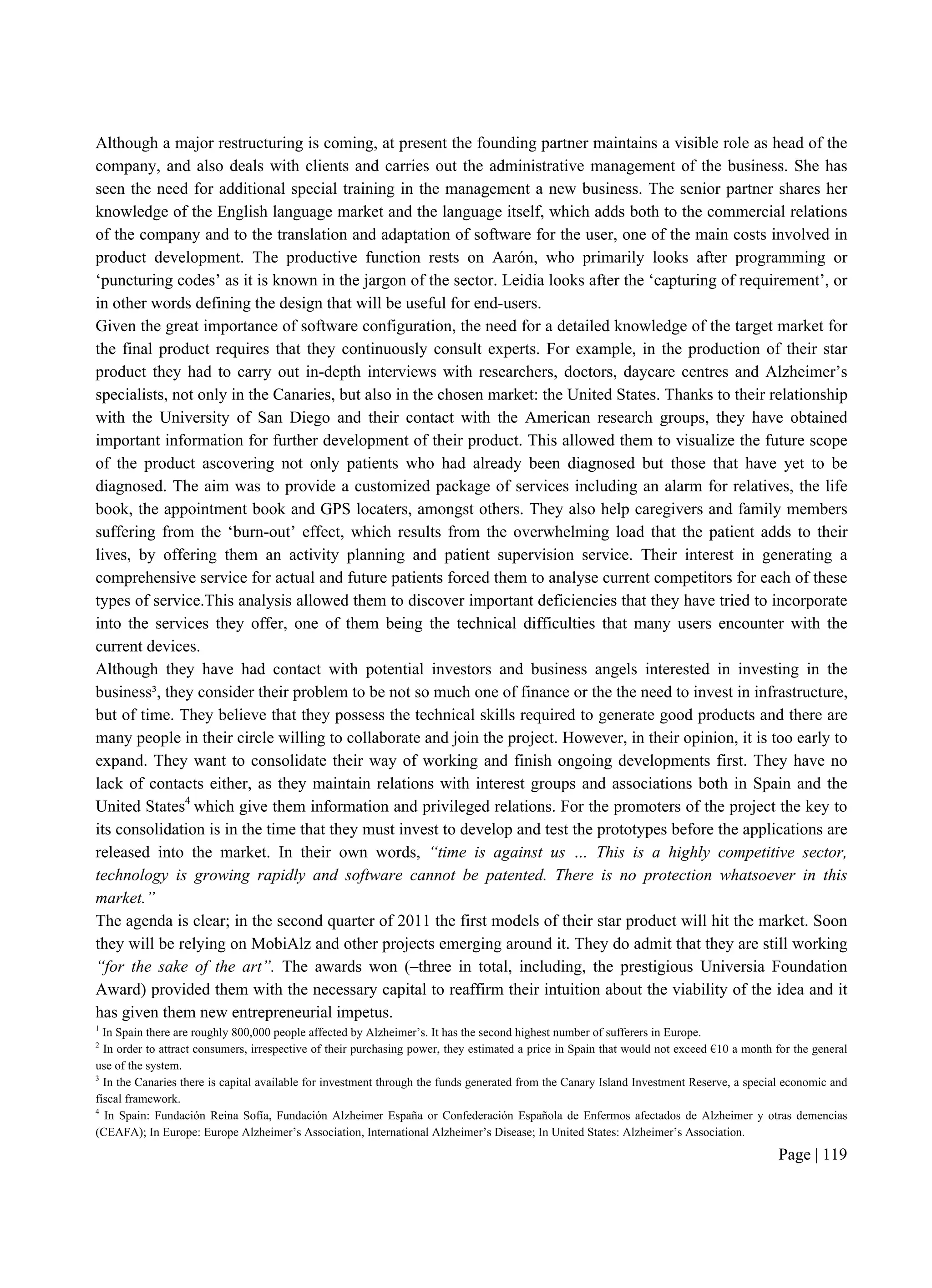
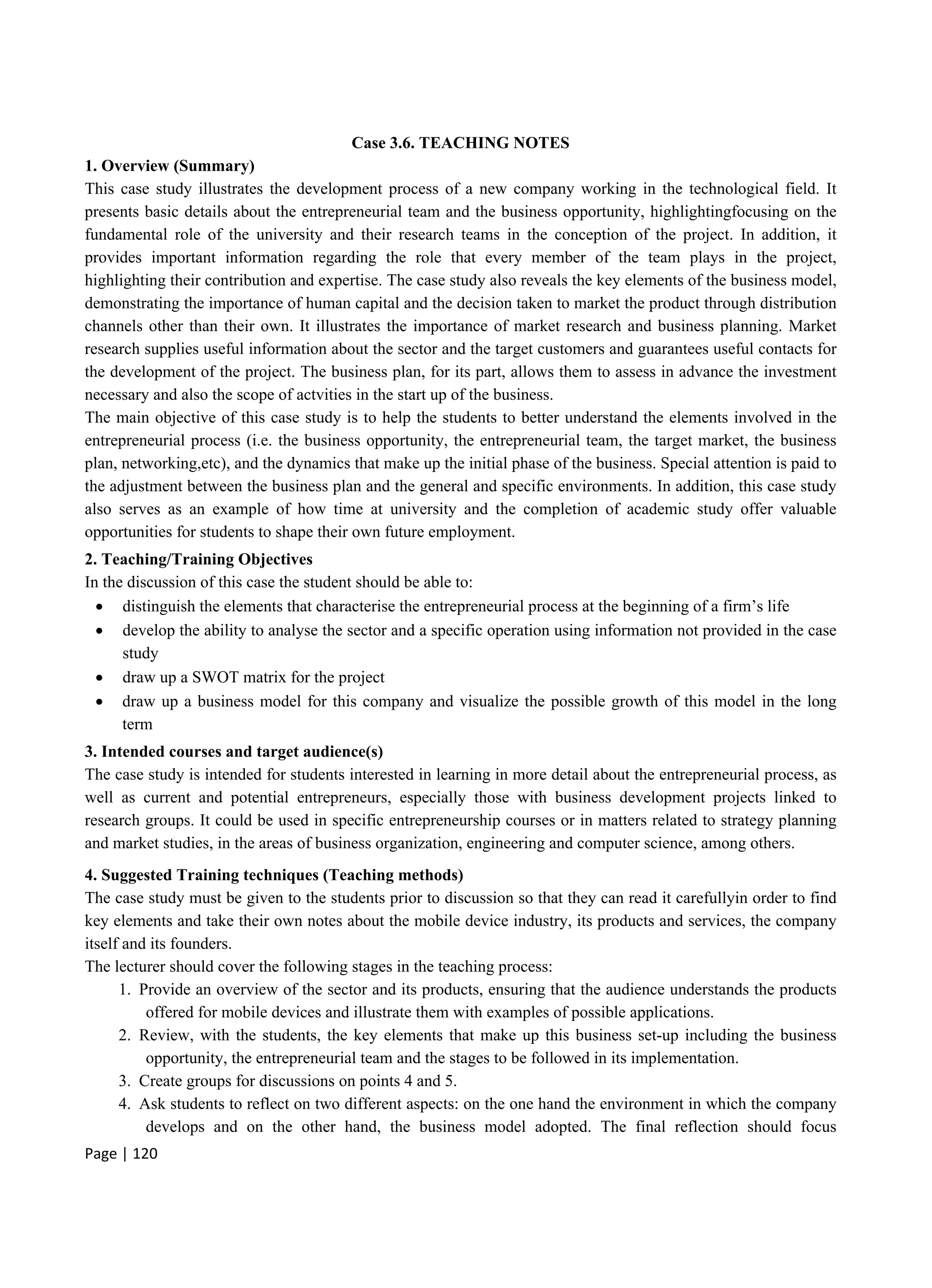
![Page | 121
discussions on the degree of adjustment of the chosen business model and the environment in which it
develops.
5. Draw up future scenarios for the company indicating how the original business model should evolve to
accommodate possible changes in the industry.
6. Presentation (by the students) of the topics debated in points 4 and 5 by the working groups.
5. Questions (Topics) for discussion
The following questions may be debated in the working groups:
a. In relation to the general and specific environment of the sector:
1. What are the general environmental factors that may have a major influence either favourable or
unfavourable on the growth of companies in the ICT sector?
2. Determine the main competitors of this company on the international level.
3. What factors of the specific environment can determine the future of Mobilife Technologies?
b. In relation to the business model for Mobilife Technologies:
1. What main areas of the business support the development of its own products?
2. What role does the entrepreneurial team play in the shaping of the business model with regard to the
development of theirown products?
3. Indicate the advantages and disadvantages for Mobilife Technologies in distributing its own product
through Apple Store®
or Android®
.
c. Finally, the students must reflect on:
1. Taking into account the environmental factors outlined in a.1, how might the ICT sector evolve over the
next five years? 2. What changes to the original business model are necessary for the progress of the firm?
6. Assessment criteria:
The following criteria may be followed for the evaluation of the students:
Preparation of the case study (10%) - the lecturer can calculate the grade based on the effort that the student has
put in. Having an overview of the key elements of the case study could be helpful in this.
Summary report (50%) - the working group should submit a written report describing the environment in which
the company is developing and defining the elements which shape the business model of the company and the
degree of adjustment needed. This will require answers to be given to questions a and b. The marks, criteria and
format of the report should be set in advance by the teacher.
Proposals for the future (40%) - the working group should outline in a brief written report of not more than one
page, its ideas on the possible evolution of the sector and suggested adjustments to the original business model in
order to adapt it to these changes.
7. Additional readings and references
[1] Abi Research Technology Market Intelligence: http://www.abiresearch.com/home.jsp.
[2] Institute for Applied Microelectronics: http://www.iuma.ulpgc.es/.
[3] OSTERWALDER, A. and Y., PIGNEUR. 2003 “Modeling value proposition in e business”, ICEC.
Available at: http://delivery.acm.org/10.1145/950000/948061/p429-
osterwalder.pdf?key1=948061&key2=1749445921&coll=DL&dl=ACM&CFID=6042325&CFTOKEN=416607
80.](https://image.slidesharecdn.com/casestudiesbookb5tosent11-151109112812-lva1-app6891/75/Case-studies-book_b5_to_sent_1_1-123-2048.jpg)


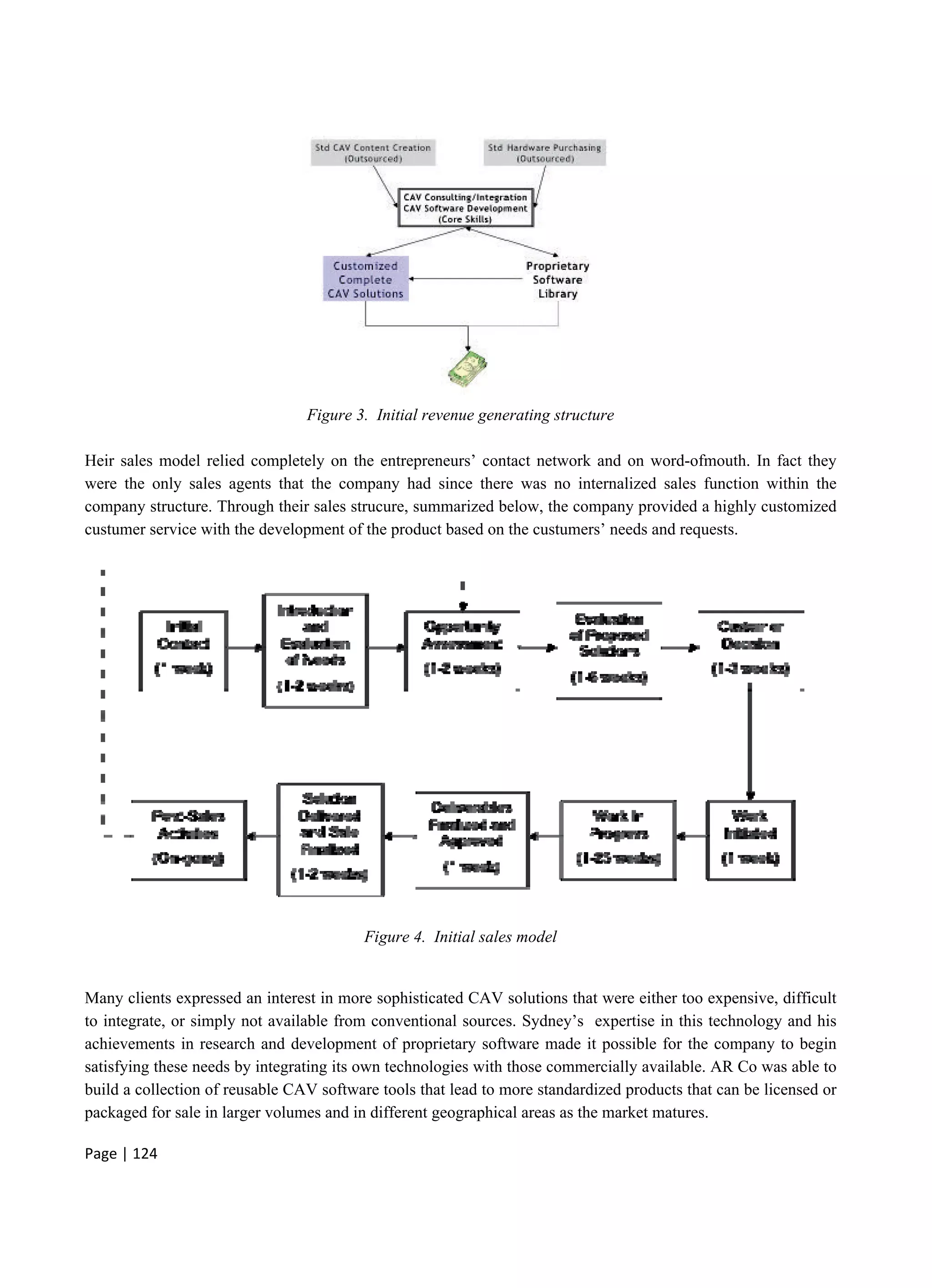
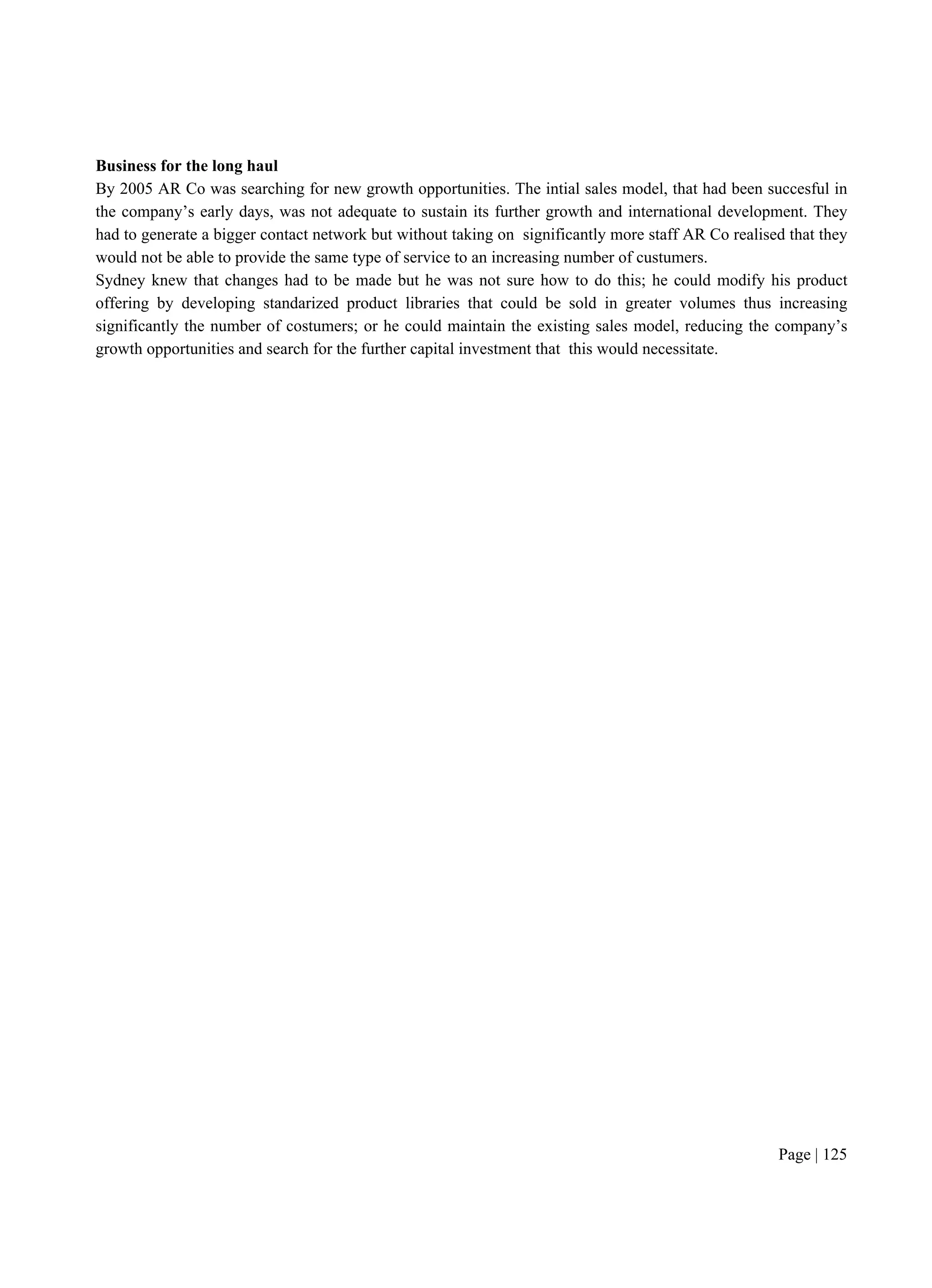
![Page | 126
Case 3.8. The risk of introducing a new product: “Building mixtures” Ltd.
Milena Kirova, PhD, University of Ruse
Introduction
Worldwide innovation is the main means of increasing the added value in the economy and creating and
maintaining the national competitiveness of a company.
During an innovation activity there are many events, which are either part of the innovation or
accompanying it, and which may be uncertain or indeterminate. This situation is characterized by risk. The risk
is connected with the probability of getting less benefit from the innovation than expected. Risk analysis
involves the determination of the risk factors, their measurement and reduction.
The tasks for risk management in an innovation activity come from the strategic aims of the innovation.
Their fulfillment ensures that these aims are met. The main aims of risk management in an innovation activity
are:
predicting the emergence of negative factors which can influence the development and dynamics of
the innovation process;
assessing the effect of these negative factors on the innovation activity as a whole and on the result
of the innovation;
developing methods for risk reduction during the implementation of the innovation project;
designing a system for risk management [Pavlov, 2009].
The risk factors are divided on the basis of:
their origin (external or internal)their nature (industrial, investment, credit, engineering and
technological, ecological, entrepreneurial, financial, trade, emergency, political [Balabanov, 2008]).
Some of the easily applied methods for assessing the different risk factors are based on well-knownmethods
used in management and marketing research, such as SWOT analysis, the Delphi method, brain storming, rose of
risks and expert opinion.
Risk reduction means decreasing the uncertainty of the external environment and the internal company
structure, and increasing the accuracy of forecasting the importance of the risk factors. The most common
methods for risk reduction are: `
- risk avoidance which is based on an initial predetermined deviation of the project when a certain risk
factor appears;
- risk sharing among the project participants and subcontractors in order to improve the outcome;
- risk diversification which entailsdividing the investment on the principle ‘do not put all your eggs in
one basket’;
- risk source localization which isused infrequently in cases when the sources of risk can be clearly and
specifically divided for easier control;
- risk dissipation which involves dividing the common risk by uniting with other participants with a
common interest in success;
- risk compensation which is used during strategic planning where reserves are created for
compensation of future difficulties and uncertainties;
- risk insurance [Gabrovski, P., 2006].
Risk reduction is necessary during each innovation process.](https://image.slidesharecdn.com/casestudiesbookb5tosent11-151109112812-lva1-app6891/75/Case-studies-book_b5_to_sent_1_1-128-2048.jpg)
![Page | 127
Building Mixtures Ltd is looking for answers
Building Mixtures Ltd produces dry construction mixtures and heat insulation materials. Their current
equipment is capable of producing a new higher quality product for insulating walls, but with higher cost due to
new production technology and materials. The company management must answer the question: ‘Is the risk of
releasing the new product on the market acceptable?’ To answer this question, the first step is to study the
company profile and its ability to innovate and to carry out marketanalysis.
Building Mixtures is a modern company, established in 1994 which specializes in the manufacturing of
packaged dry building materials, heat insulation and decorative materials made from expanded penopolistrirol
(EPS) and integrated systems for outside insulation. It is located in a big city in north east Bulgaria, a region
where there is intensive construction activity. Its products are sold successfully over the whole country and in
neighboring Romania. Since its beginning the company has established itself as a reputable and reliable partner
which is shown in its current results. This success is mainly due to the modern and completely automated and
computer controlled production line for dry building mixtures. The non-stop work process and precision control
allows production of 360 tons per day. In 2005 the company purchased technology for manufacturing of wall
insulation made from EPS with an annual capacity of 15,000 m3
.
The company sees its mission to produce materials for the construction industry, which are environmentally
friendly and ensure comfortable living and working conditions. At the same time, the company tries to improve
the effectiveness of those engaged in the construction industry – investors, builders, entrepreneurs, designers,
foremen and workers. The company motto is ‘To build consciously’.
The system of insulation, together with the accompanying accessories, as well as all other products, is
certified by the National Construction Institute and complies with all Bulgarian and European standards. This is
the result of a €100,000 investment in 2007 in a modern testing laboratory [http://marisanbg.com/].
The following interview with the company’s executive director gives important information about its
capabilities.
1. Is Building Mixtures an innovative company?
“In my opinion, it is not, but the market treats it as such, because it is flexible, modern and prosperous
and responds to the market needs. We do not develop new ideas because it is expensive and risky. We
use current new technologies which we develop further.”
2. What is the company’s strategy for innovation? Do you need innovation?
“Innovations are definitely necessary. The more one company develops the more it needs to invest in
innovations. As far as the strategy is concerned – anything which ensures our leadership in the market
is a good innovation which we want to have.”
3. How do you finance the innovations in your company? Is there any government stimulus?
We finance the innovations 100% with our own resources. There are government funds but the access to
them is complicated by slow procedures. By the time we actually use the resources it is possible that
somebody else will have moved ahead of us. We think that the government needs to invest more in
education, research and science for quality specialists and technology.”](https://image.slidesharecdn.com/casestudiesbookb5tosent11-151109112812-lva1-app6891/75/Case-studies-book_b5_to_sent_1_1-129-2048.jpg)
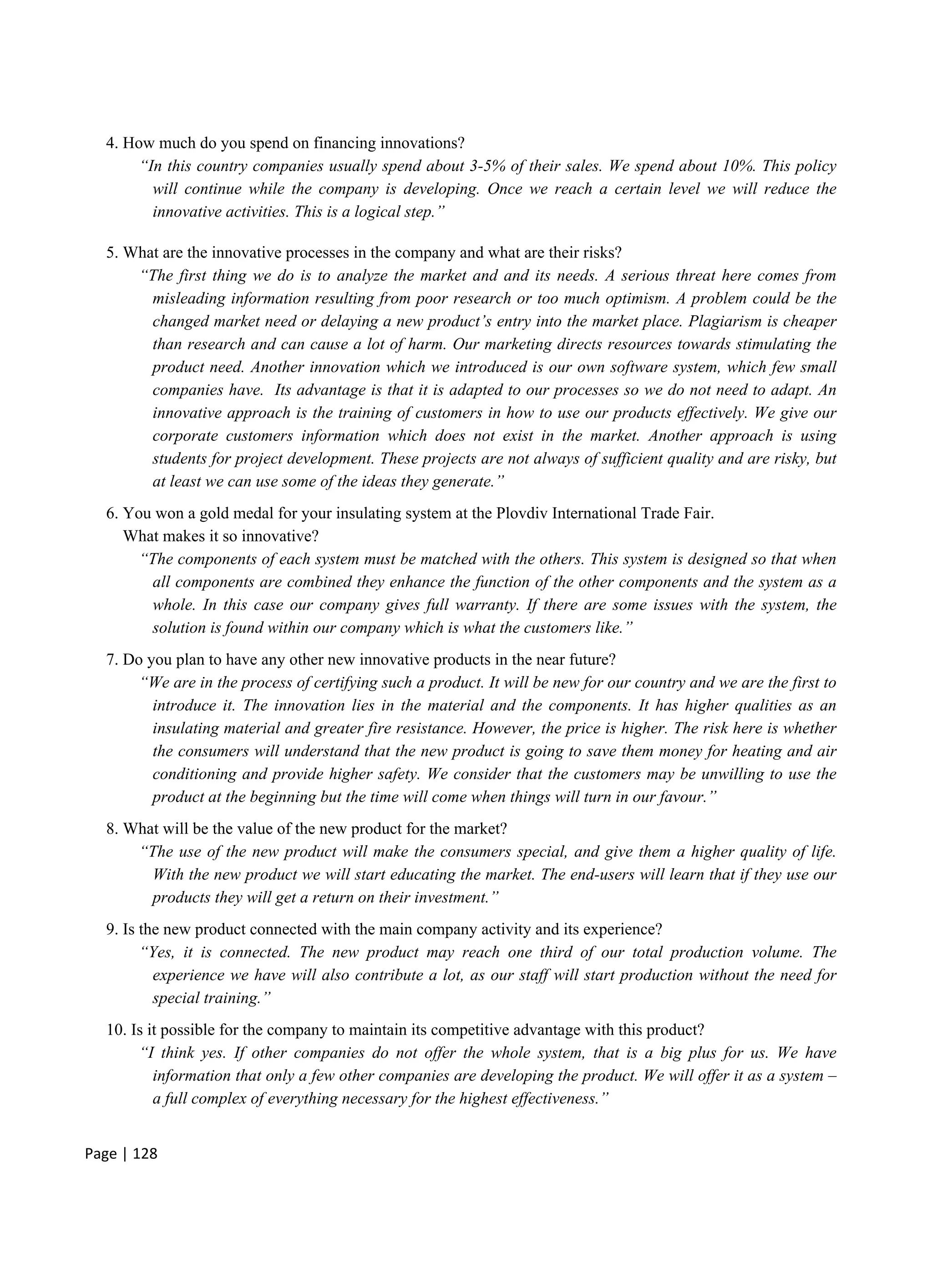
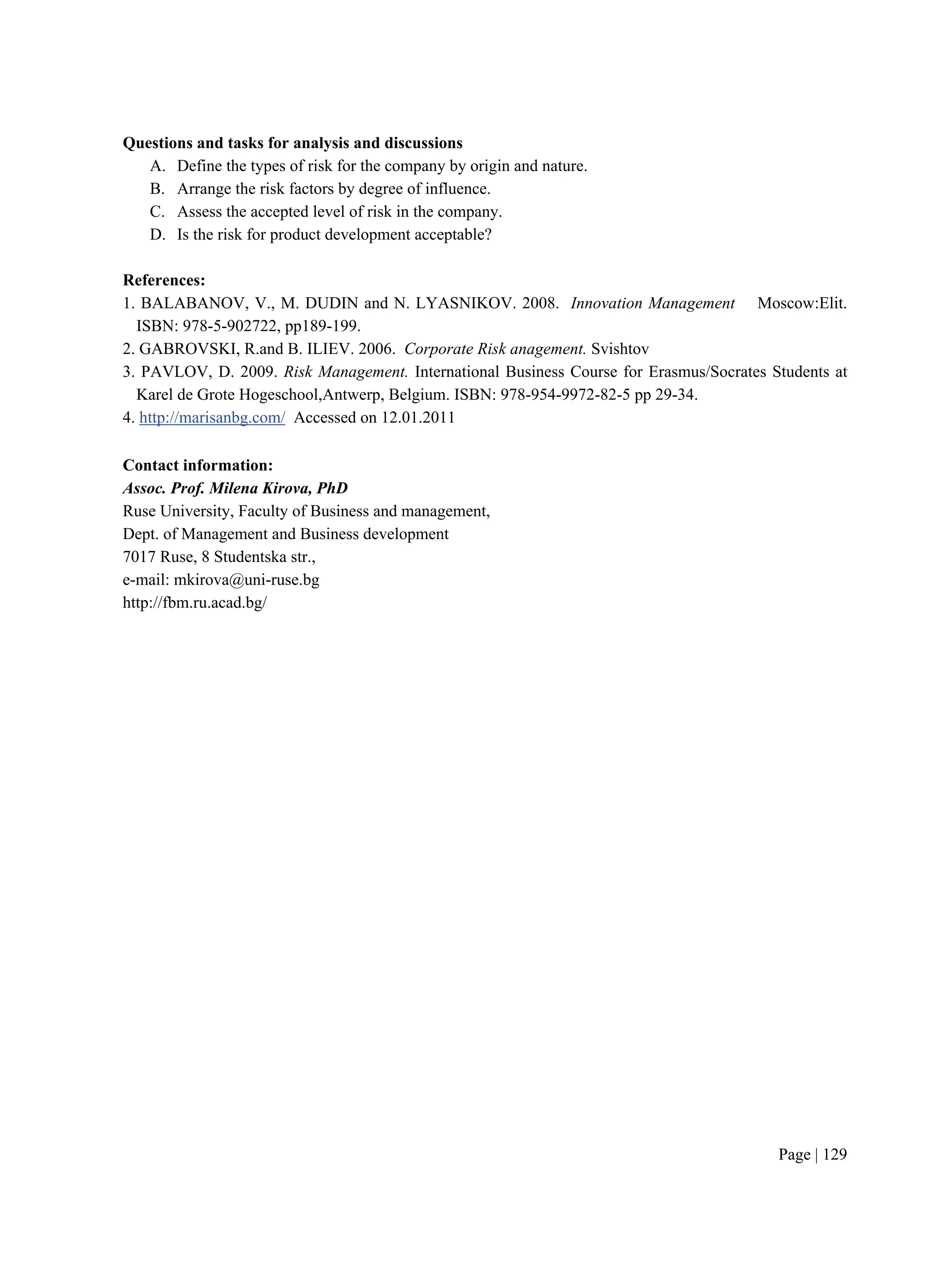
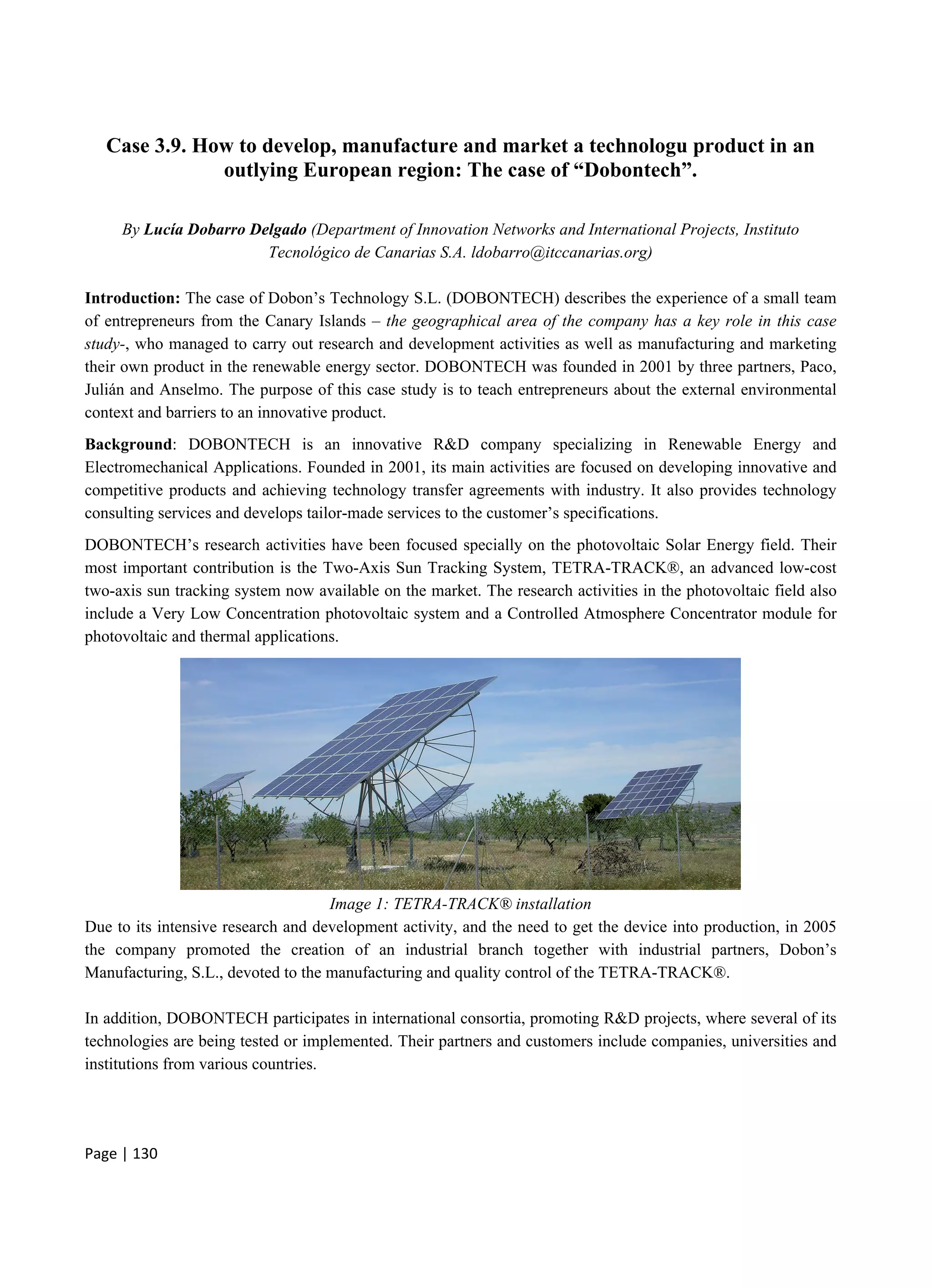
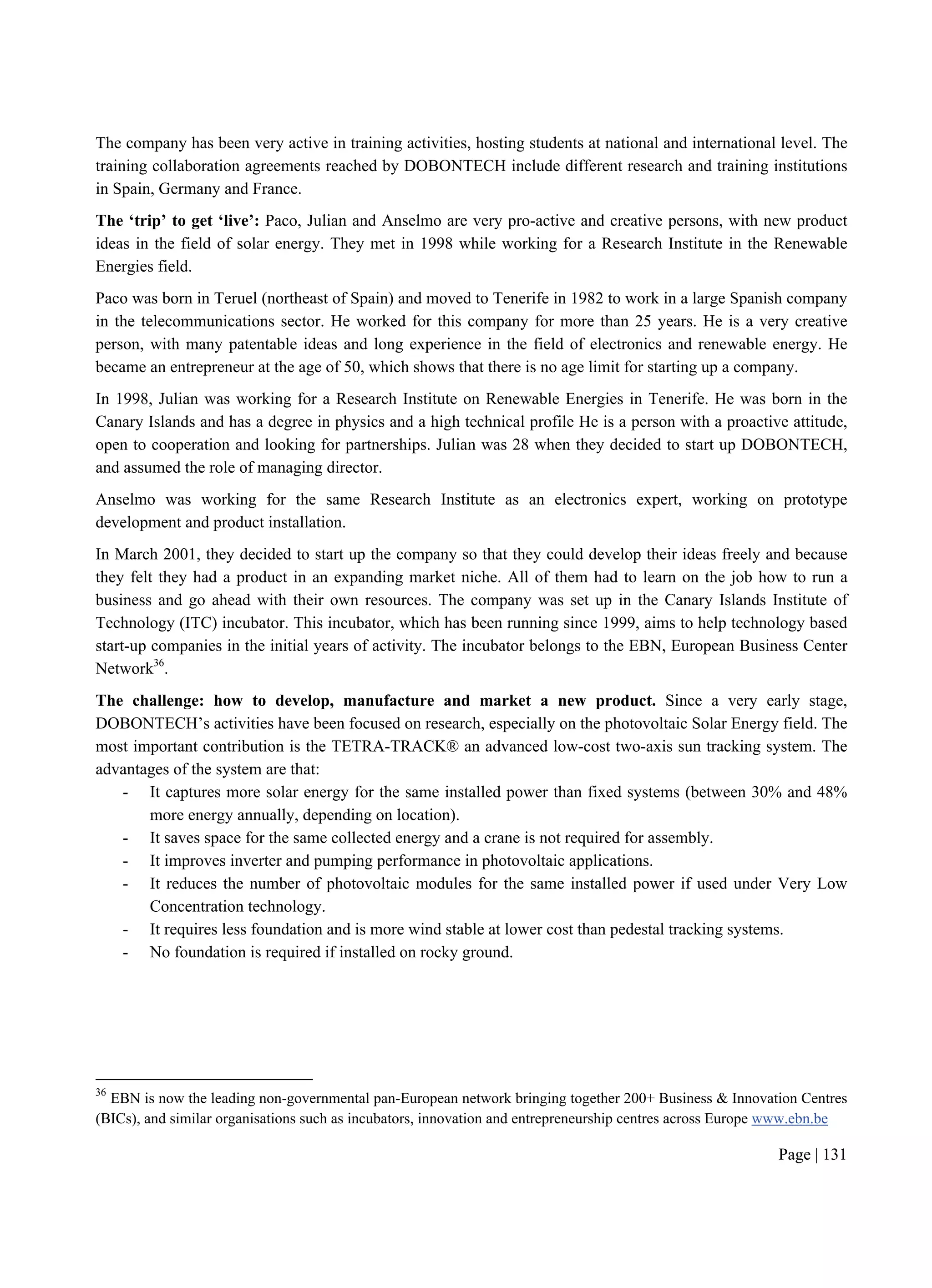
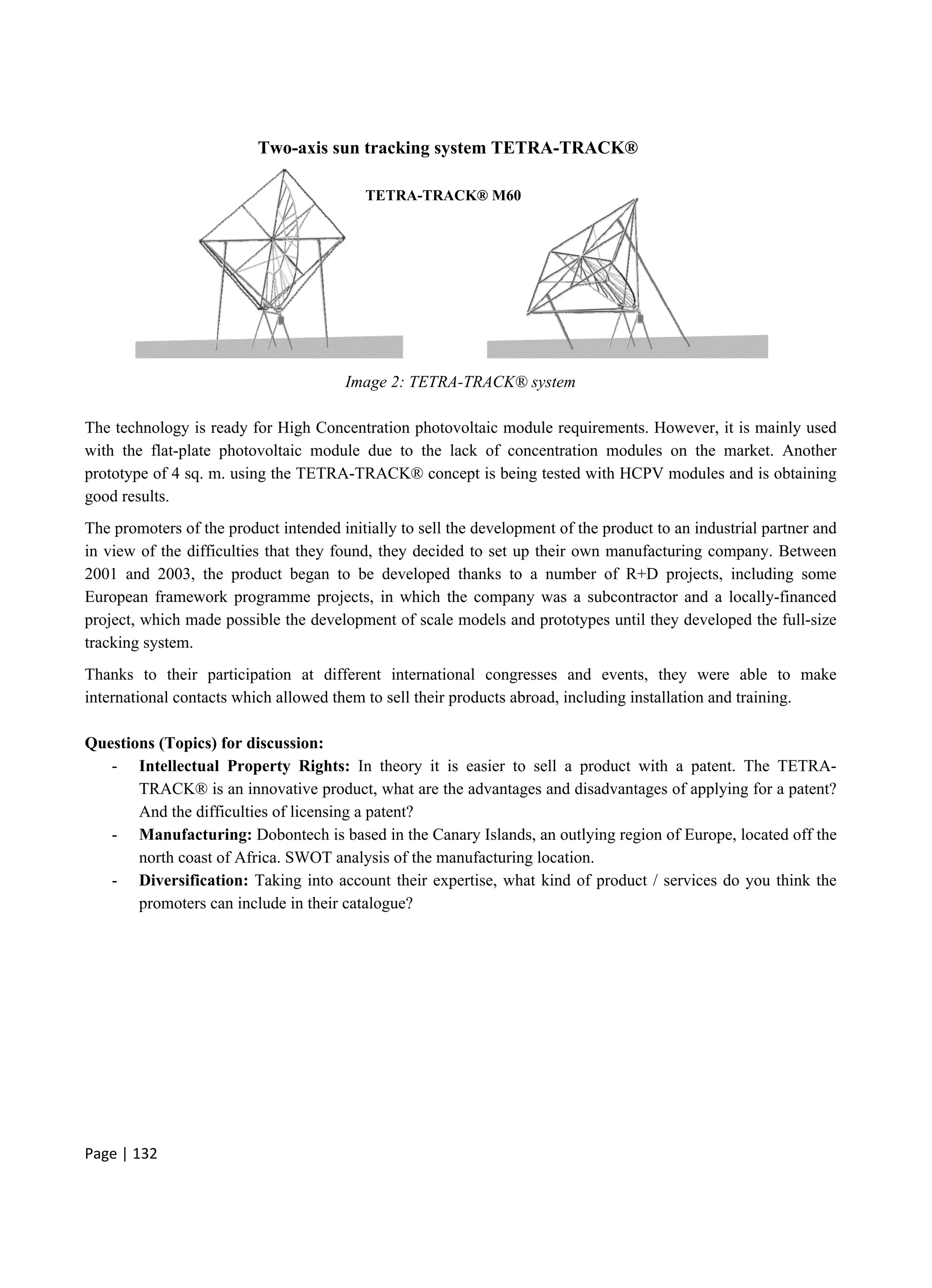
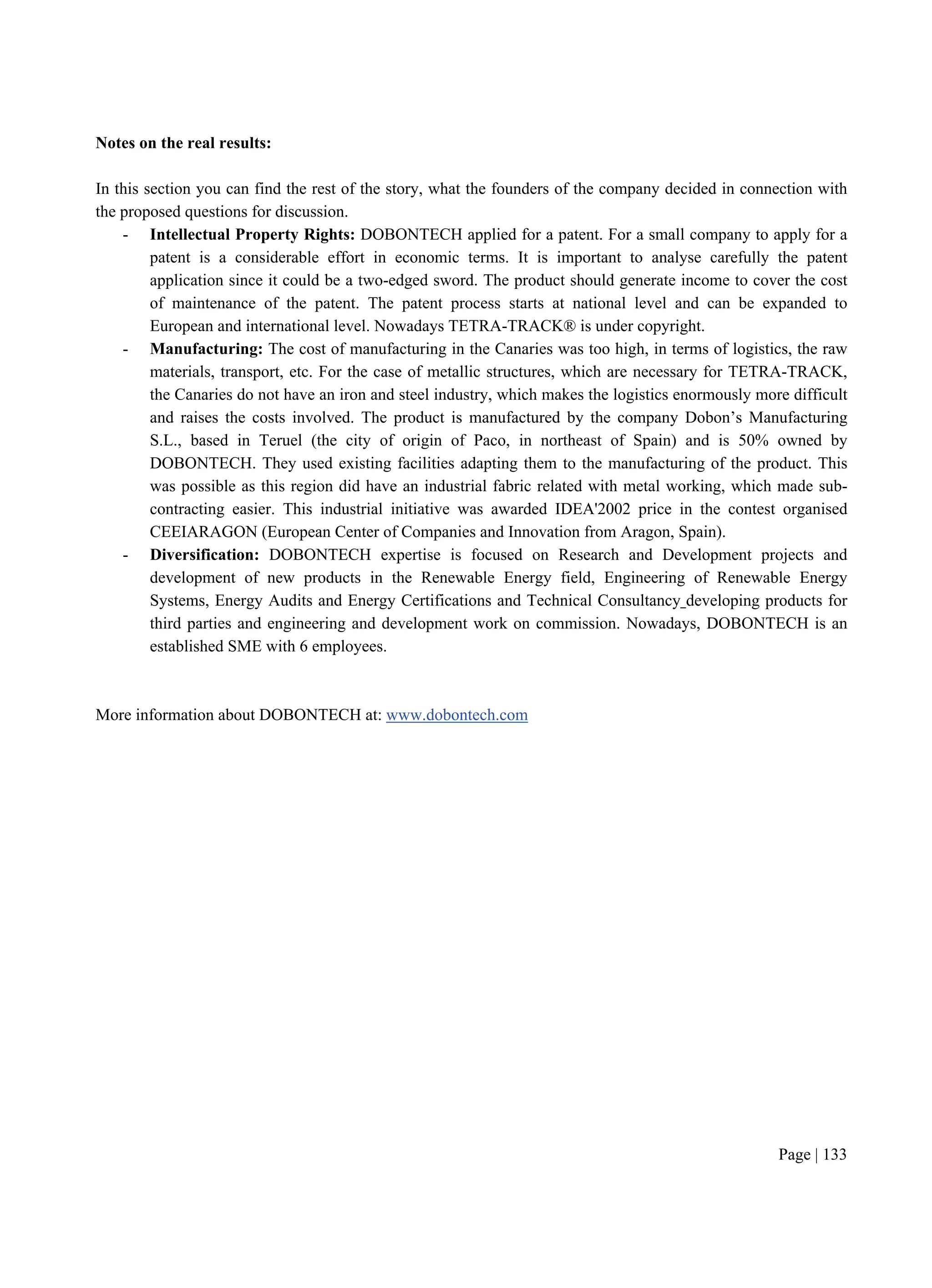
![Page | 134
Case 3.10. Genesis PHARMA: The Development of an Entrepreneurial Giant
Panikkos Poutziouris, CIIM and Manchester Business School
Skevos Evripidou, University of Cyprus
Milena Marinova, University of Cyprus
Abstract: This case study maps the entrepreneurial development path of an emerging star in the Greek
economy, with ambitious plans for growth across frontiers. Genesis Pharma was established in 1997, as a
partnership between the second generation of family business entrepreneurs from the MSJ Jacovides Group
and a charismatic managerial entrepreneur, with a view to marketing and trading innovative bio-
pharmaceuticals in Greece. This report highlights how the company has embarked on aggressive growth
strategies, building on a resource capability platform that is epitomized by a dynamic team with a real appetite
for excellence. Genesis Pharma is an award winning company, repeatedly voted as one of best and strongest
companies in Greece and beyond. Sales performance indicates that this ’small giant’, with a turnover of €250
million, has graduated from the SME economy and is now spreading its wings to serve the international
market.
Introduction:
With its headquarters in Greece, Genesis Pharma has been a leading biopharmaceutical company since its
foundation in 1997; The company was incorporated based on innovative business practices, far ahead of the
existing Greek standards. Exploiting the opportunities arising from biotechnological innovations, Genesis
Pharma was founded as a strong Greek company in a very prominent market.
The company has launched and marketed a unique portfolio of innovative biopharmaceutical products in
Greece and Cyprus, principally within the specialty therapeutic areas of the central nervous system,
haematology, nephrology and oncology. Many of the company's products treat rare chronic or life-threatening
diseases and most of them address previously unmet or underserved clinical needs.
Genesis Pharma’s consolidated turnover reached €255.2 million in 2009, and evidently outsmarts its rivals
locally and European wide. The cornerstone of this successful growth is based on the company’s policy to
recruit and retain high-calibre professionals through an advanced and integrated selection process, training,
development and reward policies and practices. During the last five years (2004-2008), the number of
employees has increased by 33%. As of December 31, 2009 the number of highly qualified, full-time
employees in Greece and Cyprus had reached 213.
Table 1: The growth experience
2009 2008 2007 2006 2005 2004 2003 2002 2001
Operating Revenue/Turnover 255,254,942 223,449,867 172,411,224 155,524,080 132,533,569 111,857,843 76,451,909 34,101,866 19,165,467
P/L before Tax 37,114,401 31,616,052 33,598,970 37,900,004 29,903,680 25,499,854 19,114,289 7,590,591 2,854,232
P/L for Period [= Net Income] 23,983,555 23,028,382 24,667,834 26,302,035 19,920,913 13,115,630 12,040,192 4,955,727 1,731,804
Cash Flow 24,765,490 23,489,145 25,491,009 27,373,276 20,867,038 13,422,325 12,170,665 5,067,505 1,855,207
Total Assets 421,524,940 305,724,722 196,281,214 136,494,047 90,902,736 125,400,399 70,256,551 28,373,605 10,919,236
Shareholders Funds 54,157,657 45,416,469 43,755,064 39,802,818 31,808,134 15,410,075 10,448,606 3,298,837 1,665,608
Current Ratio (x) 1.28 1.39 2.18 1.56 1.52 1.17 1.16 1.13 1.15
Profit Margin (%) 14.54 14.15 19.49 24.37 22.56 22.80 25.00 22.26 14.89
Return on shareholders Funds (%) 68.53 69.61 76.79 95.22 94.01 165.47 182.94 230.10 171.36
Return on Capital Employed (%) 46.04 43.22 34.16 78.00 99.09 139.76 185.22 226.01 186.99
Solvency Ratio (%) 12.85 14.86 22.29 29.16 34.99 12.29 14.87 11.63 15.25](https://image.slidesharecdn.com/casestudiesbookb5tosent11-151109112812-lva1-app6891/75/Case-studies-book_b5_to_sent_1_1-136-2048.jpg)
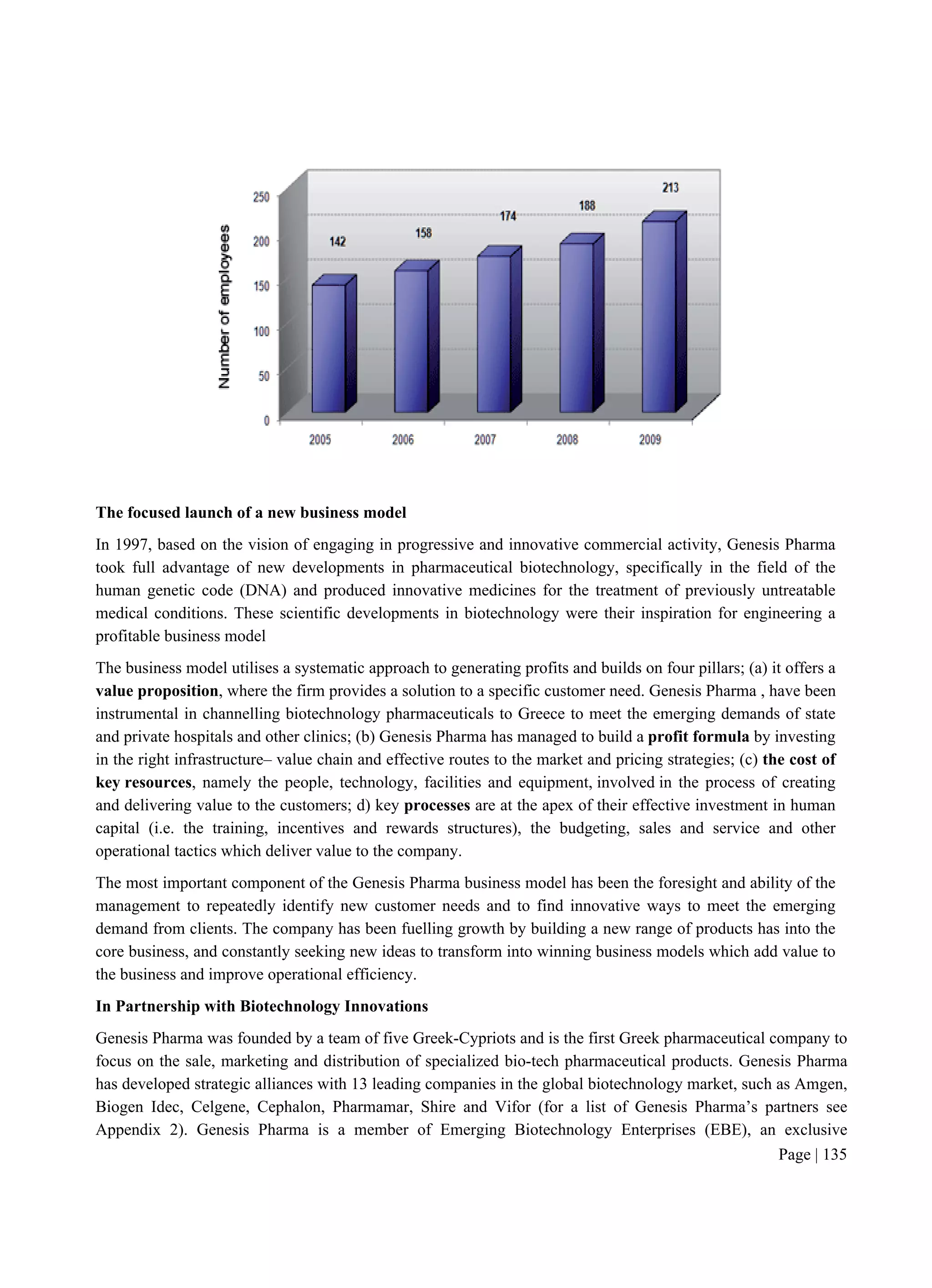
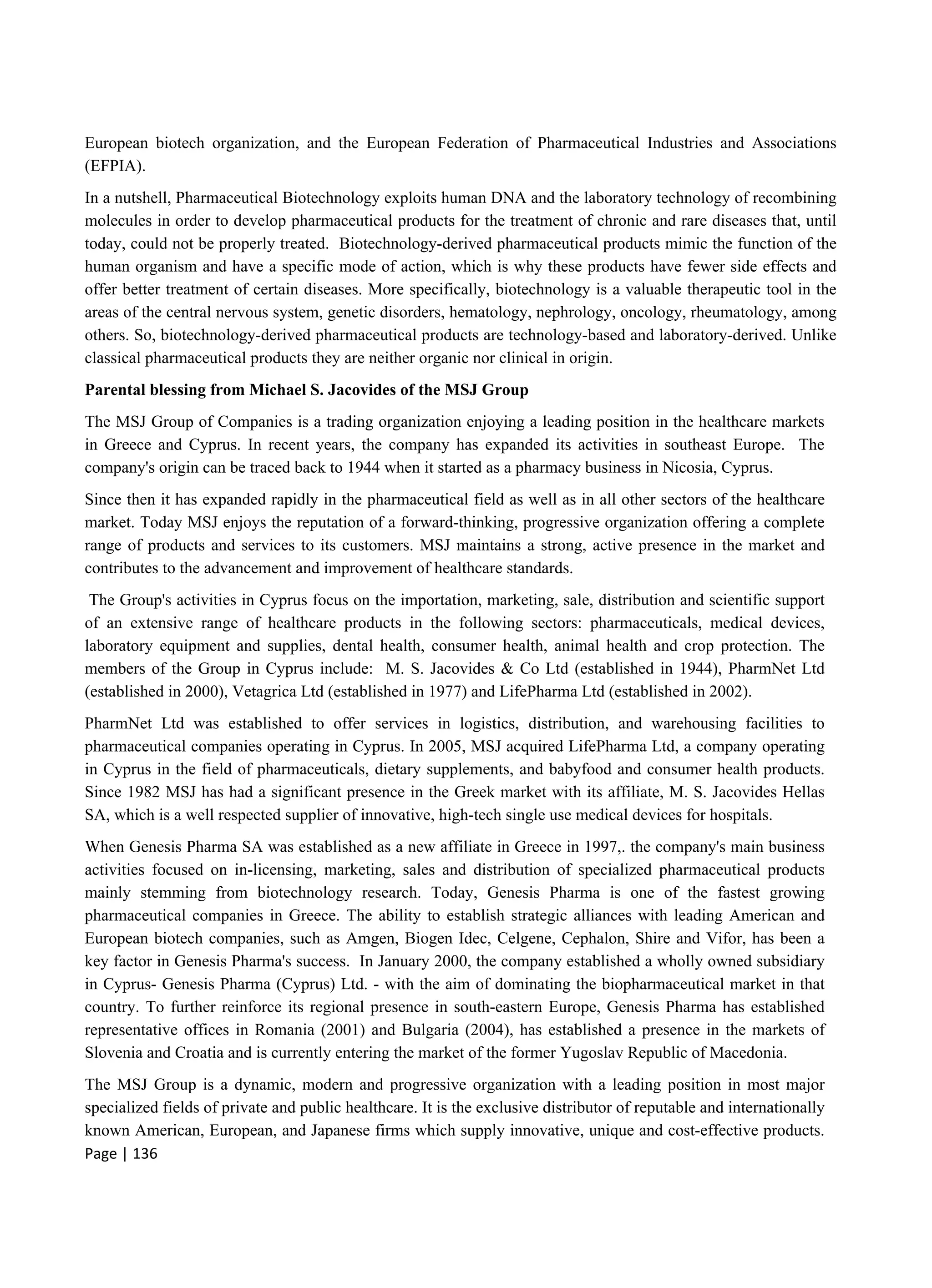
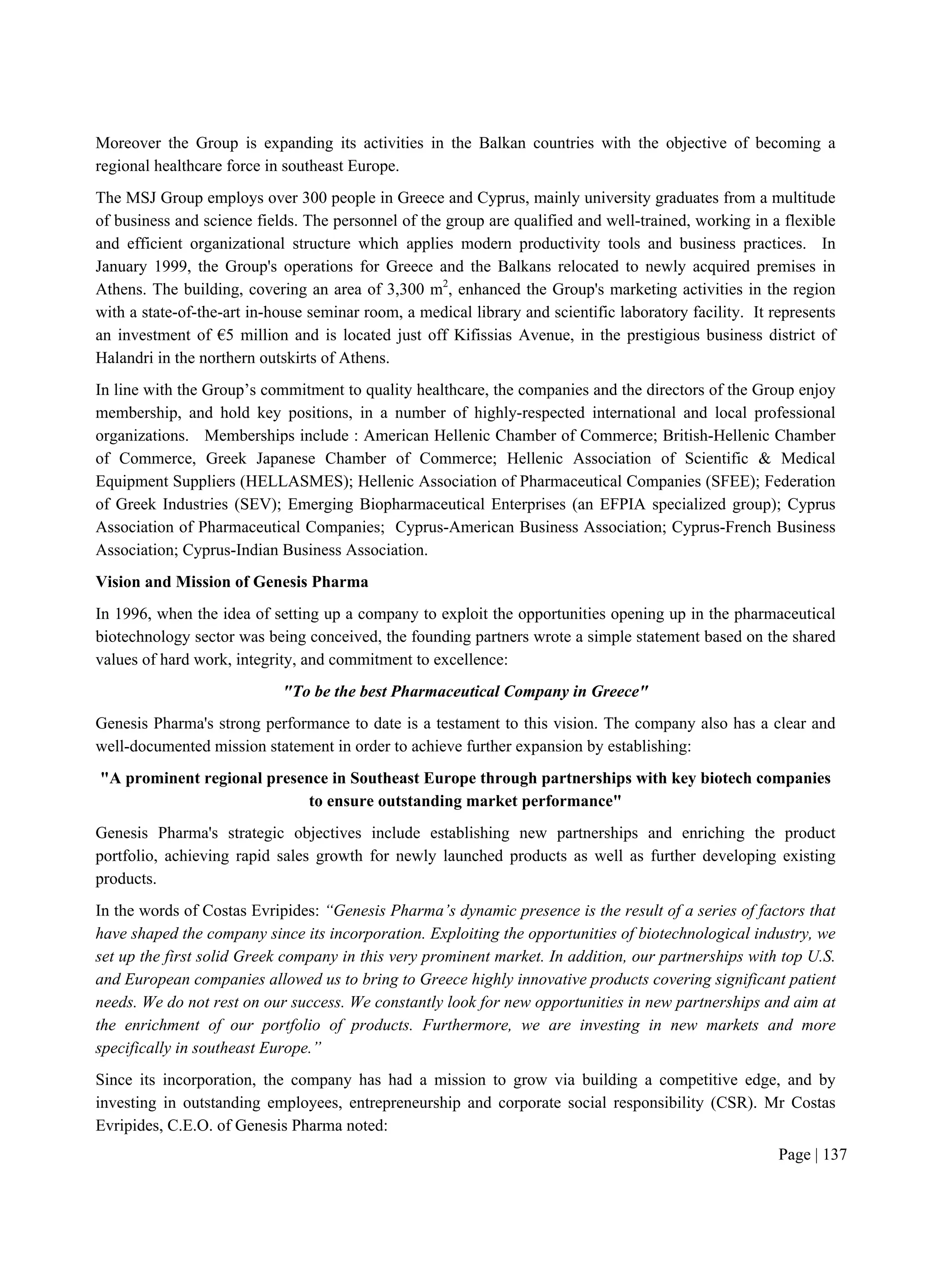
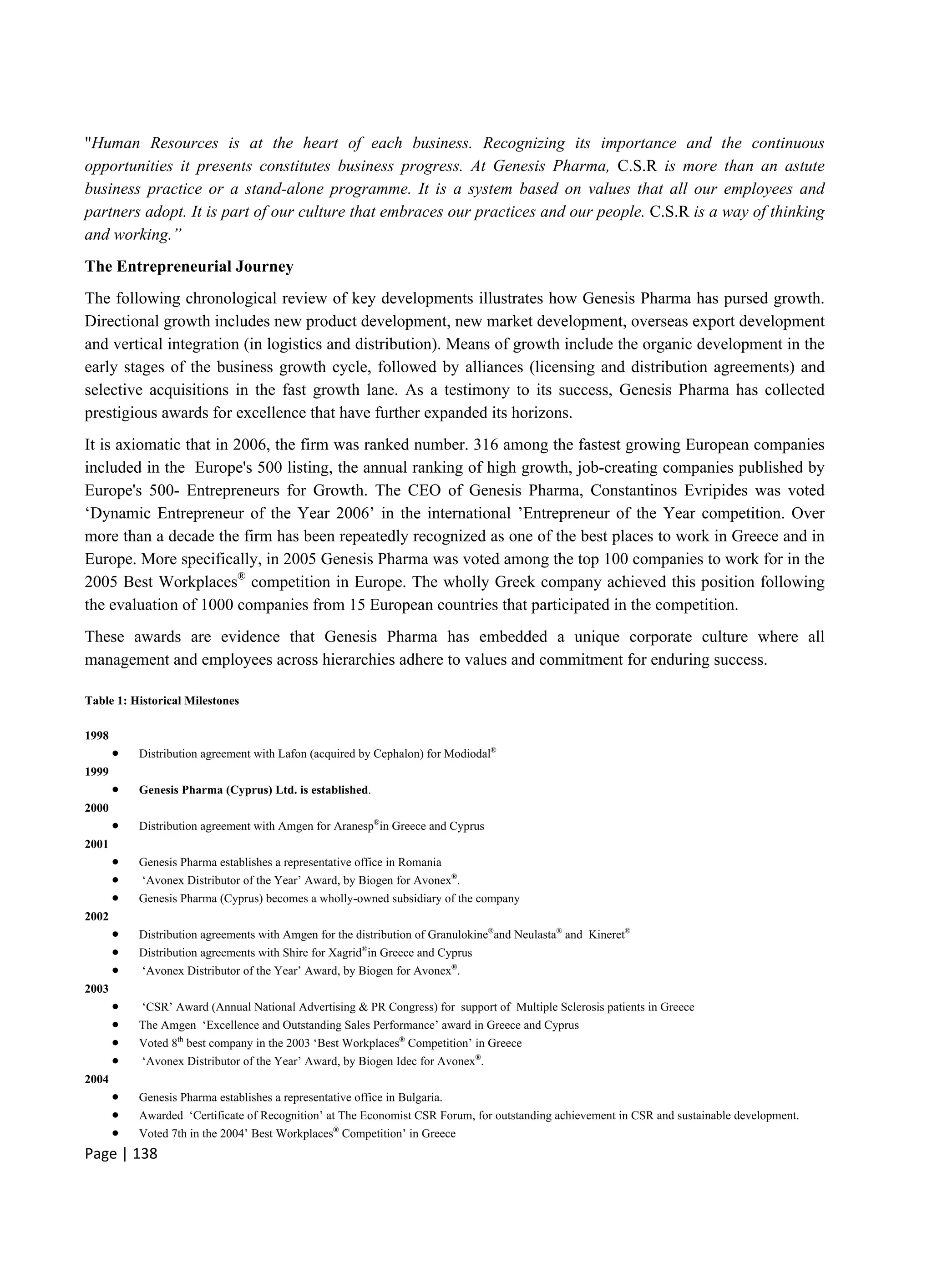
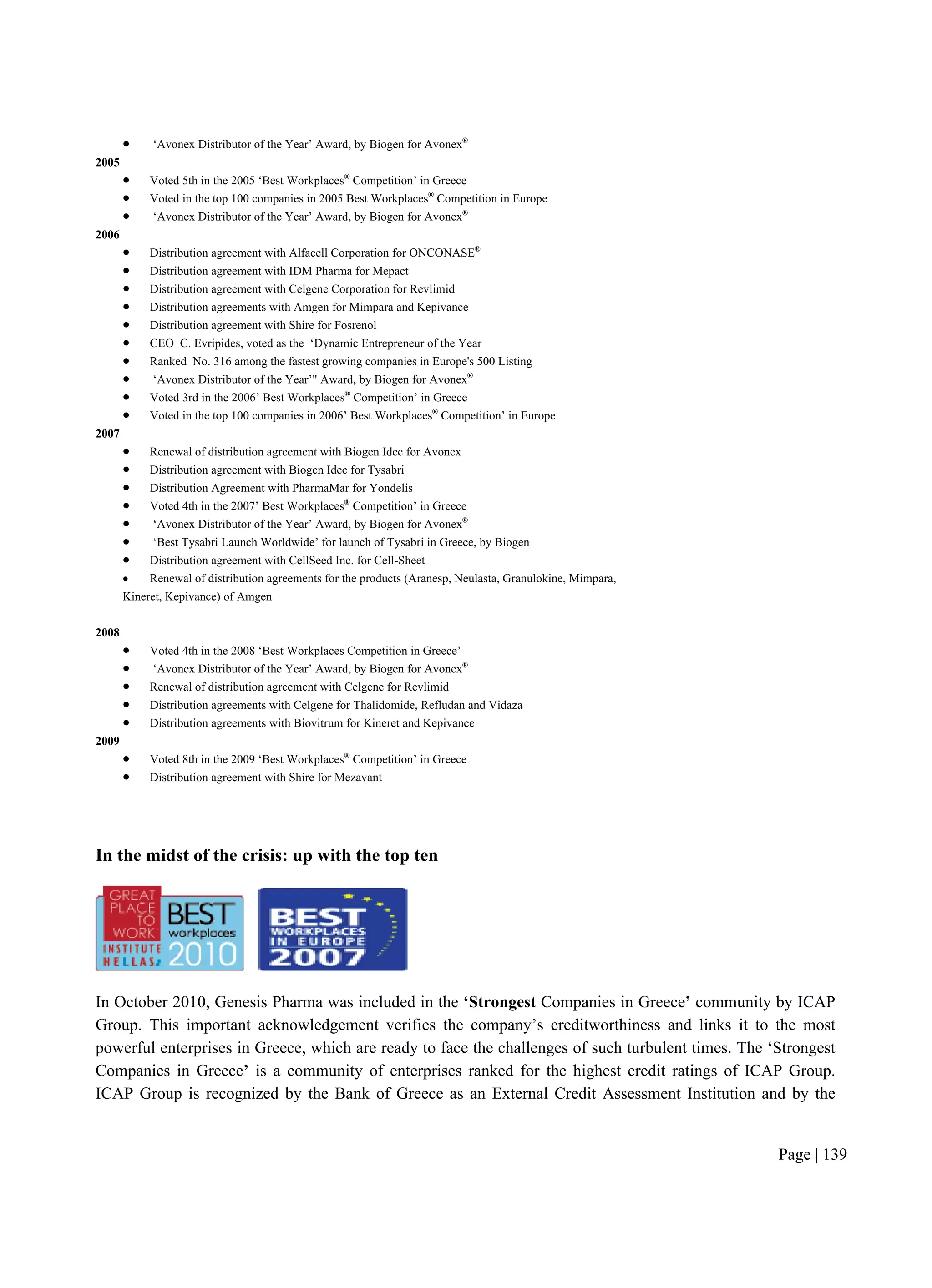
![Page | 140
European Central Bank as an Accepted Rating Tool Source. Only one in ten companies in Greece meet the
required criteria to be included in the community of Strongest Companies.
As Mr. Evripides states, "During the last decade, we have managed to create an environment which makes our
people happy to work for us. In that environment, everyone is at the heart of our company's development,
forging a powerful team. Thanks to this team, Genesis Pharma has managed to increase its sales nine-fold and
triple its personnel. As a result, Genesis Pharma is today one of the leading pharmaceutical companies in
southeast Europe. We thank our people and we are committed to continue as dynamically as we have done so
far."
Performance Indicators for the decade
2009 2008 2007 2006 2005 2004 2003 2002 2001
Operating Revenue/Turnover 255,254,942 223,449,867 172,411,224 155,524,080 132,533,569 111,857,843 76,451,909 34,101,866 19,165,467
P/L before Tax 37,114,401 31,616,052 33,598,970 37,900,004 29,903,680 25,499,854 19,114,289 7,590,591 2,854,232
P/L for Period [= Net Income] 23,983,555 23,028,382 24,667,834 26,302,035 19,920,913 13,115,630 12,040,192 4,955,727 1,731,804
Cash Flow 24,765,490 23,489,145 25,491,009 27,373,276 20,867,038 13,422,325 12,170,665 5,067,505 1,855,207
Total Assets 421,524,940 305,724,722 196,281,214 136,494,047 90,902,736 125,400,399 70,256,551 28,373,605 10,919,236
Shareholders Funds 54,157,657 45,416,469 43,755,064 39,802,818 31,808,134 15,410,075 10,448,606 3,298,837 1,665,608
Current Ratio (x) 1.28 1.39 2.18 1.56 1.52 1.17 1.16 1.13 1.15
Profit Margin (%) 14.54 14.15 19.49 24.37 22.56 22.80 25.00 22.26 14.89
Return on shareholders Funds (%) 68.53 69.61 76.79 95.22 94.01 165.47 182.94 230.10 171.36
Return on Capital Employed (%) 46.04 43.22 34.16 78.00 99.09 139.76 185.22 226.01 186.99
Solvency Ratio (%) 12.85 14.86 22.29 29.16 34.99 12.29 14.87 11.63 15.25
Peer Analysis
Operating Profit Net Proft Cash Current Solvency Total
Revenue Before Tax Income Margin Flow Ration Ratio Assets ROCE
Median LY 255,255 11,199 7,804 4.33 11,007 1.87 27.41 129,130 17.41
ASTELLAS PHARMA GMBH DE 2007 259,718 1 12,119 5 8,504 4 4.67 5 18,919 3 30.36 1 55.99 245,408 4 5.27 9
PFIZER B.V. NL 2007 259,657 2 34,134 2 n.a. 13.15 2 n.a. 4.06 3 79.24 317,611 2 13.58 6
COVIDIEN ITALIA S.P.A. IT 2009 258,606 3 10,279 6 7,804 5 3.98 6 10,780 6 1.90 4 27.41 264,323 3 9.68 8
CC - PHARMA GMBH DE 2009 257,002 4 17,585 4 12,736 3 6.84 4 13,213 4 n.a. 45.35 47,562 9 38.90 2
PFIZER AG CH 2009 255,972 5 n.a. n.a. n.a. n.a. n.a. n.a. n.a. n.a.
GENESIS PHARMA S.A. GR 2009 255,255 6 37,114 1 23,984 1 14.54 1 24,765 1 1.28 6 12.85 421,525 1 46.04 1
SPEM S.P.A. IT 2009 255,007 7 5,163 8 3,552 7 2.02 8 4,658 8 1.14 8 17.59 89,020 8 38.14 3
GE HEALTHCARE EUROPE GMBH (A AT 2005 253,924 8 4,967 9 3,510 8 1.96 9 5,097 7 n.a. n.a. n.a. n.a.
BECTON DICKINSON GMBH DE 2008 253,730 9 22,631 3 16,653 2 8.92 3 21,737 2 4.12 2 57.93 126,844 6 22.23 4
FARMACEUTICA COOPERATIVA PAV IT 2006 253,557 10 993 10 179 9 0.39 10 1,256 9 1.17 7 17.69 115,345 7 17.41 5
LABORATOIRES ALCON FR 2009 253,260 11 8,487 7 3,853 6 3.35 7 11,007 5 1.84 5 13.70 129,130 5 12.03 7
6
8
3
1
5
4
9
7
2
The competitive analysis involving Genesis Pharma and its close rivals (in terms of scale of operations and
industrial classification) operating in the European market, highlight the superior performance of the Greek
firm in the following parameters:
it is the most profitable, with a profit margin of 14.5%;
it offers a return on capital of 46%.](https://image.slidesharecdn.com/casestudiesbookb5tosent11-151109112812-lva1-app6891/75/Case-studies-book_b5_to_sent_1_1-142-2048.jpg)
![Page | 141
Evidently the firm is encountering ‘growth pains’. This is clearly shown by its working capital deficiency
which is symptomatic of the huge cash flow tied up in late payment. The firm has a high exposure to doing
business with the state health system which is starved of public finance due to the fiscal crisis that has shaken
the foundations of the Greek nation. This has resulted in an alarmingly poor insolvency ratio which measures a
company's ability to meet long-term obligations. The solvency ratio measures the size of a company's after-tax
income (excluding non-cash depreciation expenses), as compared to the firm's total debt obligations. It
provides a measurement of how likely a company will be to continue meeting its debt obligations. Acceptable
solvency ratios will vary from industry to industry, but as a general rule of thumb, a solvency ratio of greater
than 20% is considered financially healthy. Generally speaking, the lower a company's solvency ratio, the
greater the probability that the company will default on its debt obligations. What needs to be further clarified
in this case is where the loans come from [as in the owner-managed firms shareholders provide other long-term
finance] and refinancing capability.
The quest for a sustainable competitive edge
Genesis Pharma’s achievement of enviable growth in this fiercely competitive arena is based on the following
5 pillars:
pursuing a new business model – marrying resource capabilities with entrepreneurism to offer a value
proposition to a diversified range of customers;
building alliances with prestigious firms that have been leaders in shaping the innovation landscape
through product development;
ensuring operational efficiency across the value chain through huge investment in state of the art
logistics that translates into economies and excellence in customer service;
building a winning management executive team that fiercely supports r their people, empowering them
to realize their potential and get on with the job of building avenues of growth via sales strategies;
making corporate social responsibility a priority so that the company cares for the community of
stakeholders and the environment.
Growth drivers and pillars of competitiveness
The company's main strategic objectives focus on establishing new partnerships, enriching the product
portfolio, achieving rapid sales growth for newly launched products and developing existing products.
Genesis Pharma is planning further expansion in the Balkan area, as well as investigating potential new
strategic alliances and late stage product development.
From an opportunity to a business model
In Greece, in contrast to most European countries, there is lack of institutional strategic vision to plan for the
development of pharmaceutical biotechnology, and thus there has been a dearth of indigenous innovations.
Genesis Pharma’s initiative to take advantage of opportunities arising from biotechnological products is
significant and offers hope to many patients in the country.
Alliance-based growth](https://image.slidesharecdn.com/casestudiesbookb5tosent11-151109112812-lva1-app6891/75/Case-studies-book_b5_to_sent_1_1-143-2048.jpg)
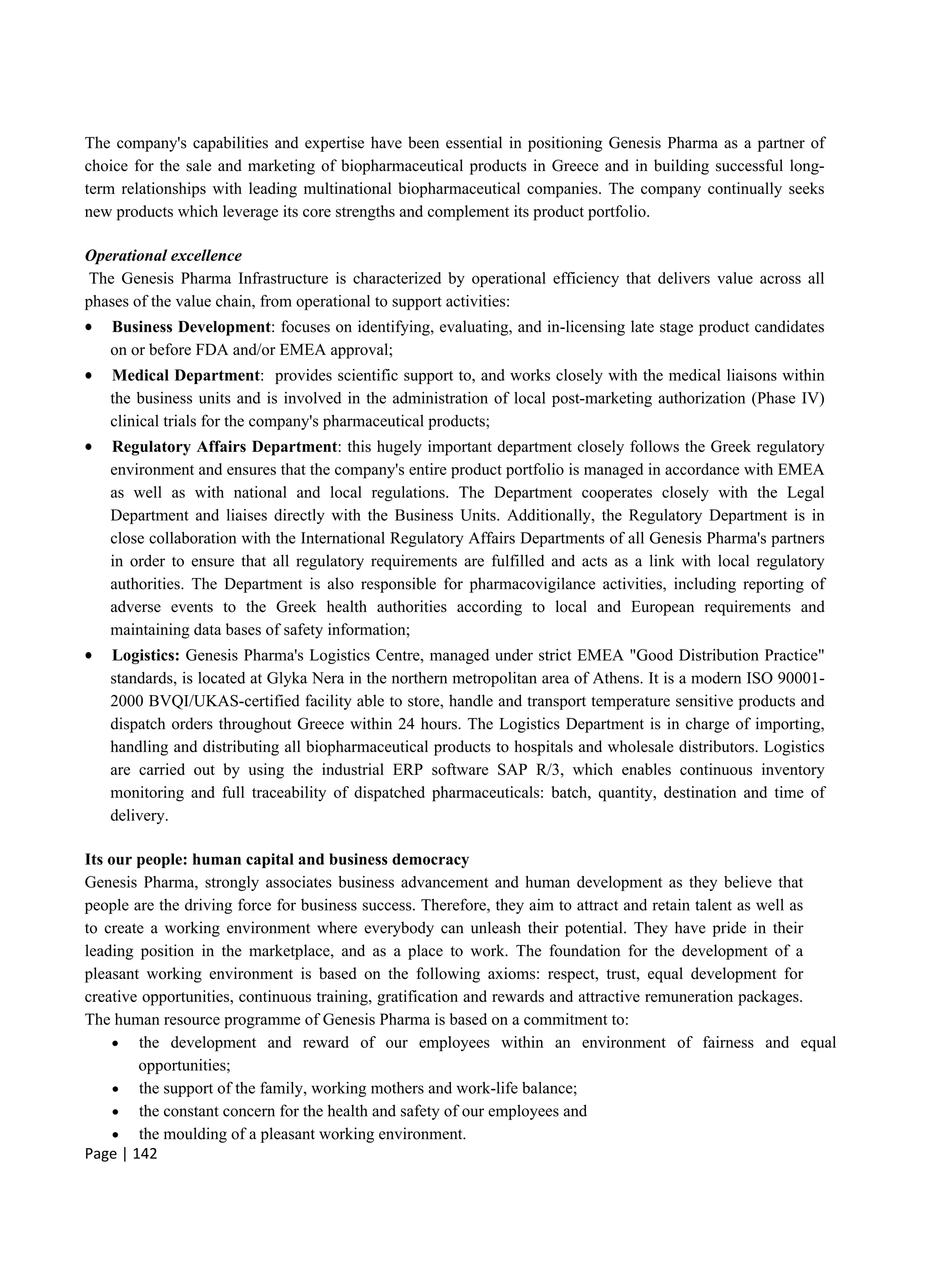

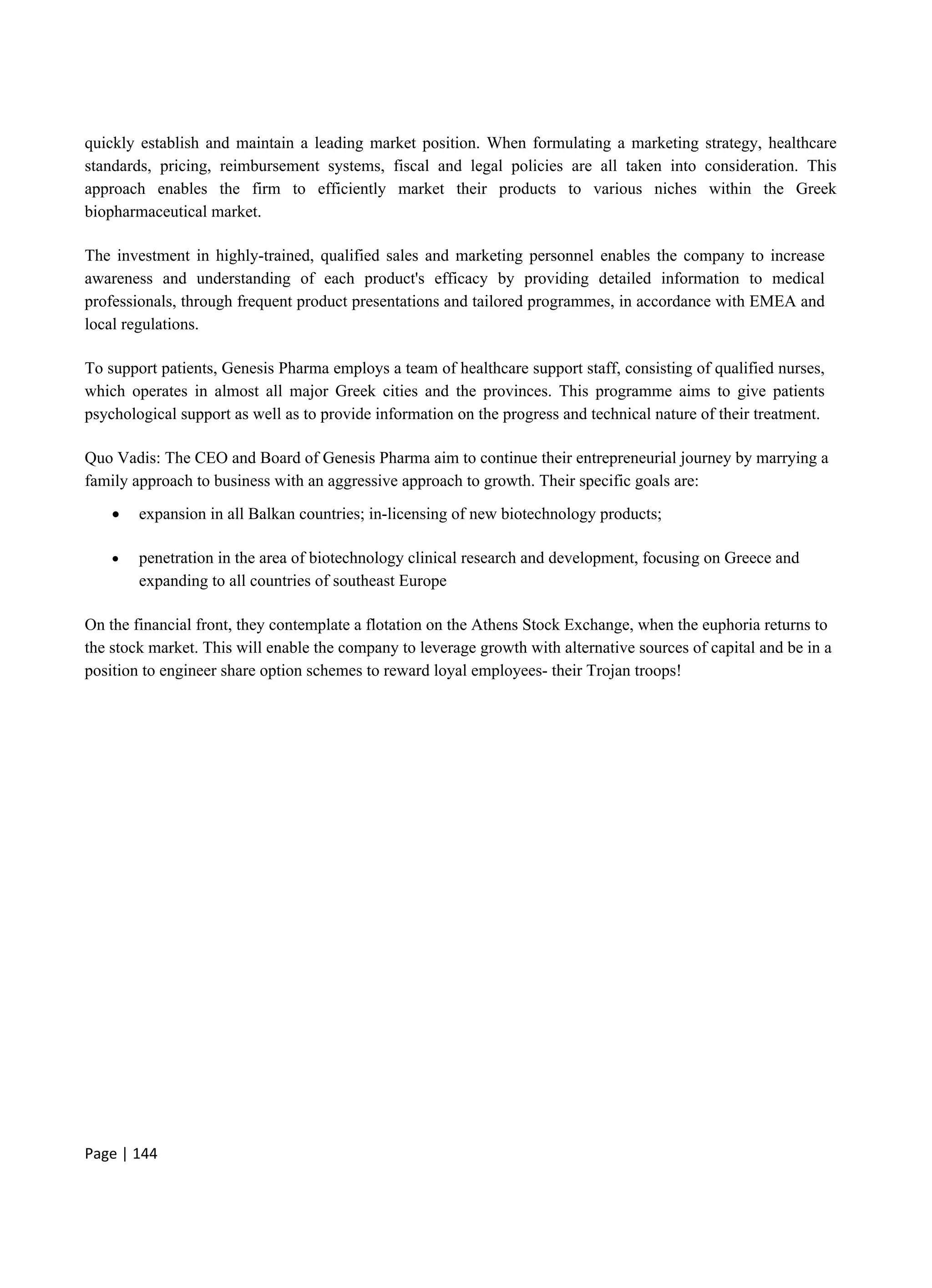
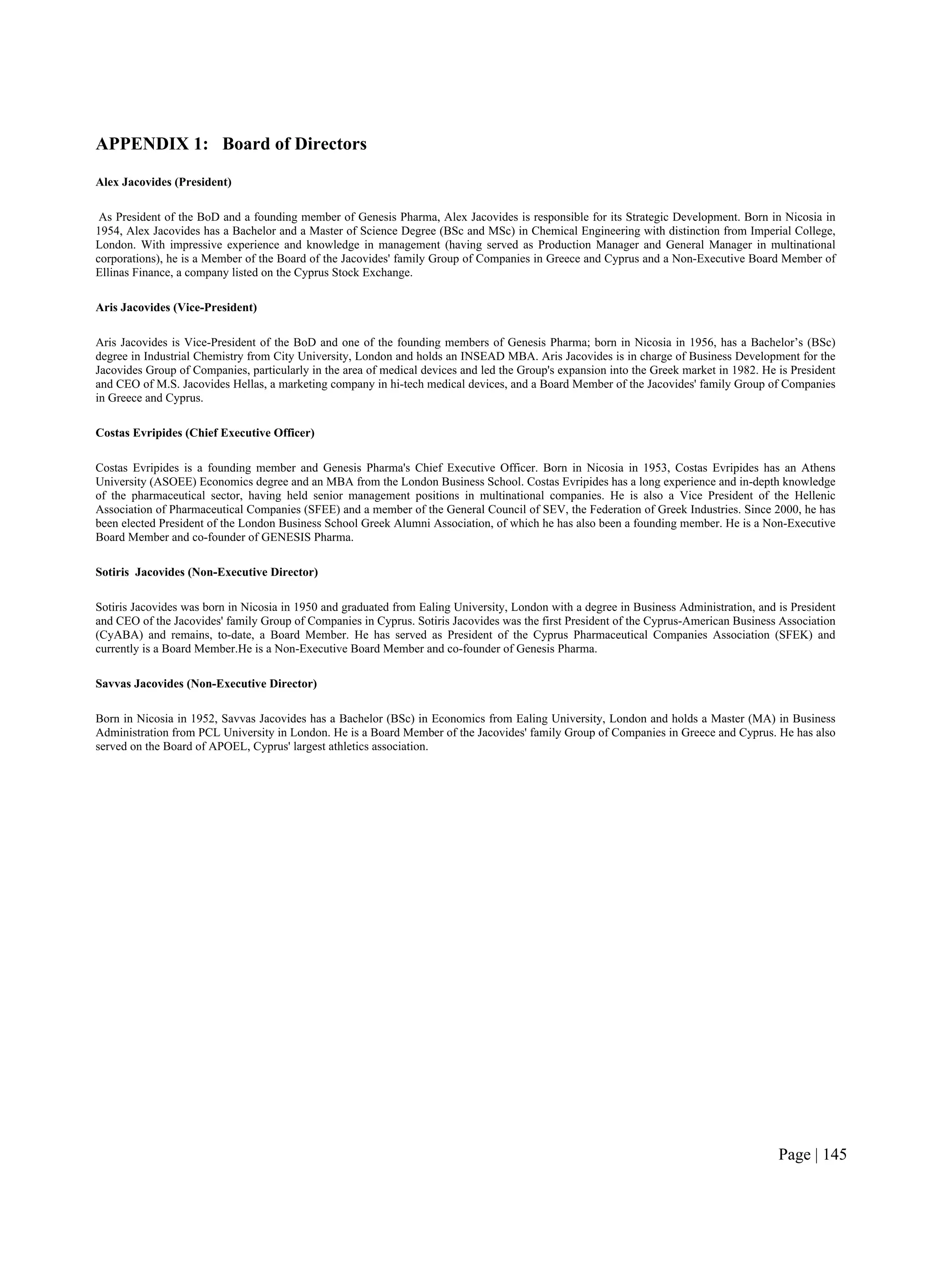
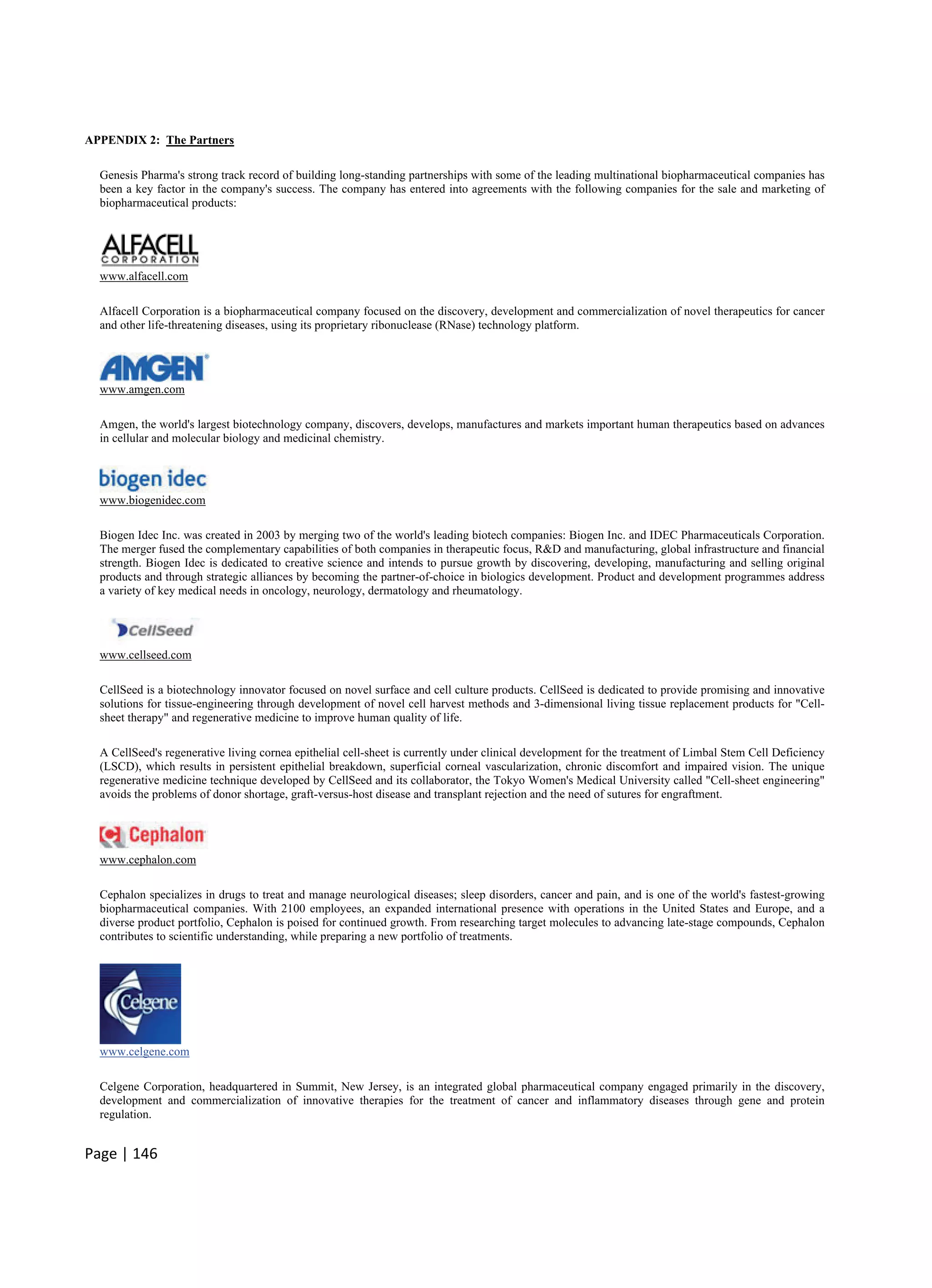
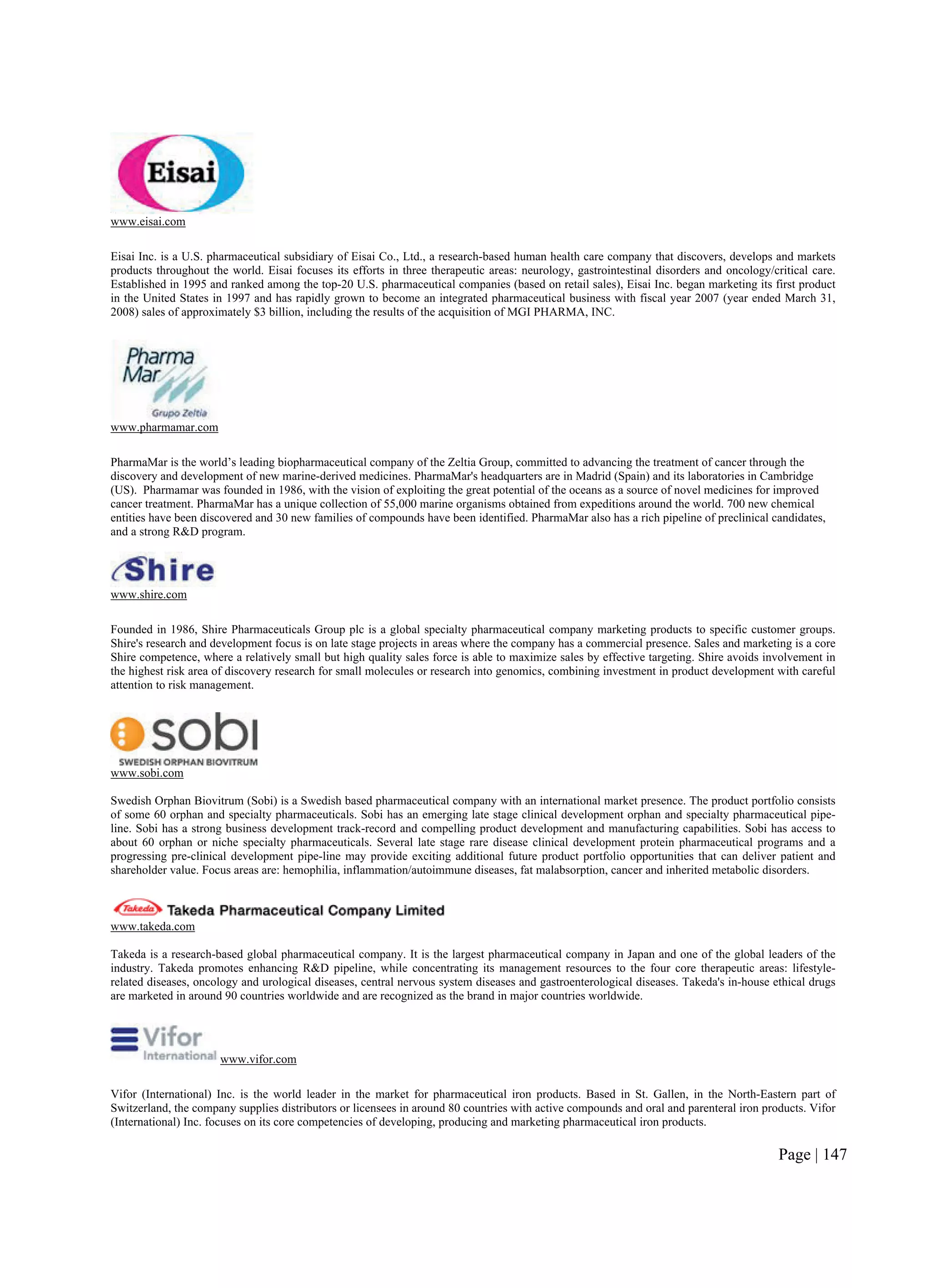
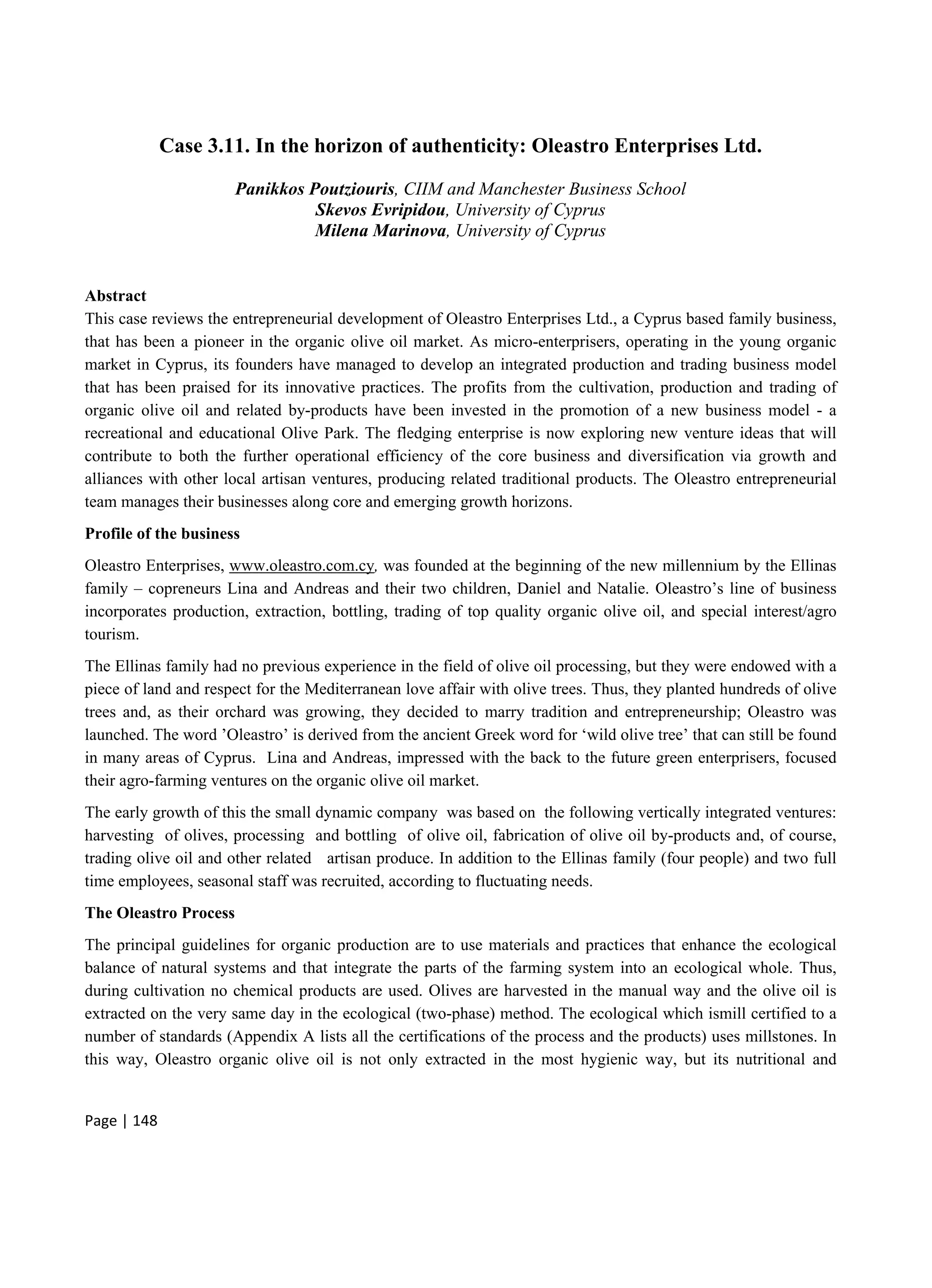
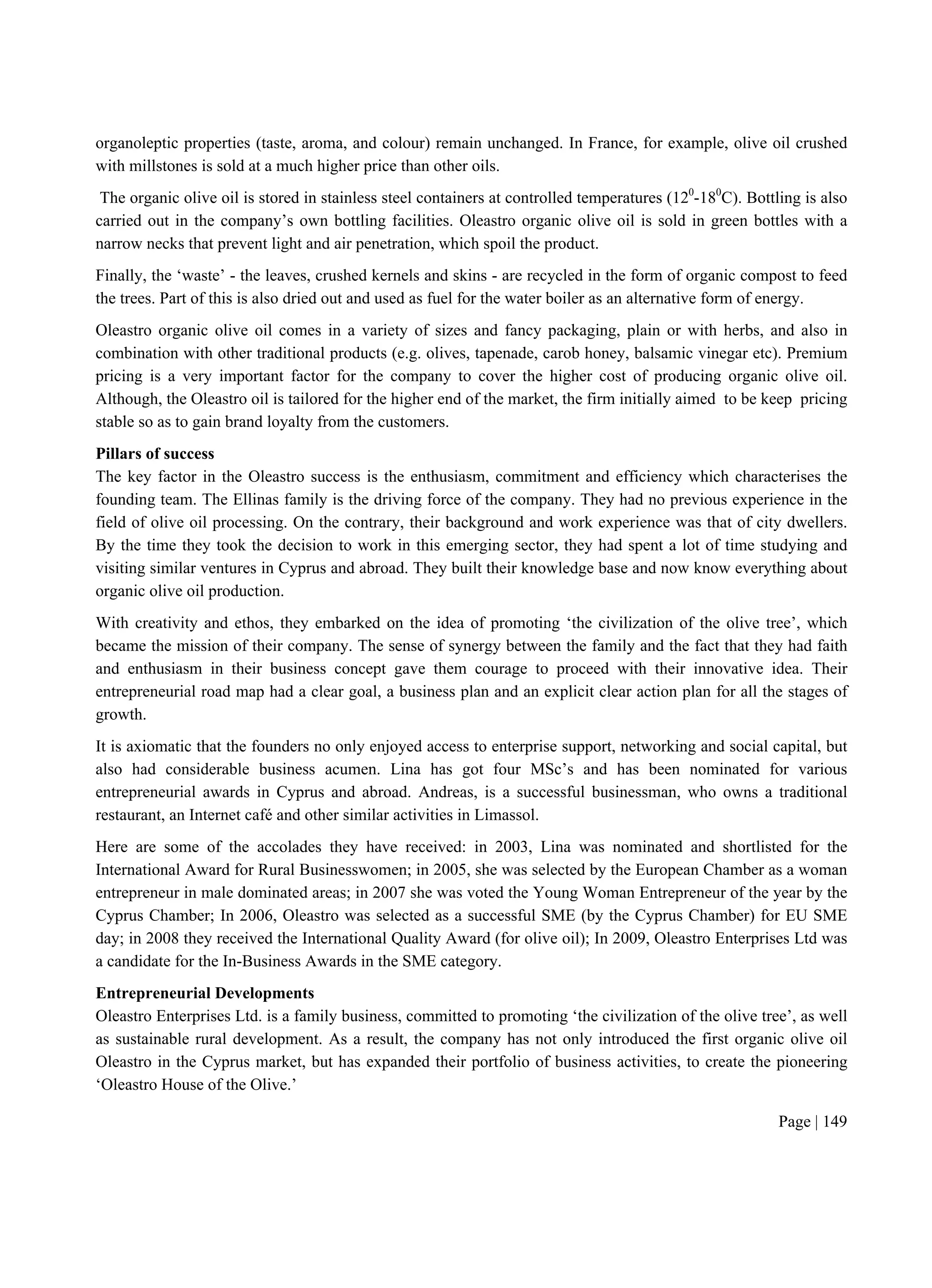
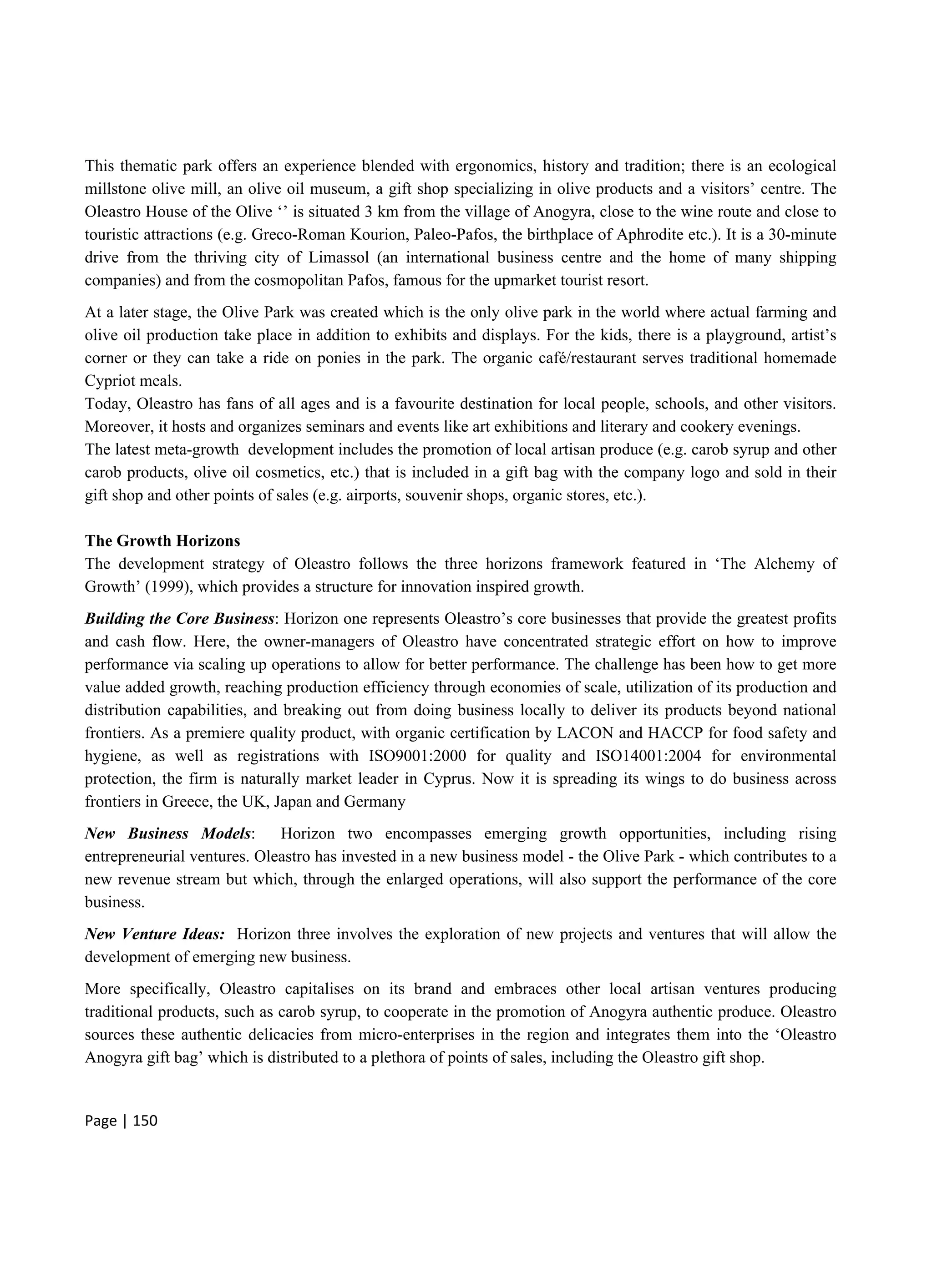

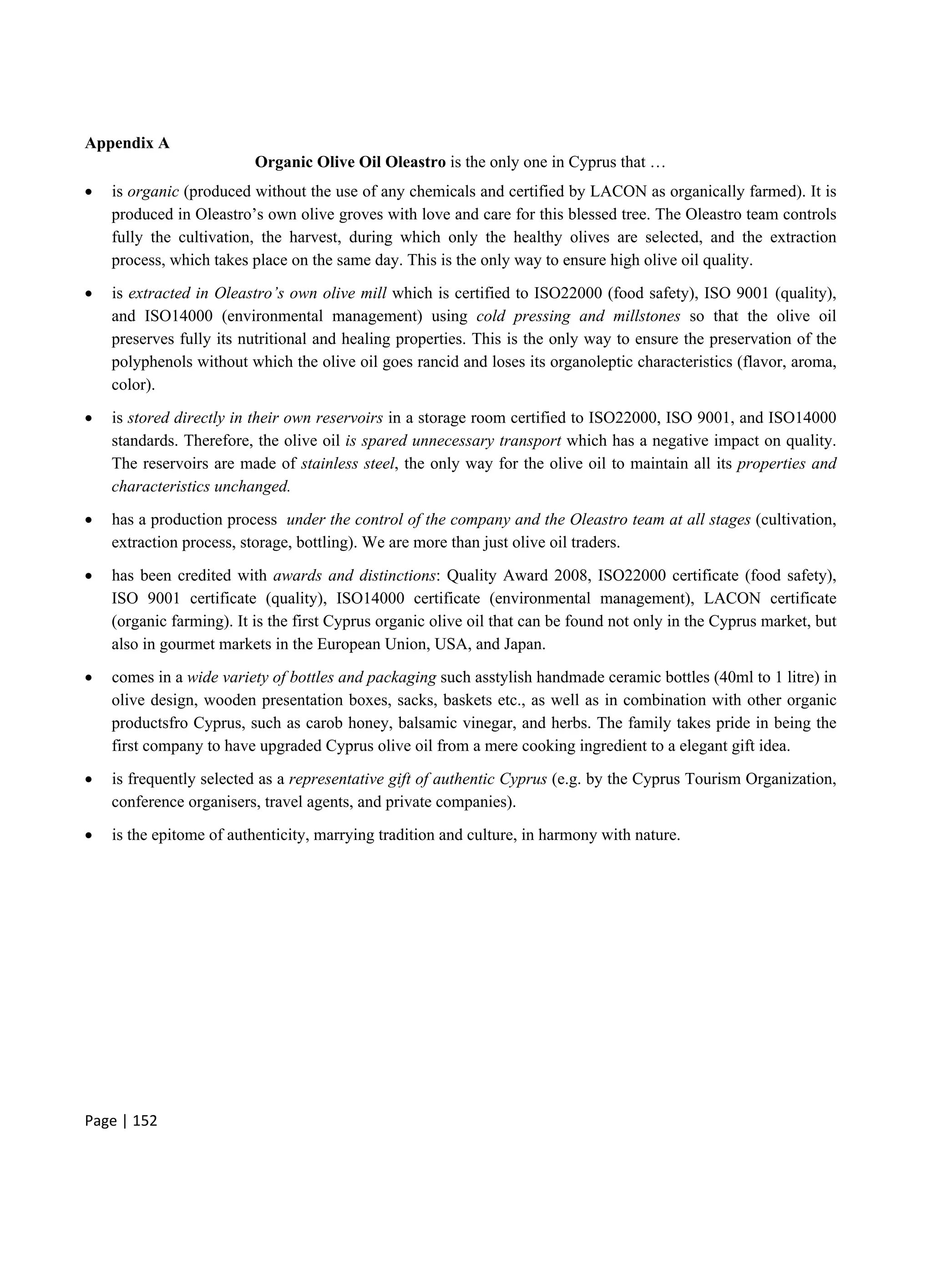
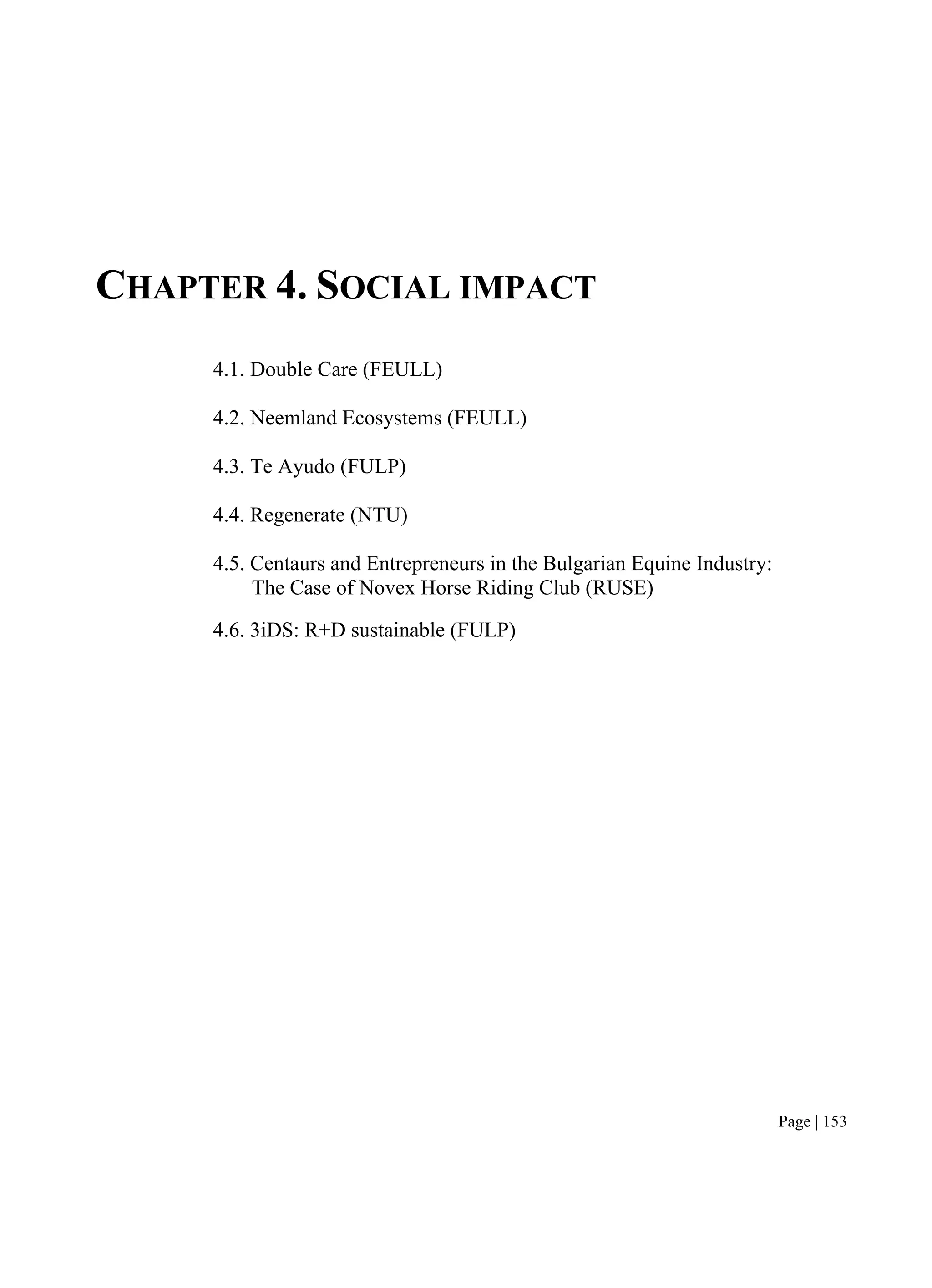
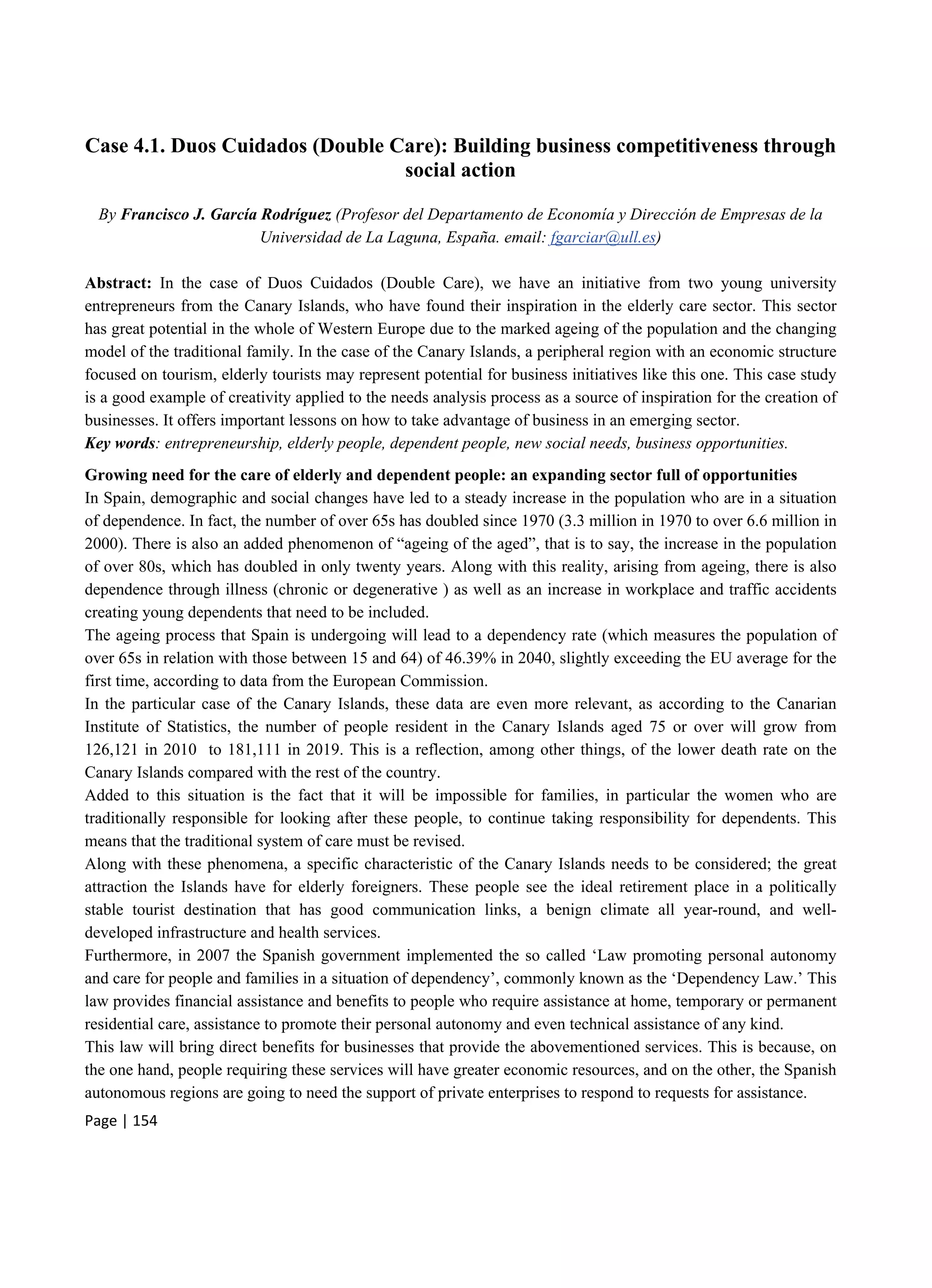
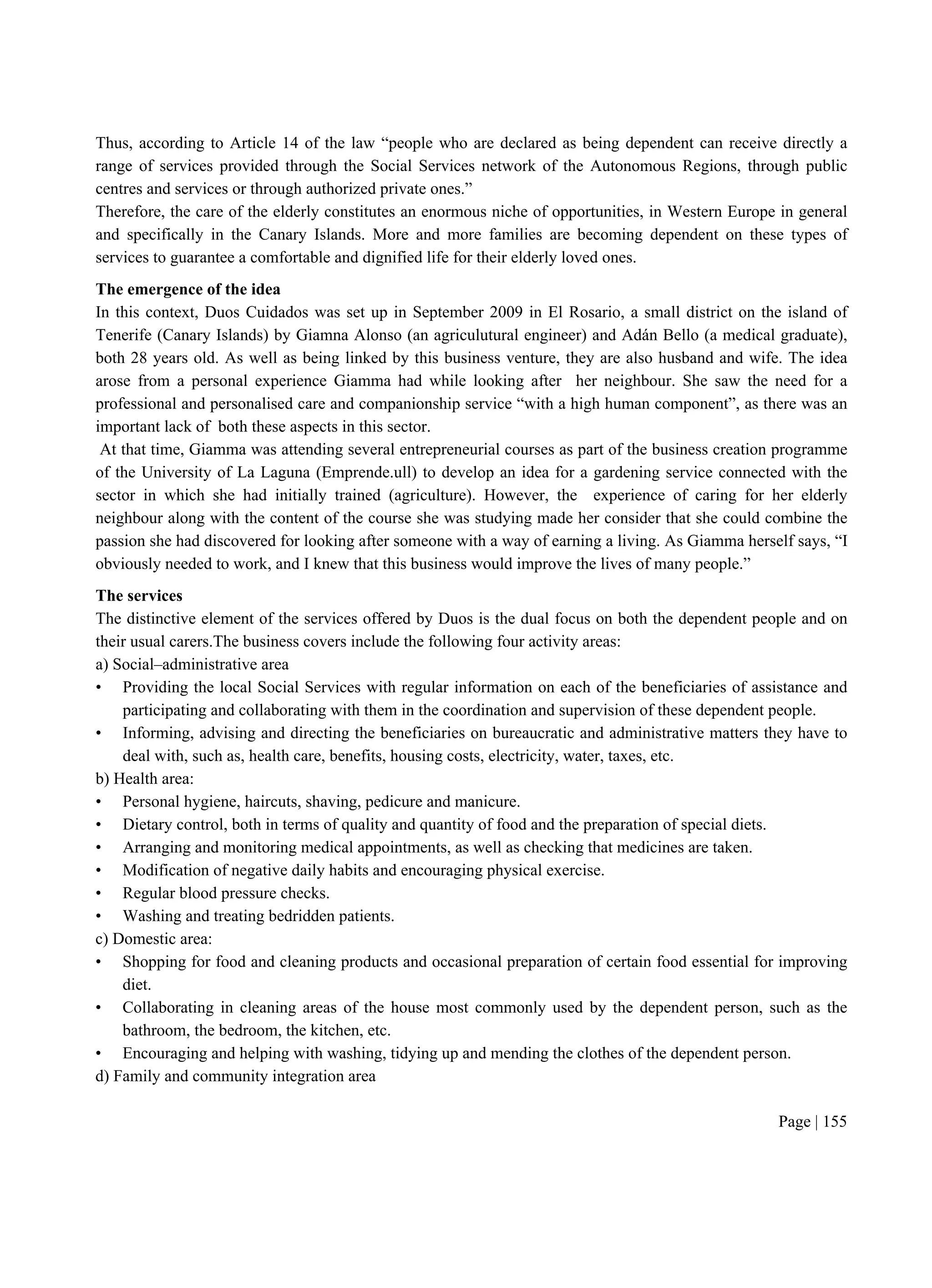
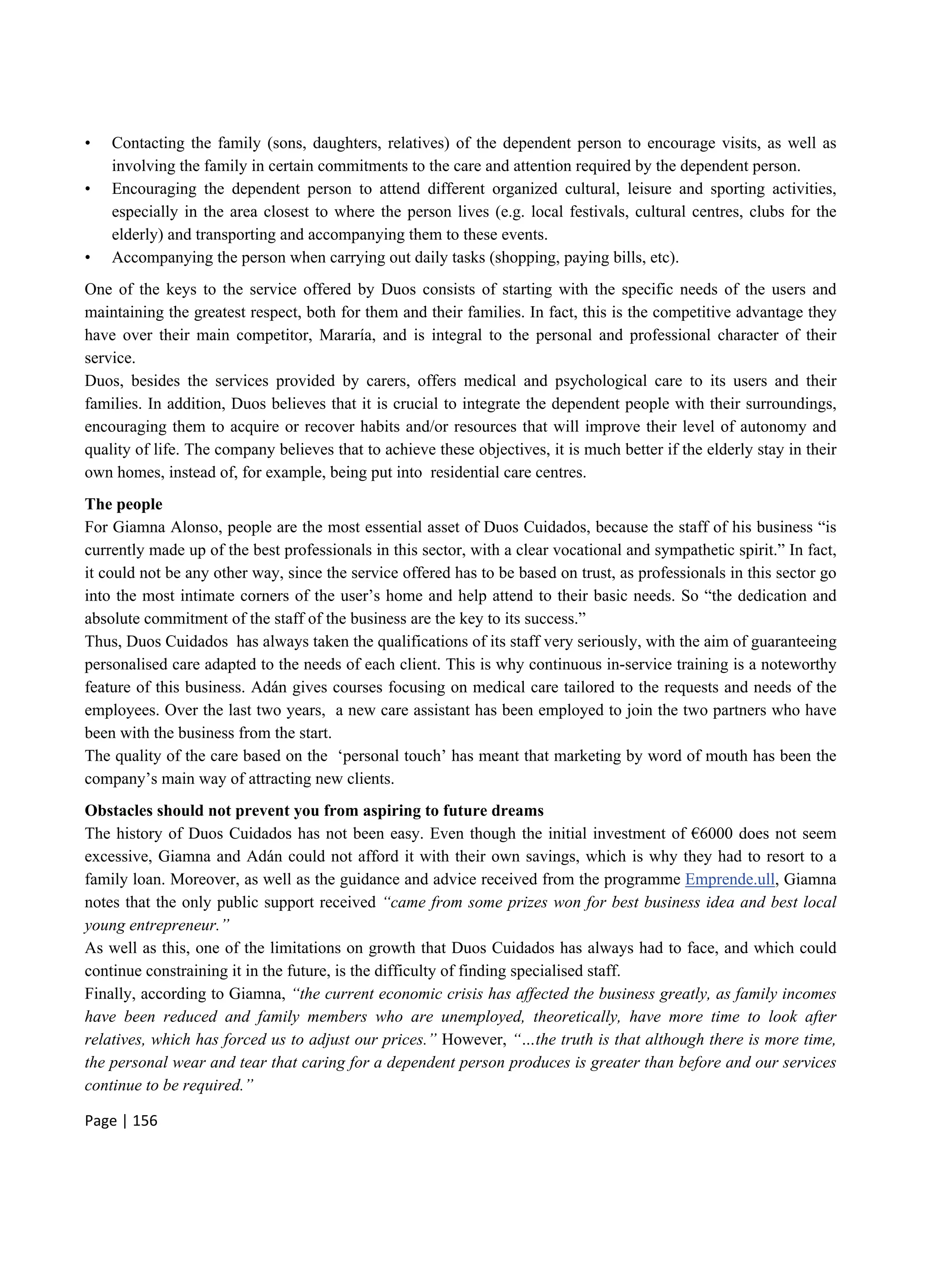

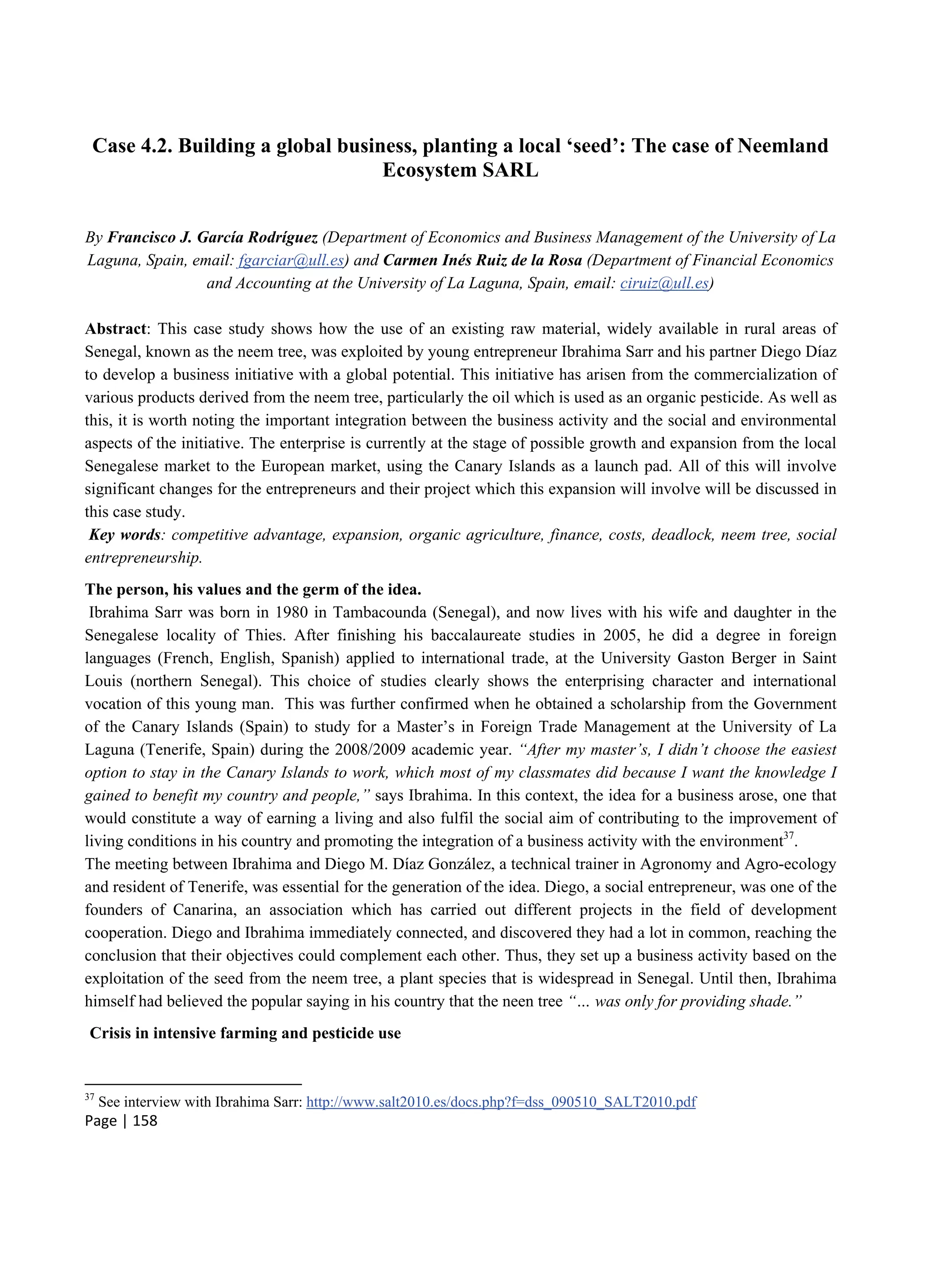
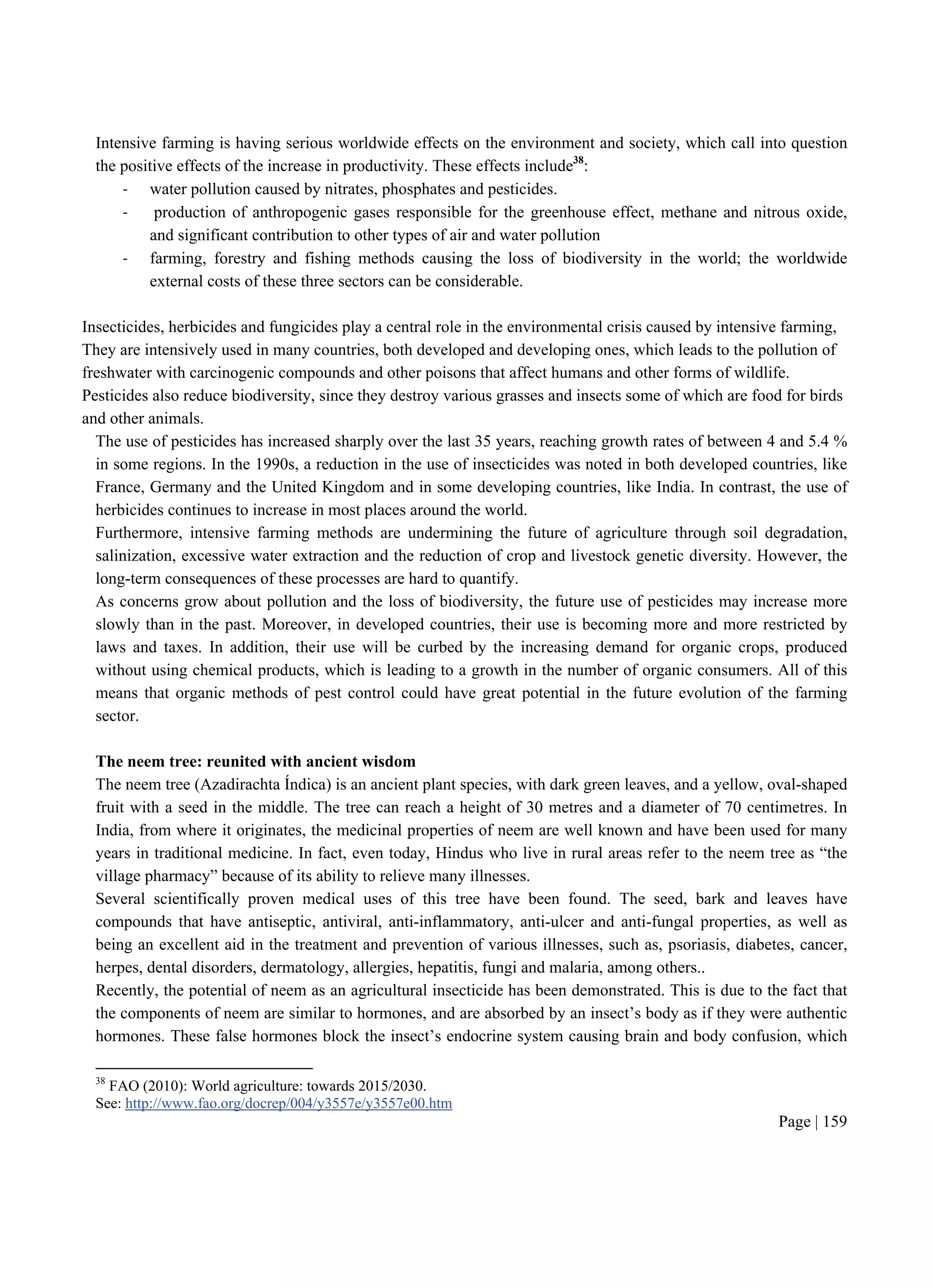
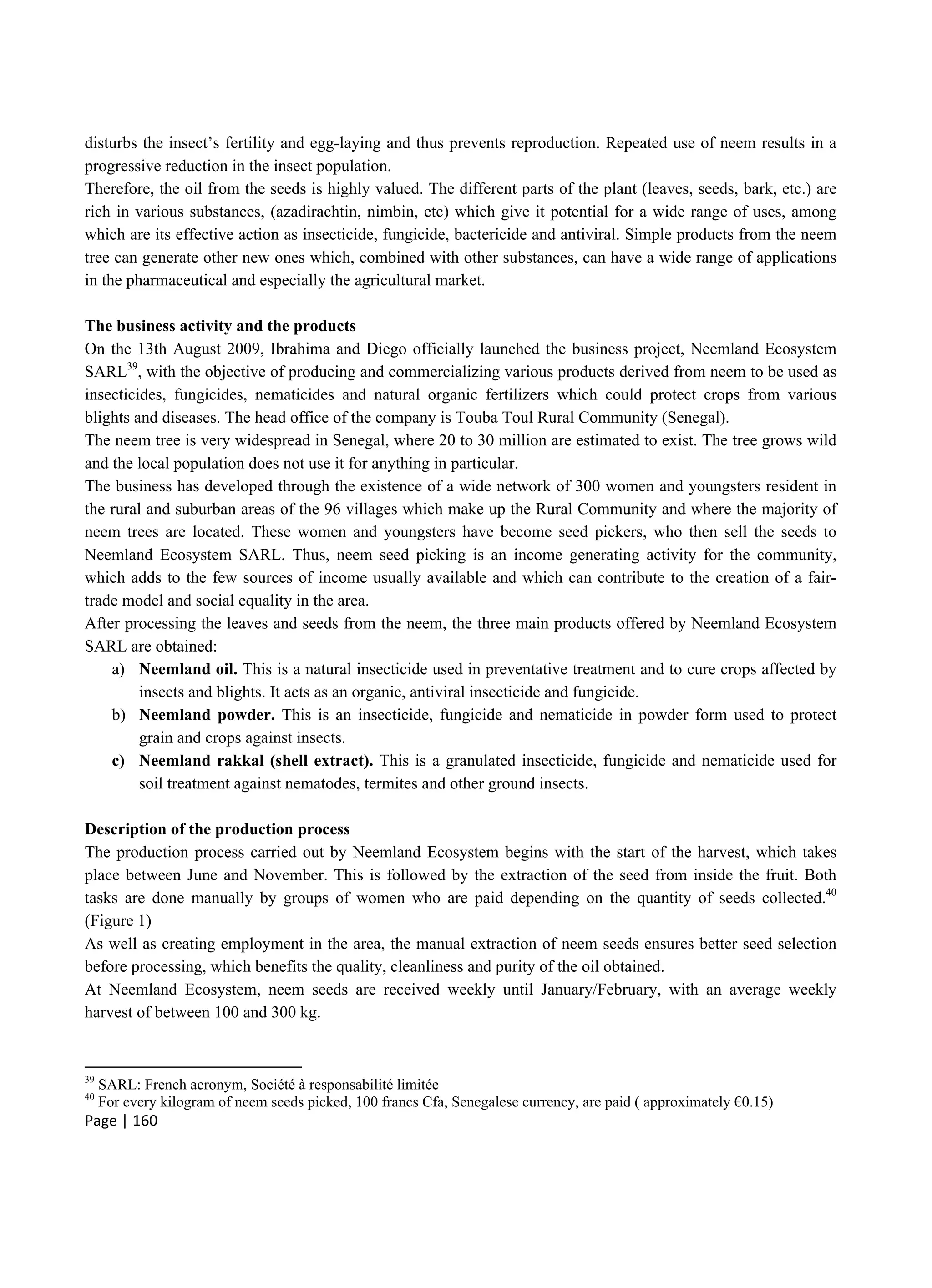

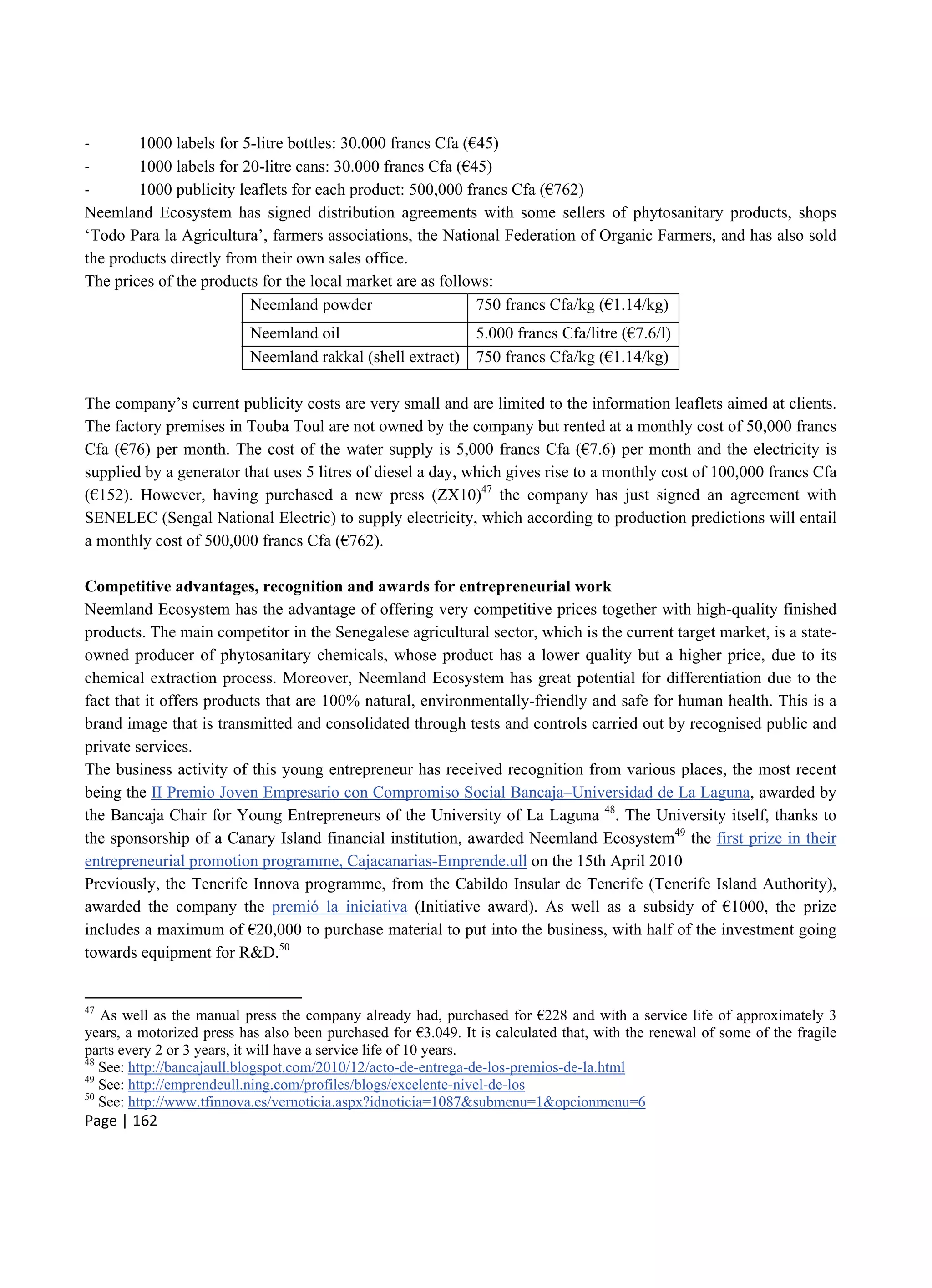
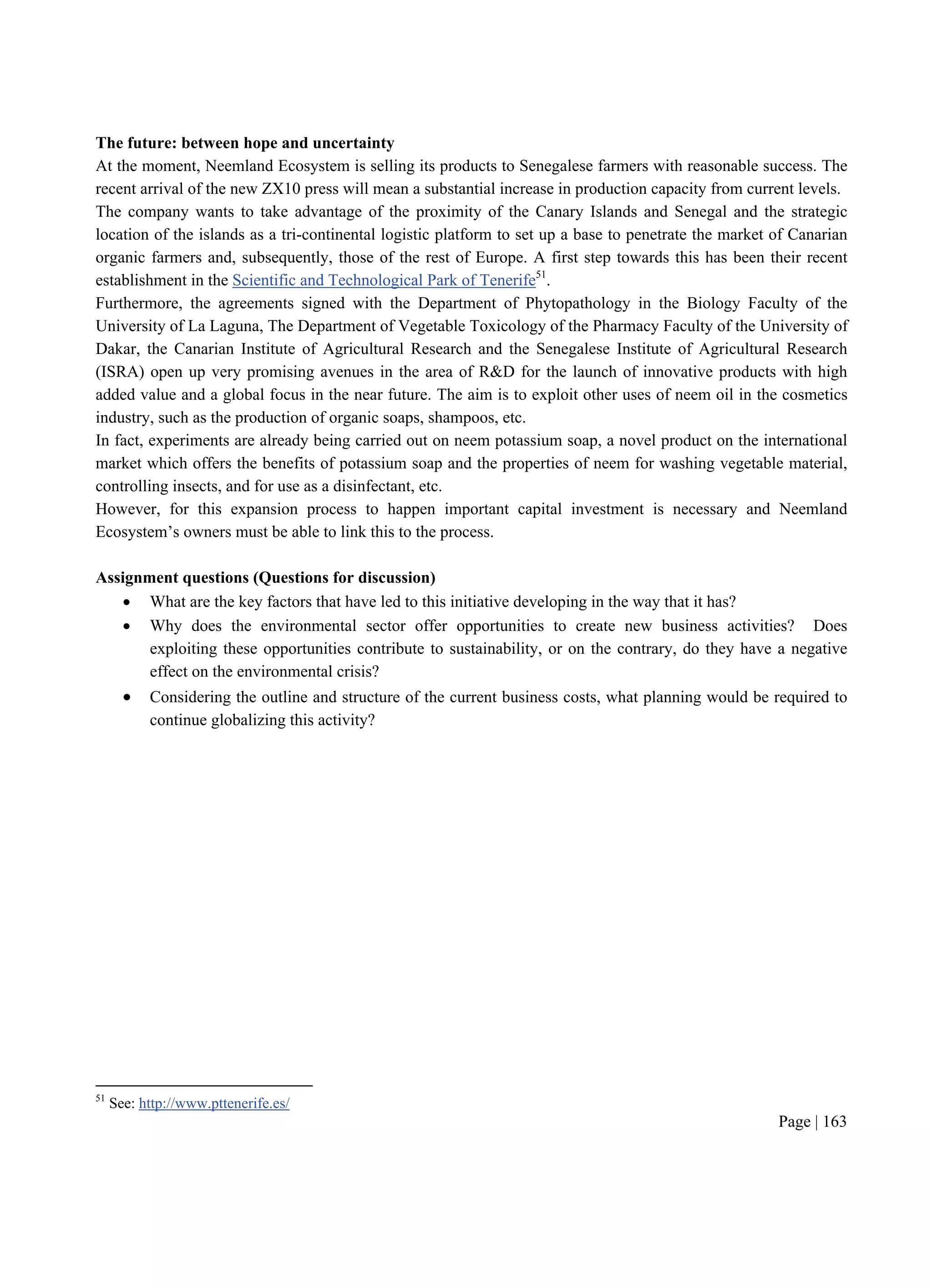
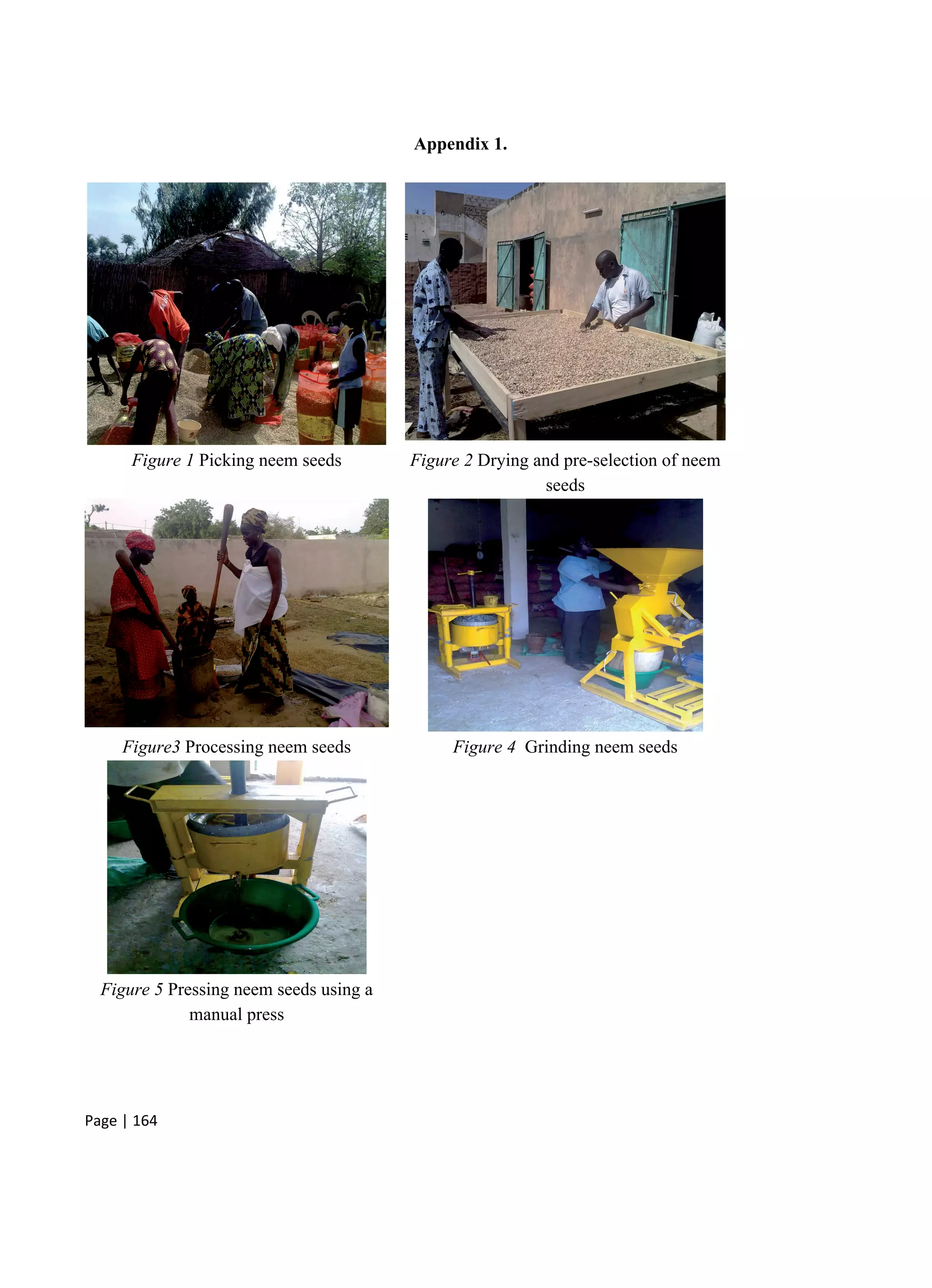
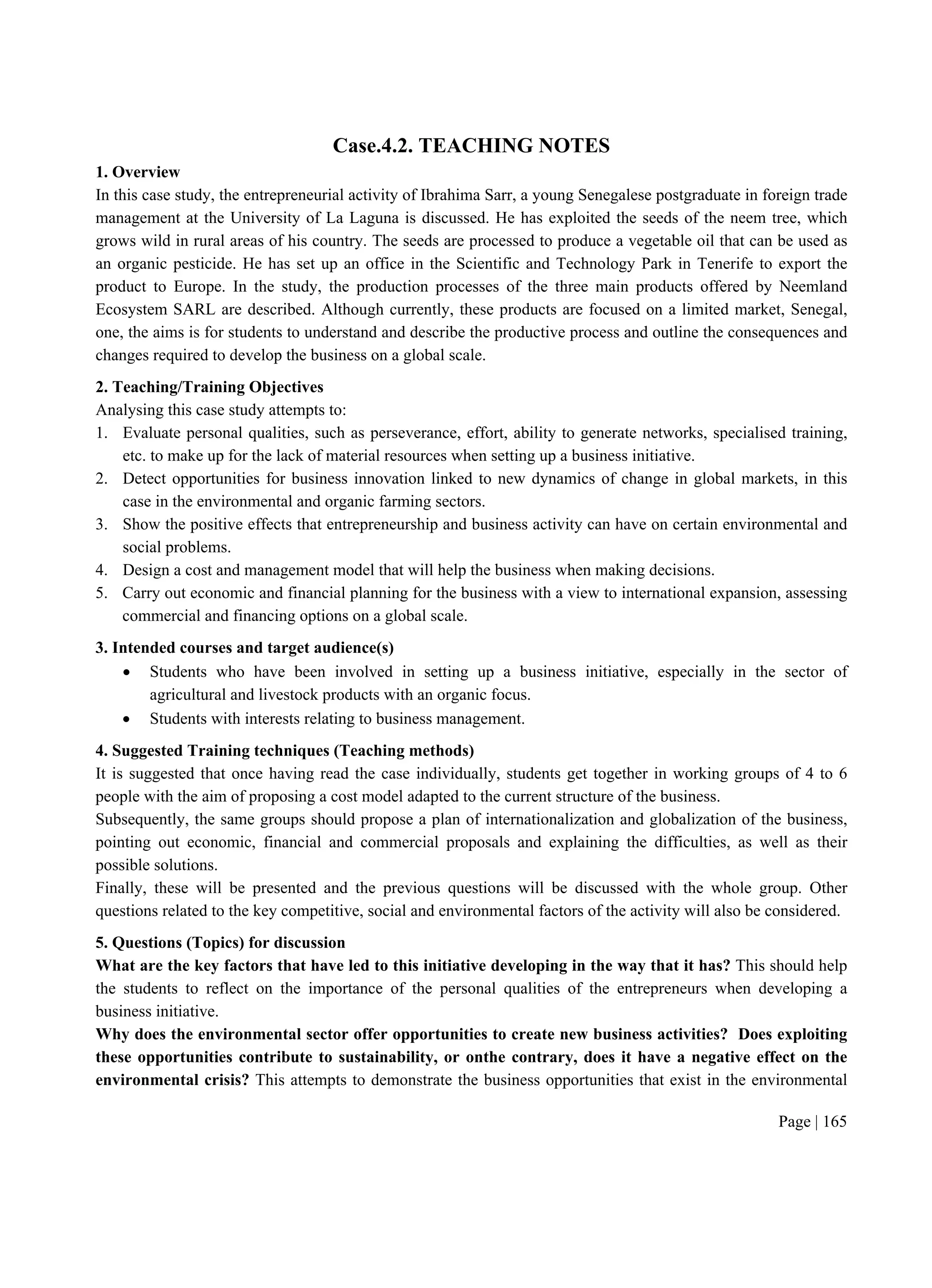
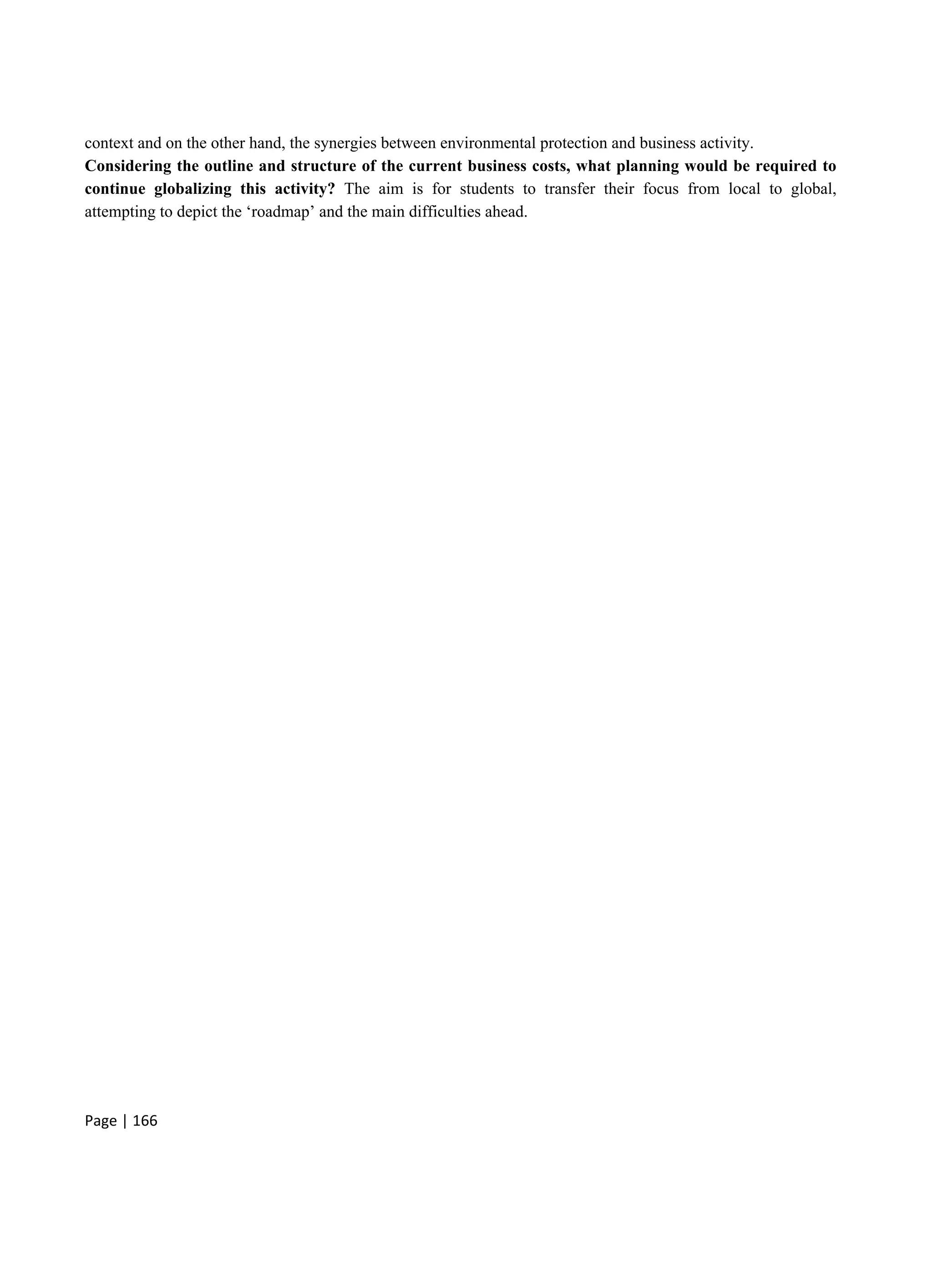
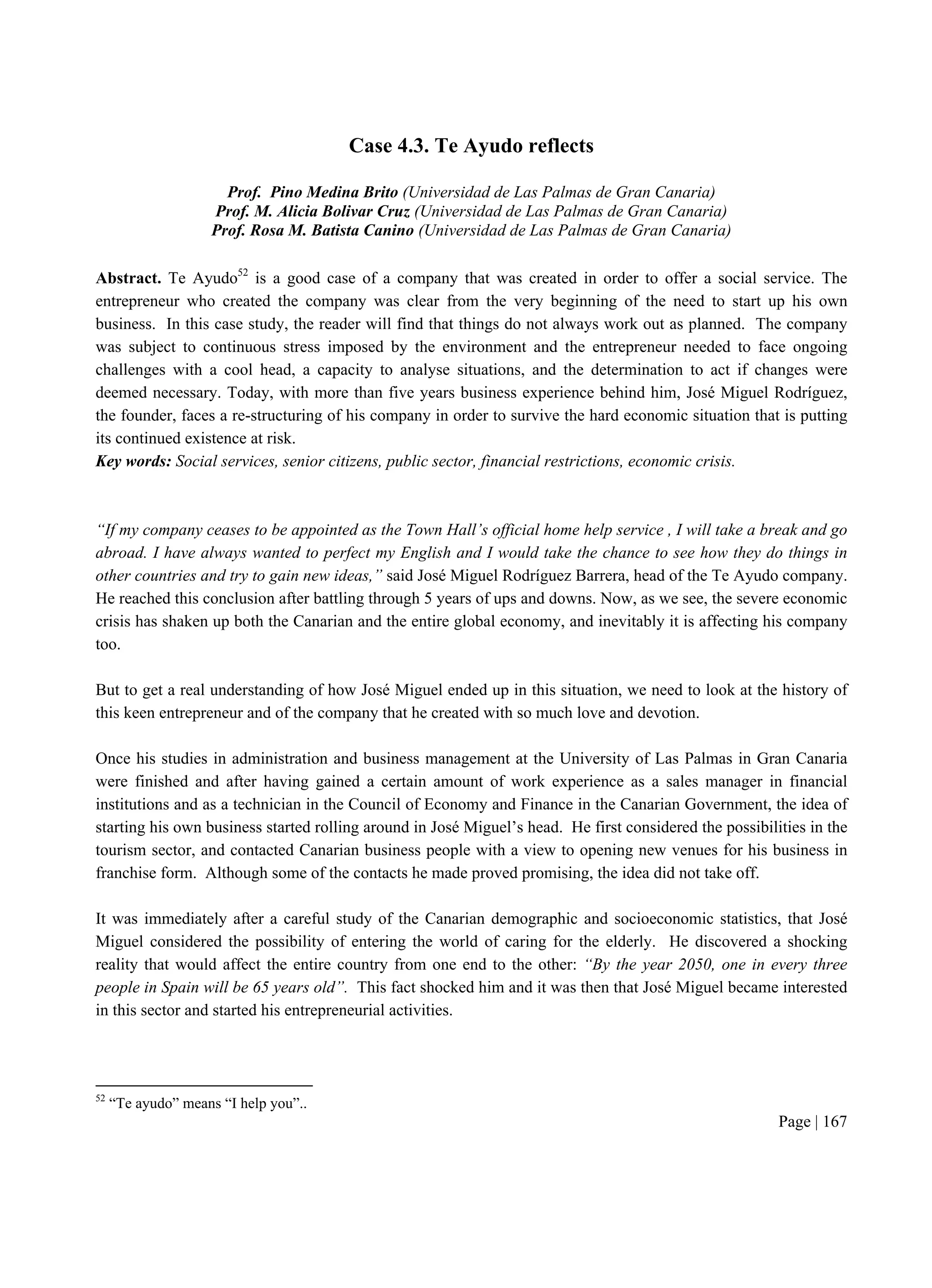

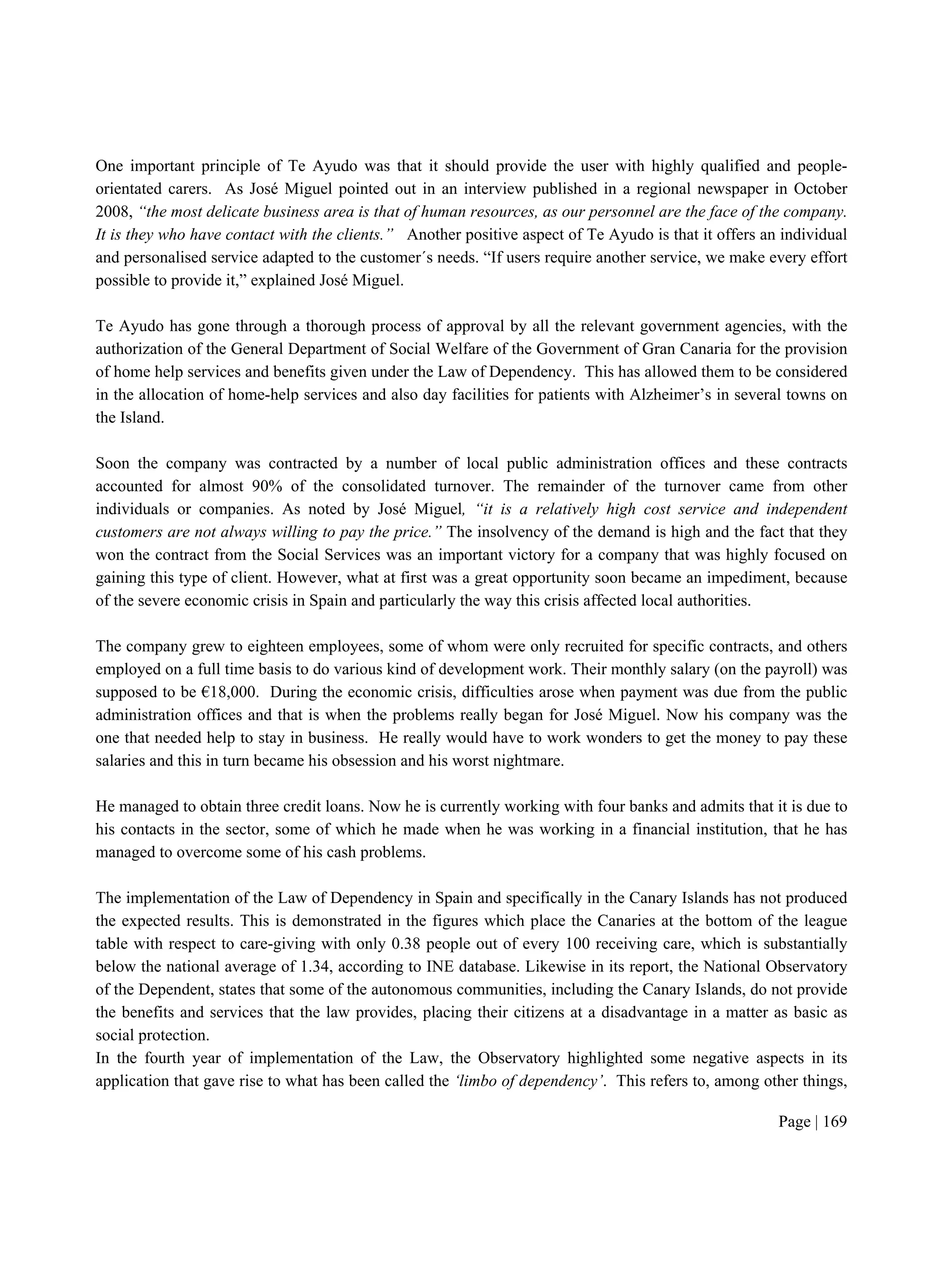
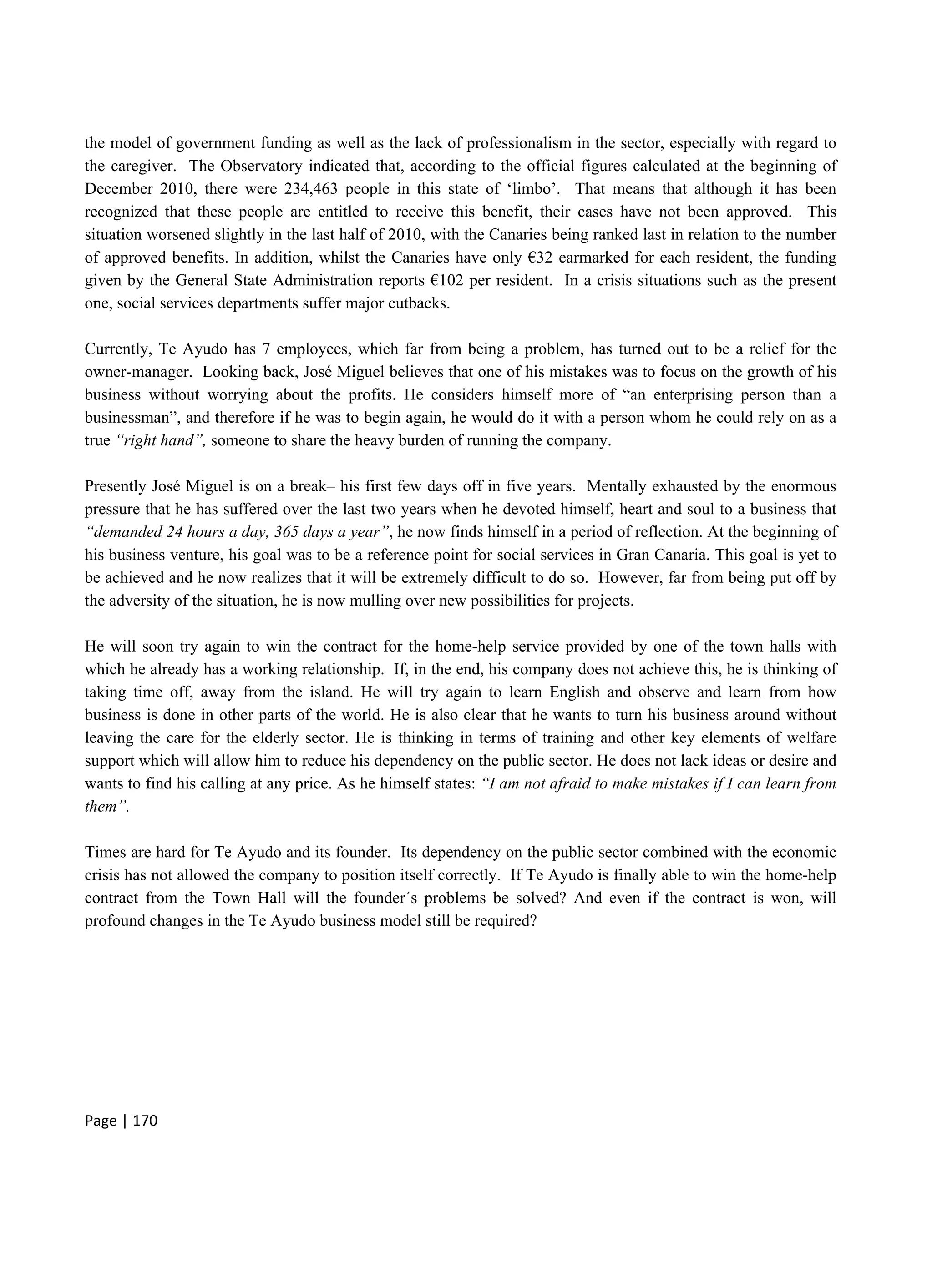
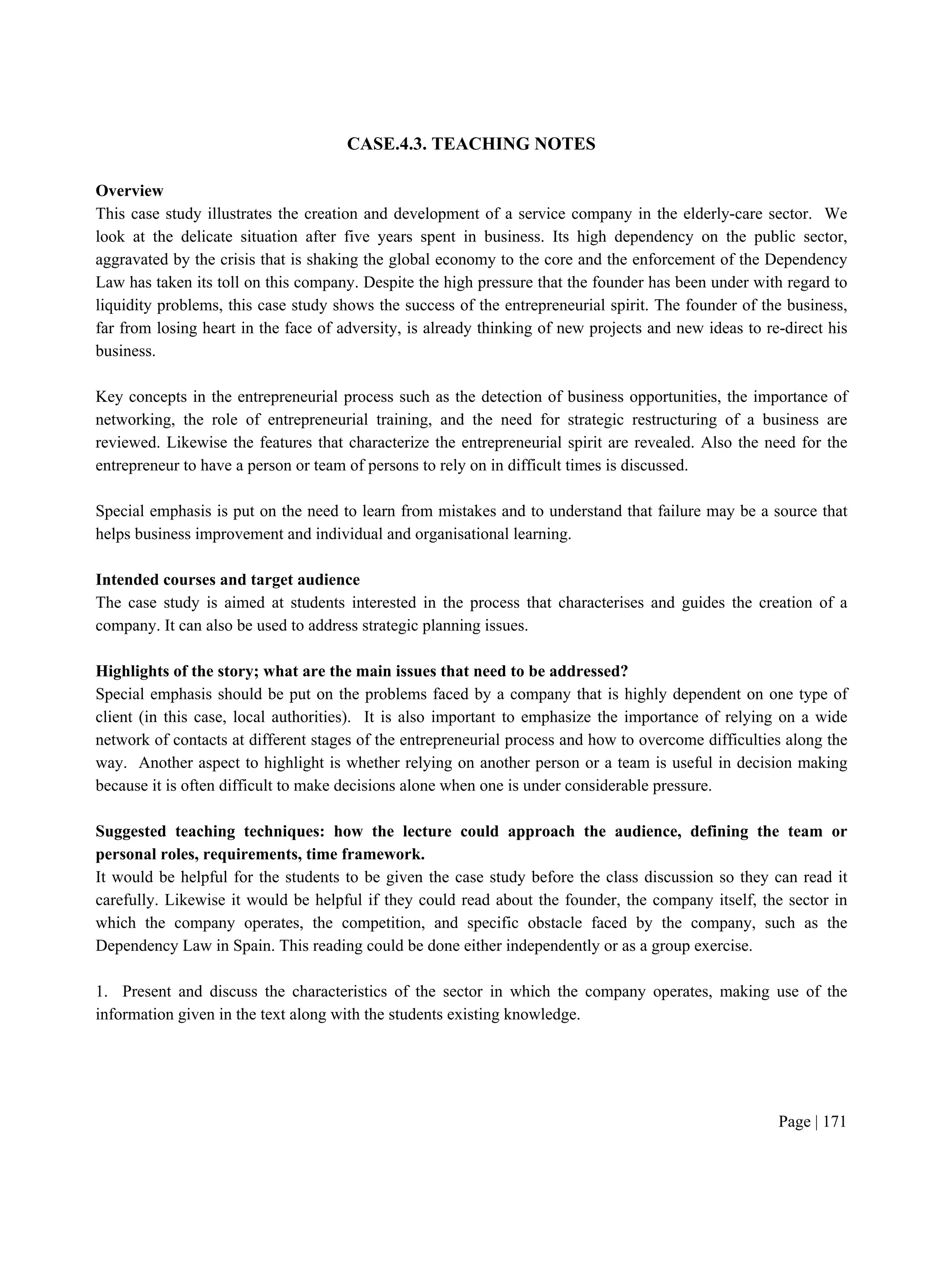
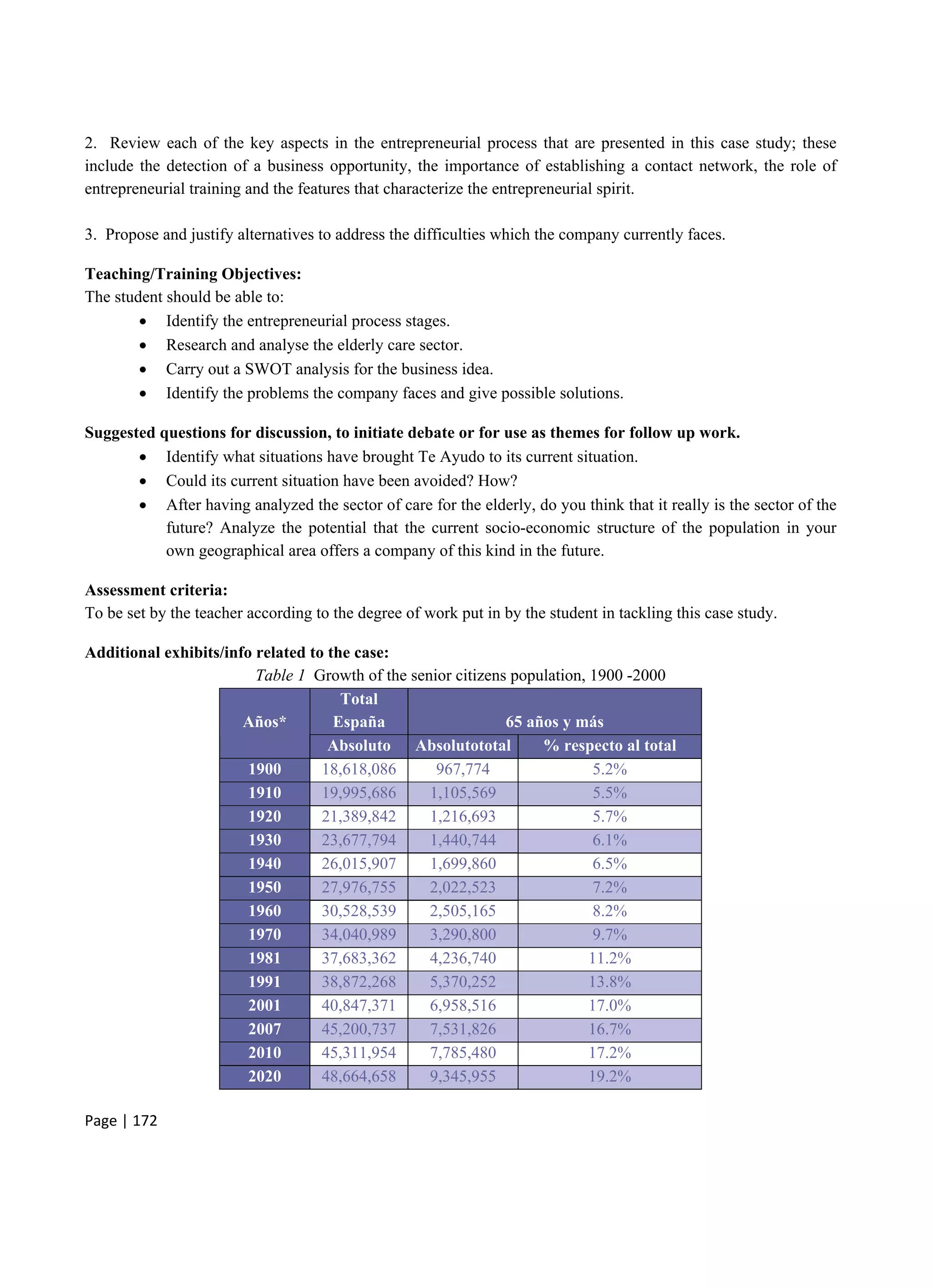
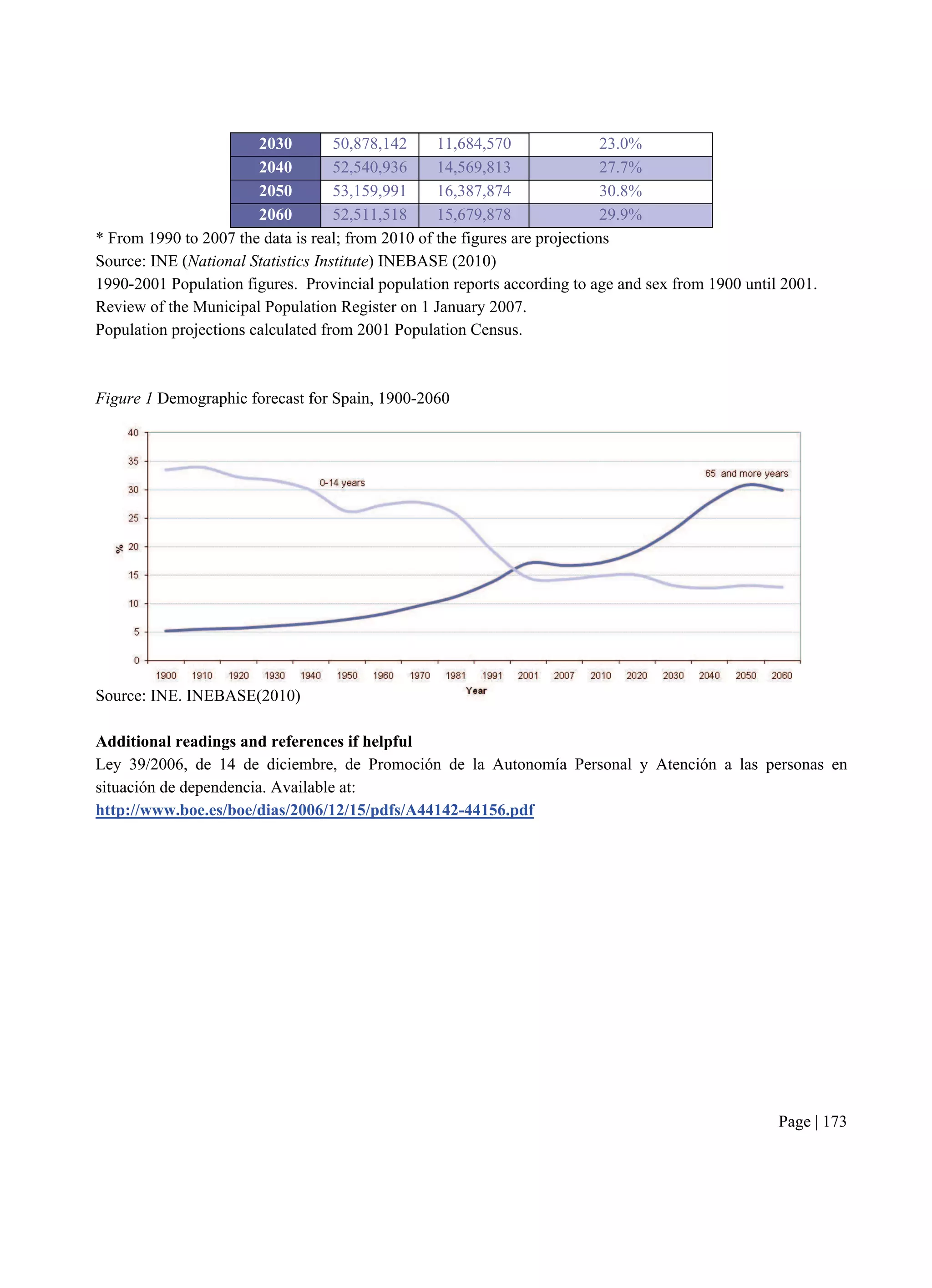
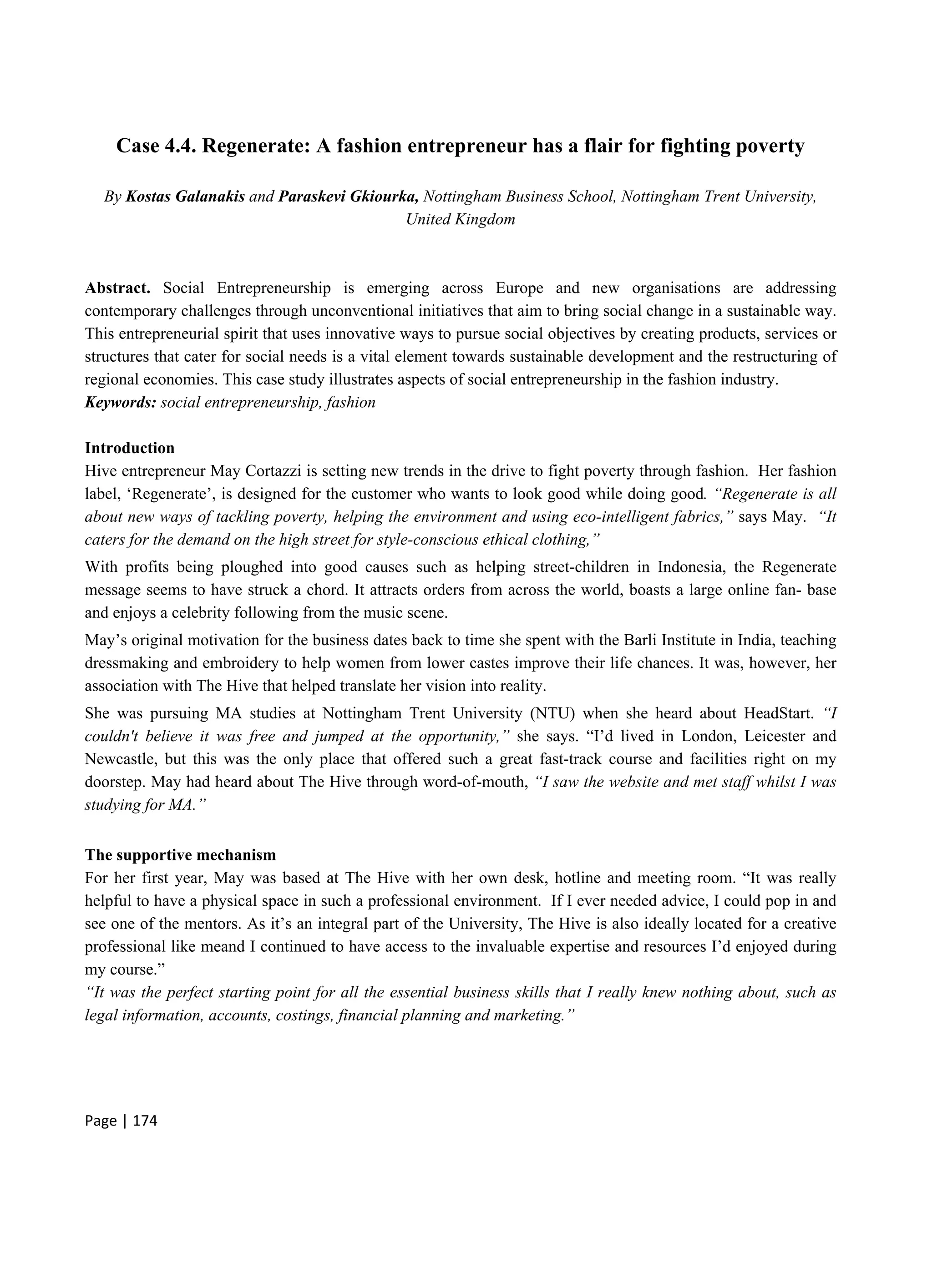

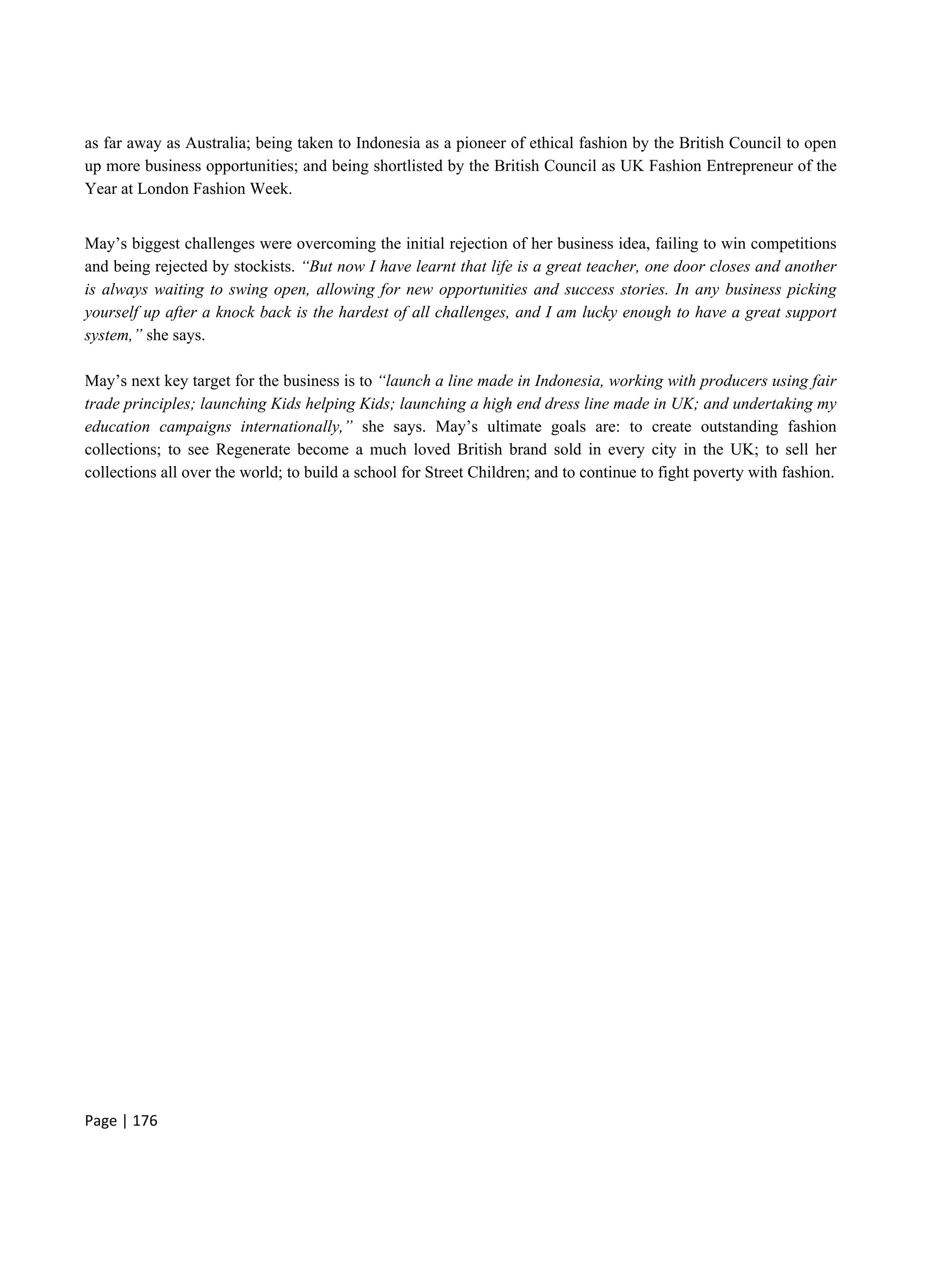
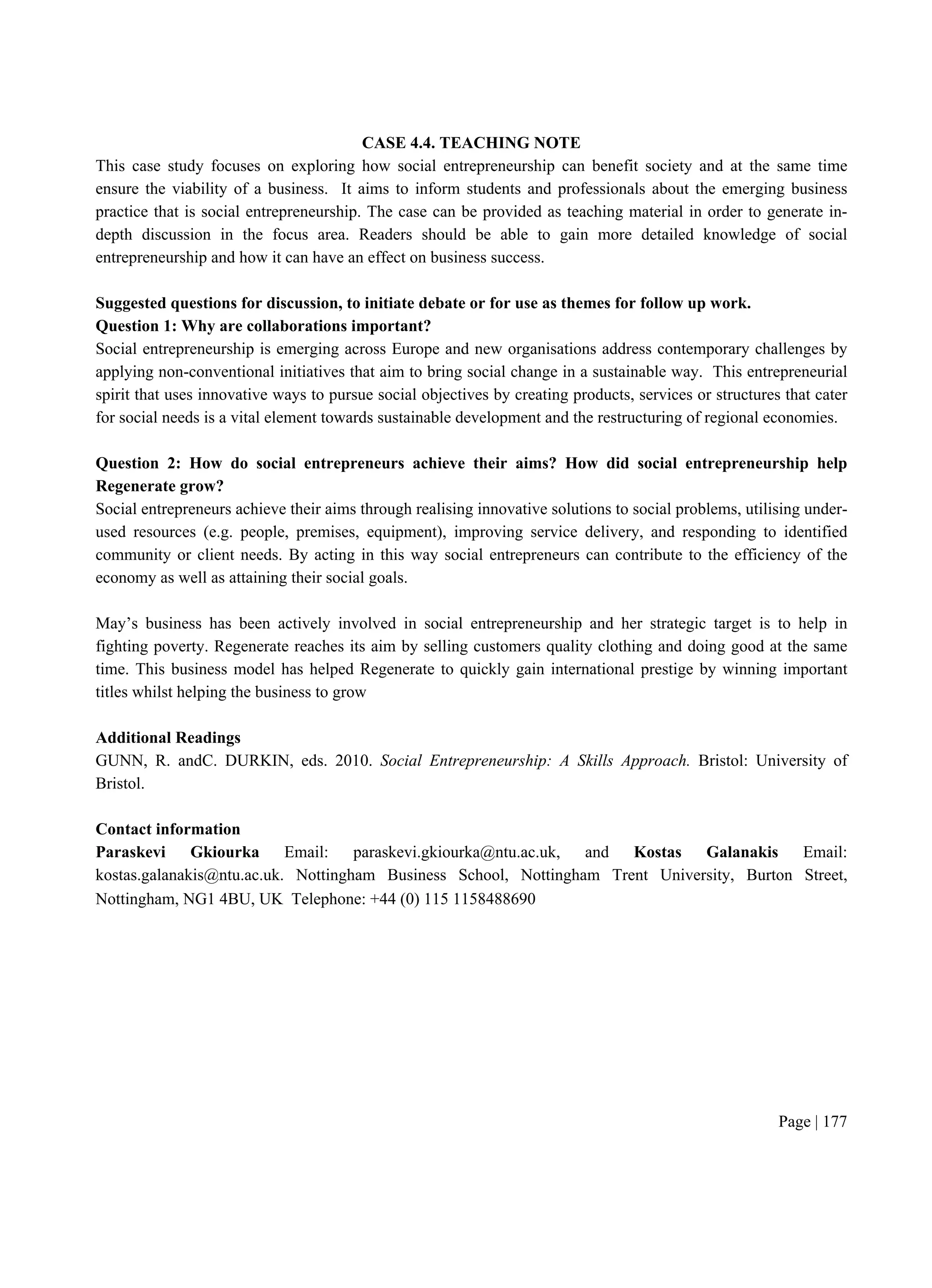

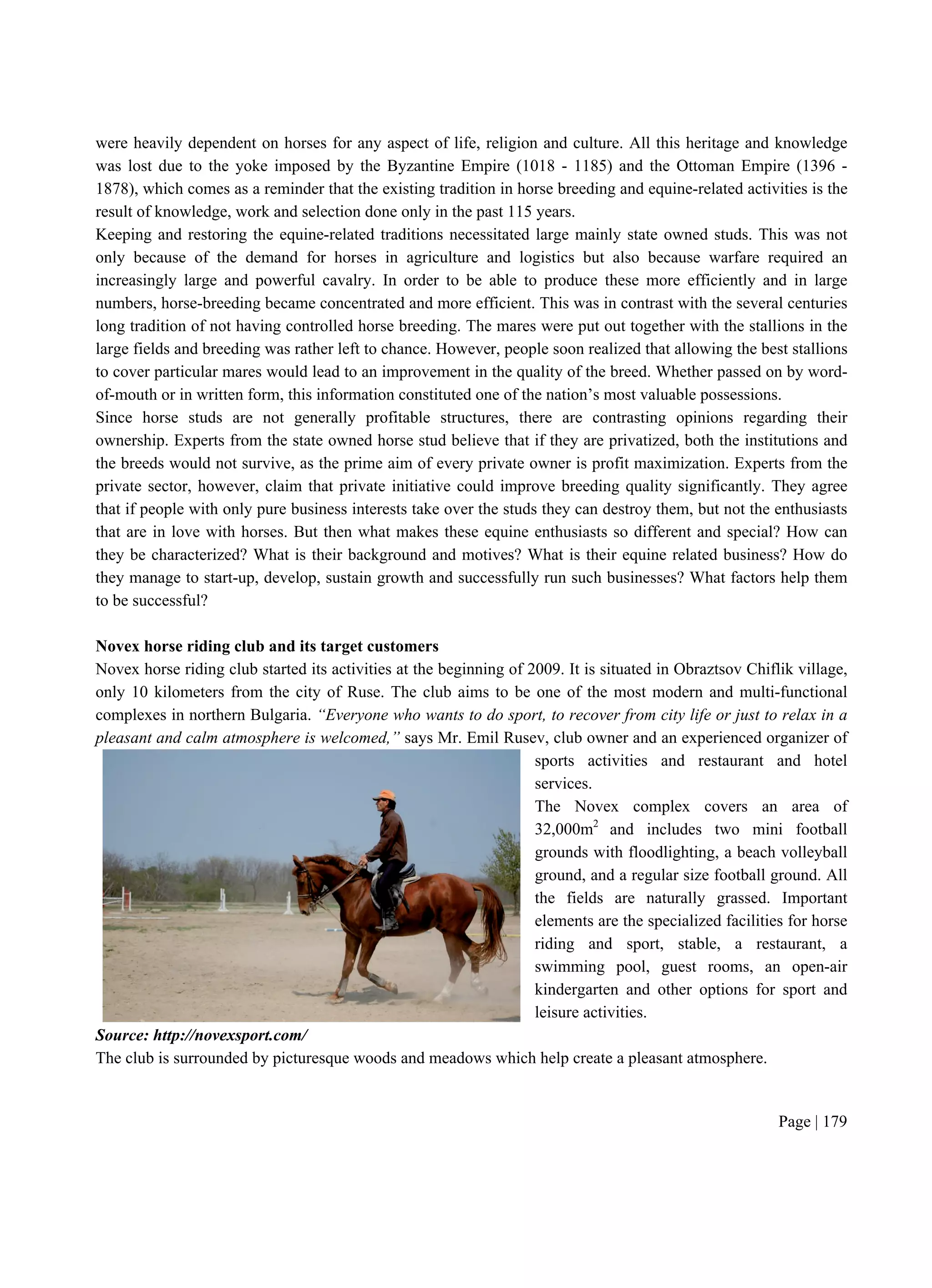
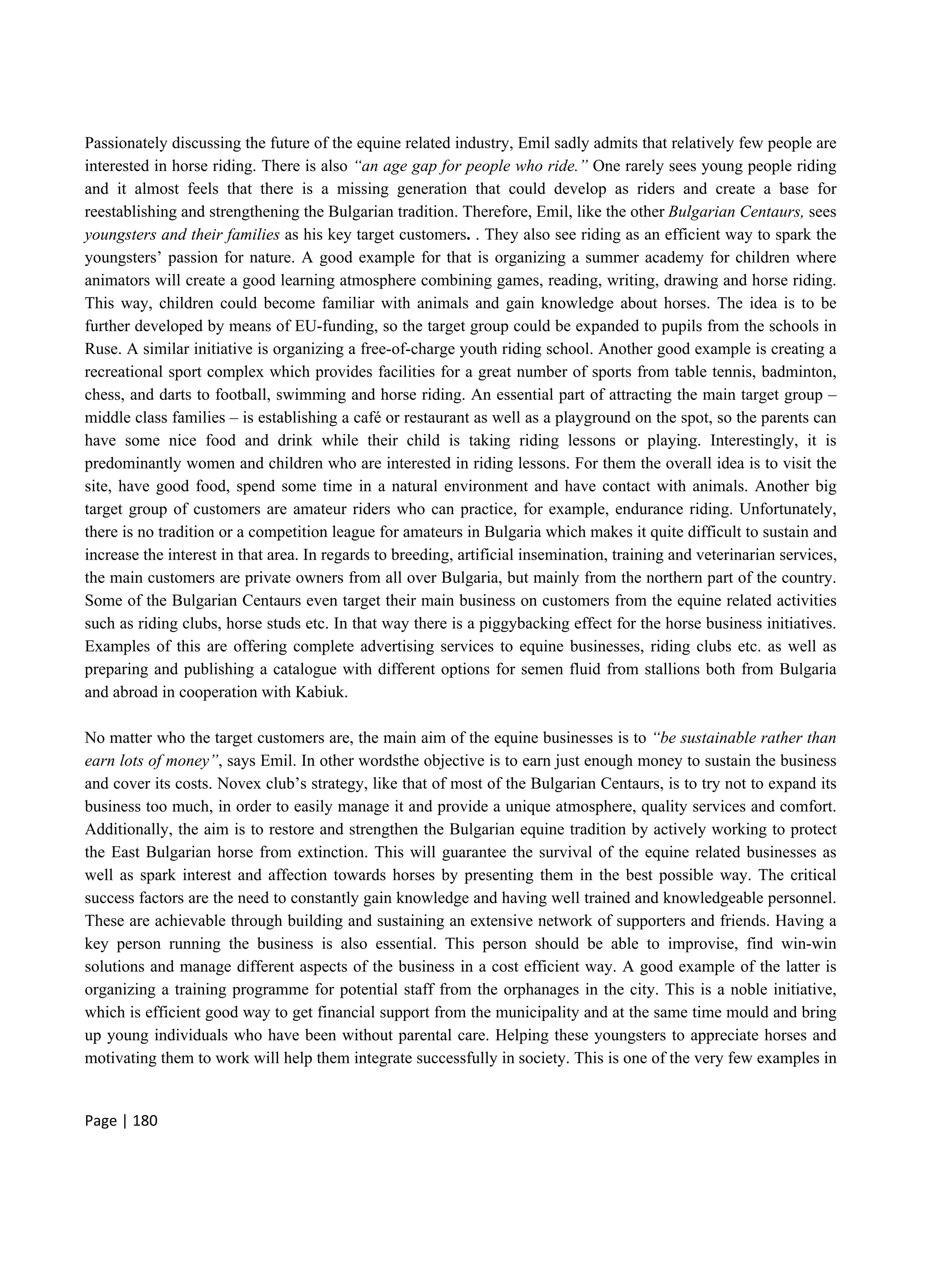
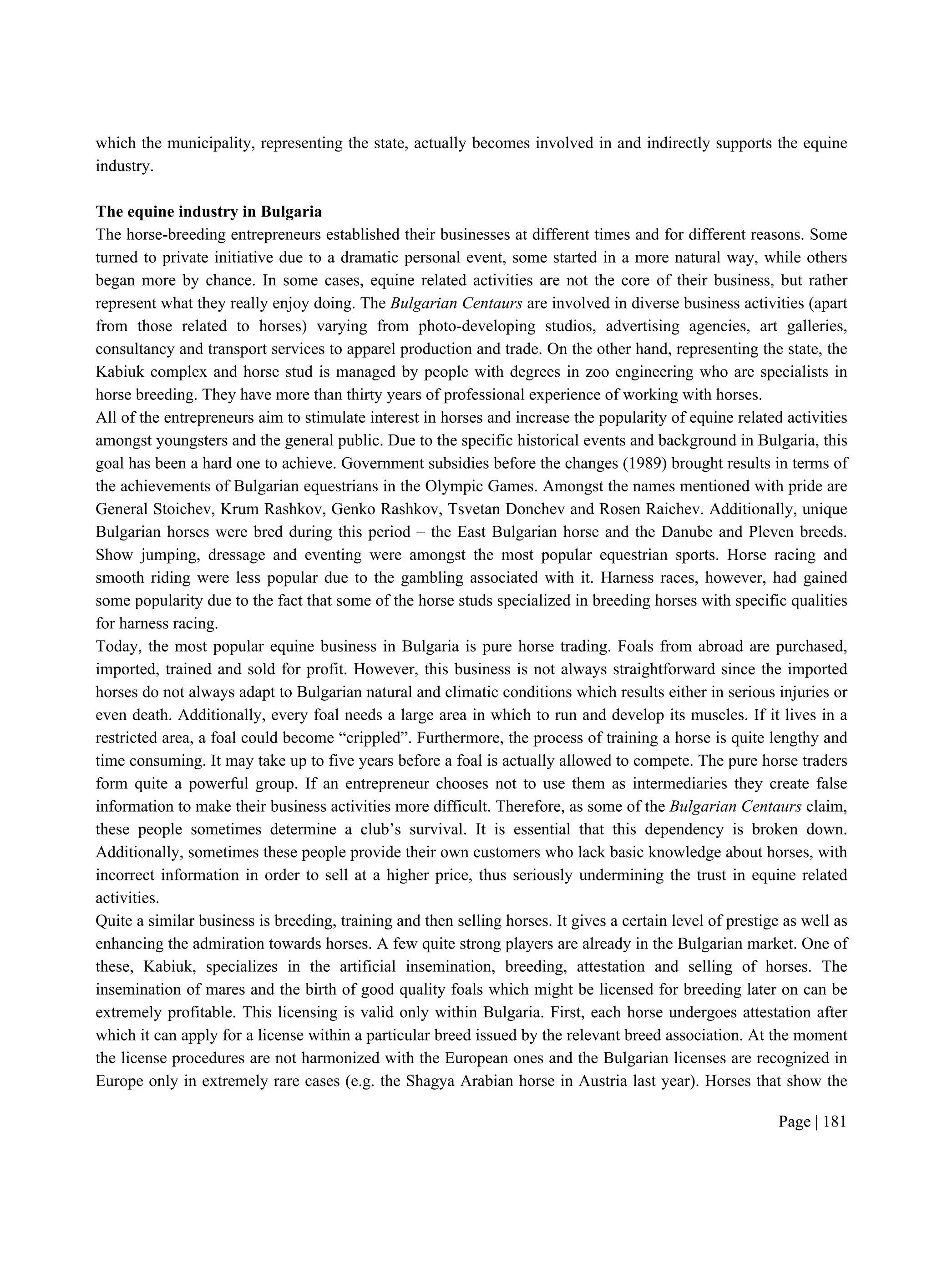
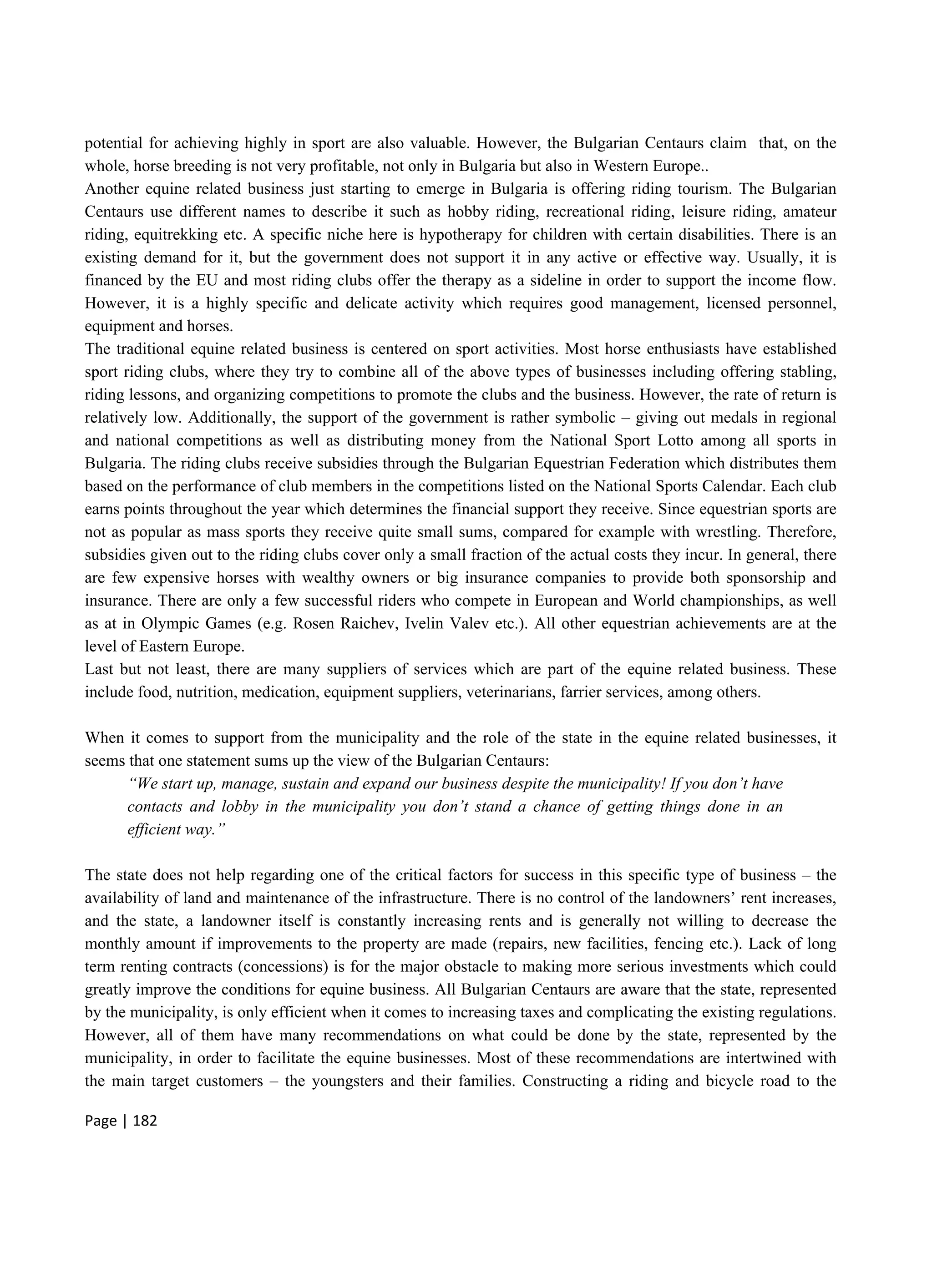
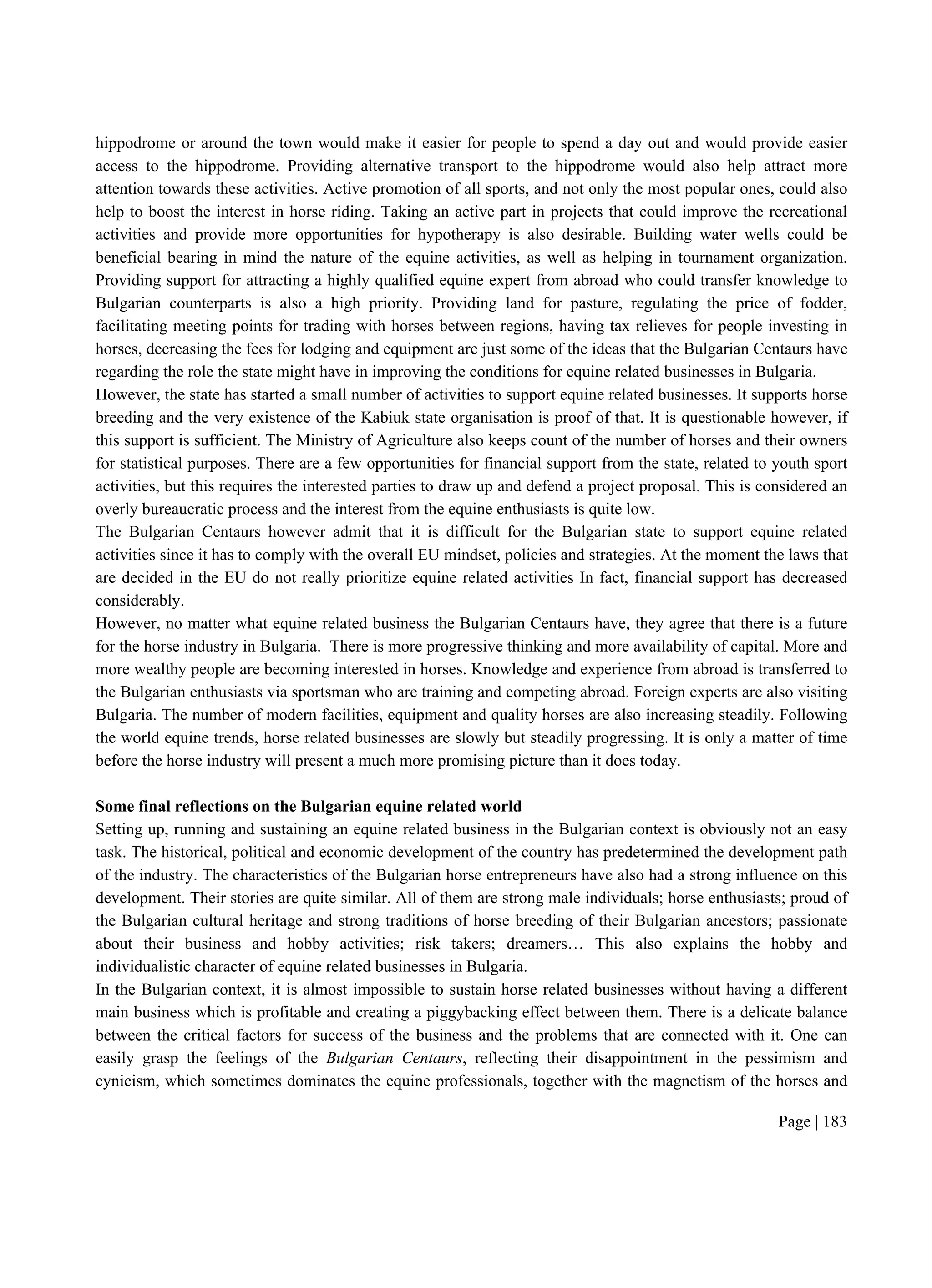
![Page | 184
their deep love of these animals. With this as a background, the unstable economic conditions in Bulgaria,
combined with the effects of the current economic crisis, require that the equine entrepreneurs have a flair for the
business and rely on their own knowledge, abilities and skills. Taking risks and managing to carry on even after
a setback is an inseparable part of their business. A strong belief in their success and the useful advice of their
closest friends are also essential. In accordance with the traditional business mindset, being a charismatic leader
who is able to motivate the staff and having good managerial skills, including financial management, are also
considered as critical factors for success. In addition to this, having sufficient financial capital, availability of
land and modern facilities could boost the success of the business. It would also be beneficial if the state and the
local municipalities encourage these activities.
As a result of the different aims and managerial practices of each of these sectors, the results and consequences
have been different. For example, the state provided subsidies to compensate for the lack of interest in equine
related industries, but at the same time did not invest resources in developing good educational programmes.
This might be one of the underlying reasons for the deficit in knowledgeable and skilled labour. However, the
professional and knowledgeable personnel are concentrated in the state-owned horse studs where most of the
subsidies went. Even though at the moment only one horse stud has survived the economic and political changes
in Bulgaria, the state is trying to protect it from bankruptcy, educate the personnel and help to develop a good
horse breeding program.
Despite the somewhat pessimistic picture described by the Bulgarian Centaurs, all of them conclude that equine
related businesses do have a future. There are many ideas and plans for further development and expansion of
the businesses. These ideas reflect the entrepreneurs’ enthusiasm and affection towards horses. The strong will to
stimulate young people’s interest and close the existing generation gap are just two of the tools to build up a
strong knowledge-base and restore the almost extinguished Bulgarian equestrian tradition. Additionally, the
entrepreneurs are determined to significantly improve the existing infrastructure and have vast pasture areas
which could be used both for recreational activities and for horse breeding, thus creating picturesque scenery,
which is good for the spirit and mind and can help raise the level of interest in horses:
“[We] don’t focus too much on the threats for the business but rather look ahead and stay positive
about all development possibilities. As in any business there are so many threats. If we focus too
much on them it may jeopardize our chances for success. That’s why we only perceive them as a
challenge and stimulation. You always have to try….Our equine activities are not simply a business,
they are our way of life…”](https://image.slidesharecdn.com/casestudiesbookb5tosent11-151109112812-lva1-app6891/75/Case-studies-book_b5_to_sent_1_1-186-2048.jpg)

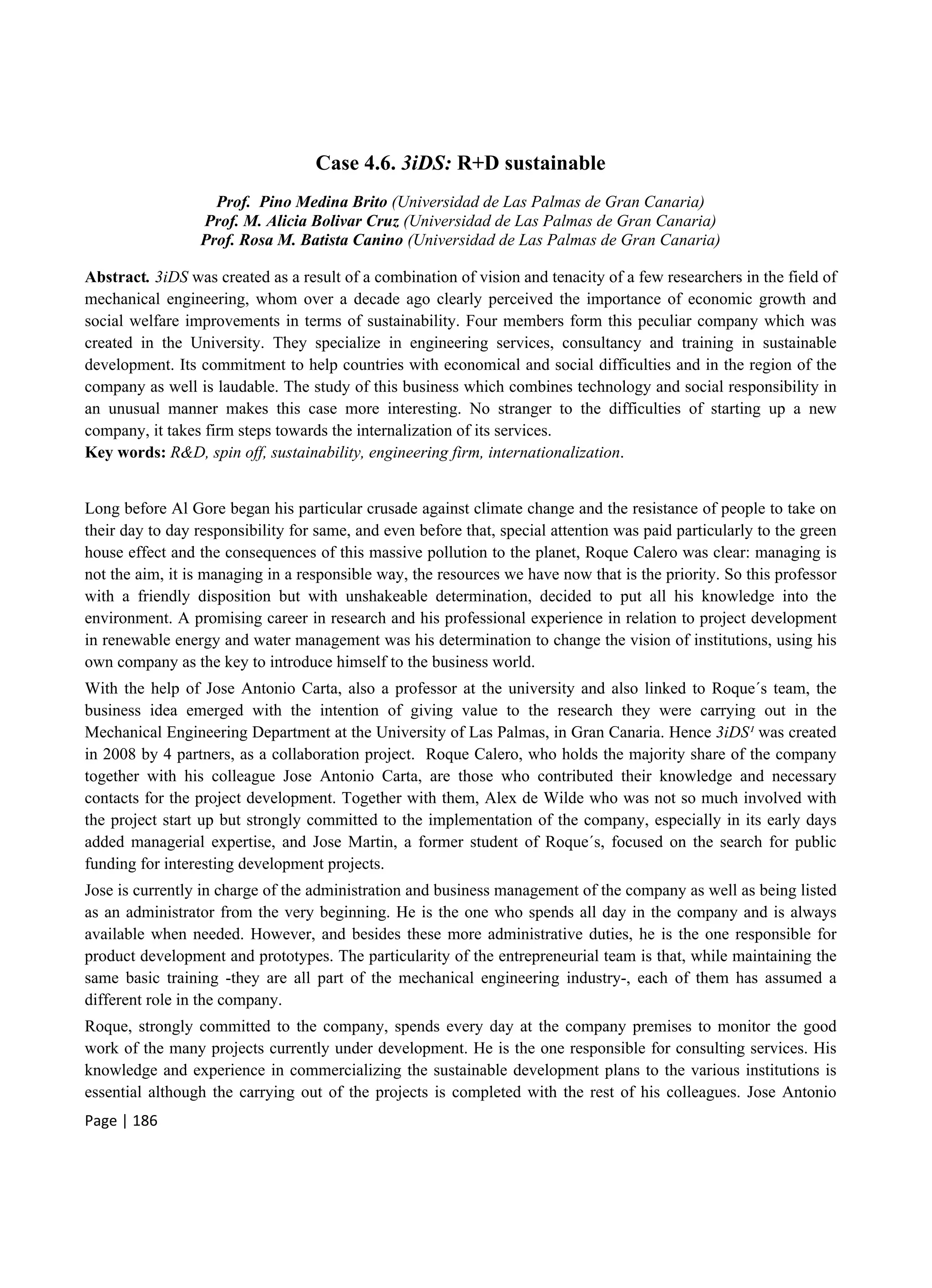
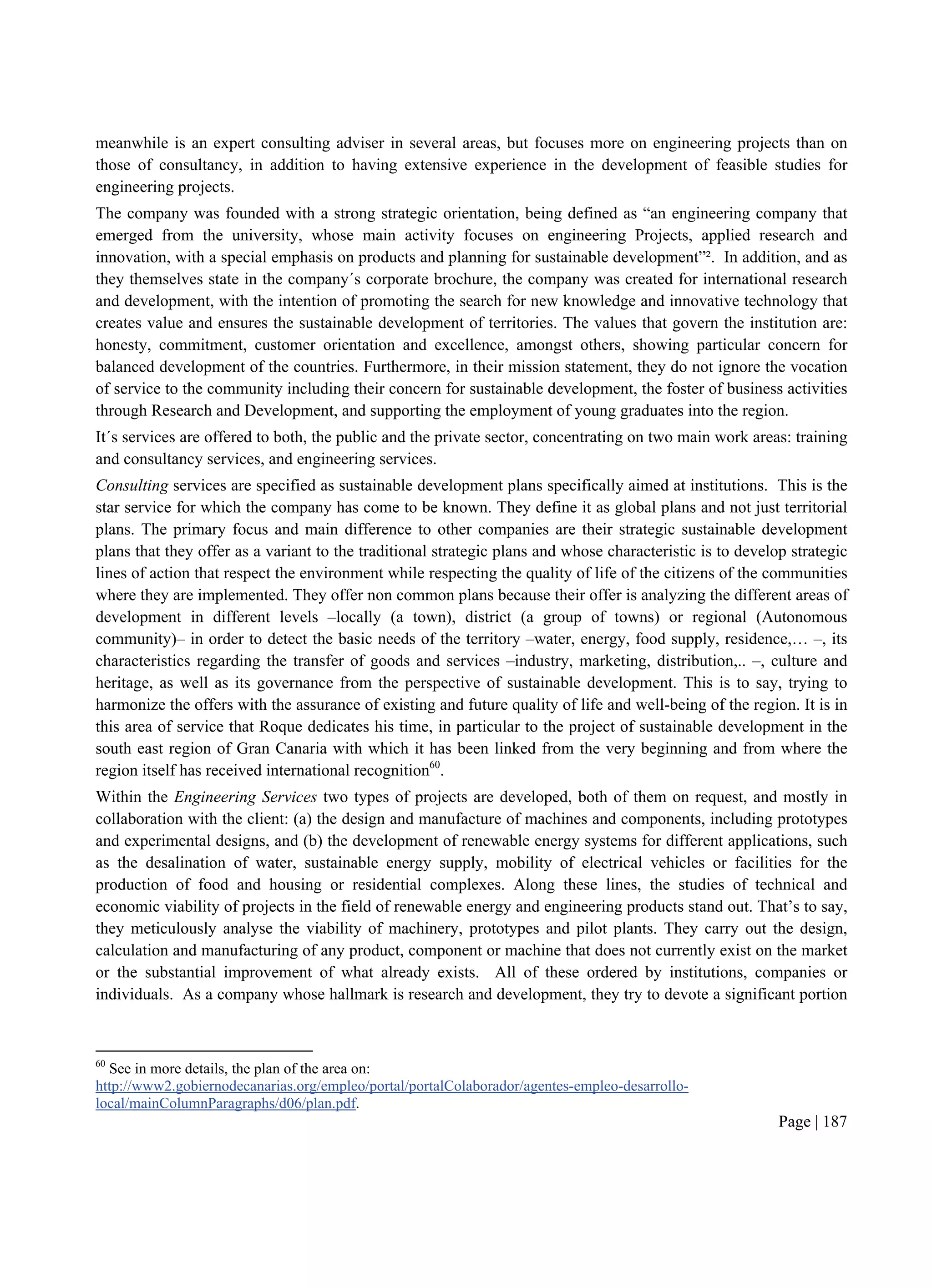
![Page | 188
of their time to the development of prototypes, pilot plants or demonstration plants so that the client can make
the final project for the marketing of products or for the productive use of the plants.
In this line of work we may include development aid projects, highlighting amongst other things the focus on
water management and energy efficiency in the Maghreb countries. These projects are unique in being self-
sustainable developments, which is to say the engineering team does not envisage the development of projects
that are inoperative once the technical personnel of the developed countries leave the country. The key to their
projects in this field is that the population must be capable of keeping the ingenuities working, even in the
absence of spare parts. It´s what is known as project development in isolated regime. They develop ingenuities at
low cost and easy maintenance so that they can be implemented in rural areas or villages in Africa or South
America. These projects are carried out in collaboration with local personnel, in order to transfer know-how.
Because of this, funds are fundamental to the development and the collaboration with charity organizations in
localized areas where the mills are finally developed. Actually a project culminating in this line of work is for
example the development of a machine to extract water from wells in a village in Mauritania. With this
approach, they try to avoid the common neglect of many western technologies in developing countries. These
projects are still non profitable for the company but it allows them “to acquire an experience that gradually bears
fruit” says Jose.
Forming this tradition has also led them to develop any training course required of them in the management of
technological innovation, mechanical engineering and sustainable development. This work is especially
important in forming sustainable development: “the current crisis is not only economic but also energy based and
it is necessary to create an awareness of this. […]. This, in addition, is particularly important in the Canary
Islands due to its high external dependence. Initiatives in these islands can be seen in line with this change, but
political willpower is extremely slow when it comes to putting it in practice”.
Especially in the first line, of consultancy and training services, and in part of the second line of the development
of engineering projects –Charity organization Project developments– are public institutions the potential clients
for the company. The second group of services is dominated by business type customers and individual
customers. In the latter case, they try to reduce project costs for customers seeking funding from other agencies
and government aid for Research and Development. Nowadays they develop, for example, an important safety
device for ambulance technicians. Nevertheless, if the development needs are not mechanical components but
actually electrical, chemical, etc, they join with other companies or university researchers, forming ad hoc
groups to develop the project.
In general, all the projects that they develop are “new and require a lot of creativity on the part of the team that
forms the company” says Jose. The company currently has two employees, who are linked initially through a
scholarship and because of their enormous creativity, diligence and entrepreneurial impetus, have completed the
staff of the business. The burden of the project pivots between Roque Calero and Jose Martin, in addition to the
full time employees who look after the running of the projects being undertaken by the company at all times.
Currently they carry out an average of 7 or 8 projects a year, spread out into equal parts between consulting and
engineering. In the company everybody does everything. The employees are very versatile.
The location of the premises, since its creation, is in the Science and Technology Park at the University in Las
Palmas, Gran Canaria, although this has an expiry date, as they are only permitted to stay 5 years in these
premises which act as an incubator within the university. They will have to carefully consider the new location
as the current location offers many advantages, especially for its proximity to business and industry research
groups. They are in doubt as to temporarily extend their stay at the Park with the advantages and services and](https://image.slidesharecdn.com/casestudiesbookb5tosent11-151109112812-lva1-app6891/75/Case-studies-book_b5_to_sent_1_1-190-2048.jpg)
